

30+ Norway Travel Tips for First Timers & Must Knows Before You Go
*FYI - this post may contain affiliate links, which means we earn a commission at no extra cost to you if you purchase from them. Also, as an Amazon Associate I earn from qualifying purchases. Check out our Privacy Policy and Disclosure. for more info.
Famed for its dramatic fjords, epic landscapes & eye-watering prices, Norway is one of those bucket list destinations that I truly believe is worth every ounce of hype.
But before you can ogle those views and inhale all those cinnamon buns, you need a plan… because Norway, while amazing, can be an overwhelming country to visit. So many things to see, so many places to go, and SO many costs and culture shocks to consider…
Well, don’t worry – in this post I’ll be sharing all my top tips for first time visitors to Norway, from what kind of prices to actually expect, tricks to saving money, and all the common mistakes to avoid so your dream trip remains exactly that.
I hope you find these Norway travel tips helpful!
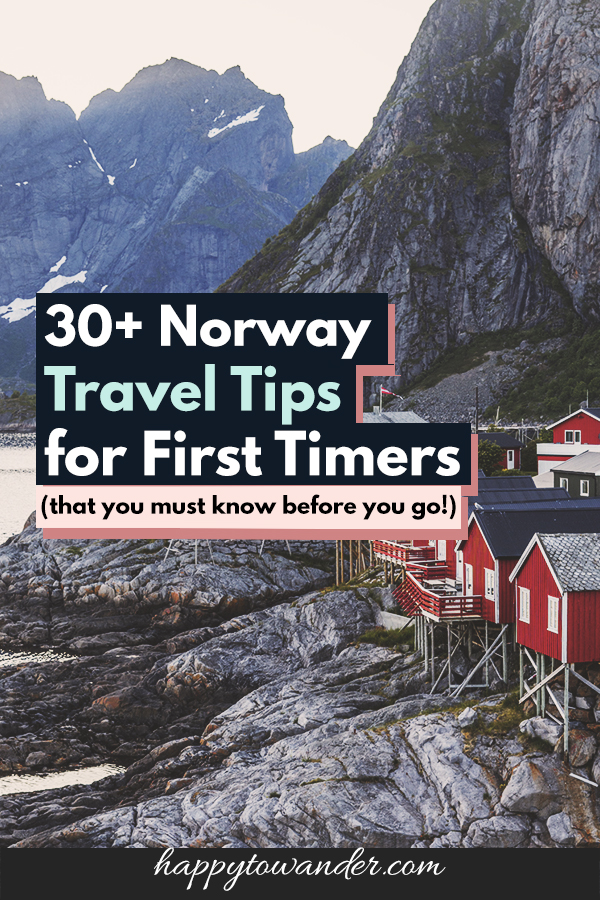
Save this list of Norway Travel Tips for later!
You’ll be very glad you did.
1. Prepare your wallet for high prices
In Norway, the currency is of course the Norwegian Krone, or NOK. First time visitors might have a hard time adjusting to this currency, so I’d highly advise finding a meaningful mental shortcut ASAP so you’re able to roughly understand prices as you encounter them.
During my most recent trip for instance, 100 NOK was equal to about $9.40 USD so for the sake of easy mental math, we rounded up to 10 USD, which helped a lot. So if something was 100 NOK, we’d estimate it was about 10 USD. Be mindful that rates do of course fluctuate though, so tailor your calculations to current rates, not mine, a consider downloading a currency conversion app like this one as well.
Anyways yes, let’s first set the record straight: the legends are true – Norway is indeed a pricey destination, but you might be curious what that actually means.
Well, to get your expectations straight, here are some examples of prices…
- A main course for a sit down meal: 250 NOK – 450 NOK
- Most coffees out: 50 – 60 NOK
- A cinnamon bun (important metric): 50 – 60 NOK
- A beer: 120 – 160 NOK
- A gas station hot dog: 70 – 90 NOK
So as you can see, with the exception of alcohol which is famously extortionate, the prices are actually comparable to a pricey US city… which isn’t cheap of course, but not as prohibitively expensive as some guides will have you believe.
There are also some things (e.g. hotels, which we’ll discuss later) that offer really good value for money compared to other countries. So, don’t write Norway off as out of your budget just yet. After all, there are plenty of ways to cut costs, many of which I’ll be sharing throughout this post.
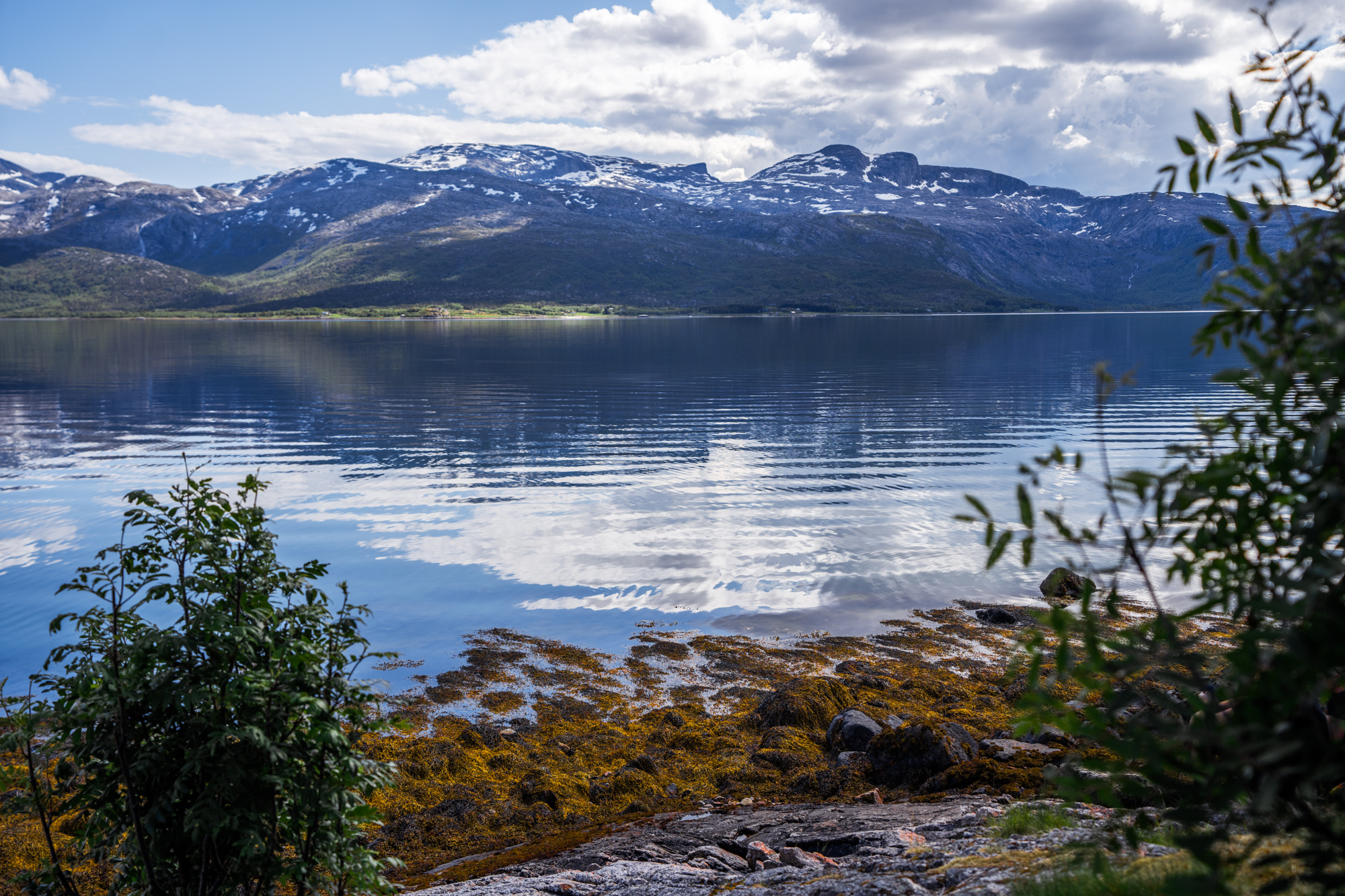
2. Avoid planning your itinerary around the most famous Instagram hotspots
Next: let’s talk about where to go!
My main warning in regards to deciding on destinations in Norway is to not simply turn to social media and plan based on the most famous spots you see on there. Usually, these are very spread out across the country, so planning around them will produce a really stressful and unrealistic itinerary.
Don’t forget: Norway is a really l ong country that covers a lot north to south, so it can take a great deal of time to travel between key tourist areas, and those gorgeous places you’ve seen before are likely to be quite far from each other.
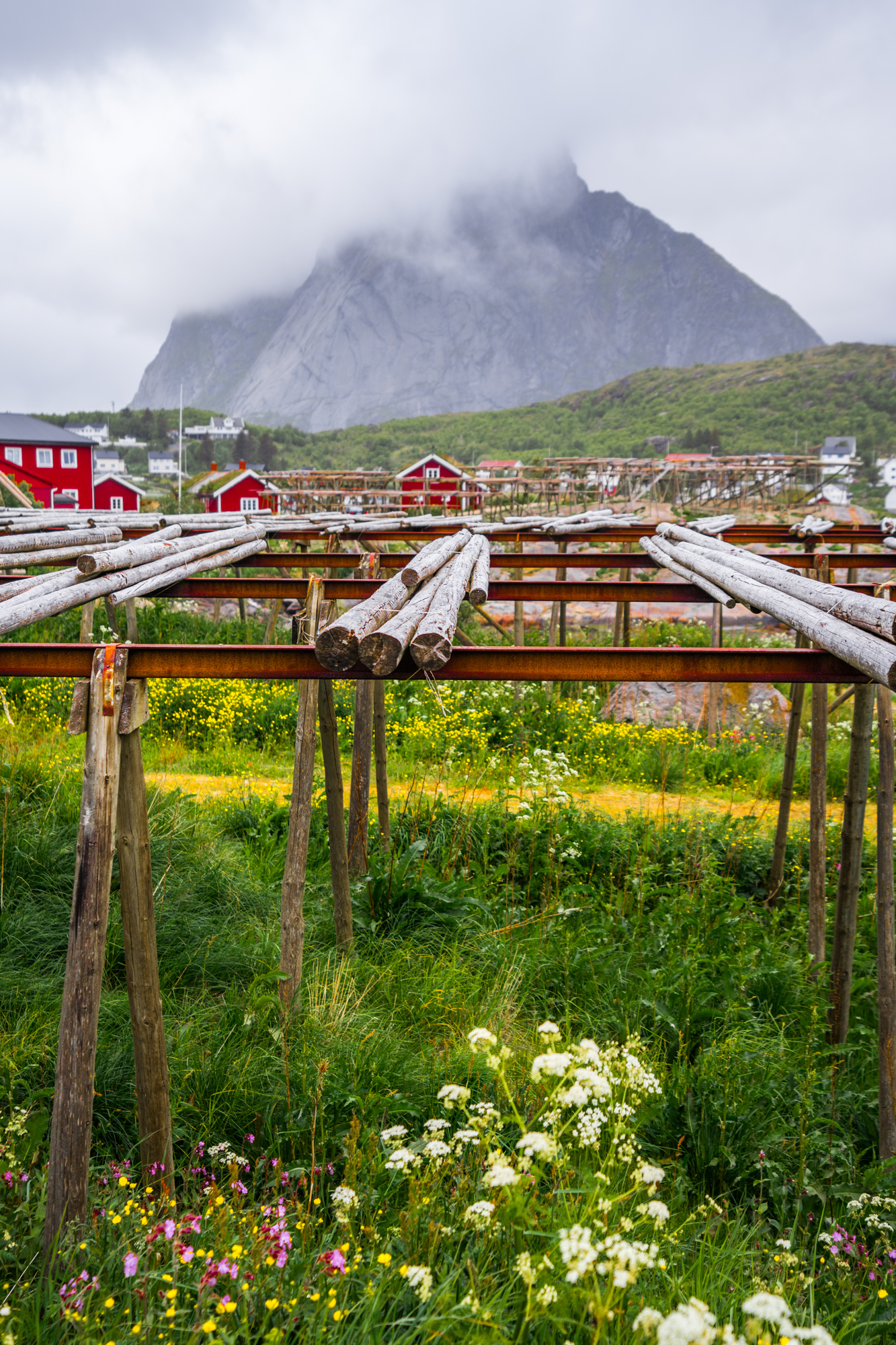
3. Instead, choose one region and explore it thoroughly
Rather than try to cover too much ground during your first Norway trip, I would recommend focusing on one area and exploring it thoroughly. This method is great for minimizing burnout, and can also help you find more off-the-beaten-path destinations rather than hitting up the same hotspots as everyone else.
If there’s one thing I learned while researching my trip to Norway it’s that for every super famous touristy attraction, there’s almost always a lesser well-known alternative that’s just as stunning, so be sure to do plenty of research, starting first with deciding what your main goals are for the trip, and letting that steer your decision.
After all, the north to south variance in Norway means that landscapes can vary dramatically depending on where you go, so deciding on your priorities first will help you narrow down your search significantly.
If you are wanting to see epic mountains and fjords for instance, you might be better off going to Western Norway, like Bergen and the Western Fjords or the Geirangerfjord area, rather than the East, which is much flatter and less dramatic.

There’s also quieter beaches and islands to the South, as well as dramatic landscapes and wildlife up North, which is also ideal for those seeking Northern Lights or Midnight Sun in the summer.
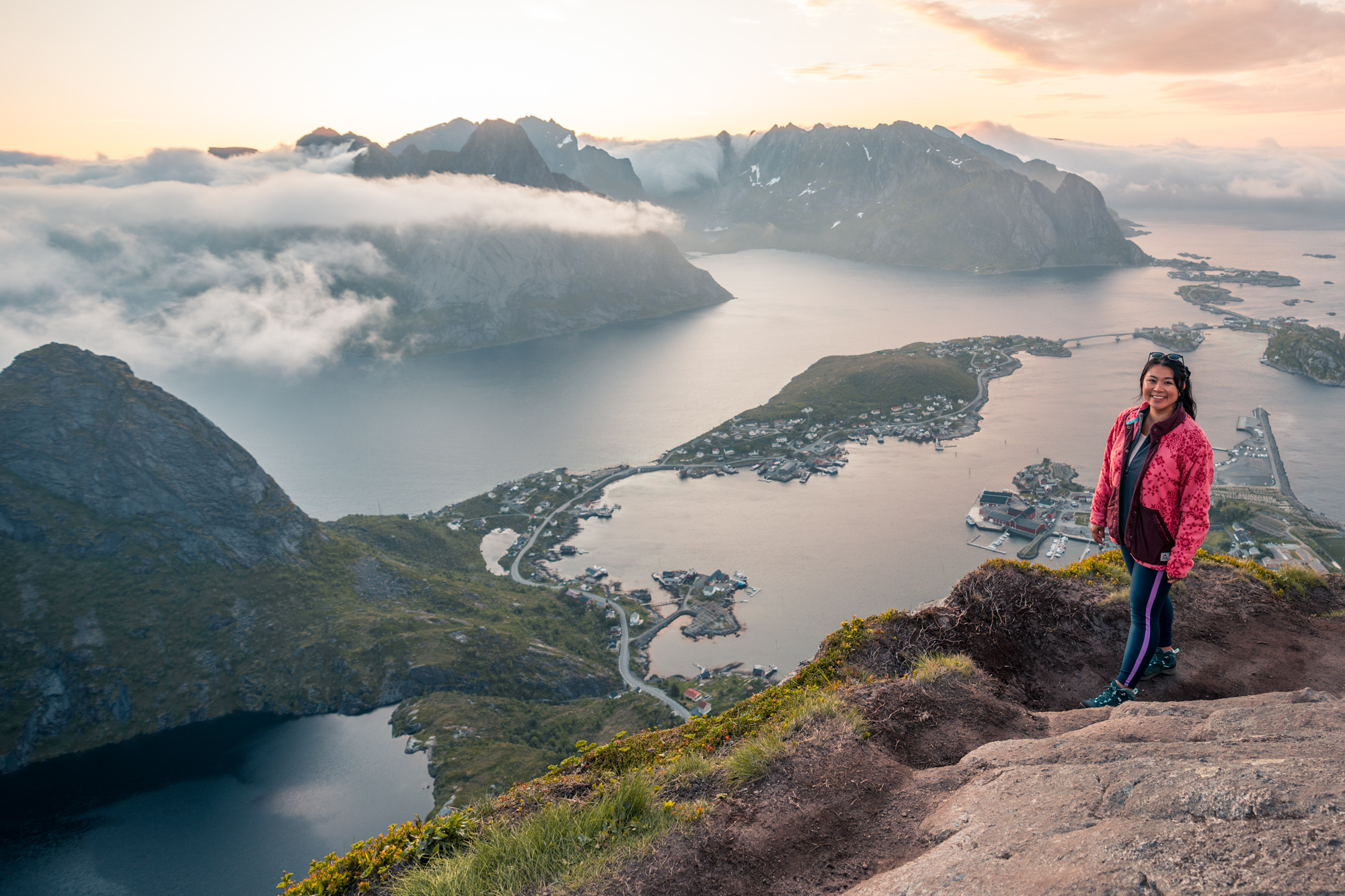
And if you’re looking more for modern architecture and cultural offerings, then you might be better suited to a trip to the capital Oslo, or possibly Trondheim if you’re interested in history and monuments.
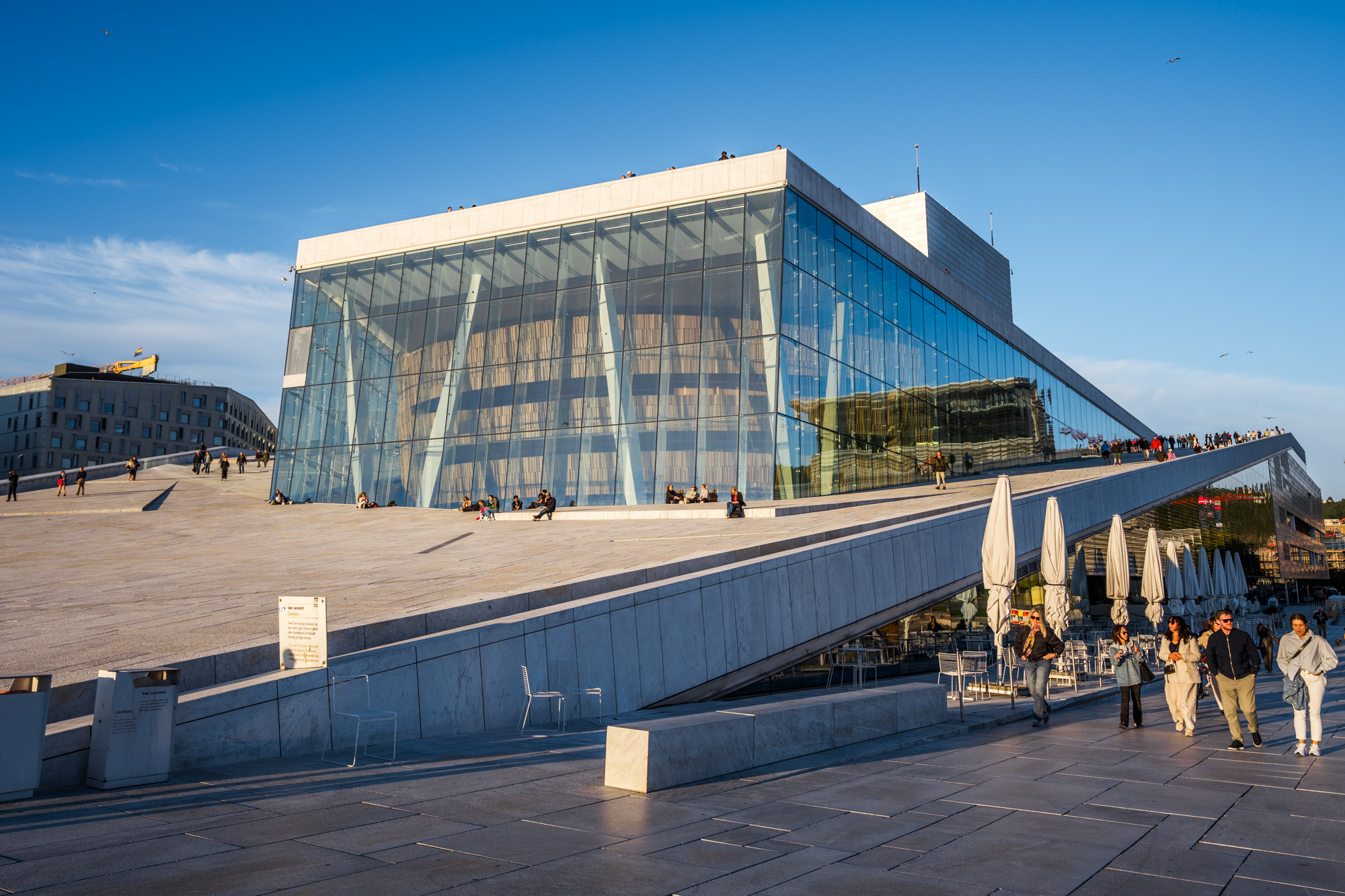
Once you have your main region decided, then you can dig a little deeper to find more offbeat places in those areas – the official tourism board website and local Norwegian bloggers are often good resources for finding these. My personal favourite Norweigan Instagrammer is @HeleneMoo.
All to say, Norway is an amazing country with lots to see, so be sure to explore beyond just the most famous places you’ve heard of, and have an understanding of what each region has to offer!
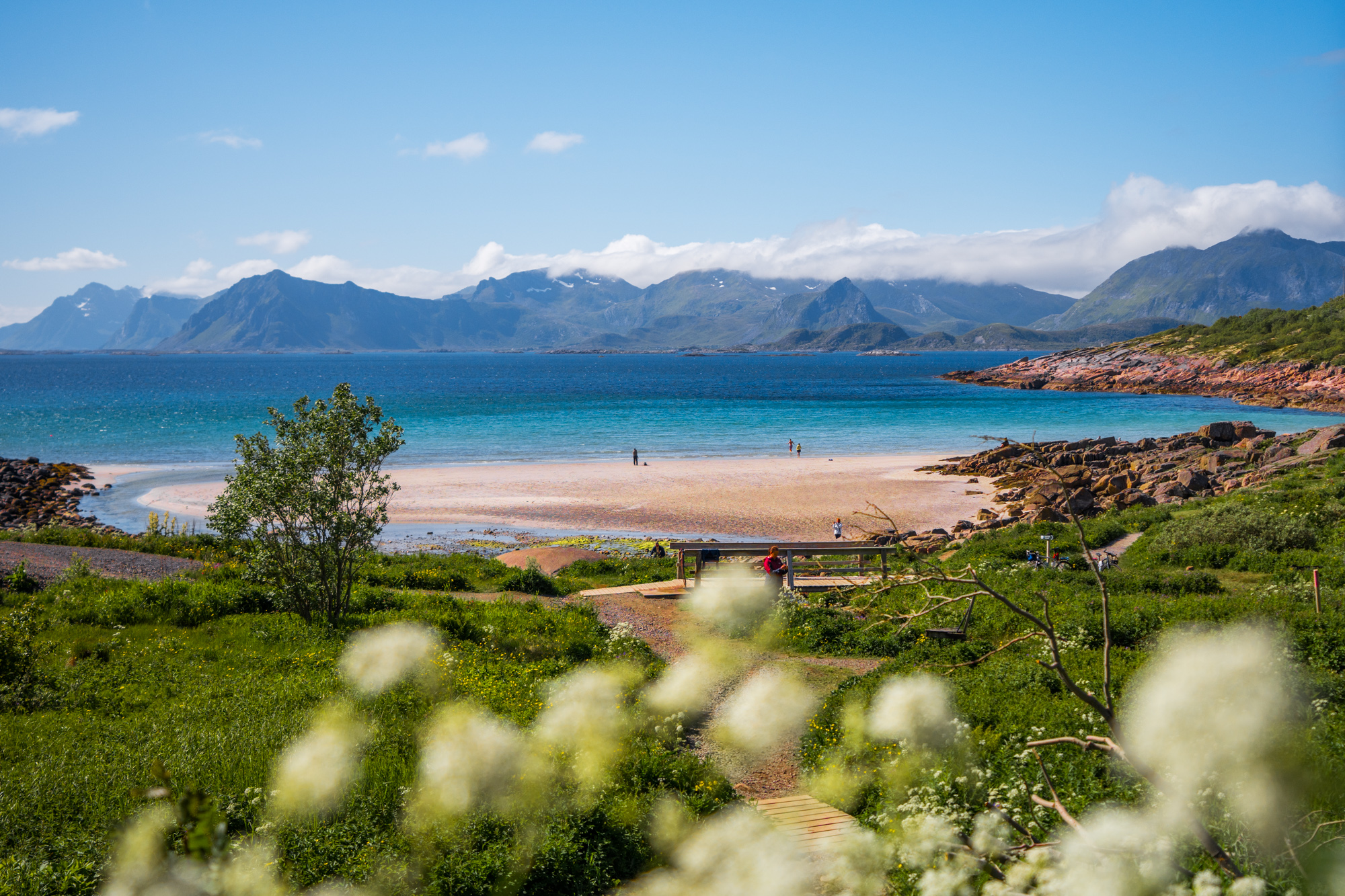
4. Understand the pros and cons of visiting in each season
Next: let’s discuss when to go.
It might sound clichéd, but so long as you pack the appropriate clothing, Norway can really be a great year-round destination. Having been both in winter and summer, there are compelling reasons to visit either time (as well as during shoulder season).
Of course, again, what your priority is will dictate the best time to go.
- Pros: Ideal for seeing Northern Lights (between Nov – March) as this is when the nights are at their longest which maximizes your chances of seeing the lights
- Cons: Limits your daylight hours for exploring, and is also… very cold.
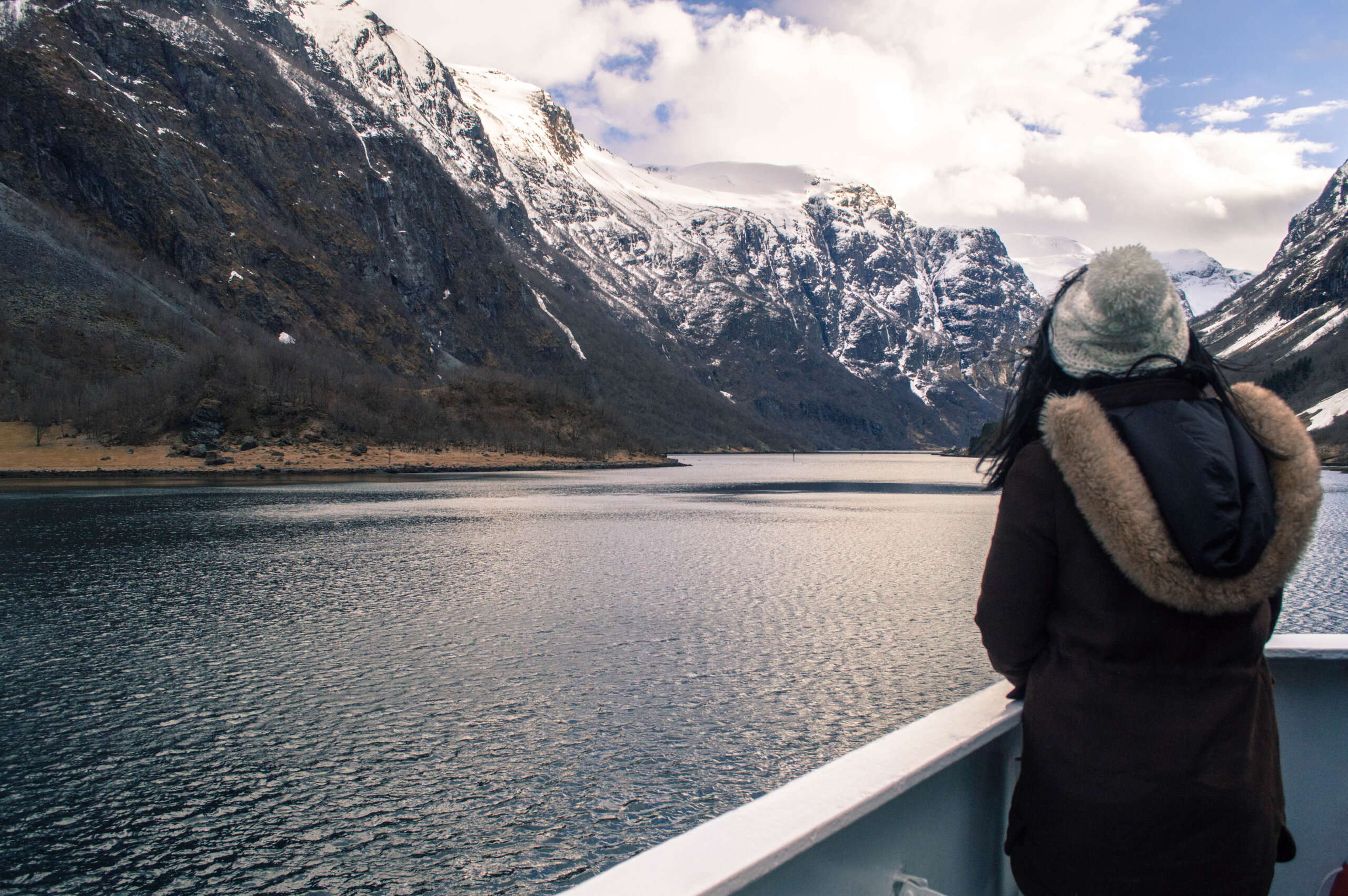
- Pros: Longer days and the best weather, as well as the possibility to see experience Midnight Sun north of the Arctic Circle (between mid-June to July), AKA that period of time when the sun genuinely does not set and just kind of glides across the horizon
- Cons: Crowds, a lot of construction/repair work on roads and cities, heat getting trapped in accommodation (which frequently does not have AC), and lack of blackout blinds in a lot of places which makes it hard to fall asleep (bring an eye mask!!)
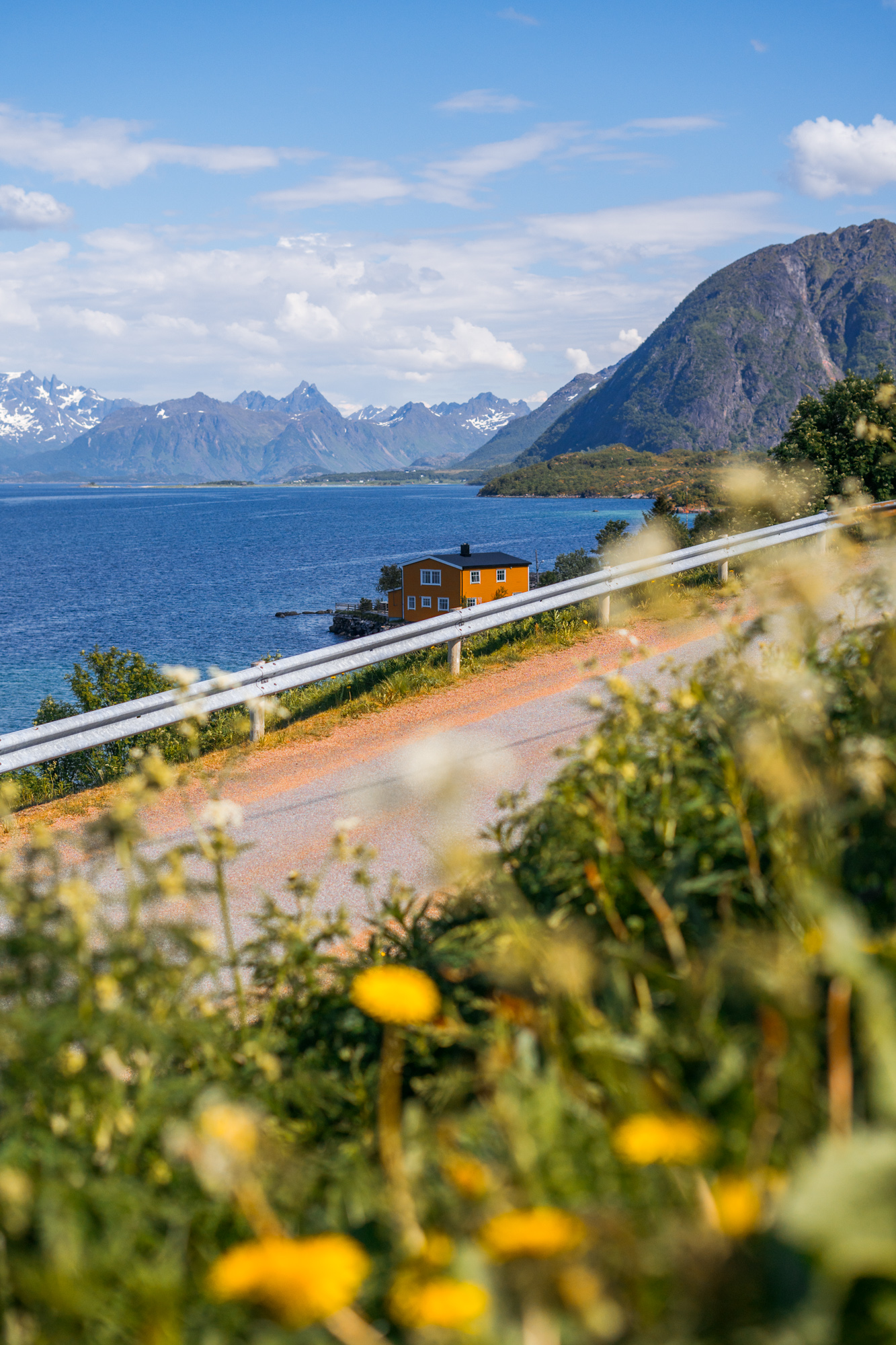
Fall & Spring:
- Pros: Fewer crowds, possibility of visiting on May 17, Norway’s Constitution Day, a big celebration and national holiday where you’ll get to see lots of fun parades and people out in traditional dress.
- Cons: Dicier weather and off-season transport schedules, which can be less frequent especially in touristy areas
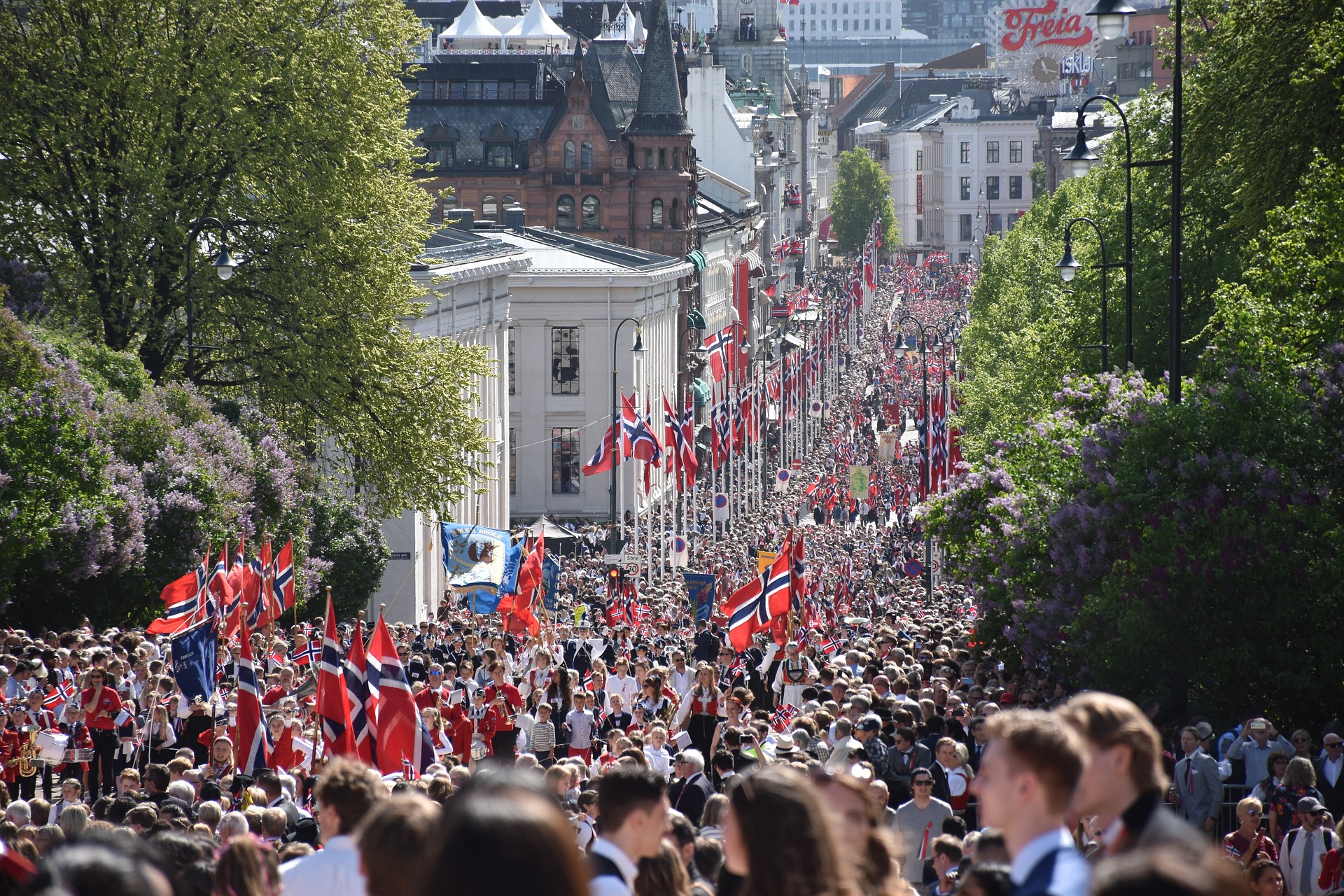
5. Know that hotels in Norway can be great value for money
… Especially if you book ahead!
I know, this sounds too good to be true given what you often hear about Norwegian prices, but all things considered, I found accommodation in Norway to be fairly priced, often presenting excellent value (considering how expensive some other things can be!)
In mid-June for instance, booking in advance got us this amazing modern two bedroom apartment with an epic view for about $200 USD a night which is really not bad at all considering a beer in a bar will easily set you back $12.
Most hotels will also include a free breakfast that’s fairly hearty and filling, so overall you can find some great deals! So, don’t dismiss ‘nicer’ accommodation right away just because of how pricey the country can be.
Need help? Check out my step by step process for finding the best accommodation wherever you go.

6. Prioritize accommodation with a kitchen (for longer trips)
As I’ll discuss more later, it’s VERY pricey to dine out all the time in Norway, and one of the best ways to cut costs is by booking somewhere with a kitchen so you can cook for yourself from time to time… so be sure to keep an eye out for that.

6. Beware that many hotels will not have AC
Depending on where you’re from, you might assume that air conditioning is a default in most hotels.
I warn you that this is not the case in Norway! Even in more modern properties. After all, there isn’t a need for AC most times of the year, so many hotels will instead be equipped with a ventilation system for hot summers and not have any of that ice cold air conditioning that many of us North Americans crave.
So, if air conditioning is important to you, do be sure to double check before you book that this is an actual amenity that the hotel offers.
WARNING: Do be mindful that in the summer, rooms can get very, very hot since the sun is up for so much of the day, so consider this when you’re deciding whether or not you need AC.
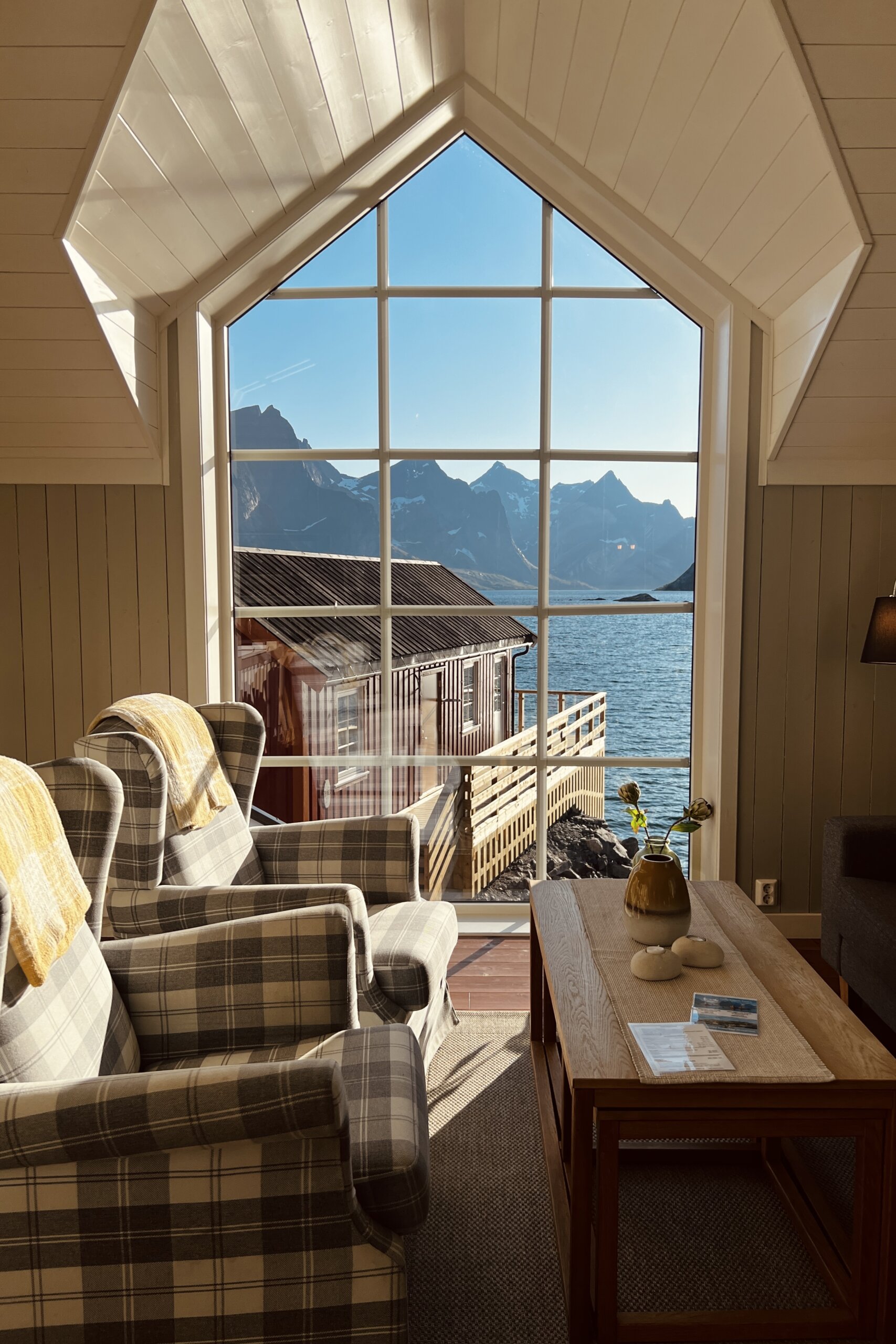
7. Get familiar with the most popular Nordic hotel chains
When searching for accommodation in Norway, another handy tip is that it might pay off to know the most popular chains and perhaps stay loyal to one if you’re planning a longer, multi-destination trip.
This is because many chains have free loyalty programs that reward you with special offers and deals if you stay with them. During my research, it seemed like many hotels in Norway (especially in larger cities) belonged to these chains, so if you book with the same chain every time, you can potentially unlock various perks and discounts throughout your trip.
… all the better if it’s a chain that is common in other destinations you frequent as well.
Here are some common chains in Norway and their perks…
- Scandic : Biggest chain in the Nordics; have a Friends program where you earn points to unlock discounts and perks like late check-out
- THON: THON+ Program with up to 12% discount + points to unlock further perks
- Radisson: Rewards program with exclusive members-only rates + points to unlock further perks
- Best Western: Rewards program where you can earn points and get free nights and other perks
- Strawberry (encompasses a few chains like Comfort Hotel and Clarion Hotel): Membership w/ members-only rates, free coffee at any hotel & other unique discounts and perks
In Bergen, Oslo and Kristiansand, there’s also a very budget-friendly chain called CityBox that I quite liked, which prides itself on central locations and nice design at an affordable price point. They have a Friends program too that gives you 10% off.
So, all in all, if you plan to stay at a chain, make sure to look into perks if you book directly or join their loyalty program.
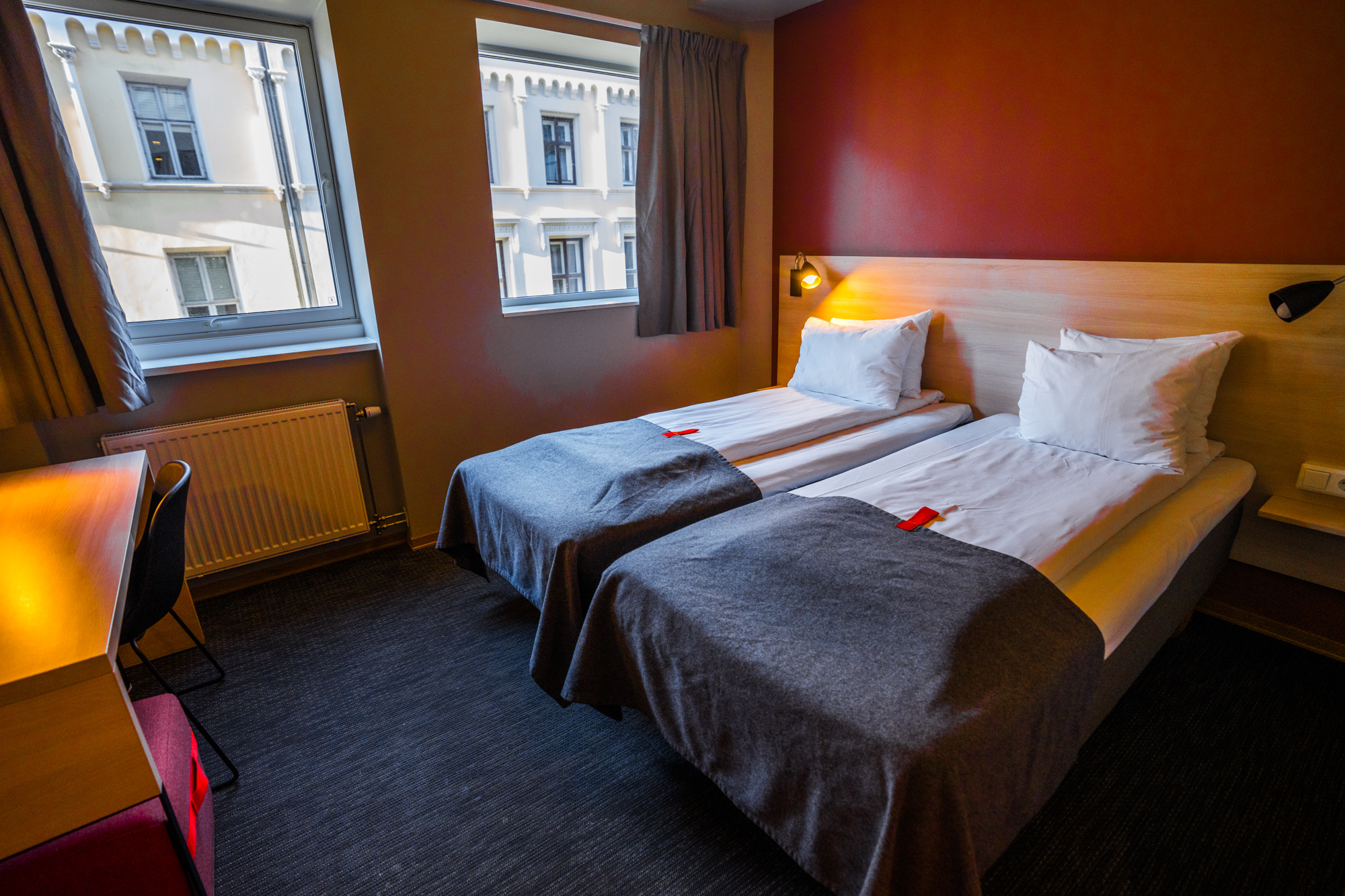
8. Consider camping for an affordable way to explore
All that said, while accommodation in Norway can be good value for money, if you’re especially on a budget, there may be options that are better suited to you… options such as camping!
Luckily, Norway is often considered one of the best places in the world to go camping, thanks to its beautiful nature, well-kept trails, plentiful campsites and of course the Norwegian “ Allemannsretten ” which means you can wild camp, subject to certain restrictions.
So, be sure to consider this option if you’re looking for something more budget-friendly. Those not wanting to lug equipment overseas can even rent equipment (like from here ). or you could also look into renting a camper van, though this has more restrictions than just pitching a tent.
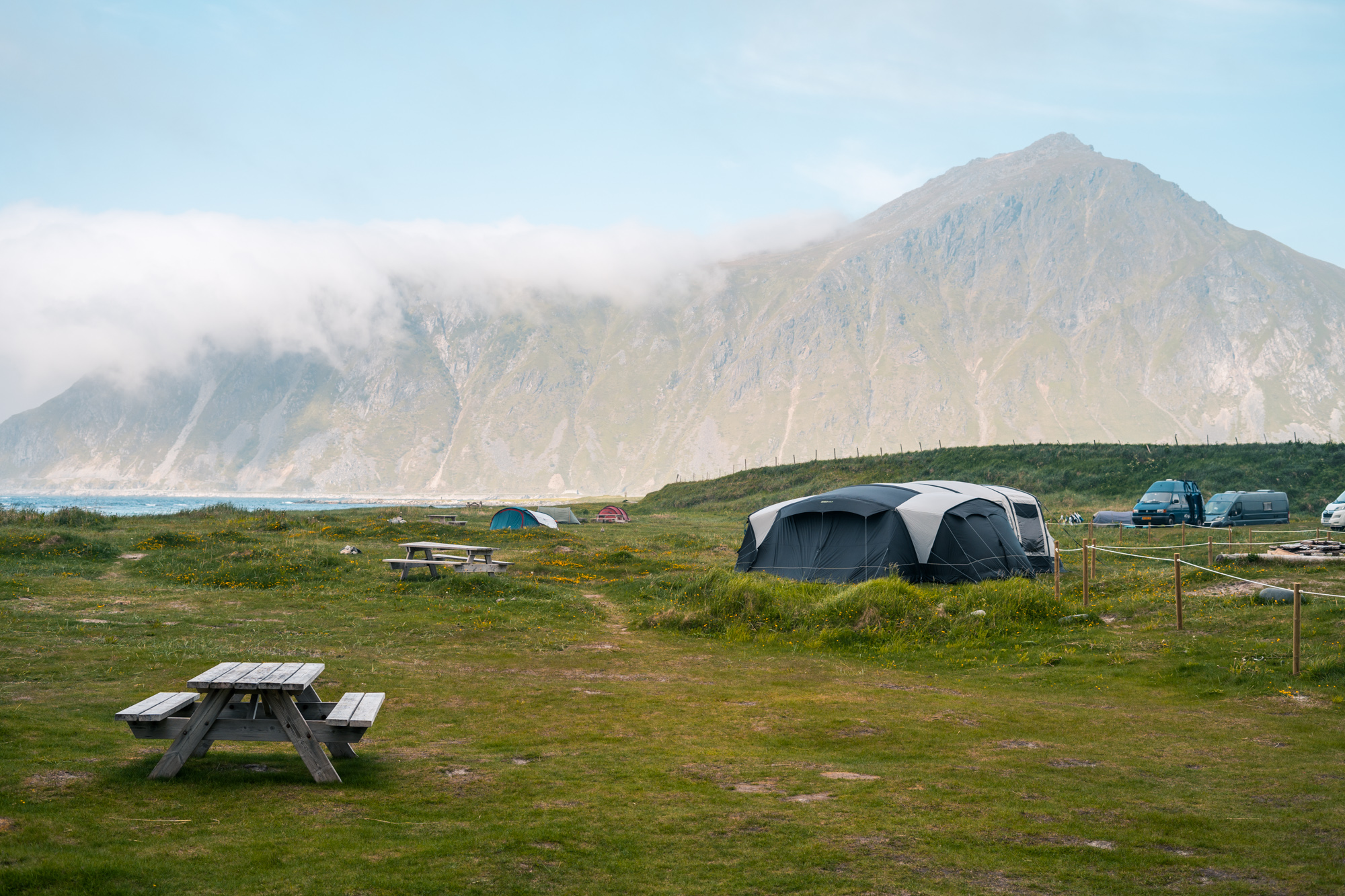
9. Beware of hotels in smaller cruise ports if you’re looking for a less touristy experience
And as a final note on accommodation, when you’re trying to decide where to base yourself in Norway, if you’re looking for a cozier and less commercialized experience, I’d say to avoid booking overnight at smaller cruise ports (unless you’re of course planning on embarking/disembarking a cruise).
I think something that pretty photos fail to capture is that unsurprisingly, smaller cruise port towns in Norway are often built around tourism, which means a lot of souvenir shops, touristy restaurants, and an overall more commercialized feeling than you might find elsewhere. This can of course have its perks, like convenient day trips and transport links, but if you want an experience that feels less commercialized and touristy, then I’d look into other options.
Many first time visitors to Flåm for instance are surprised to see it’s not an idyllic little village, but rather a fairly commercialized town. Same goes for Svolvaer, which I found was a good base but not quite the vibe I enjoyed elsewhere in Lofoten in Hamnøy for example.
This generalization of course doesn’t apply to bigger cities in Norway like Bergen and Oslo which may be busy cruise ports, but are large enough that they can handle being a cruise port and also offer other things. So, overall, just do your research and maybe consider hopping on Google Street View to take a look at the vibe of the area before you book.
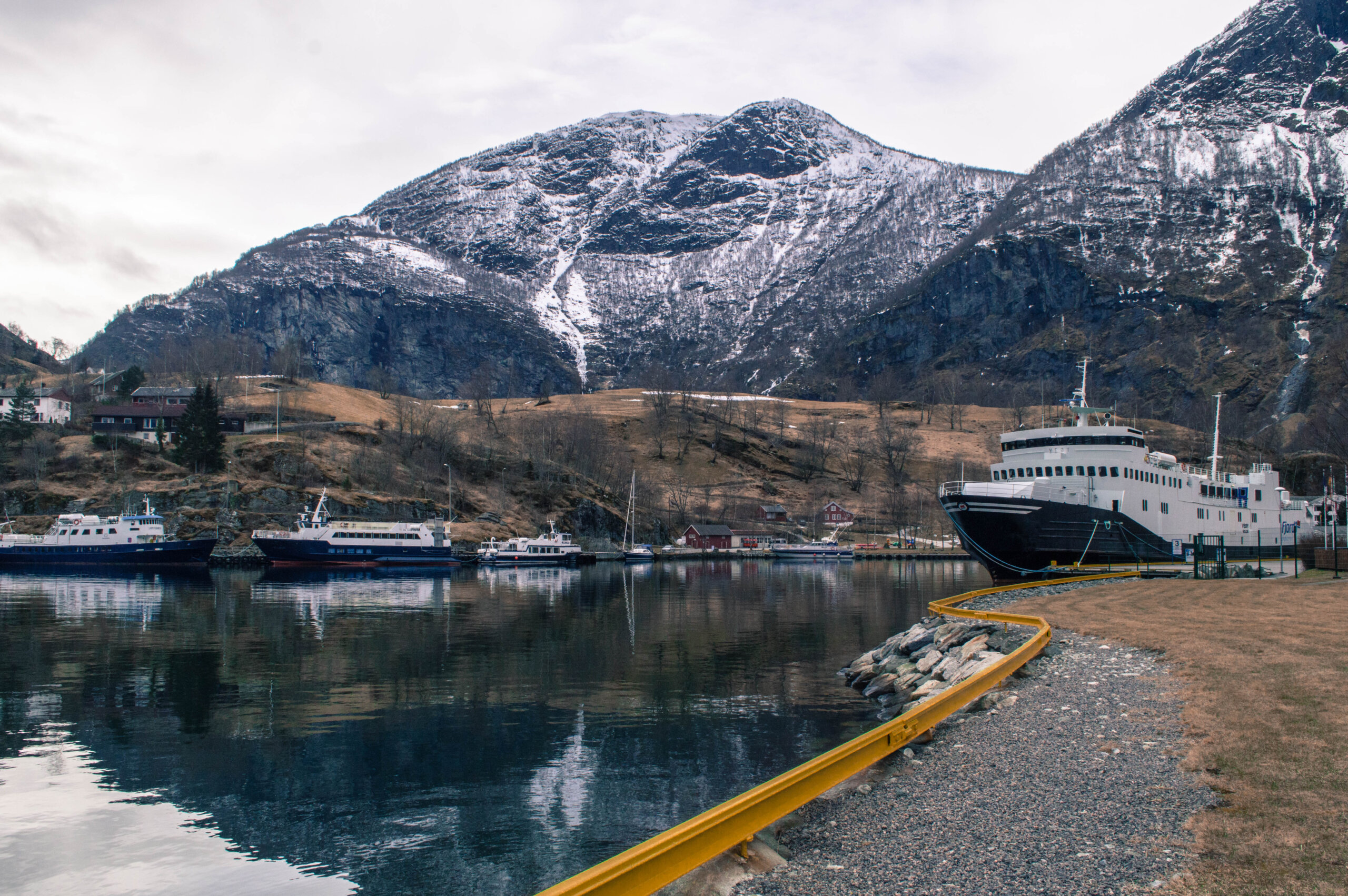
10. Beware: Norway is a largely cash-free country
Next is a very important Norway tip – before you convert a bunch of cash for your trip, do know that Norway is very much a card-based society, with cash payment options fairly limited, so make sure you have a good international debit/credit card, ideally something that minimizes fees. I’ve been using Wise for years and have no complaints.
The only time I encountered cash-only situations were in super rural parking lots based on an honesty system, so it’s safe to say you’ll be fine relying mainly on card payments.
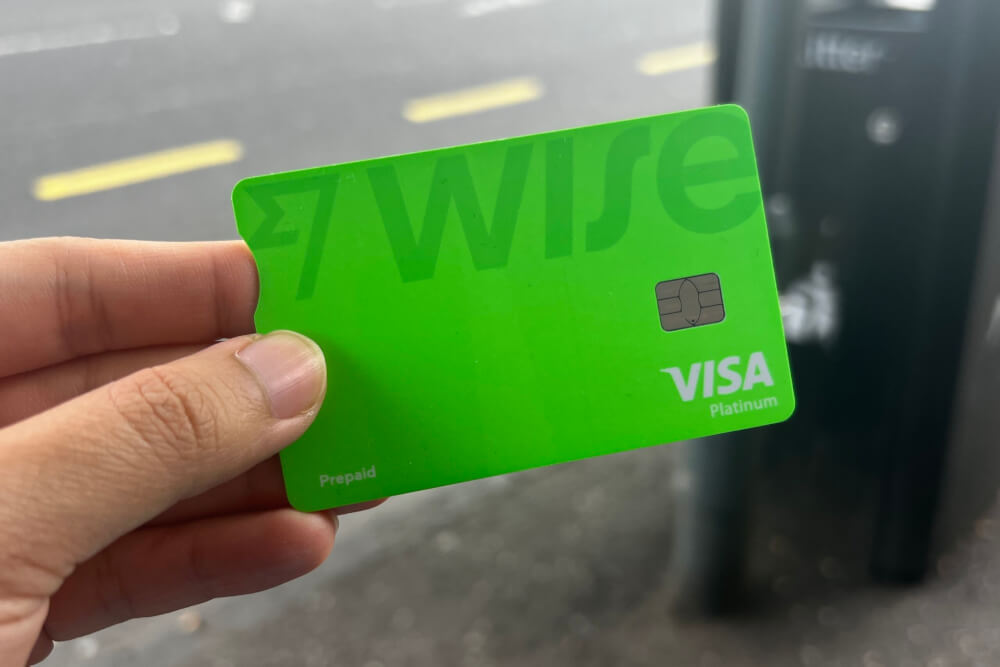
NOTE: Another common payment option in Norway is something called Vipps, but beware that this is a Norwegian-only payment system and you can’t make an account without a national ID number, so steer clear of places that only accept Vipps. We encountered this at a few parking lots.
11. Public transport is excellent in Norway
Generally speaking, Norway is very well connected by a network of buses, trains, and ferries. If you are okay not going super off the beaten path, then these can easily be used to get around.
The best website to search different transport links is Entur, which will show you options from across Norway’s many transport operators including train operators like Vy and SJ Nord. You can also book through them as well.
I’m a huge fan of train travel in Norway – with options being very clean, scenic and fairly affordable if you book far enough in advance. As pricing is dynamic, the key to getting a good deal is simply booking as far ahead as possible.
I actually did the longest train ride in Norway – the overnight train from Bødo to Trondheim, followed by the Dovre Railway between Trondheim and Oslo, and really enjoyed both journeys.
Local buses are also pretty great, even in more remote areas! Sure, planning around schedules can be a bit more of a hassle than just driving yourself, but buses are reliable and clean, so definitely a good option for those who don’t want to rent a car.
NOTE: Beware that Norway is fairly spread apart, so taking public transport across long distances is probably best suited to those who have time to spare.
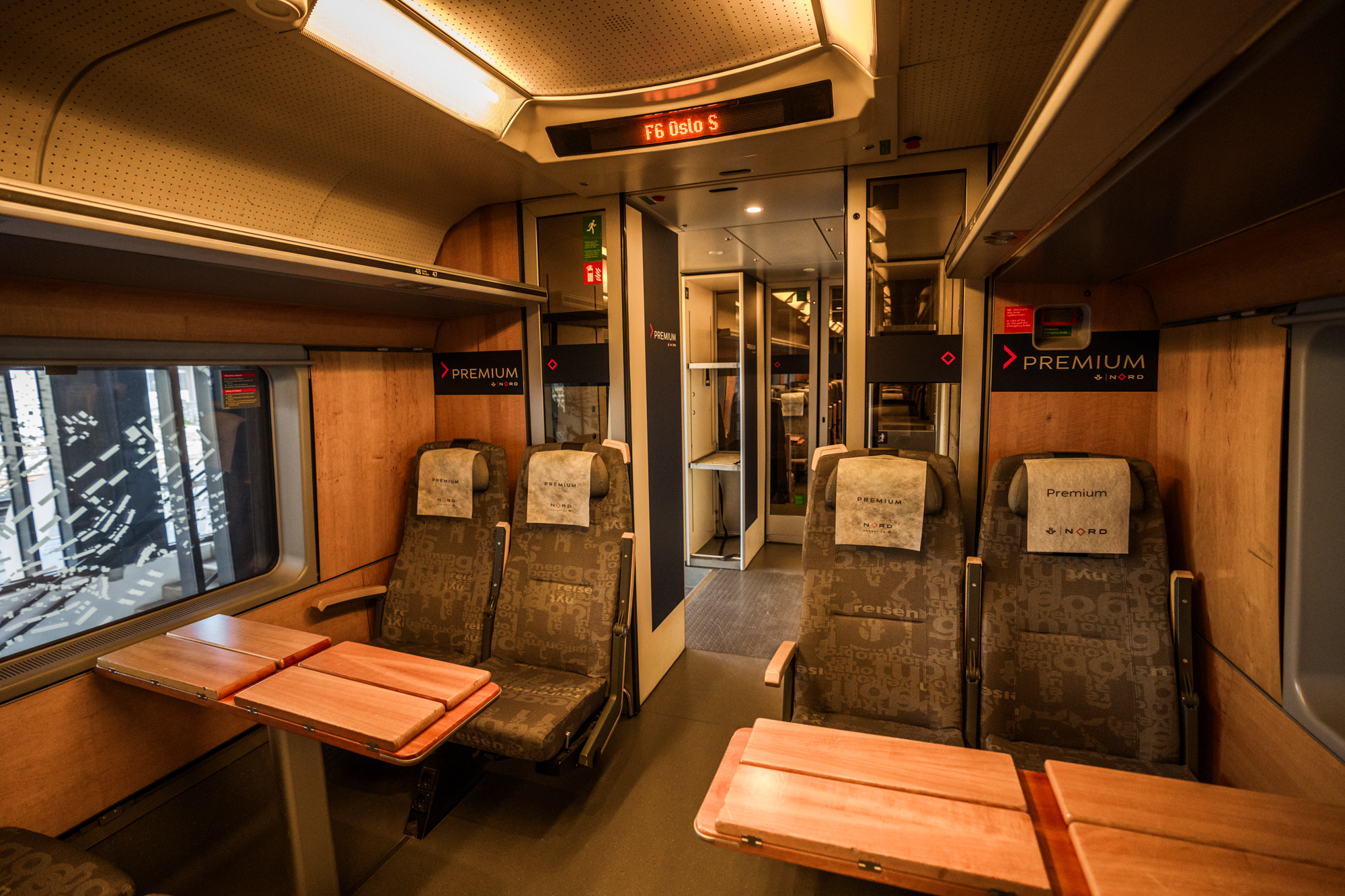
12. Note that flying between cities is the quickest option
With over 50 airports in the country, Norway is actually the country with the most flights per capita in Europe, with reasonably priced domestic airlines like SAS , Norwegian and Widerøe.
So, again, if you are covering vast distances, do consider flying between them if time is a priority for you.
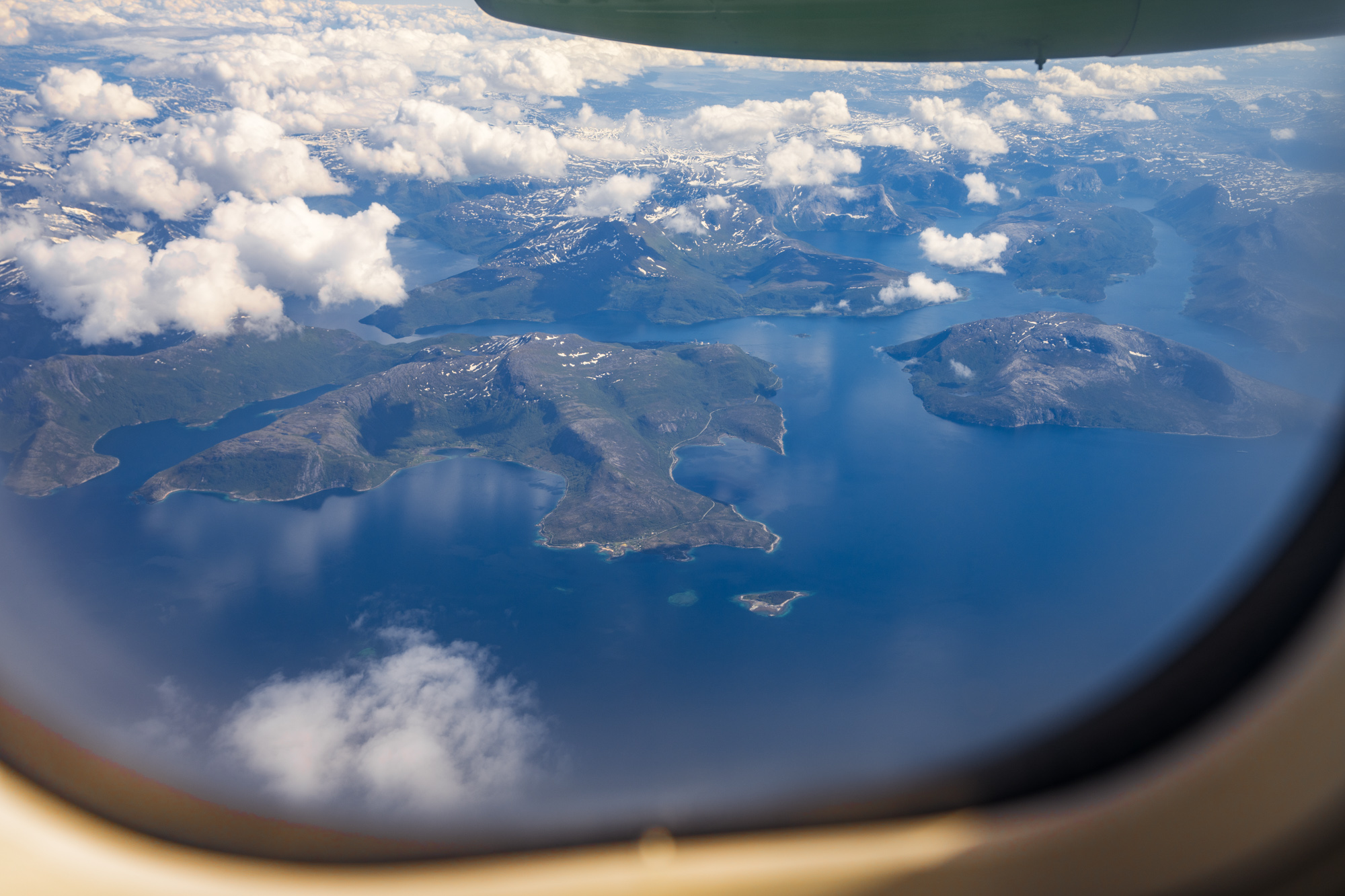
13. Driving is ideal in more remote areas
All that said, if your goal is to do a nature-oriented trip where you have the flexibility to go wherever you want, nothing beats having a car…. though beware this will definitely cost you!
I usually use DiscoverCars to find the best deal and booked in advance, we paid about 8000 NOK total for our week in Lofoten.
I don’t regret it one bit given the views and flexibility we got, but do beware that it’s not the cheapest option by any means.
BONUS TIP: Gas is pricey so consider getting an electric car, but research the area you’re visiting first because charging ports can be harder to find in remote areas.

14. Download EasyPark for parking
A quick Norway tip if you’re driving: make sure you download EasyPark.
This app is amazing and allows you to adjust parking from wherever you are, so you can add more time remotely on your phone. Sure you have to pay a small service fee but the convenience and ease of mind for me is more than worth it!
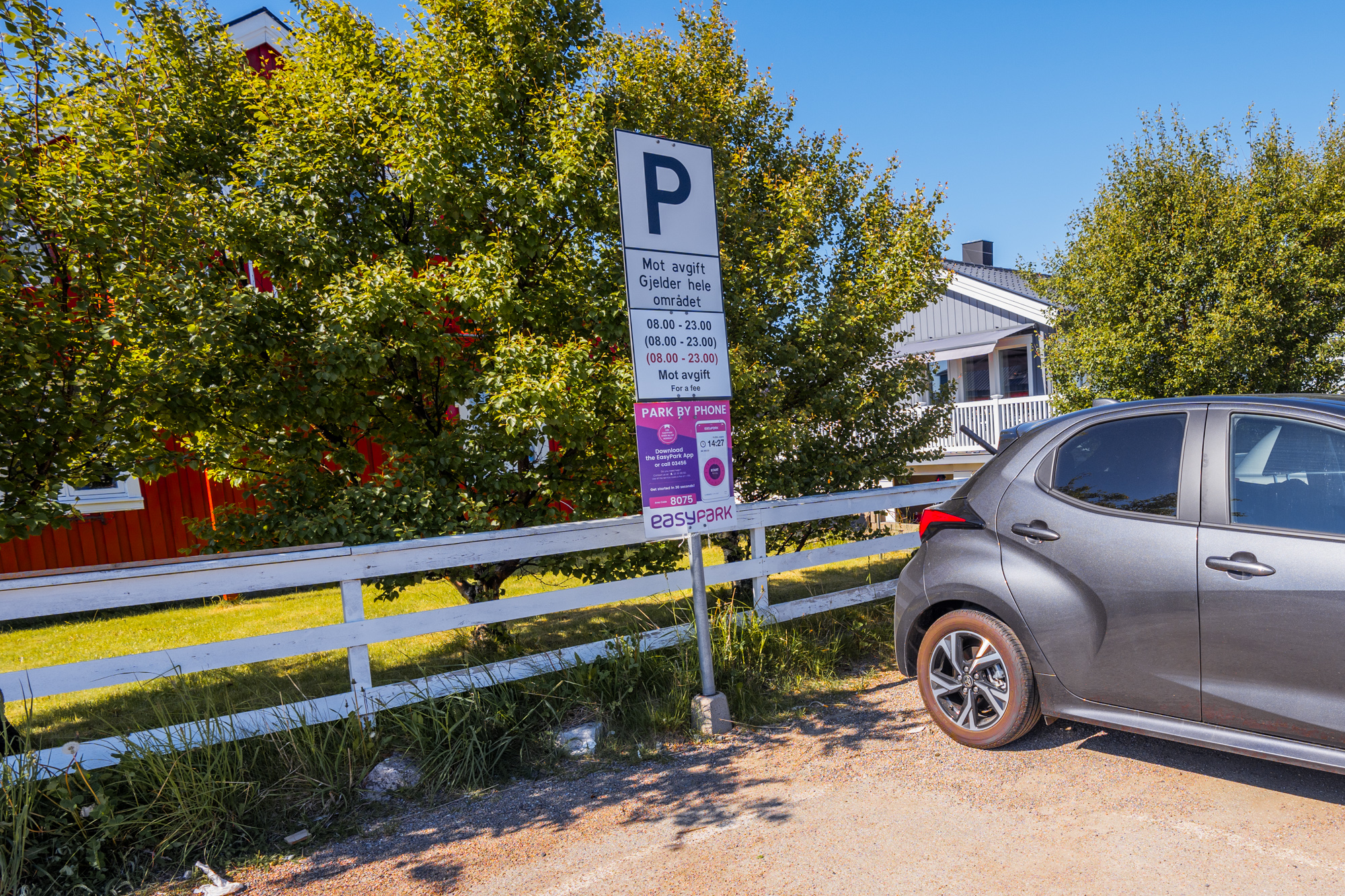
All that said…
15. Beware of ‘made for tourist’ transport options
Bridging rental cars and public transport are made-for-tourist options like the Arctic Route in Lofoten , which cost a lot more than regular public transport but specifically serve places of touristic interest, often in a more comfortable setting than regular buses or trains.
Now, while I do think there’s certain perks to this kind of middle-ground, overall the price of these can be incredibly steep. Crunching the numbers with the Arctic Route Bus for instance, we found that renting a car between two people was actually cheaper!
So, just know that these options exist, but make sure to do the math before committing, and know that there will usually be a ‘normal’ public transport option that services the same routes for a fraction of the cost.

16. Know that taxis in Norway can be atrociously expensive
… So, always double check rates before assuming “it cant be that bad”.
For instance, our airport hotel by Narvik Harstad Airport was so close, we could see it from the airport entrance and the official taxi rate was 500 NOK, or just under $50 USD… for a 3 min drive. We ended up walking, at the behest of the taxi driver himself.
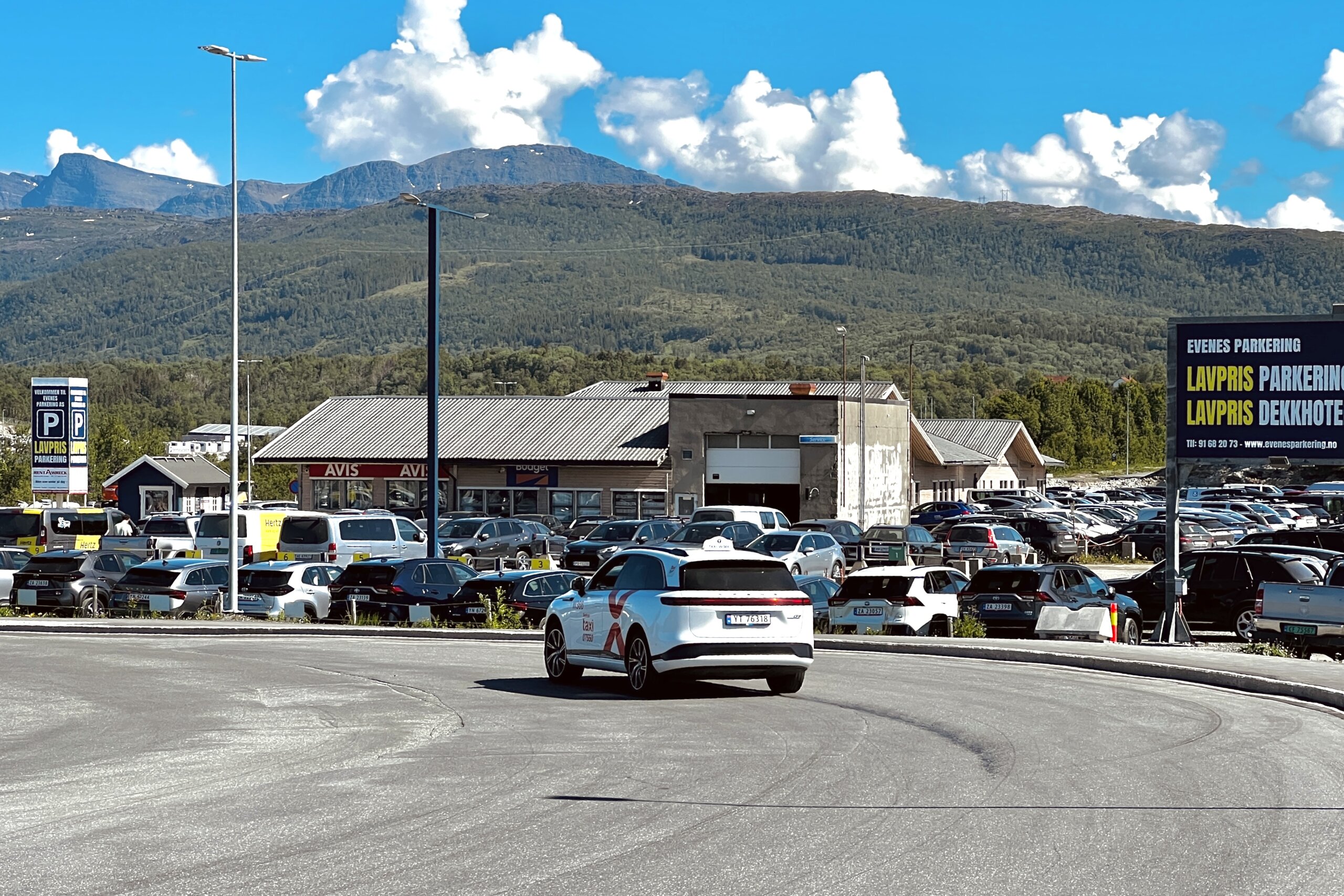
17. Most Norwegians speak amazing English
Especially those that work anywhere in the hospitality or tourism space, so don’t worry too much about learning Norwegian in advance of your trip!
At Oslo Airport for instance, I almost feel like I saw more English than Norwegian.
If you do try to learn some Norwegian in advance of your trip though, beware that there are different dialects and accents depending on where you’re going, so try to learn more for wherever you’re going.
Some general basics to memorize though include…
- Hej: (pronounced hi), which means… hi
- Tak: (pronounced tahck) which means thank you
NOTE: While most Norwegians do speak great English, not all signs and menus will be available in English, so do remember to download a translation app. I like to use Google Translate and tend to download it for offline use so I’m not reliant on Internet to use it.
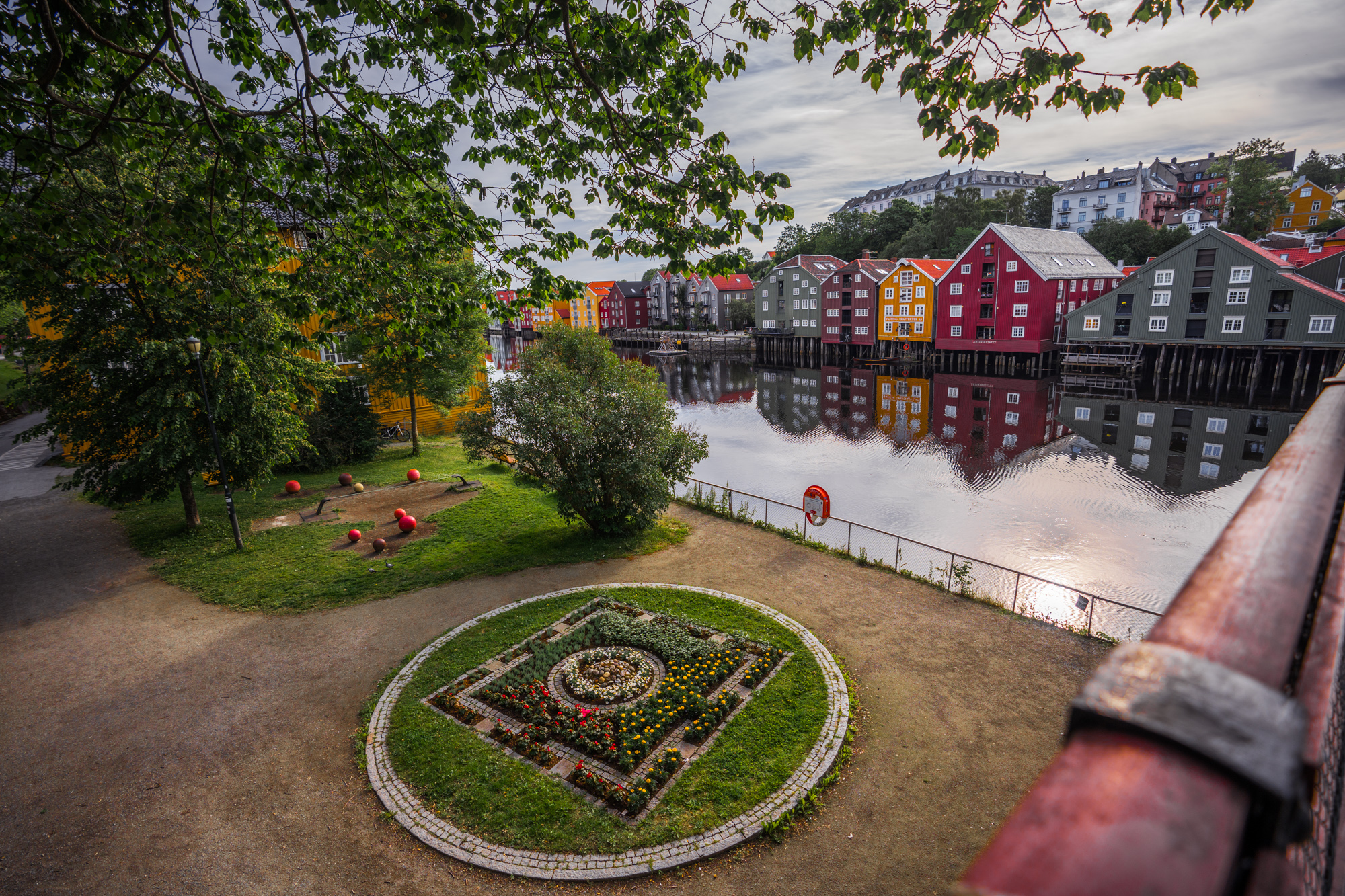
18. Tipping is not expected in Norway
Here’s some good news for your wallet: servers are indeed paid a living wage in Norway, so tips are more just a bonus for exceptional service. In these cases, the most typical thing is to round up as a thank you, usually no more than 5-10%. In any case, it’s not expected to the same extent as places in North America.
Truth be told, the only time I witnessed any tipping culture was at nicer sit-down restaurants and more upscale places geared towards tourists like hotel bars, so definitely not expected at all in more casual places like cafes.
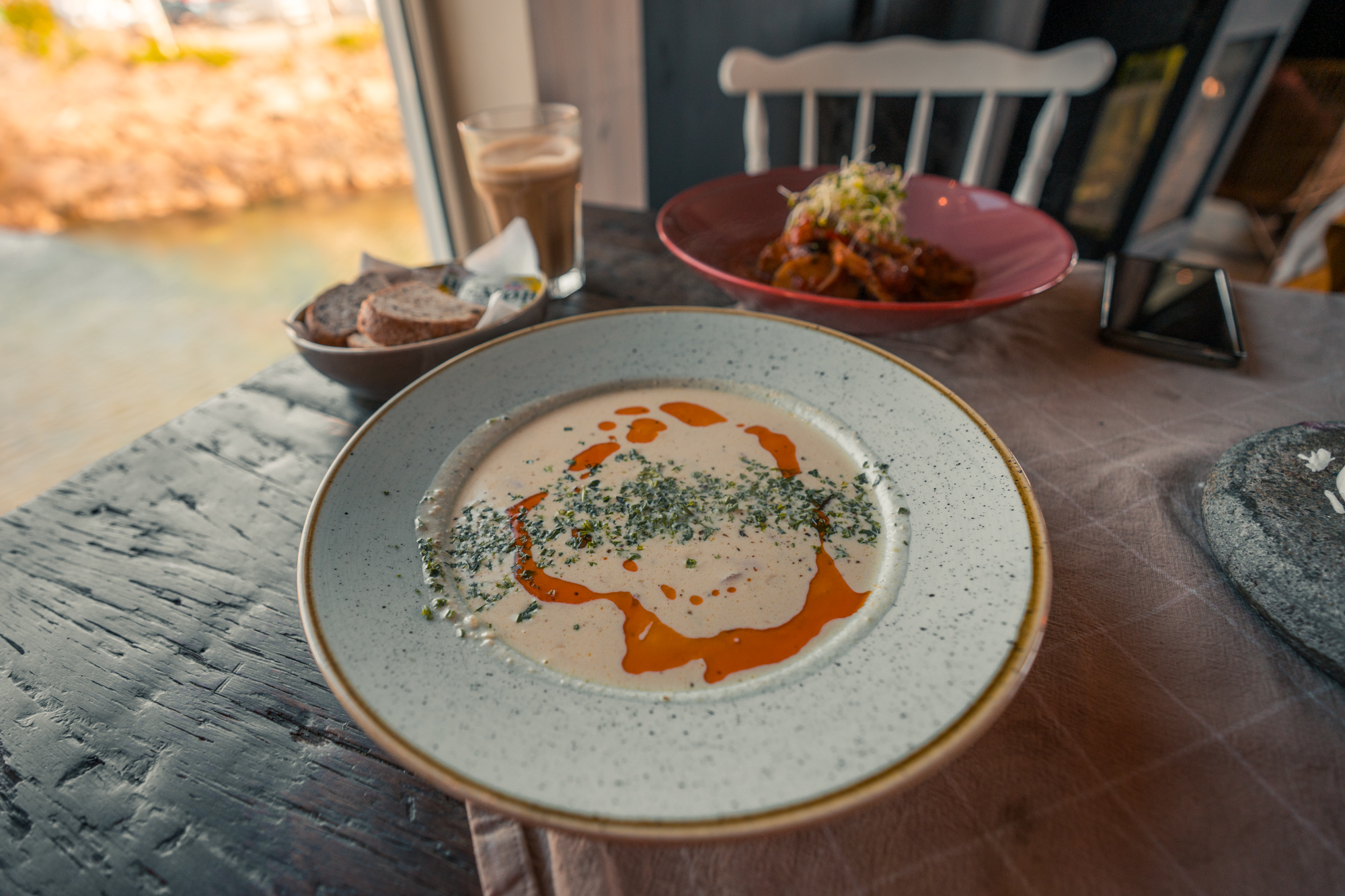
19. But when you do tip, tips are mainly cash-free
Now, if you DO end up tipping, do know that because Norway is predominantly cashless, tips aren’t typically left in cash.
Instead, when paying by card, on the machine, you are usually given the option to enter the total amount you want to pay INCLUDING tip, so get ready for some quick math. A few times, I did encounter a button you can press with different percentages that then do the math for you, but more commonly it was the DIY method, so have a rough idea of how much you want to tip before they hand you the machine.
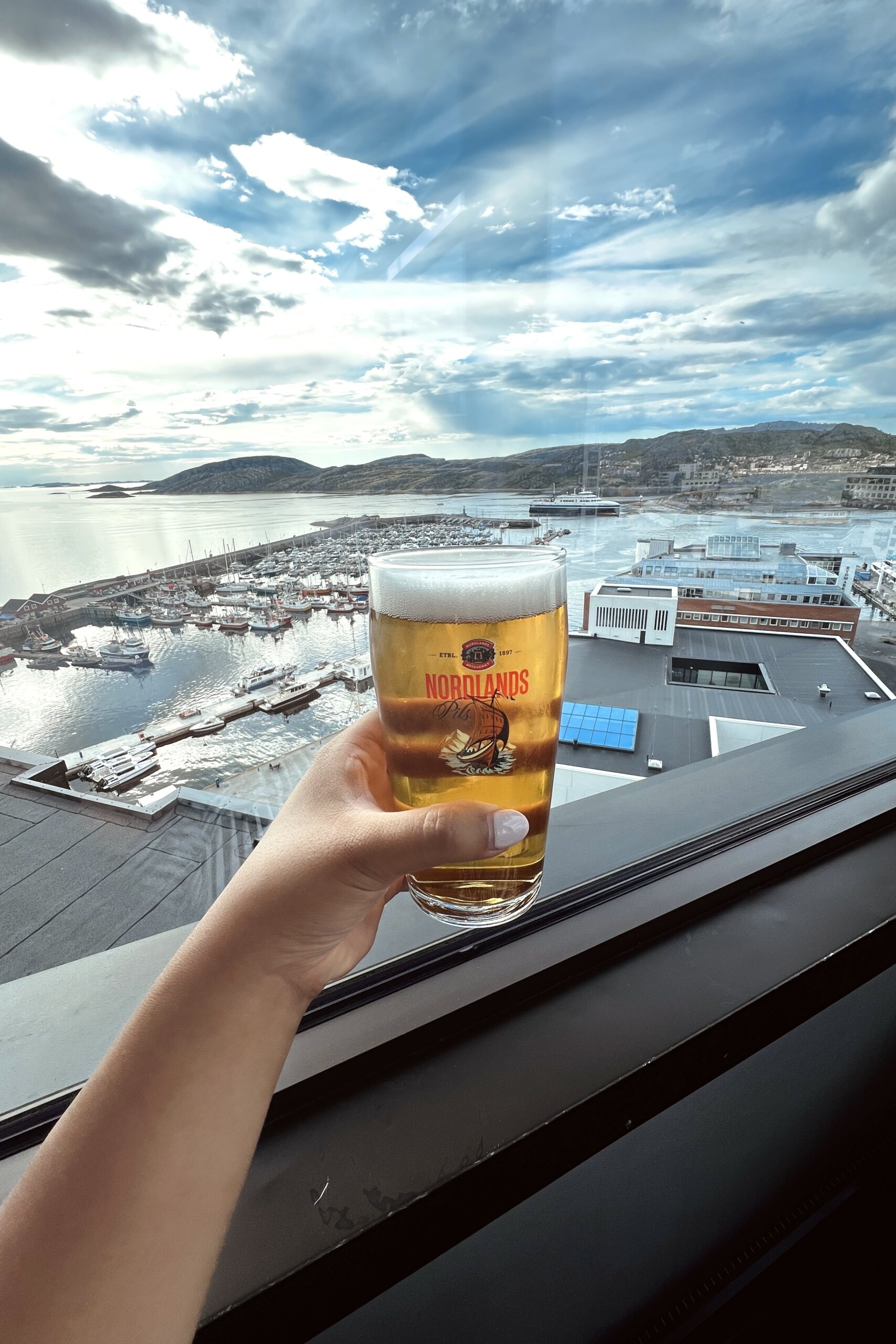
20. Learn some general etiquette before you go
The following might seem like common sense, but may not be depending on where you’re from, so let’s make one thing clear in terms of etiquette: when in Norway, be sure to obey the demure social code of the country, namely…
- Obey queues
- Keep your distance
- And don’t speak too loudly when out in public
While I personally find Norwegians to be really friendly once you actually engage them in a conversation, there’s a time and place for it. Usually, when you’re just out in public, the norm is to keep to yourself, not make small talk with strangers or stand/sit too close to them.
The one major exception here though is on hiking trails, I noticed it’s always polite to throw anyone you pass by a quick “Hej!”.
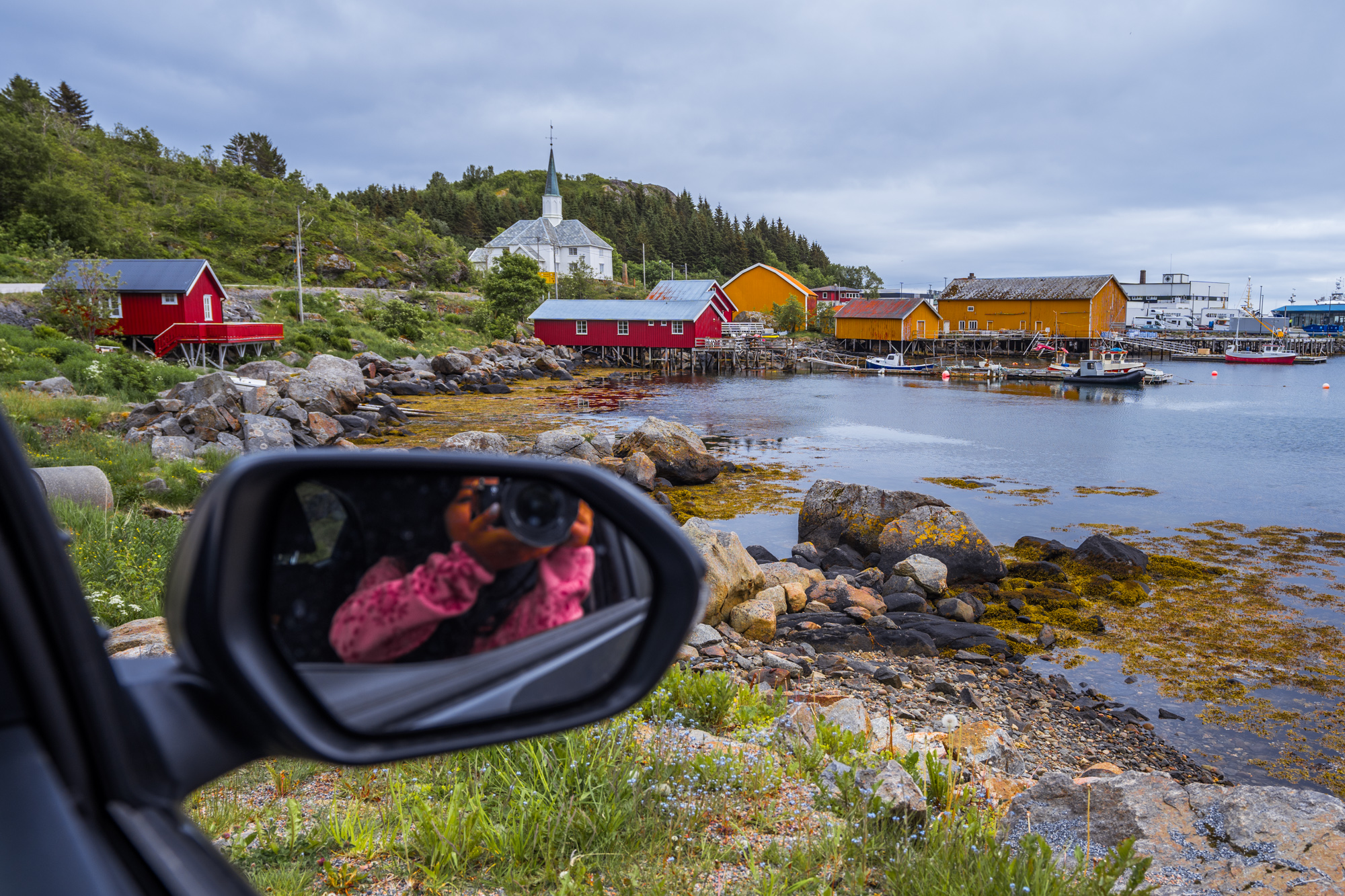
21. Pick up after yourself (and be mindful of disrupting nature)
Another somewhat common-sensical thing that is worth repeating: please leave nature (and anywhere) as you found it!
Norwegians generally seem to be accepting of tourists, but the one overarching complaint is when they leave a mess, especially out in the country’s pristine nature. So, remember to always clean up after yourself, pick up your trash, and keep to trails.
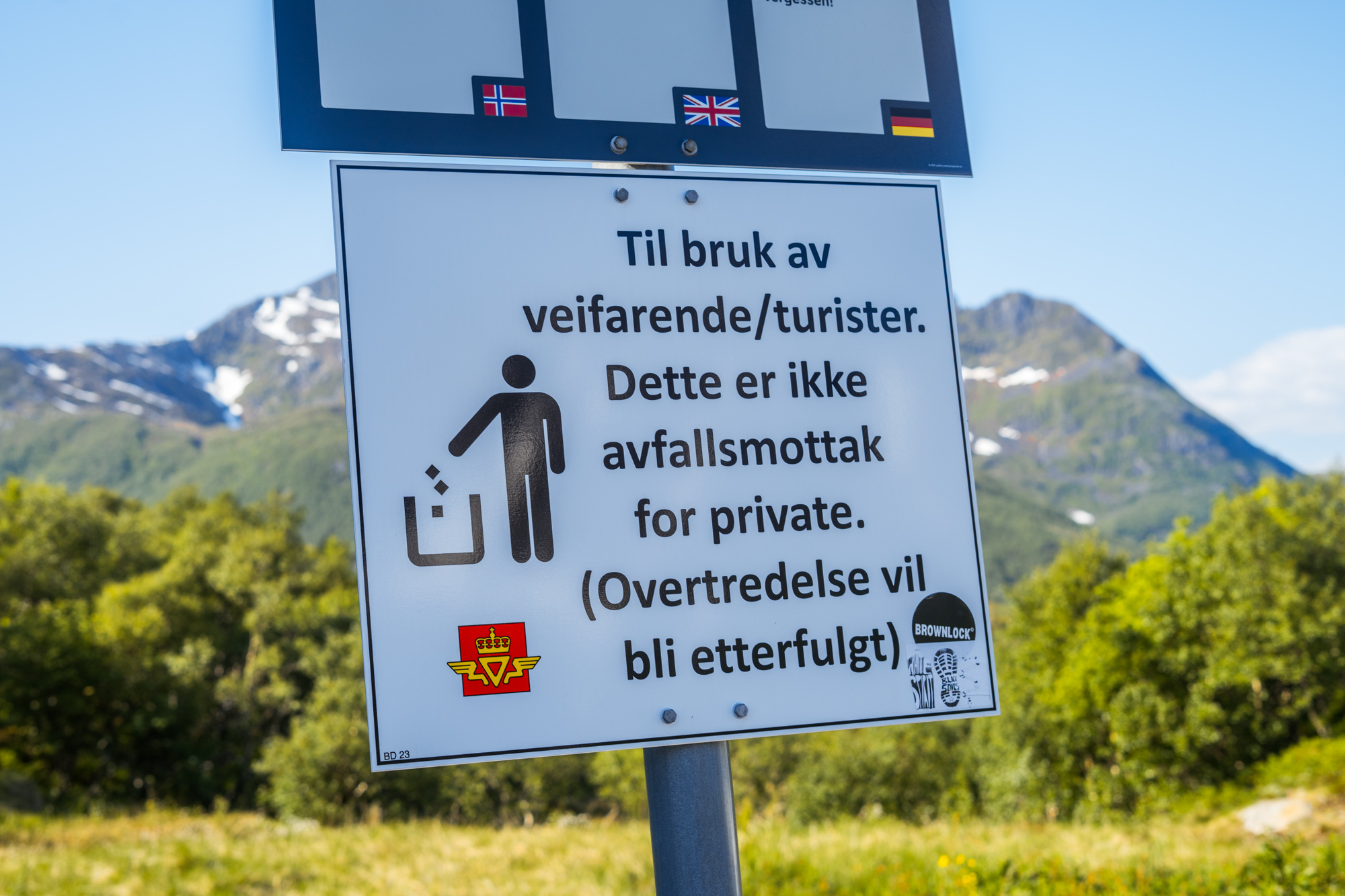
22. Norwegian tap water is amazing
Now moving onto food and drink tips for Norway, first off, do know that water in Norway is delicious straight from the tap, so there’s definitely no need to buy bottled (still) water when you’re in Norway. Pack a water bottle to take full advantage!
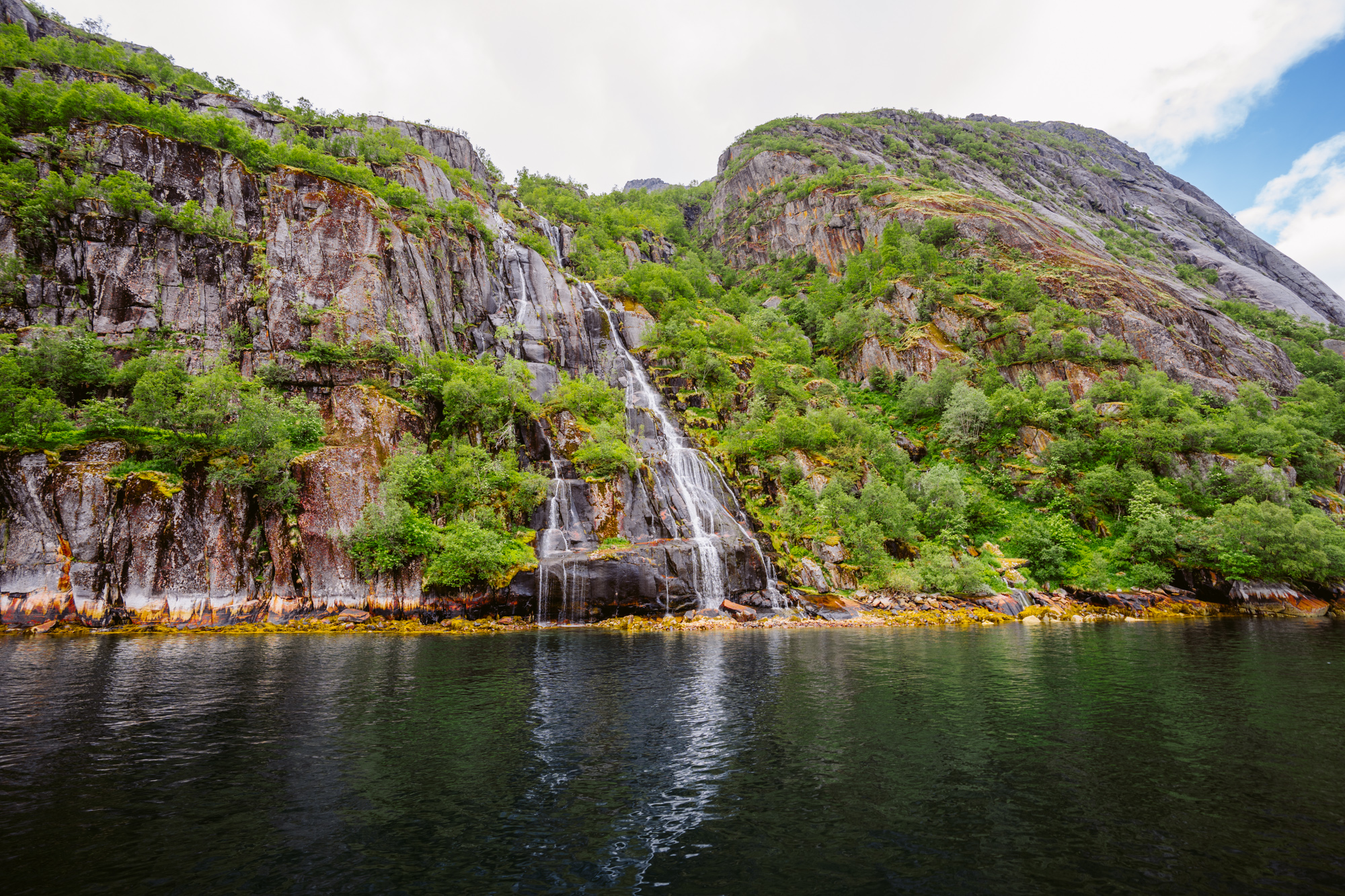
23. Dining out is expensive in Norway, so get groceries
When people say that Norway is expensive, I think where this is most true is when it comes to dining out.
The culture of dining out in Norway is quite different from North America – going out to eat is a much rarer occasion, often limited to once a week or less… and once you see the average prices, you may quickly understand why.
Based on my experience, I found that main courses in Norway typically ranged from 250 NOK to 450 NOK. This can add up over the course of a trip, so getting groceries, even just for lunches, can help a lot!
If you’re especially on a budget, I can recommend shopping at more low cost supermarkets like REMA 1000, my personal favourite, but other popular ones are Kiwi and Coop Extra.
In a pinch, gas stations often do have basics as well, but you can usually expect prices to be 1.5 times or 2x more than at a budget supermarket… though still cheaper than dining out. I’d recommend this option maybe for Sundays when conventional supermarkets aren’t often open.
Some local brands of random things I liked include:..
- Isklar water , Norwegian glacier water – the flavoured sparkling ones are so good. I wouldn’t buy the still ones since tap water is free!
- Freia Chocolate (the hazelnut milk chocolate is my favourite)
- Grandiosa frozen pizza, which I’ve heard is a common household staple
- Smash, the perfect salty/sweet snack – basically bugles covered in chocolate
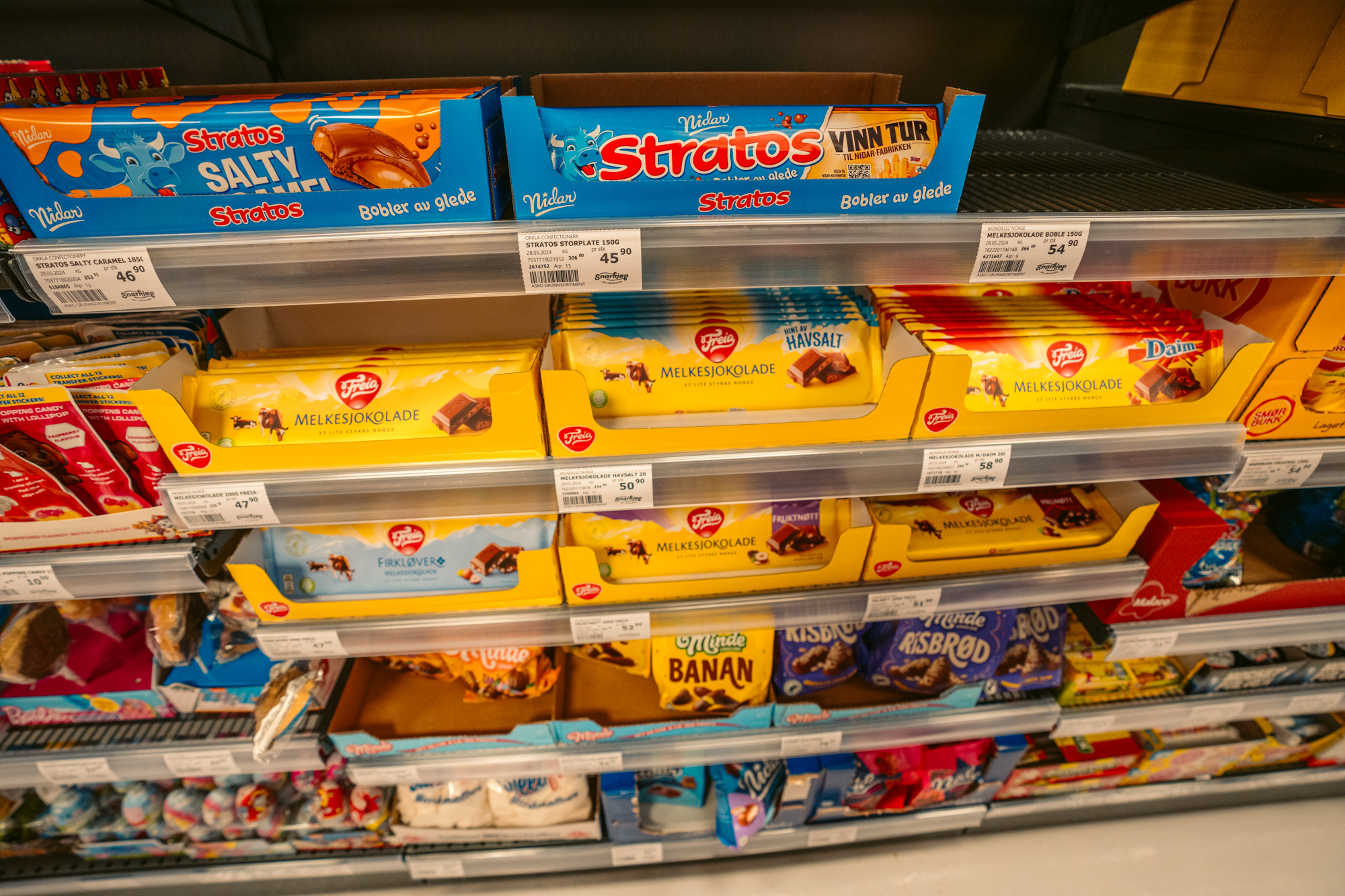
Do note that often supermarkets will have a section where they mark items down for extra cheap as well, typically items that are on the brink of expiring, which is fine if you’re intending them for immediate consumption.
And, the brand First Price is a very affordable option to look out for in many of Norway’s major supermarkets:

24. Be sure to try traditional Norwegian dishes
All that said, if you are able to splurge a little, do try to have a few meals out!
Though I didn’t have too many sit-down meals, each one I had was honestly so good – ultra fresh, delicious, and overall super high quality. This of course would depend on the establishment so make sure you’re always checking reviews.
If you’re prioritizing where exactly to splurge, I can definitely recommend trying out some local cuisine.
Some of the most popular dishes include…
- Finnbiff, a reindeer stew
- Kjøtt kaker i brun saus, meatballs in brown sauce
- Bacalao, a tomato-based stew made with salted cod (so good!)
- Brunost, brown cheese, I had this with a waffle and it was honestly SO tasty
- (Norweigan Style) heart shaped waffles – actually not a breakfast food and more of a sweet treat you can enjoy any time
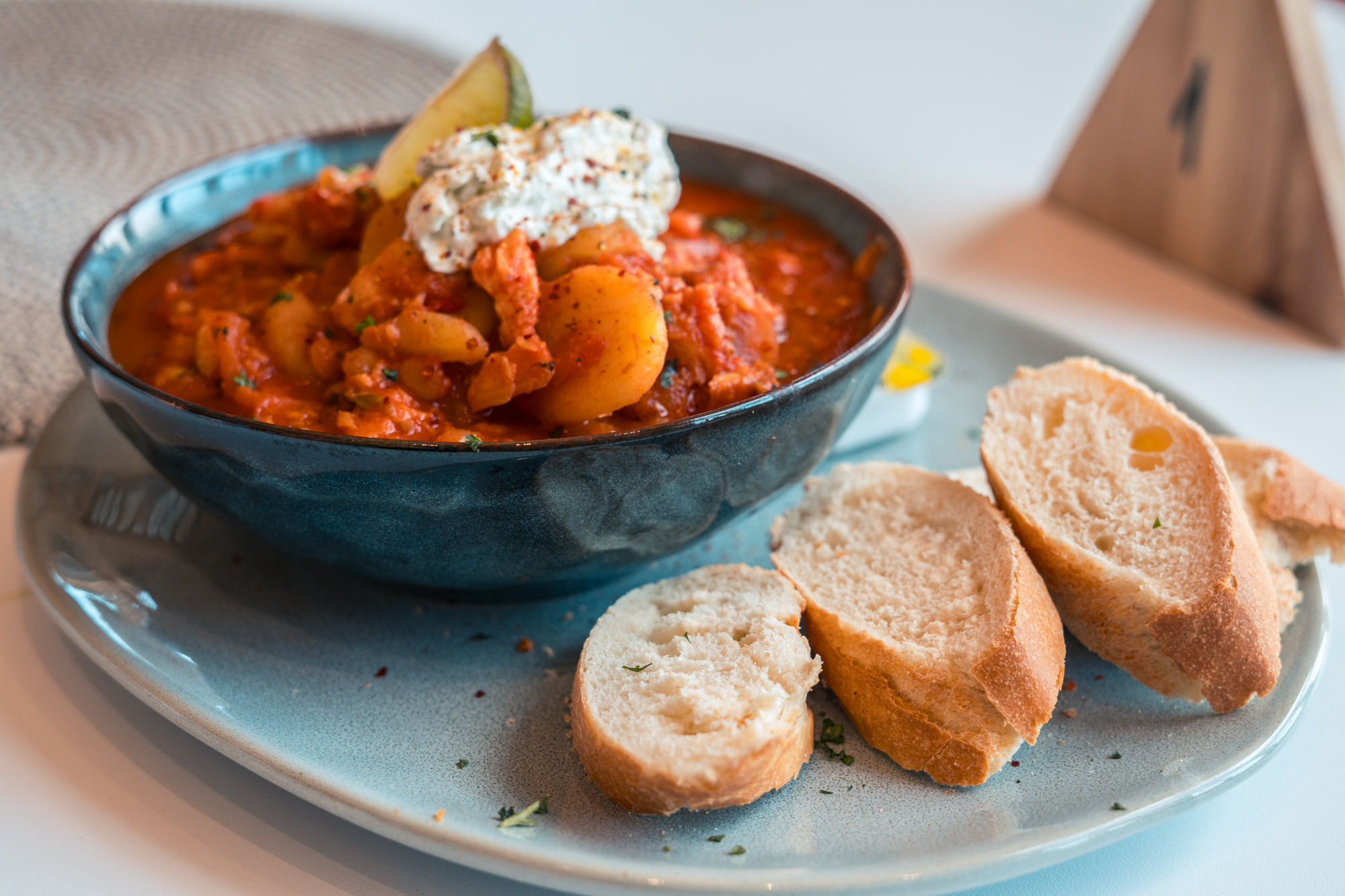
25. Try tons of Norwegian pastries as well
Okay, most people already know that cinnamon buns are a big thing in Norway, but there’s so much more than just that!
Norwegian cafes and bakeries are a wonderful place to snoop around, so be sure to stop in as many as you can afford and grab what looks good and calls to you. I can definitely recommend trying all kinds of bun (chocolate and cardamom are both great) and the national cake Kvæfjordkake is pretty amazing as well.

26. Beware that casual food/drink spots are often bar/self-service
If you’re used to always having table service when you go out to eat, do beware that when you’re dining out in Norway, some casual places may rely on bar or self-service.
With bar service, this means that no server comes to your table to take your order – you order at the bar and then they bring it over to you after.
And with self-service, you grab the things you want yourself and then pay (this system was in place on board some of the ferries for instance).
So if you are sitting at a table for a while and no server has come, look around for a sign that might indicate a different type of service system.
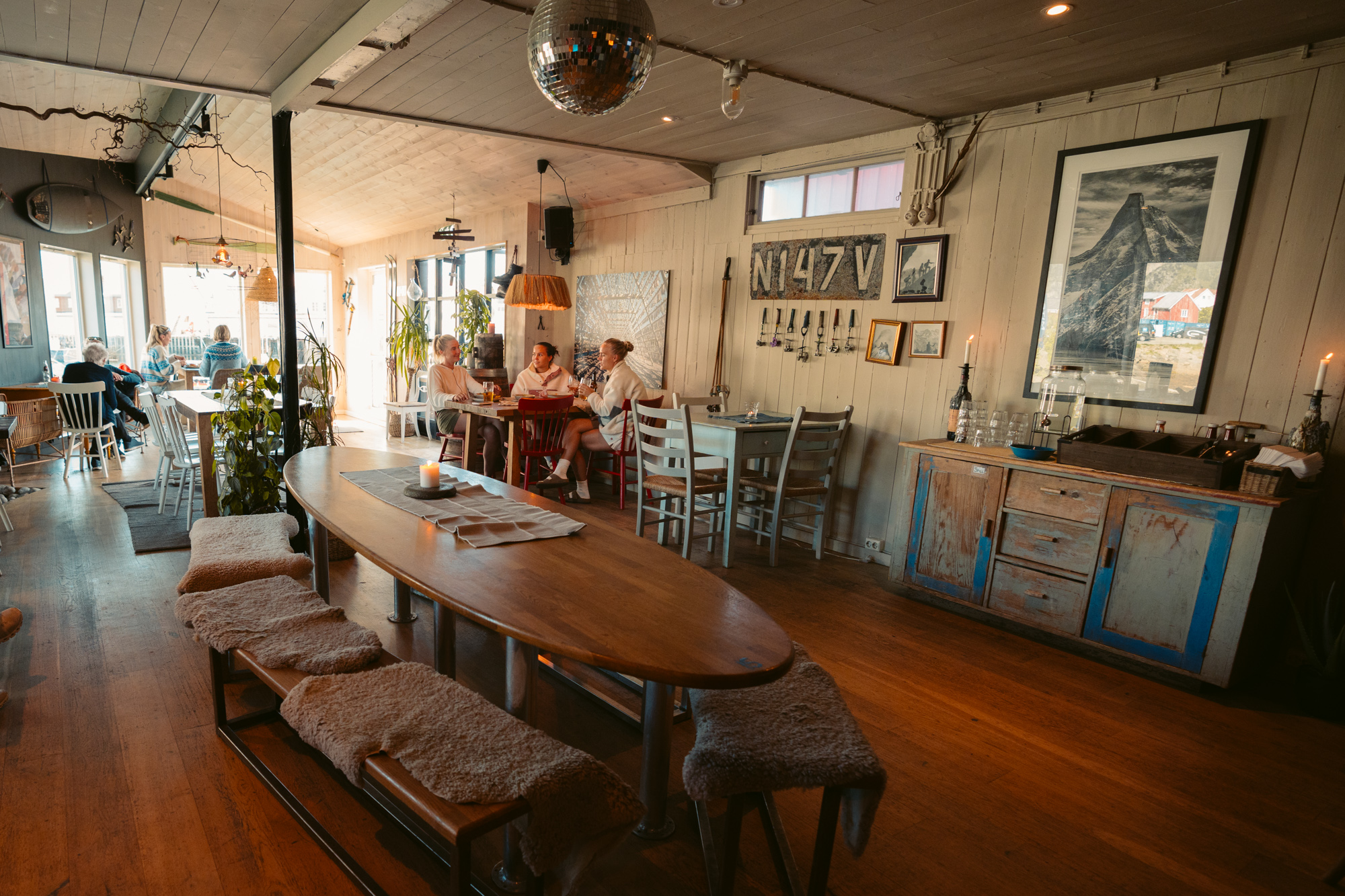
27. Consider getting affordable meals at gas stations
Now, especially when it comes to road trips, another budget-friendly tip for food in Norway is getting food at gas stations! I know how bleak that sounds, but Norwegian gas stations actually do have some great hot food options, typically for a very affordable price too. Hot dogs for instance are a filling and tasty staple, which can fill you up for less than 100 NOK per person!
There are a few common chains you’ll find across the country, but Circle K is by far my favourite – their hot dogs and ice cream are great, and for longer road trips you can even get a refillable cup for unlimited hot drinks across the country.
As a bonus tip, if keep an eye out, often you can find really good deals on older items as well that are discounted.
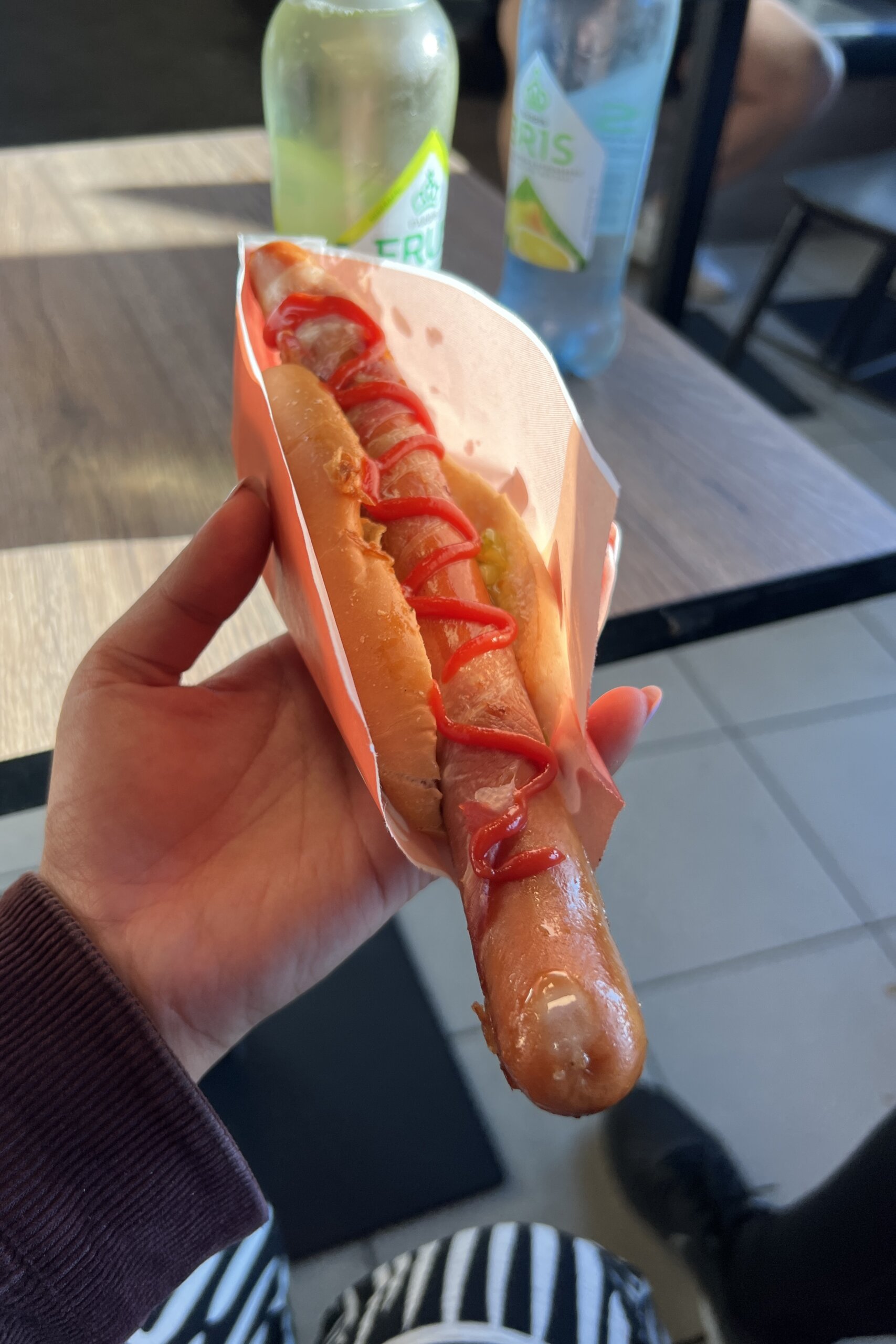
28. Shops and supermarkets are usually closed on Sundays
Now if you’re planning a longer trip, do be mindful of the fact that shops and supermarkets tend to be closed on Sundays in Norway, so any major bits of shopping you need to do should be saved for other days.
That said, with supermarkets, there are increasingly more shops these days that open on Sundays, though typically for a shorter time, so you should be fine in any major city. In a pinch, gas stations also have grocery staples (for a higher price point) and these are usually open on Sundays.
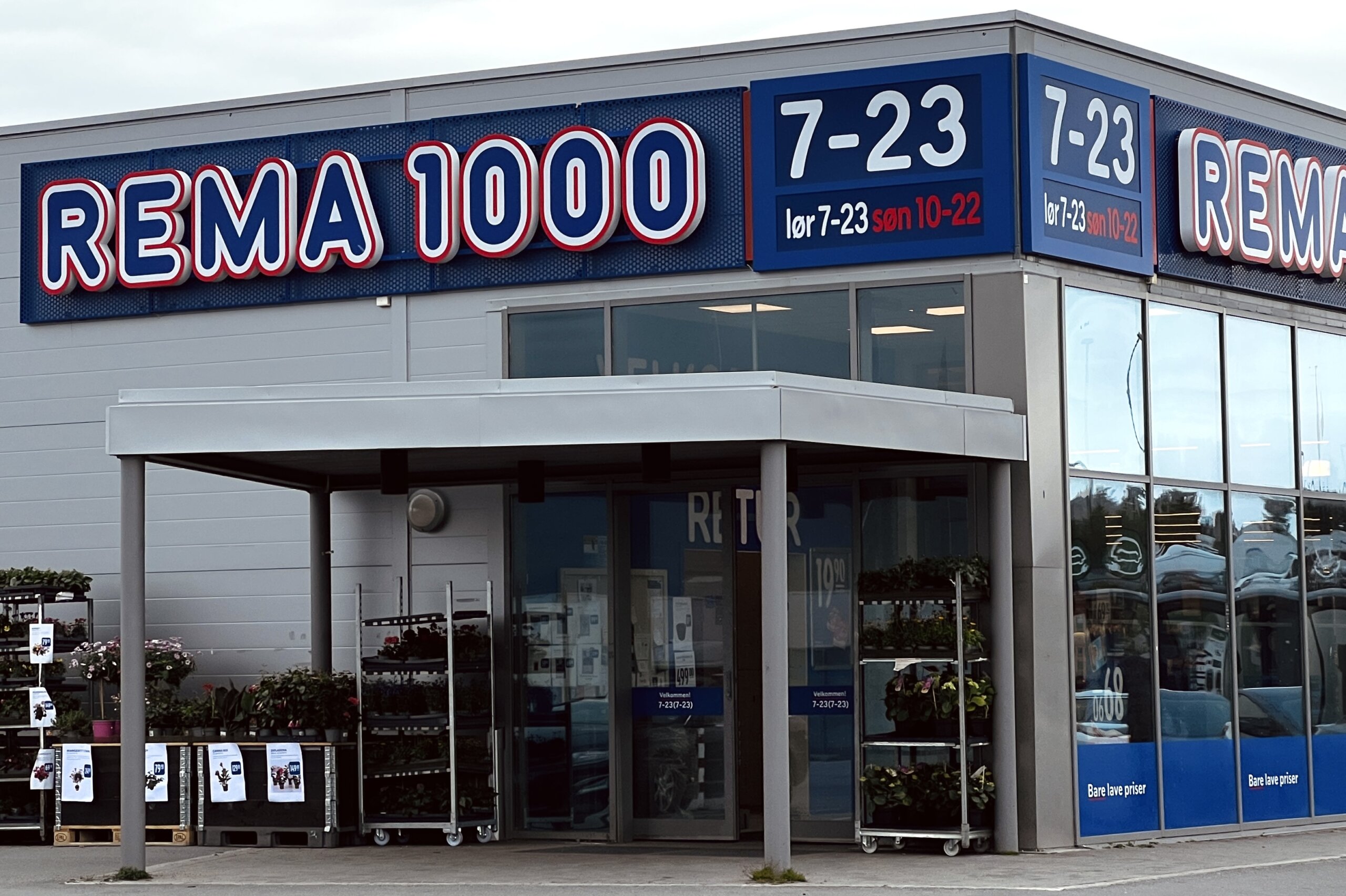
29. Beware that retail alcohol sales are very controlled
Hoping to booze it up in Norway? Unfortunately, in addition to high prices, another thing you need to deal with is just how controlled the sales of alcohol are.
For instance, supermarkets in Norway are usually only allowed to sell alcoholic drinks up to a 4.7% alcohol content. Anything beyond this must be purchased at a Vinmonopolet.
There’s also restrictions on WHEN alcohol can be sold – this may vary depending on where you are, but from what I saw around Lofoten, it seemed it was only possible to buy alcohol before 8pm on weekdays and before 6pm on Saturdays, with no sales at all on Sundays and certain holidays… so plan accordingly.
A random fun fact though – I’ve heard that buying very fancy and expensive wine can actually be cheaper in Norway than other countries, because they have restrictions on how high they can mark up prices, so if you’re a pricey wine connoisseur, keep that in mind.
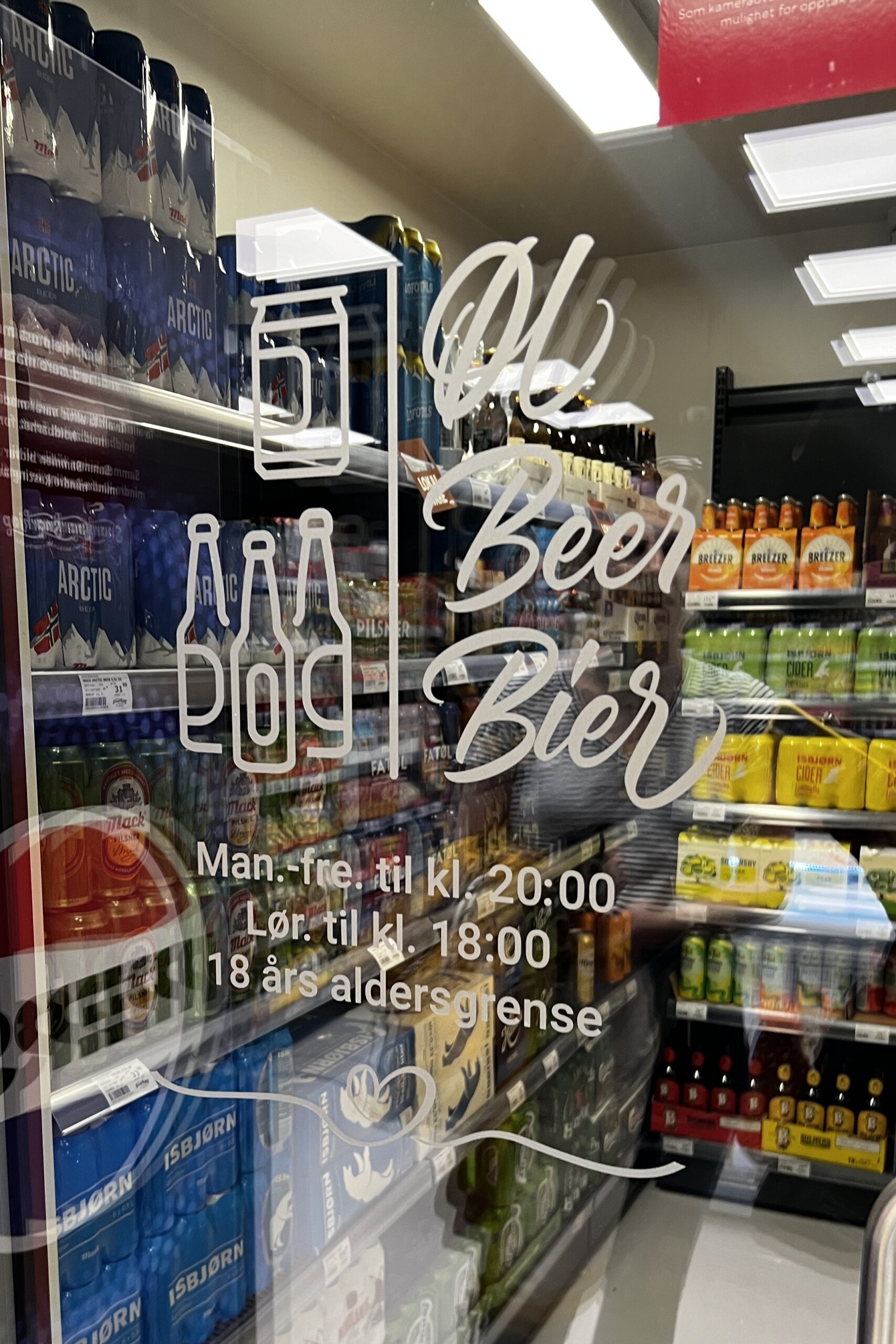
30. Be VERY careful of where you park
I learned this the hard way – parking tickets are steep and the signage isn’t always clear from a foreigner’s perspective, so you really need to be careful of where you park your car in Norway.
Some general things to look out for…
- Signs that say “mot avgift” which means “for a fee”
- Parking lines and anything painted on the parking lot floor that indicate where precisely you’re allowed to park
In some more remote areas, often these lines have been worn down though and aren’t very clear or visible, so be very careful. One hack I found was to read reviews of parking lots and places in advance, because usually when people have gotten a ticket, they will leave an angry review so that’ll help you understand the rules and where you can and can’t park.
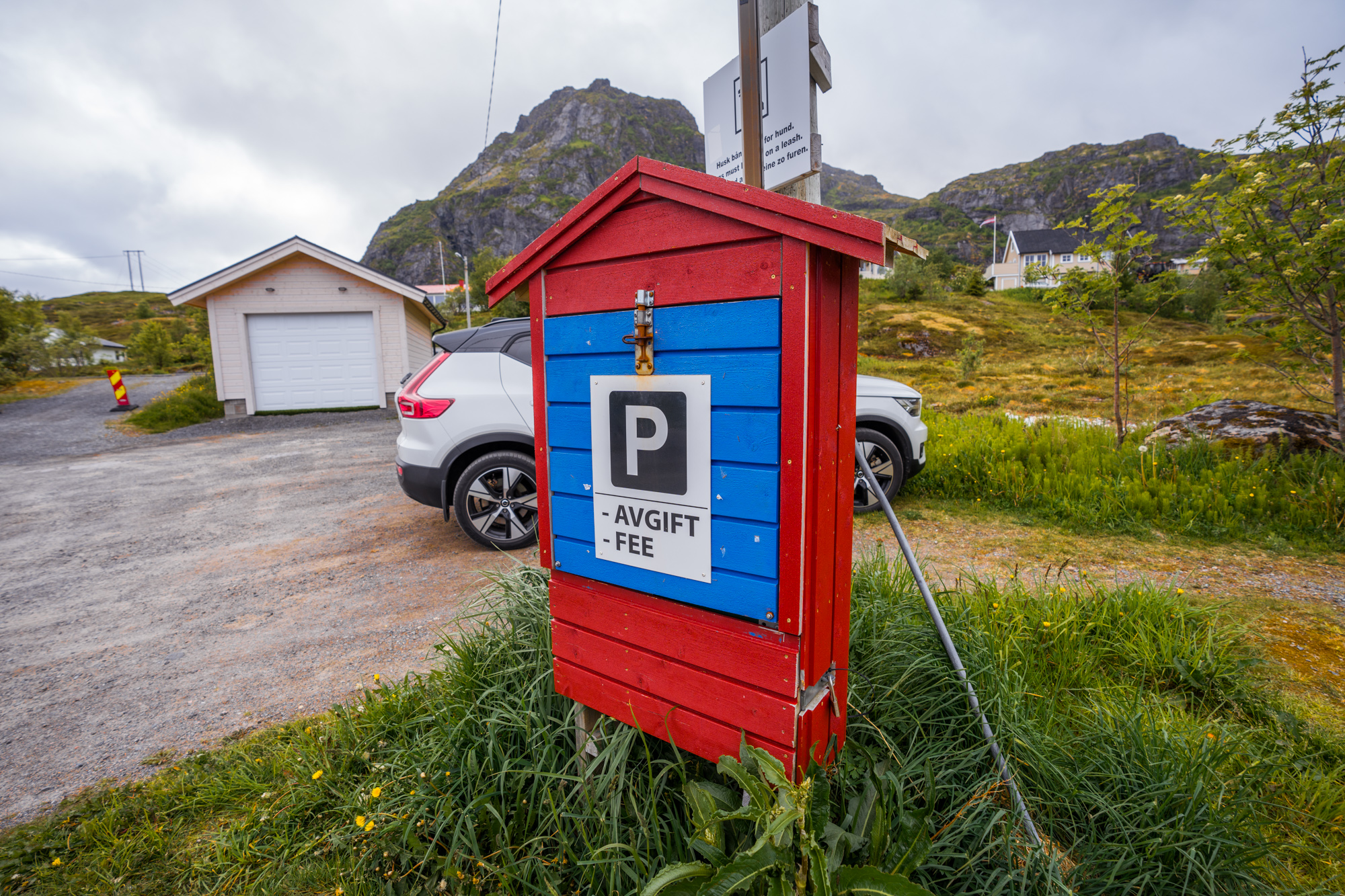
31. Norwegian windows can often open more than you think
If you find yourself in a Norwegian hotel room and the windows seem really limited in how much they can open, do keep an eye out for any button or latch you can press that will allow you to open it much wider for optimal circulation.
Again, this was a lesson learned the hard way after tons of struggle!
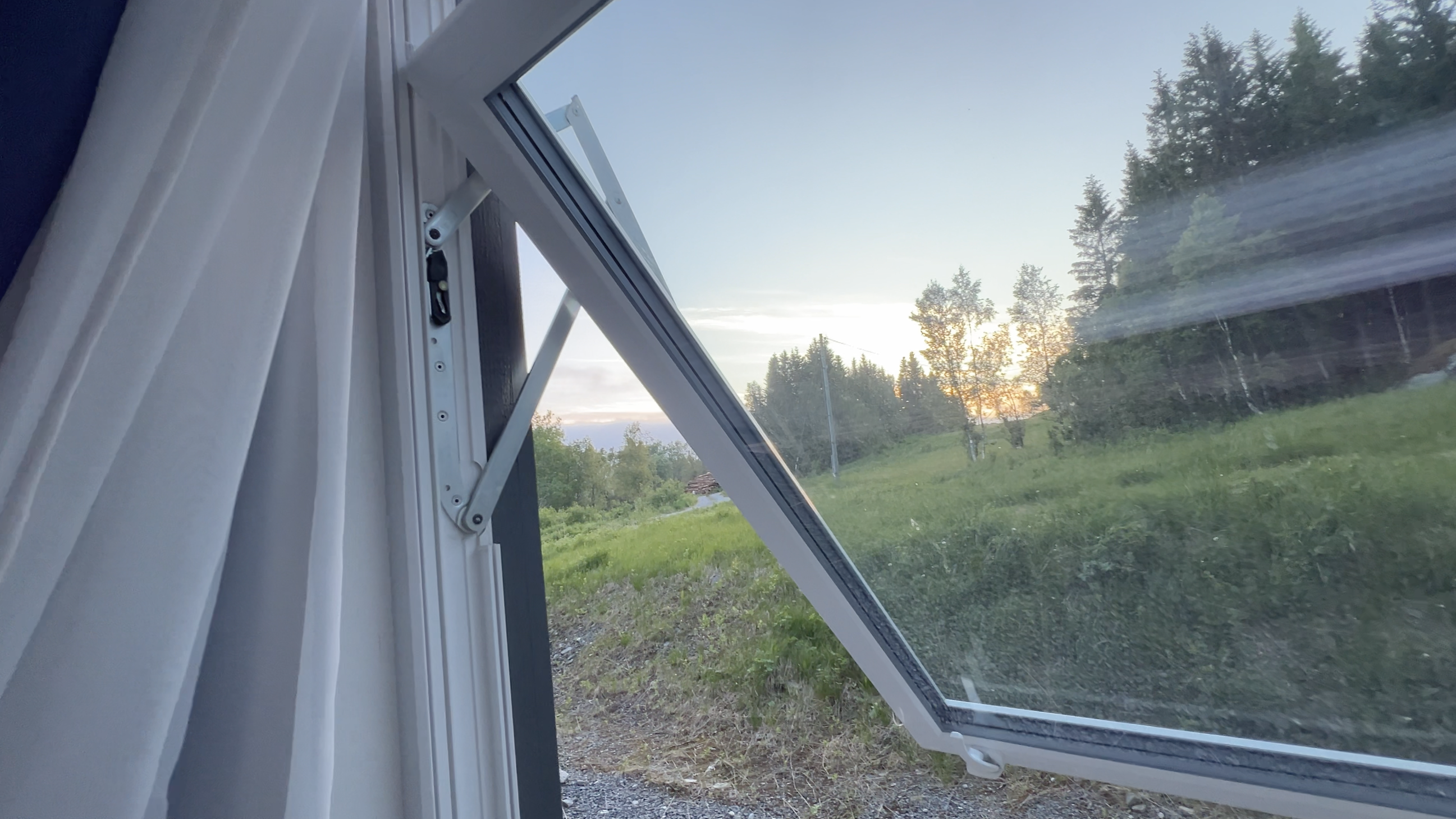
I hope this list of Norway Travel Tips was helpful!
Hopefully by now, you’ll feel much more prepared for your big Norwegian vacation, but if you have any more questions, let me know in the comments.
My Go-To Travel Favourites:
🧳 Eagle Creek: My favourite packing cubes
💳 Wise: For FREE travel friendly credit cards
🍯 Airalo: My go-to eSIM
🏨 Booking.com: For searching hotels
📷 Sony A7IV: My (amazing) camera
✈️ Google Flights : For finding flight deals
🌎 WorldNomads: For travel insurance
🎉 GetYourGuide: For booking activities
Leave a Comment Cancel reply
By using this form you agree with the storage and handling of your data by this website. *
- Privacy & disclosure policy
- Portfolio & Press
- NORWAY ITINERARIES
Norway Travel Guide: Everything You Need to Visit Norway!
Psst! Some links in my posts may be affiliate links, which means that I get paid a fee if you chose to purchase something through it. This doesn't cost you anything, but makes a huge difference for me! Thanks for your support!
Being born and raised by the beautiful Norwegian fjords, I often get asked to share my best travel tips for Norway . Through my years as a travel blogger I have written several helpful guides to visiting Norway, but I realised I’ve never actually created one, massive resource for travelling to Norway – kind of like an ultimate Norway travel guide!
So, that’s what this is.
In this post, I aim to share EVERYTHING you need to know before your trip to Norway, including the best places to visit in Norway, when to visit Norway, and what the expectations are when it comes to tipping in Norway.
And more, of course.
I’ll also link to all my best Norway resources and articles where they are relevant, which you can also find by heading to the Norway travel category where I have collected all posts about travelling to Norway.
Don’t forget to join my Norway Travel Tips Facebook group to connect with others who are currently planning their trips, discover new Norway travel hacks and share inspiration to make the most of your travel plans!
Since this post turned out to be massive, feel free to use th table of contents to navigate ! Just click the little button on the right of it to expand and click your way through my guide!
Table of Contents
Norway Travel Guide: Welcome!
The photo above is the view from my house. I’m serious. This is what Norway looks like, and it’s no wonder publications and travellers alike call Norway one of the most beautiful countries in the world .
I grew up by the fjords, and not just any fjord. The Aurlandsfjord, with Flåm at its end and the UNESCO World Heritage Listed Nærøyfjord as one of its ‘arms’, is one of the most popular fjords in Norway.
This means that my little municipality of 1700 people (my village has around 600 inhabitants) is visited by over 1,5 million tourists a year.
Side note: having grown up where I have, I also run a blog dedicated to Flåm and the area – head this way to read!
It wasn’t until I moved to Wales at 17, followed by London and Florida that I started realising just how beautiful and special Norway is, and now I love sharing my Norway travel tips and guides with visitors from all over the world.
3 Things to know about Norway before visiting
In order to cover all the best places to visit in Norway, I’d first like to point out that there are a few things you should know before you book a trip to Norway.
#1 The Cost of Things
One of those things is that Norway is expensive as hell .
There’s no denying it, and you’ll be better off by knowing this in advance. By saving and budgeting, your trip to Norway will go a lot smoother, and being prepared for high prices will save you any frustration during your trip.
Especially in the more touristy areas you’ll find that the prices are quite high.
#2 The Language
Another thing to know about Norway is that the Norwegian language can come across as quite rude . This is not to say that Norwegians are rude, but a result of the lack of ‘polite filler words’ in our day-to-day language.
By this, I mean that we don’t add ‘please’ to the end of a sentence when ordering food or asking for something, we very rarely say ‘excuse me’ if interrupting someone, and the language generally lacks the politeness of English.
You may come across exceptions to this rule, but it’s still worth being aware of so you don’t get offended when someone bumps into you on the street without apologising.
It’s not that we are being rude, it is just our culture and the way of our language.
One last thing worth knowing before you visit Norway is that in general, Norwegians speak and understand English very well .
This is something we are aware of and are proud of, and I believe it is a result of all English/American TV shows and movies aired in Norway simply being subtitled, and not dubbed.
This means that a Norwegian might get offended or annoyed if you speak English as if we don’t understand you, by over- pronouncing or speaking extremely slowly.
I have personally gotten slightly defensive when a tourist once was extremely surprised by the fact that I speak English.
So ask us politely and normally if we speak English, don’t act surprised when we say ‘of course’. If you comment on how Norwegians speak very good English in general, make sure to do just so. Don’t say it in a surprised tone on how one specific person speaks it so well.
There you have some of the things I think you should know before visiting Norway. Now, let’s get down to business!
The 8 Best places to visit in Norway
Norway is quite a large country, in spite of only having a little over 5 million inhabitants.
Out of all the great places to visit in Norway , you’ll find that some are more popular than others.
Most travellers, unless they are on a cruise, will arrive by plane into one of the two main airports in the country; Oslo or Bergen.
From there, they’ll either have a packed itinerary taking them through all the best places to visit in Norway or play it by ear.
Those visiting by cruise will often dock in destinations such as Flåm , Olden or Geiranger.
In this section, I have tried to break down the most popular places to visit in Norway. In no particular order.
Naturally, Oslo is one of the top places to visit in Norway.
The capital of Norway has a variety of fun attractions, and you’ll find that there are a plethora of fun things to do and see. You can enjoy a boat ride or go swimming in the Oslo fjord, take a stroll through one of the city’s many parks, or rent a bike and explore Oslo on a budget.
The Akerselva River runs through the city, and the path alongside it makes for a lovely stroll.
Head this way to read the ultimate guide to things to do in Oslo . You’ll need more than a day to get through all the 30+ activities on the list!
#2 The fjords
Obviously, I couldn’t write a list of the best places to visit in Norway and not include the famous fjords.
However, they are in need of their very own section, as there are several of them worth visiting. Norway is actually the country in the world with the highest density of fjords ! Considering that the word itself is Norwegian, I’m not surprised.
I have covered the fjords in a separate section below, as well as this post about the best fjords in Norway .
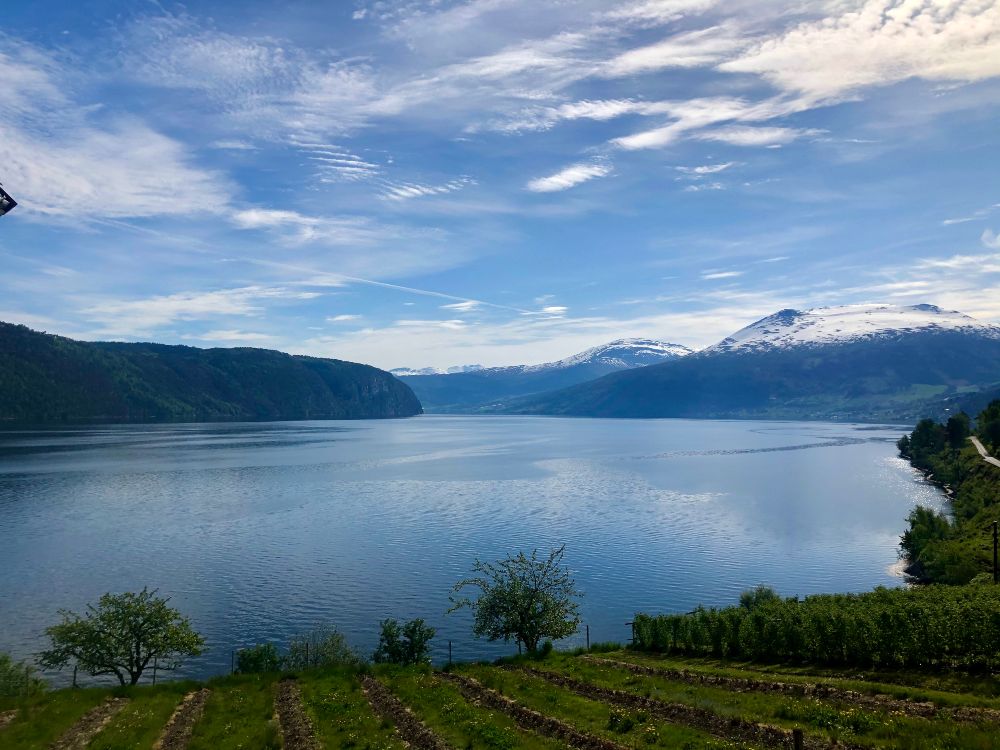
The second largest city in Norway is a very popular destination for travellers to Norway due to its proximity to the famous fjords.
This is also where I currently live!
Bergen is famous for the wooden houses along the docks of the city; Bryggen , great local restaurants , and some incredible hikes overlooking the city.
Many tours to the fjords start in Bergen, and it is the perfect starting point for a Norwegian holiday.
Bergen is not only one of Norway’s major cities, but it is also the largest cruise port in the country. So if you are visiting Norway on a cruise you are very likely to be dropping by Bergen.
When you are visiting Bergen, don’t miss my guide to the best things to do in the city , this overview of some great Bergen tours , or even these Bergen fjord cruises (to help you make the most of your trip)!
Bergen Hotel Deals
#4 trondheim.
Trondheim is known amongst Norwegians for their killer student community, and amongst visitors for the beautiful Nidaros Cathedral.
This is the perfect city for a stroll, and both the main square and the pathways along the Nidelva River are beautiful areas to visit.
#5 Lillehammer
Lillehammer gets an honourable mention on this list of places to visit in Norway thanks to the hilarious Netflix show Lilyhammer .
Lillehammer was also the host of the 1994 Winter Olympics, which many Norwegians still remember and remind people that they hosted.
Most travellers will visit Lillehammer as a day trip from Oslo.
#6 Northern Norway
I’m sorry to put this as one item on the list, as I know that there are many beautiful places to visit in Northern Norway.
Alta , Bodø, Tromsø and Lofoten are amongst popular destinations in Northern Norway, and visitors from all over the world travel to Norway to head up North in the winter in order to see the Northern Lights, as well as experience incredible activities such as dog sledding, learning about Sami culture and sleeping in an igloo hotel .
Northern Norway is actually where you’ll find several of the world’s best places to see the Northern lights .
Personally, I think Alta might be one of my favourite destinations in Norway! Just make sure to pack well .
Heading up north? Don’t miss my guide to shooting the Northern lights with a GoPro !
Northern Norway Hotel Deals
#7 the lofoten islands.
The Lofoten Islands (or just Lofoten) is an archipelago of islands located in Nordland county in Northern Norway.
It is an incredibly popular destination for photography enthusiasts, and with good reason. These islands boast of incredible nature with steep, alp-like mountains, stunning white-sand beaches, and even some killer waves for anyone who’s into surfing.
I couldn’t possibly write a Norway travel guide without mentioning this place (even though I have a separate section for Northern Norway right above it).
I didn’t visit Lofoten until I was 28, and I couldn’t believe I had taken that long to explore the place. Absolutely stunning, is the only way to describe it.
Curious about visiting Lofoten? Here are 23 reasons you need to visit Lofoten now!
In my collection of itineraries, I have now added self-drive Lofoten itineraries (it is a place where a rental car is a must)! Head this way to find them!
#8 Stavanger
Stavanger is an incredibly pretty city, and one I didn’t actually visit until I was in my twenties. I wish I had sooner because it really took my breath away!
From the pretty Fargegaten (the coloured street pictured below) to walking through the Old Town, Stavanger has plenty of reasons to visit.
Head this way to read my favourite things to do in Stavanger !
The best fjords to visit in Norway
Below is an overview of which fjords to visit in Norway, but you can also head this way to read my extensive guide to the 5 best fjords to visit in Norway!
I told you the fjords deserved their own section in this post. Basically, most people who travel to Norway come to experience the Norwegian fjords, and with good reason.
The fjords offer breathtaking scenery, majestic mountains and a landscape that will stay in your memory forever.
First things first.
What is a fjord?
You’ll be surprised with the amount of people who arrive in Norway with no clue what a fjord actually is.
Some think it’s a lake, others think it’s the name for Norwegian mountains. We have had people ask us if we drain the fjords in the winter (?) or if we turn off the waterfalls at all (??).
My friend once got asked if we built the visiting cruise ship on the fjord in order to get it there , because apparently , it was too hard to believe that it had sailed its way there.
A fjord is a body of water that fills a deep and narrow valley created by a glacier, often with steep, dramatic mountains surrounding it. As it is connected to the ocean, it is not a lake. As it is not flowing anywhere, it is not a river. It is a fjord.
How do I use ‘fjord’ in a sentence?
I wanted to mention this briefly as I have heard (and read) too many fun variations of sentences including the fjords. Here’s my low-down of how to use the fjords in a s entence;
- You are by the fjords, not at the fjords when you are in the area surrounding it, such as in my village Aurland.
- You are only on the fjord if you are on a boat, on the fjord . If you are going for a swim, you are in the fjord.
- The mountains are not fjords, so you cannot ‘ hike a fjord ‘. You can hike by or near a fjord. However, you can hike in the fjord landscape.
- The fjords as a plural is used to describe several of the fjords in Norway, which are mainly found in the west. Thus, the term ‘the fjords’ could also just mean ‘the area in Western Norway spreading across the Lysefjord, the Sognefjord and the Geirangerfjord. Don’t ever call it the fjords (plural) if you are only talking about one of them.
Now that we’ve got the technical stuff covered, let me share the best fjords in Norway with you. There are only 3 you need to know, in my opinion.
#1 The Lysefjord – Lysefjorden
Lysefjorden is a small fjord near Stavanger, and it is the location of the famous Pulpit Rock and Kjerag/Kjeragbolden. These two popular hikes have incredible views of the fjord below and are both worth a try if you are in the area.
The Lysefjord ends in Lysebotn, a small village at the bottom of the mountain and at the end of the fjord.
The fjord can be explored by ferry, and there are also car ferries running there in the summertime, allowing you to bring your own car on the fjord adventure.
Along the Lysefjord you’ll also find Flørli, which is the last ferry stop before Lysebotn. Here you can hike the famous Flørli 4444, which is the world’s longest wooden stairs.
They consist of (you guessed it) 4444 wooden steps going up the mountainside along the old water pipes. The pipes are reminders of Flørli’s rich hydro energy history.
Please note that there are limited schedules for the ferries on Lysefjorden in the winter, and so I advise you to do your research before heading to the pier for pickup.

#2 The Geiranger fjord – Geirangerfjorden
One of the busiest little villages in Norway, mainly thanks to the cruise traffic visiting this fjord, is Geiranger.
This quaint little place is neatly nestled at the bottom of a mountain, and looks tiny when pictured with the majestic fjord landscape surrounding it.
The Geiranger fjord is one of two fjords in Norway (the other one is next) that have been included in UNESCO’s World Heritage List.
The area surrounding Geiranger boasts some incredible viewpoints, such as Dalsnibba and Ørneredet (the Eagle’s Nest). A popular hike overlooking the fjord goes to Westerås Farm, where you can even spend the night if you book in advance.
Going on a fjord cruise in Geiranger is a must if you want to see the famous waterfalls ‘De Syv Søstre’ (the Seven Sisters) or ‘Friaren’ (the Suitor).
These waterfalls face each other along the fjord, and have a pretty interesting backstory , which I’ll tell you if you ask!
#3 The Aurlandsfjord and the Nærøyfjord
These two fjords, the Aurlandsfjord and the Nærøyfjord, are actually ‘fjord arms’ of the Sognefjord, which is the largest fjord in Norway.
A fjord arm is simply a smaller fjord connected to the main fjord, which is connected to the ocean. I really should be a teacher with these amazing explanations.
The Aurlandsfjord is the name of the fjord where you’ll find my village, Aurland, as well as the famous neighbouring village Flåm.
Flåm is one of Norway’s largest cruise ports, after Stavanger, Bergen and Geiranger. You can imagine how busy it gets in a village of 300 inhabitants when 5000 cruise passengers embark.
One of the best activities in the area is the newly opened Flåm Zipline, which is Scandinavia’s longest (and fastest)! Read my review (and watch my video) here !
Flåm is home to the famous Flåm Railway, one of the world’s most scenic railways. Aurland is home to the impressive Stegastein Viewpoint , a viewing platform built 650 metres above sea level and offering panoramic views of the fjord below. It’s with good reason that I love this area.
The Nærøyfjord is a fjord arm of the Aurlandsfjord, and has been granted UNESCO World Heritage status along with the Geiranger fjord (above). This is where the Sognefjord is at its narrowest, which provides for some impressive sceneries.
Before heading to the Aurlandsfjord area, don’t miss the travel guide I have written about it! It’s a 30+ page eBook , and I am so excited to have finally published it!
The 4 Best Things to do in Norway
Now that we have covered the different places to visit in Norway (and I’m sure I’ve missed a few), it’s time to cover another important topic; what is there to do in Norway?
Naturally, each of the places above will have their own distinct activities and things to do, and some are very location specific.
However, there are some experiences in Norway that are more popular than others, and they are worth knowing about before visiting Norway.
I also have separate posts on what to do in Oslo , Bergen , Stavanger , Lofoten , Flåm and Olden specifically.
#1 Hiking in Norway
There are many popular hikes in Norway, and you’ll see photos of them everywhere and anywhere you turn online.
The most famous ones are Pulpit Rock, and the dreaded 10-hour hike Trolltunga (which some tourists still manage to complete in sandals and jeans), but there are loads of great lesser known hikes in Norway too!
Here are two of my favourite unknown hikes in Norway!
#2 Explore the fjords by boat
As mentioned above, the fjords are some of the main reasons people visit Norway. Naturally, heading out on the fjords by boat is a must during your trip to Norway, and luckily there are several ways to cross this on your list!
On all three of the fjords I’ve listed in this post you can go on a fjord cruise which will take you through the fjords so you can enjoy the scenery.
Most of the companies have classic car ferries covering the routes, but if you go on a fjord cruise in the Nærøyfjord from Flåm to Gudvangen or back) you can travel on fully electric vessels, which is an experience on its own.
Another fun way to explore the fjords is to go out on a FjordSafari, which is in a smaller boat allowing you to get much closer to nature. These tours are popular in Flåm and Geiranger.
If you prefer a more active approach, kayaking on the fjords is always an option, and you can choose between renting your own or joining a kayaking tour.
There are even tours that include an overnight stay along the fjord, giving you a fjord experience to remember for life.
#3 The Flam Railway – Flåmsbana (and other train journeys)
Named one of the most scenic train rides in the world, this is at the top of many people’s Norway bucket list. The Flåm Railway runs between Myrdal and Flåm, and takes approximately one hour each way.
This is the #1 attraction in Flåm, and tickets sell out extremely fast, so do make sure to book early.
Originally, the Flåm Railway was constructed with the purpose of connecting the Oslo-Bergen Railway with the boats coming into the Sognefjord (Flåm is literally at the end of it), but today its main job is transporting almost 10’000 tourists a day to the top of the Flåm Valley and back down to the fjord.
If you are one of those travellers, do read this sarcastic mini guide by yours truly on how to be a tourist in Norway. Remember that offence is taken, not given.
#4 Norway in a Nutshell
This isn’t technically a ‘thing to do in Norway’, but more like a way to explore Norway. Norway in a Nutshell is a popular non-guided tour, starting in either Oslo or Bergen.
Basically, it takes you from either city via train, connecting you to the famous Flåm Railway at Myrdal. On the train to Myrdal you will have already seen some of Norway’s beautiful nature, and experienced the impressively poor w ifi they advertise on the NSB trains.
From Myrdal to Flåm you not only get no wifi at all, you also won’t have any phone signal. So grab your camera and enjoy the stunning views of the Flåm Valley.
One of the most impressive things about the Flåm Railway, in my opinion, is the fact that in one of the tunnels the train turns almost 180 degrees, and you’ll exit the tunnel with the view you had on one side of the train on the opposite side. That’s all happening inside a mountain, guys!
The next step of the classic Norway in a Nutshell itinerary is to get on a fjord cruise from Flåm to Gudvangen. On this cruise you’ll sail through the Nærøyfjord, and get to cross off the UNESCO listed area from your list. From Gudvangen you continue on to Voss by bus, where you will jump on a train back to either Oslo or Bergen.
Do note that this is mainly the classic Norway in a Nutshell itinerary, and that there are many variations of it, for example allowing you to end in a different city from where you started.
Here’s my guide to booking the Norway in a Nutshell tour on your own (saving you quite a bit of $$$)!
What to see in Norway
Okay, I understand that some of these could have been included on the ‘things to do’ list, but as they are more on the scenic side, it made sense to add them in their own category. Naturally, the Norwegian nature is a big reason many people come to visit, and so naturally, these things are mostly natural phenomenon, with a few buildings sprinkled in.
In no particular order, these are the things people come to see in Norway:
- The fjords, mainly the Nærøyfjord, the Geiranger fjord and the Lysefjord
- The Northern Lights
- Famous mountains such as Trolltunga, Pulpit Rock and Kjeragbolten
- Snow (seriously)
- Impressive structures such as the Opera House in Oslo and the Stegastein Viewpoint
- Historic buildings such as Bryggen in Bergen and the ships at the Viking Ship Museum in Oslo
The Best Time to Visit Norway
This is another question I get a lot; when is the best time to visit Norway? I have dedicated an entire blog post to it here , but you can also keep reading for an overview.
Side note : if you are planning your trip to Norway around the Aurora Borealis/northern lights, read my post covering the best times to see the Northern Lights in Norway !
Naturally, every season has its charms, and there are pros and cons for visiting Norway at any time of year. Visiting Norway in the summer is naturally the most popular time to visit Norway.
This is when it is warmest, and many would say the country is at its prettiest in the summer. Summer is high season for tourism in Norway, and this also means that there are more people. Everywhere.
Visiting Norway in the winter is becoming increasingly popular, as people want to venture away from everyone else and experience something unique.
Norway in the winter is cold, dark and quiet, and that’s exactly what many people are looking for. I have also written a complete guide to visiting the fjords in the winter , which I update yearly to ensure that all the latest info is there.
Don’t miss this complete packing list for visiting Norway in winter!
Onto spring, which is when many locals will advise you to visit Norway. April is still considered to be shoulder season in Norway, but more and more tour companies and providers are offering high season opening hours and schedules.
It is a little colder than summer, so you’ll have to dress well if you visit in the spring (seriously, we sometimes have snow in May!). but it’s worth it to beat the crowds.
The same can be said for visiting in the autumn, which is personally my favourite season. If you visit in September you’ll enjoy similar opening hours as August, and still catch the end of summer beauty of the country.
Unfortunately, there is no right answer to the question of when to visit Norway, and it is a decision that has to be made by each traveller.
If your priority is to have the most off-the-beaten-track experience of Norway, I would say autumn, while if it’s really important to you to have the green grass and good weather, you may have to brave the crowds of July. Either way, I hope you’ll have an amazing time in Norway!
Visiting Norway on a budget
Now onto something else completely. Is it possible to visit Norway on a budget? Well, it depends on how you define budget.
Personally, I wouldn’t recommend visiting Norway on a backpacker budget, simply because you won’t get the real experience of the country if you can’t afford to join any of the activities on offer and have to spend half your trip trying to hitch-hike a ride and finding a spot to set up your tent.
Visiting Norway on a budget in the sense that you can be smart about your money and not break the bank completely, however, is completely doable!
Here’s how you can visit Oslo on a budget , with tips that are valid for any of the Norwegian cities .
It’s all about doing your research in advance, checking for price increases and asking locals for tips. For example, in both Bergen and Oslo you can skip the expensive airport express and go by local transportation, paying less than half the price.
Instead of joining the Norway in a Nutshell tour, why not set it up on your own? As you saw above from my outline of the itinerary, it’s pretty straight forward, and completely doable to book separately. Here’s exactly how to do it on your own !
The Best Hotels in Norway
There are lots of great places to stay in Norway, from the ultimate luxury hotels to budget-friendly Bed & Breakfasts. You’ll find that there are many historic hotels across the country, offering unique experiences and fun stories to share with their visitors.
These are often members of De Historiske , which is a collection of historic hotels, and an affiliate of Historic Hotels of Europe.
Some of my favourite hotels in Norway are hotels that have a story to tell, whether they are part of De Historiske or not. Such as Amerikalinjen in Oslo, Vangsgaarden in Aurland, Hotel Union in Geiranger and Hotel Norge in Bergen.
Here are some of my favourite hotels in Oslo , specifically.
Oslo Hotel Deals
Below you will find some specific hotel deals for Oslo – courtesy of Booking.com! Hotels in Norway (and especially Oslo) fill up fast, so as soon as you have your travel dates I highly recommend booking your stay.
Travelling in Norway – How to get around
When visiting Norway you’ll want to get around in the most efficient (and budget friendly) way.
There are three main modes of transport in Norway , in addition to each city having their own system.
If you are visiting Oslo, the public transport system is called #Ruter ( yes, with the hashtag ), and in Bergen it’s called Skyss.
Both companies have apps where you can check schedules, plan your trip and buy your tickets, so I suggest downloading these before you leave. Just search for their names in your respective App store.
Want specifics? Here’s how to travel from Bergen to Flåm (and back) , and here’s how to get from Oslo to the fjords !
Note that in Spring 2019, NSB (the national rail company) and Nettbuss (my favourite bus company) announced that they were joining forces and rebranding as Vy .
Nettbuss was already owned by NSB, so by “joining forces”, I mainly mean that they are to be seen as one company publicly.
This has been a long process, and now you can book bus and train transportation (schedules, prices and tickets) on their websites; Vy and VyBuss .
Ideally, they want to merge their websites, so that you can book both bus and train tickets in the same spot – but so far it hasn’t been working greatly. So my advice is to use the separate websites for now.
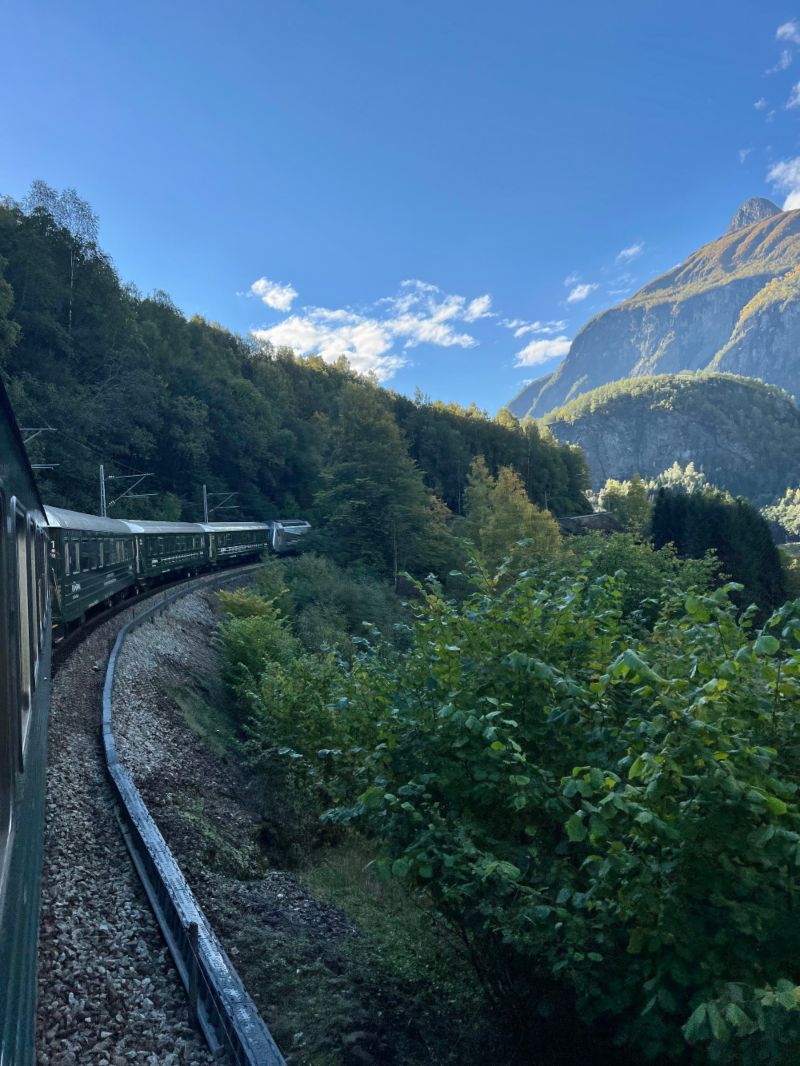
Travelling Norway by car
Many people decide to rent a car in Norway and getting around that way. Renting your own car is a great way to explore the country, as it will allow you to take things at your own pace and set your own itinerary.
There are also so many great places to stop on a road trip in Norway .
Most car rentals are found near the major airports, and so it’s quite common to rent your car where you first arrive in Norway.
IMPORTANT TIPS FOR RENTING A CAR IN NORWAY
I’m sorry to have to caps lock that heading, but this is important. If you are renting a car in Norway and driving yourself, please read my advice very carefully.
- Do not use the emergency blinkers for anything other an emergency. In Norway drivers are legally required to stop for vehicles with their emergency lights on, and you can only imagine the amount of times I’ve stopped and worriedly ask someone of they are okay, only to have them smile and hold up their camera and tell me that “they were only taking photos”. The emergency light does not allow you to stop in the middle of the road or in someone’s driveway. Please drive safely and keep this in mind.
- Do not drive slower than 10km/h below the speed limit. It fucking kills to be stuck behind an idiot who is too busy taking photos of the mountain to look at the road. Now before you call me insensitive, I’ve been there and I know how it feels to be insecure of the roads and not comfortable to drive faster. But that’s when I pull over and let other cars past. So please, if you are not comfortable following the speed limits, or you want to take in the scenery as you drive, please pull over whenever you can to let people past . Too many accidents are caused by a mix of insecure tourists and impatient locals.
- Calculate for extra time , no matter where you are going. The Norwegian roads, especially by the fjords, are narrow, windy, and often end in a ferry port to get you to the other side of the fjord. On our more popular tourist routes, such as the Snow Road (Aurlandsvegen) to the Stegastein Viewpoint, there are several hairpin turns to get through before you’re at the top, and most areas of the road only have space for one car at the time. Then think of the hundreds of other drivers you’ll be meeting on these narrow roads and plan accordingly.
- Don’t overestimate yourself or be cocky. i’m sure you’re the man and have a big car back home, but these roads can be insane. It’s not uncommon for locals to to have to get out of their cars in order to help visitors reverse theirs.
Excuse my French above, but I’ve seen too many near-accidents (and actually fatal accidents) caused by people who don’t follow these tips.
Travelling Norway by bus
There are several major bus companies with routes crossing Norway in this or that direction. Personally, I prefer travelling by bus over train, and love to get comfortable in my seat and watching the houses and farms fly by outside the window.
The major bus companies to note in Norway, and to check if you are planning on travelling by bus in Norway are;
- VyBuss (formerly Nettbuss)
- Nor-Way Bussekspress
Travelling Norway by train
This one doesn’t require a lot of explaining, because there is only one major train company in Norway; Vy. It’s government funded, and so it is basically the national rail company. Super simple. All train tickets in Norway can be booked on their website , with few exceptions.
One of those exceptions is that SJ, a Swedish company, is currently operating certain train lines in eastern Norway. However, tickets are still sold by Vy on their website, so as a visitor you won’t really notice the difference.
As mentioned above, NSB and Nettbuss announced in early 2019 that they will be rebranding into a new company called Vy (and old Norwegian word for ‘view’). So, if you see either names or logos anywhere when traveling, you’ll know why.
Some train routes are owned by private companies, mainly when the purpose of the train is tourism and it’s considered a ‘tour’, and not simply transportation.
The Flåm Railway is a perfect example of this, all though Vy does own a percentage of it and will sell one way tickets to the Flåm Railway on their website.
Tipping in Norway
Out of all the Norway travel tips I’m ask ed to share, how tipping in Norway works is a big one.
Tipping in Oslo is a little different from tipping in Norway generally, so I’ve split them up below in order to make it easier for you.
This is mainly because Oslo is a major city with more international influences than the rest of the country. Bear in mind, however, that some of the Oslo tipping guidelines can be used in most of the other major cities in Norway as well, such as Bergen, Trondheim or Stavanger.
It’s worth noting that Norwegians generally do not tip when they are out in Norway , but with the influx of tourism the country has had in the past few years it has become more and more common to expect a tip from visitors.
Especially if you are American, as Norwegians are well aware of the American tipping culture. Sorry about that, but at least you’re warned.
Please note that these are guidelines only , and that you should always tip what you are comfortable with. However, I hope this little tipping in Norway guide makes it a little easier for you to decide.
Tipping in Oslo
As mentioned, tipping is not very common practice for Norwegians, other than rounding up the bill to not have to carry change. As a tourist, however, it is more common to round up the bill at restaurants in Oslo to the nearest 100 NOK. This is about the extent of the tipping practices in Oslo.
Norway is a very expensive country, and so the wages of employees are quite high to match, including waiters and bartenders. So don’t feel responsible for paying their ways, as they are more than fine on their own.
But, like I said above, due to the many tourists visiting Oslo, tipping in restaurants has become more common practice. Simply round up to the nearest 100 NOK if the meal is more than 500 NOK (or the nearest 50 NOK if it’s below).
It is not common to tip taxi drivers or hotel staff when it comes to tipping in Norway. The exception is private drivers or tour guides that you have hired yourself.
Tipping in the rest of Norway
It’s not necessary to tip, and in many places they’ll follow you to let you know that you forgot your change. If you got outstanding service, feel free to leave a tip, as it will be appreciated. It’s just not necessary.
Personally, I worked as a waitress for a couple of summers by the fjords, and was incredibly glad when customers were happy enough to tip me, all though the 50 kroner they left wasn’t even a third of my hourly pay.
But still, I saved all my tip money and bought return tickets to New York at the end of summer! Score.
Frequently Asked Questions (FAQ) about Norway
Still have questions about Norway? Well, keep reading. I have answered some commonly asked questions about Norway and travelling to Norway below. If you have a question that’s missing; leave it in the comments!
Surprisingly enough, this is quite a common question and shows up rather often on the list of Googled questions about Norway. If you are one of the people who made it to this post by searching ‘Where is Norway?’, then you’ll want to read this. Norway is a country located in Northern Europe, and borders Sweden along most of its borders, and Finland and Russia in the North. It is surrounded by water on 3 sides, and (you guessed it) Sweden on the 4th. If you are looking at a map of Europe and want to find Norway, just go as far North as you can on the map. If you hit Svalbard or Greenland, you’ve gone too far (all though Svalbard is actually a part of Norway, so you wouldn’t be wrong). Heading to Finland or stopping over in Helsinki? Don’t miss my guide to one day in Helsinki !
The largest city in Norway is the capital, Oslo. The second largest city in Norway is Bergen, which also used to be the capital, back when it had its original name; Bjørgvin. Heading to Oslo? Don’t miss this guide!
This has been answered in detail earlier on in the post, but if you’ve simply scrolled down to the FAQ, I’ll give you a brief answer. Each of the seasons have their charm, and I believe there is no right or wrong time to visit Norway. Personally, however, I think the best time to visit Norway is the autumn, due to the beautiful colours, and the fact that there are less people in the shoulder season. I am also an advocate for visiting Norway in the winter. Head this way for a month by month breakdown of the best time to visit Norway.
The highest mountain in Norway is Galdhøpiggen. Fun fact : it is not only the highest mountain in Norway, but also in Scandinavia and Northern Europe, with its 2469 metres above sea level. You’ll find it in the mountain range Jotunheimen, which has inspired many a song and fairytale. You may remember the ‘Jotuns’ that Thor and Loki fought in one of the Thor movies? They are the troll creatures said to inhabit Jotunheimen.
I am loving these questions! And well done for wanting to figure this out before your trip. You have no idea the amount of people that come to the fjord wondering what the hell they are there for. Norway is famous for its stunning nature, which is quite unique due to its fjord landscape. A fjord is a narrow inlet of water deep into the country, often with steep mountains surrounding it. The word ‘fjord’ is Norwegian, and used in the English language as well. If you scroll up to one of the earlier sections of this post, you’ll find a nifty little guide to how you can use the word in a sentence. Norway is also known for its expensive beer, beautiful people and for winning the Eurovision Song Contest in 2009. We also hosted the Winter Olympics in 1994. But, as mentioned, its the breathtaking nature of Norway that draws the most people, and is what Norway is famous for. Oh, and the Northern Lights.
Final Norway Travel Tips
You’ve almost made it to the end, my friend! Now that you have finished the guide, I hope you are feeling better equipped to visit Norway! It’s such a beautiful country, and one that should be on your list.
My final, and most important, tip for anyone travelling to Norway is make sure to stop and take it all in as often as you can during your trip.
The fjords are incredible, and the Northern Lights are nothing short of spectacular. On your trip to Norway you’ll see nature like you’ve never seen before, so please don’t miss it.
All My Norway travel guides
Below you will find every single post, guide and article I have written on visiting Norway! I add to this list every time I publish a new post, and hope you will find it helpful.
- eBook: Flåm and the fjords – Travel guide written by yours truly!
- Easy-to-follow Norway Itineraries (for Oslo, Bergen, the fjords, Lofoten and more)
- How to get from Bergen Airport to the city centre
- 18 Things you’ll only understand if you grew up in Norway
- The Ultimate Norway Winter Packing List
- 23 reasons (with photo proof) you need to visit Lofoten (in winter)
- The best time to see the Northern Lights in Norway
- How to photograph the Northern Lights using a GoPro
- 30+ fun things to do in Oslo
- Things to do in Stavanger + List of Stavanger restaurants
- Guide to spending a weekend by the fjords
- The best hikes in Norway
- Visiting Oslo on a budget
- Visiting the fjords in the Winter
- The best hotels in Oslo
- A guide to the Vigeland Sculpture Park, Oslo
- Things to consider when visiting Norway
- Visiting the Norwegian Palace in Oslo
- How to be a tourist in Norway
- A free Oslo activity: The Akerselva walk
- Hilarious Norwegian Christmas Traditions & How we Celebrate Christmas in Norway
- How to travel from Bergen to Flåm
- How to travel from Oslo to Flåm
- How to book the Norway in a Nutshell tour on your own
- A complete list of hotels in Flåm (and nearby)
- The 13 Most Beautiful Places in Norway , as told by travellers who have been there
- Fun and sustainable experiences in Aurland, Norway
- 8 great Bergen tours (including self-guided, Segway tours, and trips to the fjords!)
- 44 Things to do in Bergen
- 10 ridiculous questions asked by tourists in Norway
- Where to stop on a road trip in Norway
- A guide to the famous Flåm Zipline (+ video)
- A guide to visiting Stegastein Viewpoint, Aurland
- 25 Nordic Sweaters You’ll Love (for your trip to Scandinavia)!
- How to plan a trip to Norway (Step-by-step guide)
- The ultimate guide to hiking Pulpit Rock
- Guide to hiking Ulriken, Bergen
- The best time to visit Norway (month-by-month breakdown)
- A guide to the 5 best fjords in Norway
- The Perfect 10 Day Norway Itinerary
- The Best Restaurants in Bergen
- 17 Great things to do in Olden, Norway
- What is Norway famous for?
- Epic Things to do in Alta, Norway
- The 5 Best Northern Lights Tours in Tromsø
- 21 Unique Things to do in Tromsø
- The 5 Best Fjord Cruises from Bergen
- The 10 best cafes in Bergen
- The 5 Best Dog Sledding Tours in Tromsø
- The Best Beaches in Norway
- Nordic Symbols and their meanings
Thank you so much for reading my Norway travel guide! Was anything missing? Do you still have questions about visiting Norway? Leave them in the comments so I can answer you and add it to the blog post for the future!
14 Unmissable Cancun Day Trips You’ll Love!
What is norway famous for [why visit norway], you may also like, 5 norwegian tv shows you’ll love, what is the best time to see the..., 5 best tromso northern lights tours [+ your..., cyprus wine guide (including must-visit cyprus wineries), norwegian christmas food: traditional dishes for the holidays, visiting norway for christmas: 5 things you must..., the 5 best tromso dog sledding tours (by..., 16 (hilarious) norwegian christmas traditions and how we..., 10 best restaurants in bergen, norway [a local’s..., punta cana vs cancun: which destination is best....
[…] The Ultimate Guide to Visiting Norway […]
[…] note: In this guide I cover how to use the word ‘fjord’ in a sentence, to prevent you from being one of the […]
[…] In other news, my massive (like, huge) Norway travel guide is live and yours for the reading! Head this way to read everything you need to know before your trip to Norway! […]
[…] for more info on Norway? This Norway Travel Guide has everything you need to know before you […]
[…] Read my complete travel guide to visiting Norway here! […]
[…] my village Aurland (and Flåm), I have a feeling you’ll enjoy this. You may also enjoy this guide to Norway that I wrote, with absolutely everything I could think of that you might need before your […]
[…] for your trip to Norway? This post is my complete travel guide to visiting, and has everything you need in order to plan your […]
… [Trackback]
[…] Find More Informations here: fjordsandbeaches.com/norway-travel-guide/ […]
[…] There are other day trips from Bergen you can do as well. And after you explore Bergen, if you are looking for other places to visit in Norway, check out this comprehensive Norway travel guide! […]
Leave a Comment
Save my name, email, and website in this browser for the next time I comment.


The Ultimate Norway Travel Guide: What to See + Insider Tips for Your Trip
Planning a trip to Norway? You’ll love it. From the best time to visit to unmissable places to see and insider tips – here’s your step-by-step Norway travel guide.
It’s probably a bit unfair to outrightly declare a country the most beautiful in the world, but Norway would certainly be a top contender. Its otherworldly landscapes of deep fjords, rugged coastline, majestic glaciers and jagged mountain ridges make for a stunning adventure .
Throw in the picturesque fisherman huts and the colourful Northern Lights that dance around the skies and you have one hell of a country to explore.
It’s certainly not cheap and, in summer, its popularity makes for some serious crowds around the main areas in the south, but there is still so much of the country that will invoke a sense of true remoteness and of reaching the far corners of this planet.
It’s a once-in-a-lifetime sort of trip.
PS: Planning your trip to Norway? Watch this video packed with tips!
Watch on YouTube
How to plan a trip to norway: before you go, best time to visit .
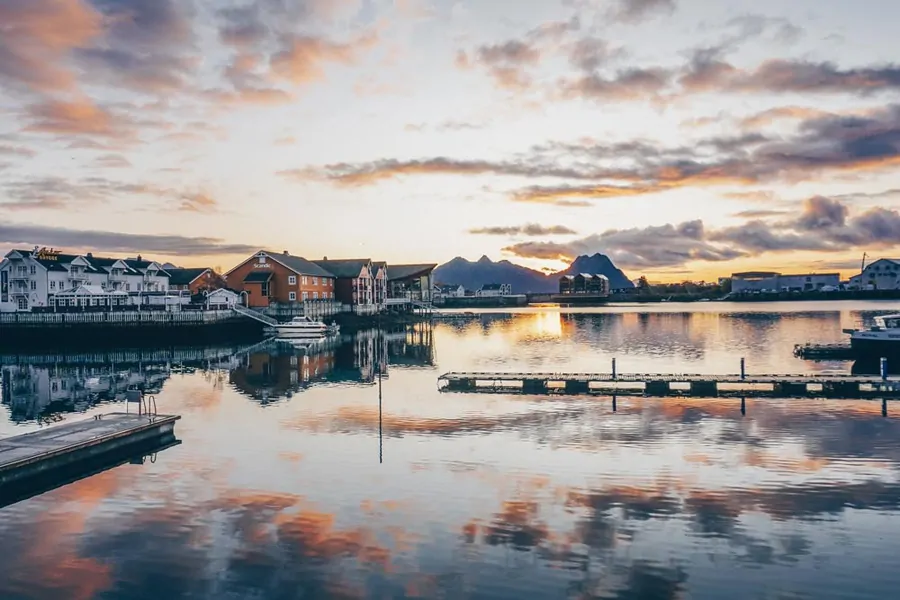
High season in Norway is during summer between June and August, when domestic tourists tend to take holidays along with most other Europeans.
During this time, the days are long and it’s ideal for hiking, cycling and cruising, although there’s no guarantee of much warmth. Accommodation and transport like trains are especially busy in summer and it’s hard to secure places and tickets on short notice.
The best time to visit Norway is in the shoulder season, particularly the months either side of summer. May and September offer mild temperatures but far fewer crowds than in summer.
Although winter is traditionally considered low season, because of the bitterly cold weather, it’s not technically a terrible time to visit. If you dress properly and come prepared for the cold then Norway is a true winter wonderland. For cross country skiing and other winter sports, this is the best time to visit Norway.
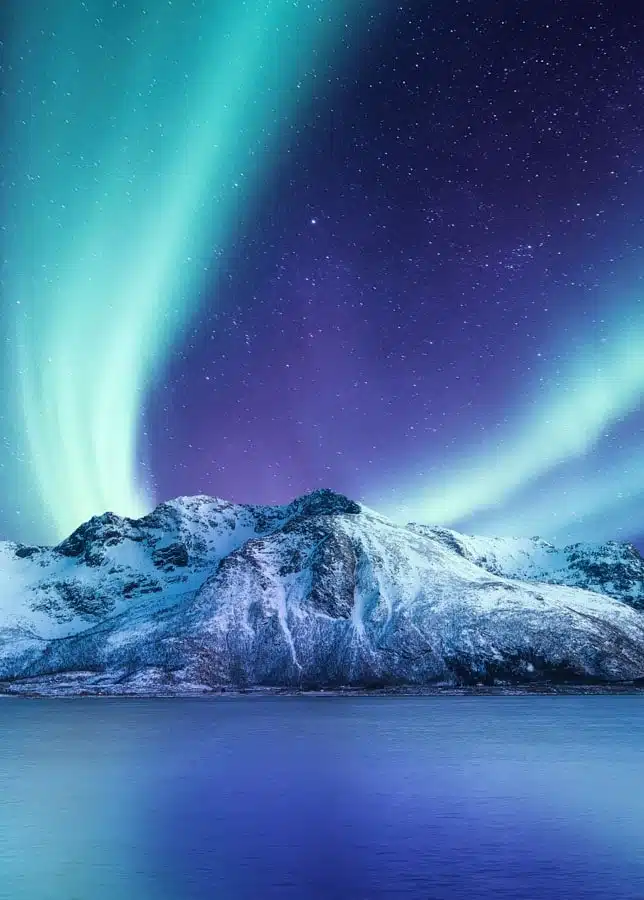
The Northern Lights, one of the country’s biggest drawcards, dances around the sky from September onwards and tends to peak over winter between December and February. Want in on the action? Check out my guide to stunning Northern Lights Hotels in Norway .
Handy Resources for Getting To Norway
To help plan your trip to Norway, these resources and websites will help you with logistics and for getting decent prices.
- Skyscanner is one of the best flight resources for comparing prices. You can also search for an entire month to see when the cheapest dates are to fly for a particular city or country.
- Look into travel passes like Travelpass Nordland which offer multi day passes on different types of transport and their app also has a handy travel planner with transport information so you can plan ahead
- Maps.Me is a mapping app that allows you to download for offline use and is one of the best all round navigation apps for any country. You can also pin locations, allowing you to plan where you want to go and what you want to see. For hiking it’s also a good safety mechanism as most trails are marked on the app and the GPS means you can check where you are, if you think you might be lost
- Booking an all-inclusive tour with companies like Intrepid Travel or G Adventures eliminates many of the hassles of trip planning and logistical challenges. However, it also reduces some of your freedom and last-minute ability to change plans
- For day trips, using Get Your Guide is the best way to find high-quality tours with reputable companies. There are hundreds of options in Norway on there, from fjord cruises to foodie tours.
Where to Stay
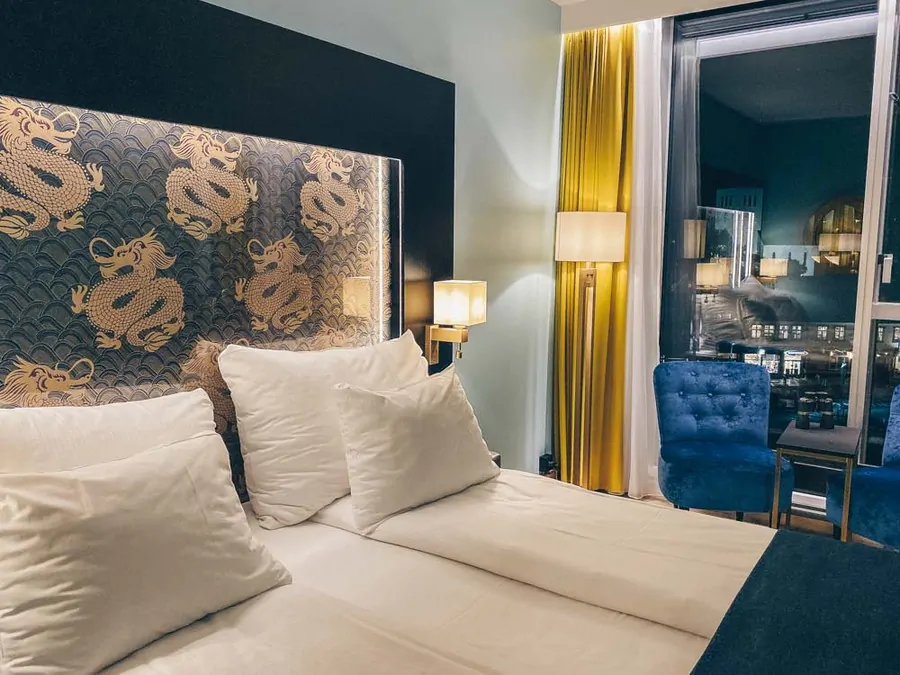
Hotels and hostels are of quite a high standard in Norway, although they’re also likely to take up a huge chunk of your budget. The country’s HI Hostels which is run by the Norwegian hostelling association are the budget traveller’s mainstay and can be booked through their website. Otherwise, Booking.com is where you can compare and book hotel accommodation in advance.
Cabins dot the Norwegian landscape in their thousands and are often referred to as hytter or rorbuer or wooden cabins. They are usually self-catering affairs with a couple of bedrooms. They are always found around campgrounds and they are the most popular choice of accommodation on the Lofoten islands. You can often rent a hytter starting from around 800kr per night.
Camping is a popular choice for both locals and foreign visitors and there are literally hundreds of campgrounds ranging from basic tent sites to complex setups with first-class facilities. You can expect to pay around 300kr for two people and a tent with a car.
Packing for Your Norway Trip
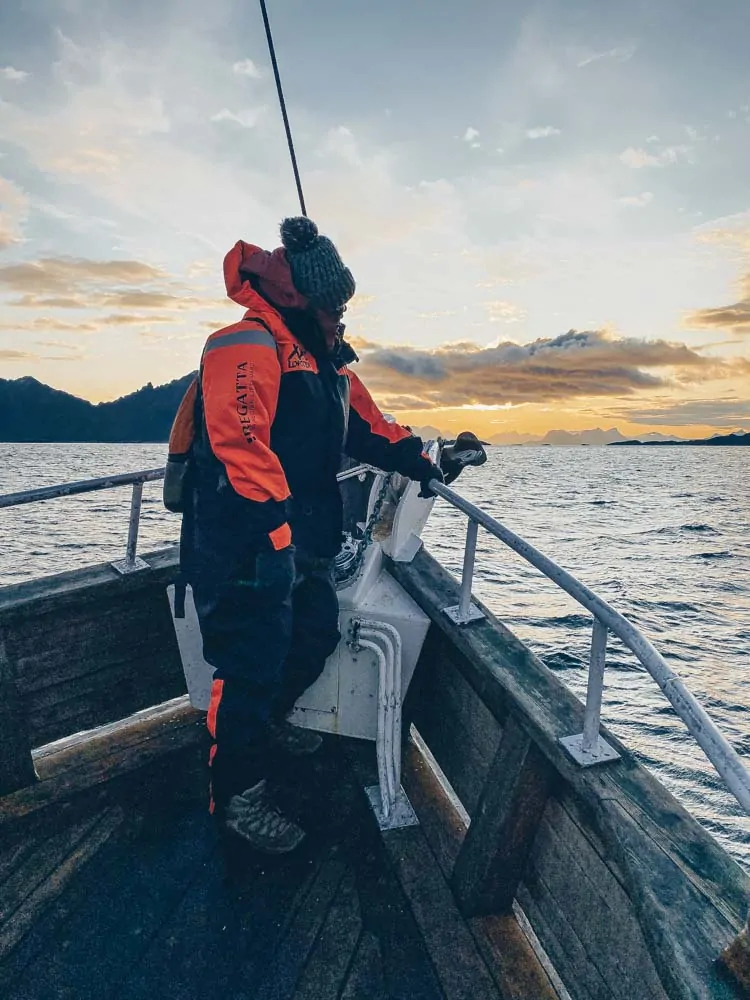
Let’s be honest, no matter what time of year you decide to go, the most important item to pack will be a warm coat or down jacket. The weather in Norway is notoriously unpredictable and even in summer you can face all four seasons in one day.
The best way to pack for your trip is to think about layers. That way you can be prepared for whatever weather you encounter.
Other than a warm jacket, a weatherproof or rain jacket is also a good addition, especially if you plan on hiking or getting outdoors. A good pair of walking shoes or insulated hiking boots are also good footwear options if you plan on heading anywhere remote or doing any outdoor activities.
Surprisingly, sunscreen is also a must pack for Norway. The air is often so cold that you don’t feel that you’re burning, but the sun is extremely strong at any time of year.
Travel Insurance
It’s important to arrange travel insurance before you depart for your trip. If you pay for full comprehensive cover, it should protect you from illness, injury, theft and cancellations.
If you plan on doing any extreme or winter sports like skiing, you may need to check if your insurance will cover you, as generally this may require an additional payment.
The same goes for hiring a car. Check that your personal insurance will cover you for any injuries obtained while driving and whether there is an additional cost.
Suggested Guidebooks

The best guidebooks for travelling in Norway are Lonely Planet Norway and The Rough Guide to Norway . Both are considered the best in the guidebook game and can help plan your trip.
There are also e-book versions available if you prefer not to lug a heavy guidebook around with you.
Norway Visitor Guide: What to Do During Your Norway Trip
Top 10 things to do in norway , explore the capital, oslo.
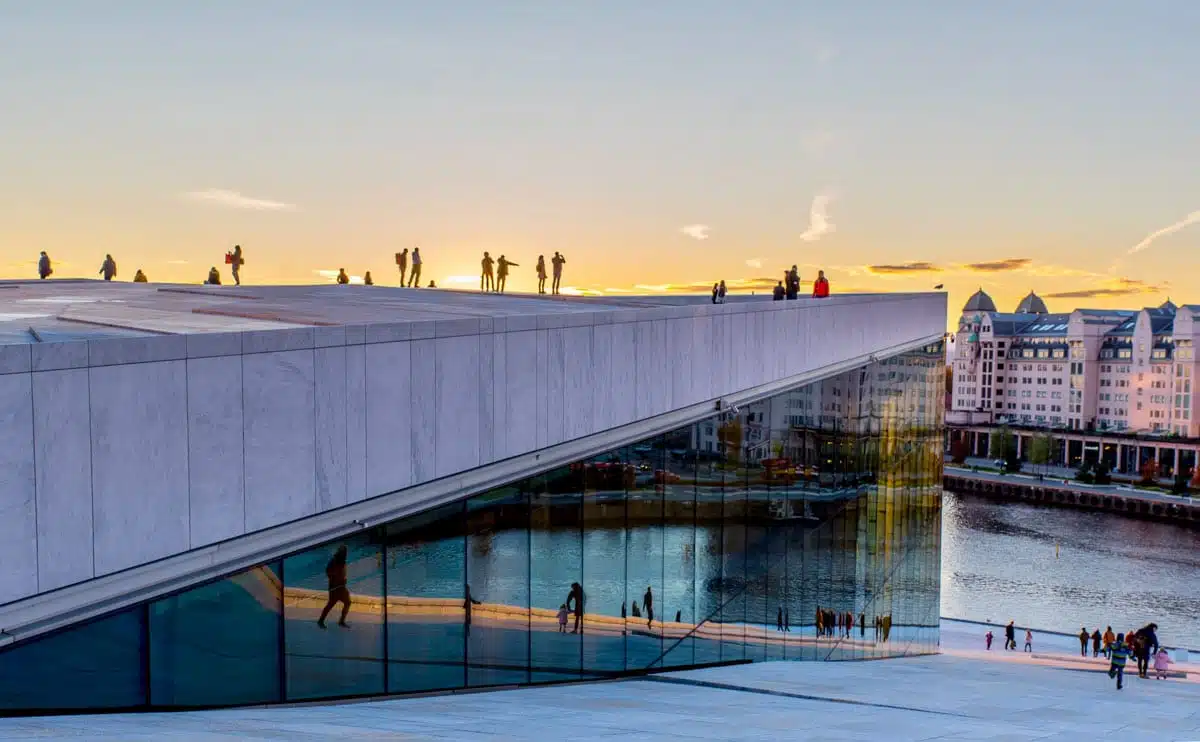
One of the most exciting cities in Europe, it has a growing music scene, modern architecture, wide bike lanes, some of the best baristas in the world and the northernmost three-star Michelin restaurant.
But that’s not all. A nearby island filled with some of the coolest museums in Europe, a Royal Palace and the epic Nobel Peace Center are a few more reasons you need to visit. And don’t get me started on the pastry scene.
Take the Train from Oslo to Bergen
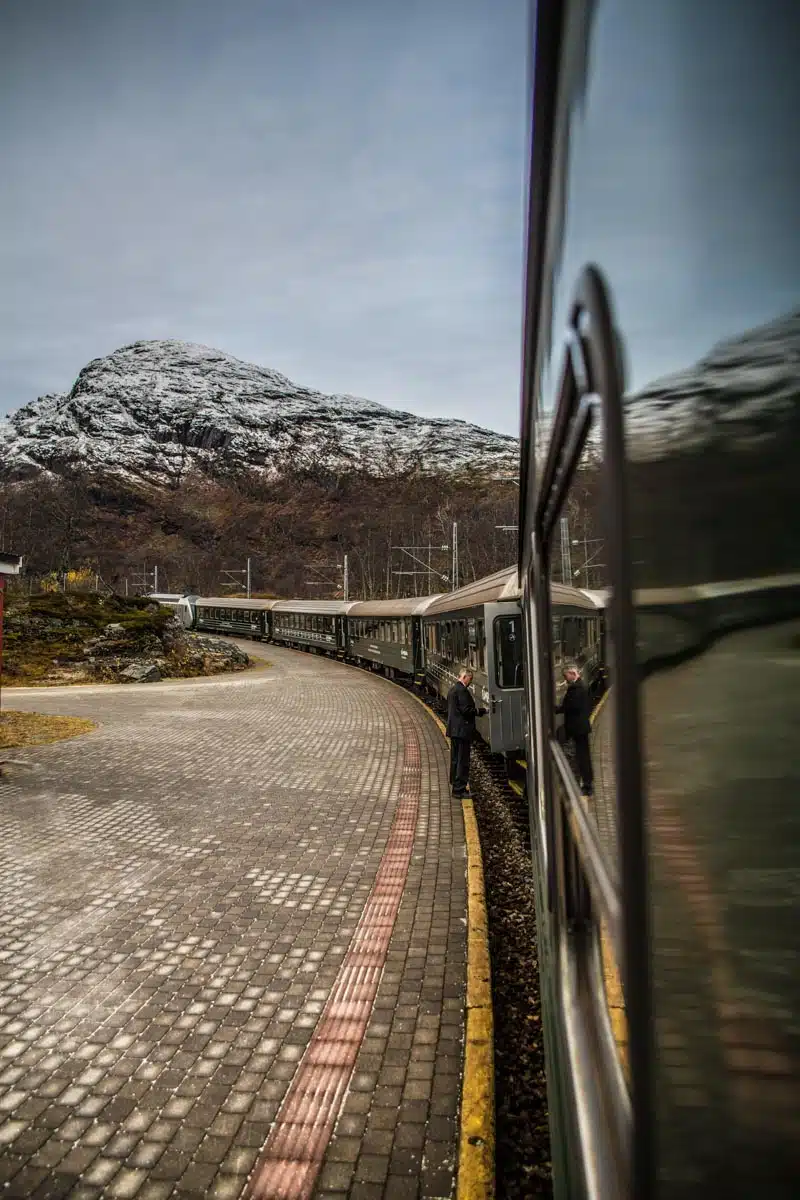
An incredibly beautiful train journey through some of the country’s best scenery, you’ll be astonished at the feat of engineering it would have taken to build such a rail line.
Wander Through the Streets of Bergen
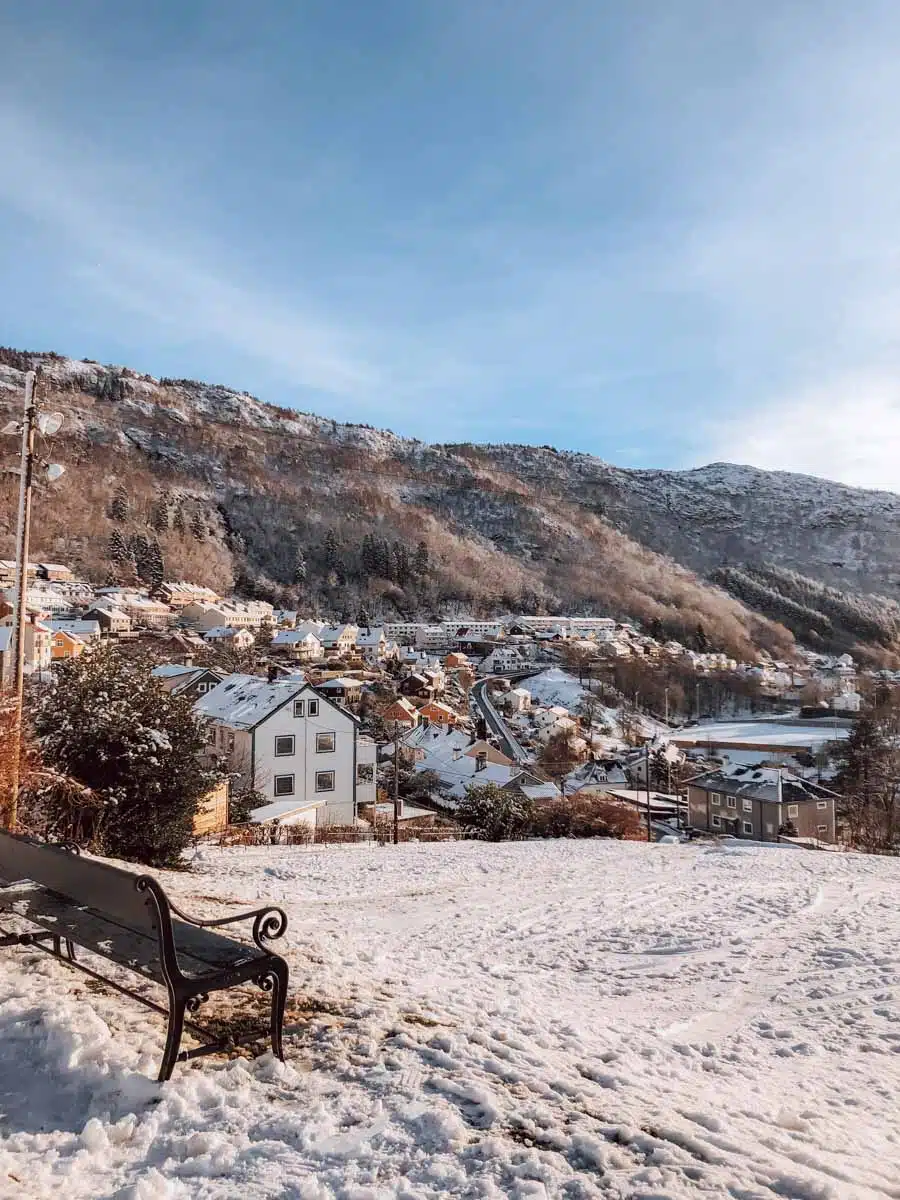
The medieval wharf of Bergen is UNESCO listed and the beautiful old buildings with fairytale-like houses and bustling art galleries makes this city especially enchanting.
Take a wander through Bryggen, the wharf area of the city, before heading up on the Fløibanen funicular to the top of Mount Fløyen. From here, marvel at the city below you.
See the Northern Lights from the Lofoten Islands
If seeing the Northern Lights isn’t on your Norwegian bucket list, I don’t know what to say…
Scattered with traditional villages against a mountainous backdrop, Lofoten is one of the country’s biggest drawcards. It’s also one of the best places to see the Northern Lights .
Visit the Gateway to Norway’s North, Tromso
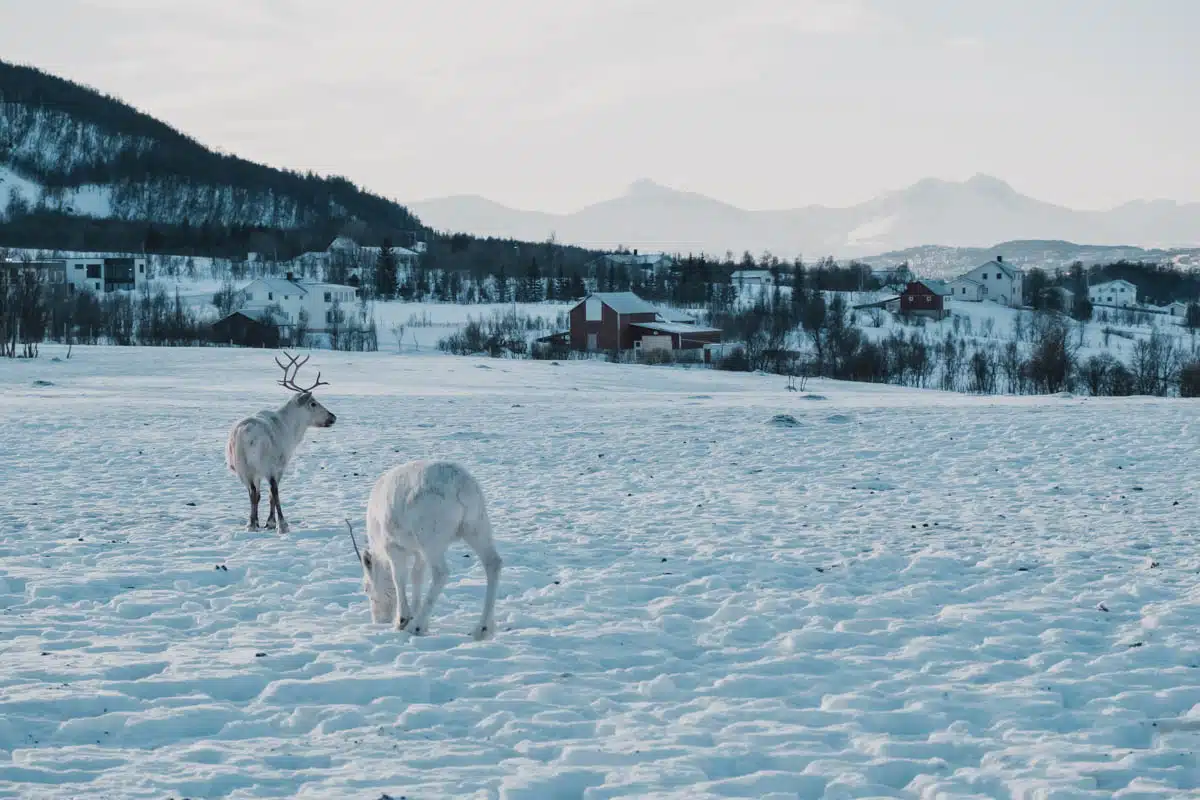
The largest city in the far north and often referred to as the capital of the Arctic, from this city you can admire fjords, whales, the midnight sun and take a tour to see the northern lights without having to travel too far from the centre. Many people decide to try dog sledding in Tromso too.
Road Trip the Kystriksveien Coastal Route
This stunning road trip along the coast is often described as one of the most beautiful drives in the world, passing every sort of landscape you can possibly imagine
Experience Extremities in Svalbard
What happens if you mix an icy haven with one of the world’s toughest terrains and plenty to see and do – including an ex-soviet ghost town? Svalbard, of course.
A huge group of islands in the northernmost part of Europe takes extremes to the next level, with 60% of the area covered in glaciers and an array of Arctic wildlife you’ll likely never see anywhere else, such as polar bears which outnumber people there.
Hike to Pulpit Rock near Stavanger
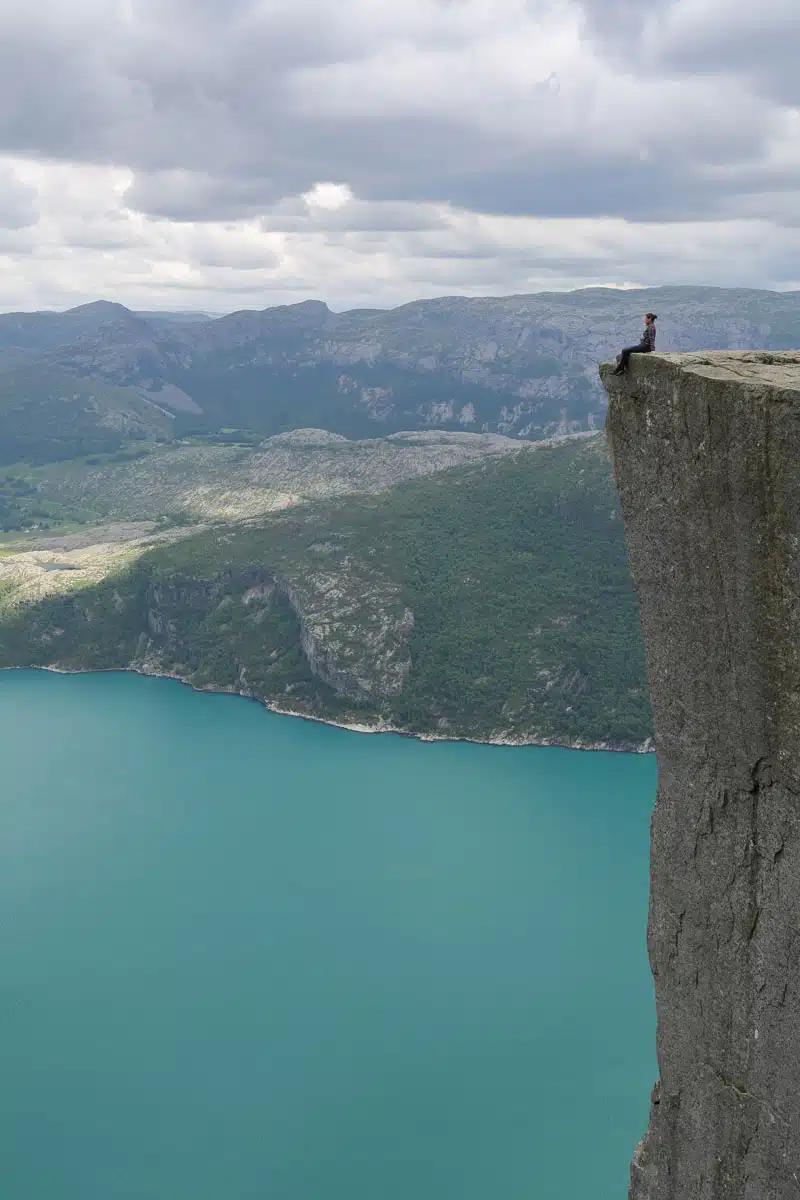
The now-insta famous lookout at Pulpit Rock is crowded with people in summer, but you can’t deny that the two hour hike up to this spectacular viewpoint is worth it.
Despite what you might think, this hike is actually pretty easy. Though it does get chilly – wrap up warm or you might just end up very very angry (and cold)
Take a Ferry Along Geirangerfjord
Frequently considered as one of the world’s top natural attractions and best ferry rides, you can admire the waterfalls running down steep mountains and the bright blue water of this incredible place.
Spend Time in Lively Trondheim
The country’s third-largest city has colourful wooden buildings with plenty of cool cafes and food markets and festivals frequently bringing the streets to life.
There’s much to see and do in Trondheim, but a couple of unmissable spots are the historic Kristiansten Fortress, which sits on a hill overlooking the city. As well as this, the adorable streets of Bakklandet are home to well-preserved wooden buildings and cosy cafés. people-watching opportunities for daysss.
Suggested Norway Trip Itineraries
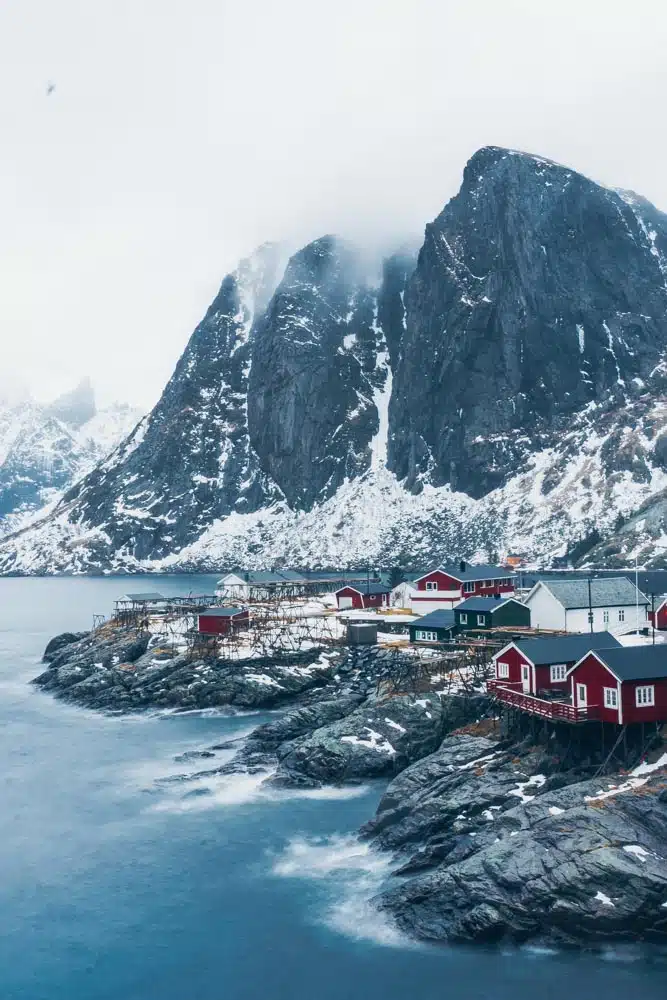
In Northern Norway you can experience the best of the Arctic and experience things you can’t see in many other places in the world. For a truly unique trip follow this two week itinerary north:
Oslo – Trondheim – Bodo (northernmost stop on the train line) – Narvik – Tromso – Alta – back to Tromso – Lofoten Islands – ferry to Bodo – back to Oslo
If you have plenty of time and want to see as much of the country as you can, here’s an itinerary for catching all of the highlights of Norway, possible by using a combination of train, bus, flights and rental car if you are happy with driving in Norway . It would take around three weeks to complete.
Oslo – train to Bergen – Stavanger – Geirunger for a ferry through the fjord – Trondheim – take the Kystriksveien Coastal road trip – Bodo – Narvik – Tromso – Lofoten Islands – back to Oslo
How to See the Best of Norway for Free
Norway is known as an extremely expensive country to travel in and so seeing as much of the country for free as possible is certainly ideal. Here are some tips on how you can get things for free in Norway.
Couchsurfing is a great way to explore Norway for free. You can basically stay or ‘crash’ at someone’s place and create meaningful interactions with the locals and your host at the same time. In the larger cities like Oslo and Bergen, it will not be difficult to find a host for the night. However, in the smaller towns and more remote areas you may have to plan and reach out to a host in advance.
Wild camping is also a great way to not only stay for free but also experience some of the best of Norway’s landscapes. If you come prepared with proper camping gear and warm clothing, wild camping is allowed in most outdoor places. You only have to respect basic rules like, leave no trace, do not pitch on private property and keep away from any buildings.
Hitchhiking is also a popular way of getting around and is quite common, especially in the southern half of the country where roads are busy enough. Although there are certain risks with hitchhiking, especially if you travel solo, you’ll find other travellers also hitching a ride in order to reduce the cost of transport. Just listen to your gut instincts.
Dishes to Try in Norway
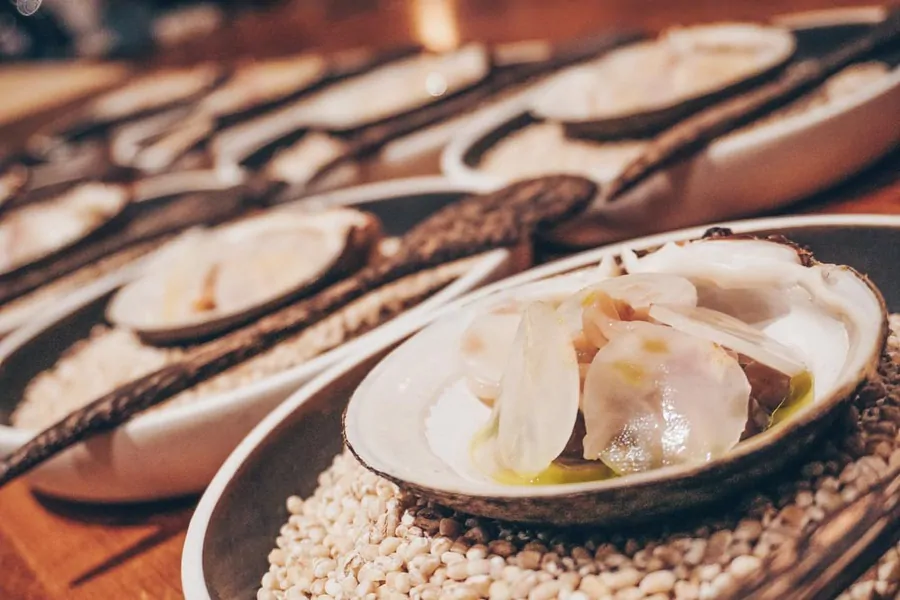
- Reindeer – usually roasted, it’s one of the main dishes non-vegetarian tourists like to try at least once on their visit to Norway
- Cheese – Norway’s cheese has been made internationally recognised by Jarlsberg, first made in 1860 and you can find it in most tourist-oriented restaurants
- Stockfish – unsalted cod dried in Norway’s cold air on wooden racks is one of the country’s longest sustained export commodities
- Fish is generally considered a food staple in Norway and is eaten three or four times a week. Salmon is particularly popular and surprisingly, relatively cheap compared to other dishes
Top Drinks in Norway
- Aquavit – considered the national drink, this is a potent distilled spirit made from potatoes and flavoured with a variety of herbs and spices such as fennel, cumin or cardamom
- Glogg – the traditional Scandinavian mulled wine adds aquavit to red wine simmered with cloves and cinnamon
- Mead – also known as honey wine, is a fermented drink made from honey, it’s considered a traditional Viking drink
Norway Travel Guide: Things to Know Before You Go to Norway
Tips for travelling to norway.
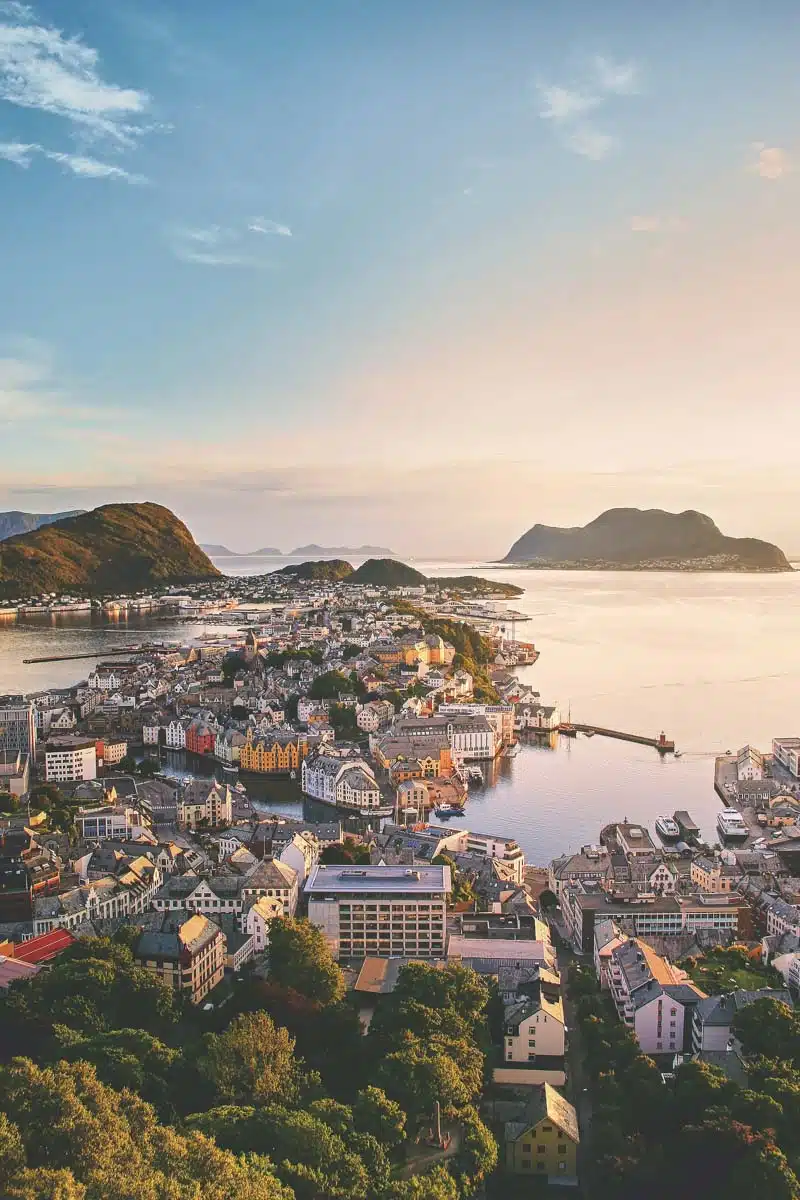
- Consider the month you are travelling around Norway and research how much daylight there is and what the weather will be like because this will not only influence what clothes to pack but also whether certain roads will be blocked or certain experiences like seeing the Northern Lights will be possible
- Book train tickets and accommodation in advance for cheaper deals, particularly if you are travelling in summer when things book out weeks in advance
- You can get a local SIM card for your phone that should cost around 100kr and cover about 80% of the country, which is pretty remarkable considering how remote a lot of the towns are
Tipping In Norway
Tipping is by no means compulsory in Norway, but it is customary for Norwegians to leave a tip of about 10-20% in a restaurant or bar if the service was good. It’s uncommon to tip outside of the hospitality industry so don’t feel obliged to tip taxi drivers or hotel staff.
Interesting Facts
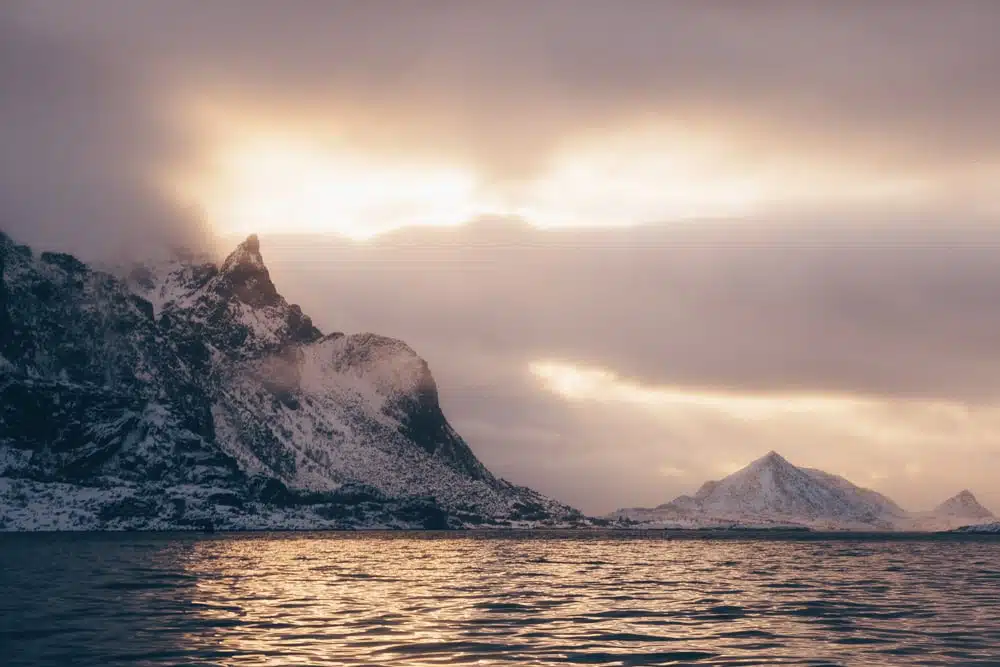
- Around half of the population live around Oslo, in the far south of the country
- Two-thirds of the country is mountainous
- Off Norway’s coastline lies around 50, 000 islands amongst the fjords and glaciers
- The Norwegian economy is largely dependent on the petroleum industry
- Norway has one of the lowest population densities in Europe
Handy Phrases for Travelling to Norway
Most people in Norway speak almost fluent English and will not expect a foreign traveller to learn any Norwegian words. However, if you want to try and learn some basics, here’s some phrases to keep handy.
Takk – Thank You
Hallo – Hello
Ha det – Goodbye
Vær så snill – Please
Hvor er…? – Where is…?
En billet til… – One ticket to…
Jernbanestasjon – Train station
Busstasjon – Bus ststaion
Flypass – Airport
Hvor mye koster billetten? – How much is the fare?
Time Zones
Norway is situated in the Central European Standard Time (CEST) or Central European Time (CET), depending on daylight savings. Daylight savings applies in Norway, like many other European countries and clocks are set one hour forward at the end of March and one hour back at the end of October.
Electricity + Adapters
Norway uses the common plugs in other European countries, Type C and F, which has two round prongs. Most Scandinavian electricity outlets use 220 volts.
There is a relatively low health risk associated with travelling to Norway, with rates of disease and illness at a similar rate to other European countries.
Tap water is also completely safe to drink and of a high quality, so you don’t need to worry about buying plastic bottles or filtering your water.
Still, regular vaccines are recommended such as Hepatitis A and B, polio, measles, mumps and rubella (MMR), tetanus, typhoid, pneumonia and influenza. However, there are no required vaccines that will affect your entry into the country.
There is a relatively well-connected and reliable public transport system in Norway, linked by buses, trains and ferries.
However, outside of the southern cities, places are few and far between and towns are sprawled outwards for kilometres. This means that renting a car is the preferred mode of transport for travellers wanting to get deep into Norway’s far north, although this is not exactly the cheapest way to go.
Car rental for a week can start at 3500kr, although you can often get deals for a weekend rental or in the quieter months.
The major highways are well taken care of and generally open all year round, although you’ll find many of the smaller roads in the north will close for months over winter.
The national railway has lines connecting Oslo to Stavanger in the southwest, Oslo to Bergen in the west and Oslo to Trondheim and onto Bodo in the north. Many of the train rides start at 800kr for a standard fare ticket, although this will change depending on how early you book and what class you want.
Train travel in Norway is most popular for those wanting a comfortable journey between the major cities.
Buses reach almost every corner of the country, with the main long-distance company being Nor-Way Bussekspress. Prices are much more reasonable than the trains and can often be bought on the bus on the day, although it’s possible to secure a seat in advance if you’d prefer.
Taking a ferry is almost a highlight of any trip to Norway and around the Lofoten Islands they are almost impossible to avoid. They are usually both for passengers and vehicles and operate on a first-come, first-served basis.
There are also more speedy and comfortable boat trips and cruises that operate for multiple days along the coast with cabins and restaurants on board.
There are some relatively cheap internal flights that you can score which can save you time spent on buses and trains.
From Oslo to Trondheim you can expect to pay around 650kr, for example. This only means that you will miss out on some of the fabulous scenery along the way.
Check flights on Skyscanner
Norway is one of the safest countries in the world and its crime rates are extremely low. However, in the major cities you should still be wary of your belongings and valuables, as you should be in most other countries.
If you practice basic common sense and personal awareness, you shouldn’t have any problems travelling around Norway.
Costs and Budgeting for a Norway Trip
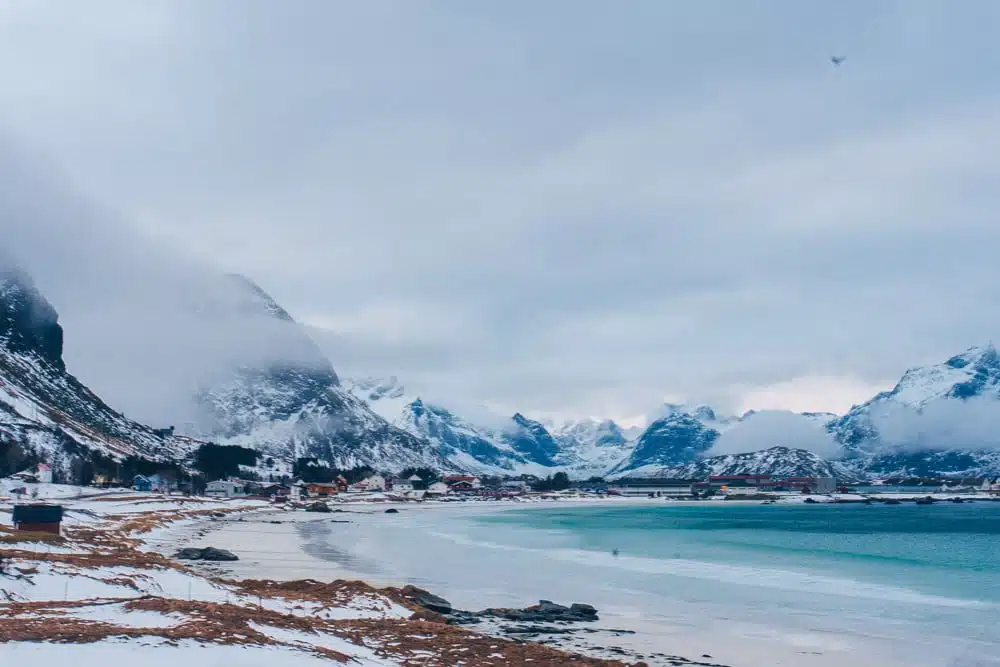
Here’s the bad news – Norway is one of the most expensive countries in Europe. Your budget will need to be much greater and more flexible than perhaps travelling to most other countries.
However, in saying that, there are ways of cutting costs like getting a multi-day transport pass, giving up alcohol for the duration of your trip and self-catering your meals.
A budget traveller who has a picnic lunch and stays in cheap hostels or hotels could look at spending around 800kr per day. For slightly more comfort, like staying in 3 star hotels and eating out for meals, you could spend around 1500kr per day.
Read More Norway Travel Guides
- A Guide to the Lofoten Islands Norway: Brilliant Things to Do + Travel Tips
A Snowy Sami Reindeer Experience in Tromso, Norway
Norway in winter: why it’s worth visiting.
- Best Time and Places to See the Northern Lights in Norway
- A Food-Lover’s Guide to the Lofoten Islands: A Culinary Adventure in Norway’s Arctic Circle
Love This? Save and Share on Pinterest

I’m Julianna Barnaby - a professional travel writer and geek extraordinaire. I started The Discoveries Of to help you to discover the best of new destinations from around the world.
Discovering new places is a thrill - whether it’s close to home, a new country or continent, I write to help you explore more and explore differently.
Related Posts
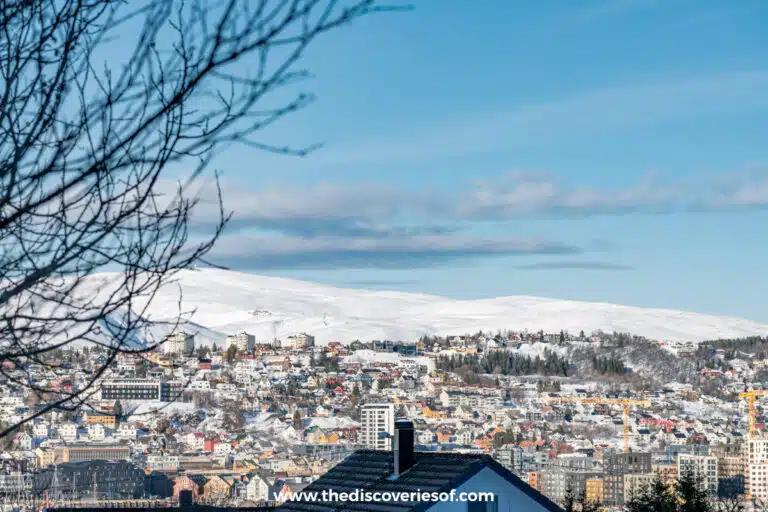
3 Days in Tromsø: The Perfect Tromsø Itinerary
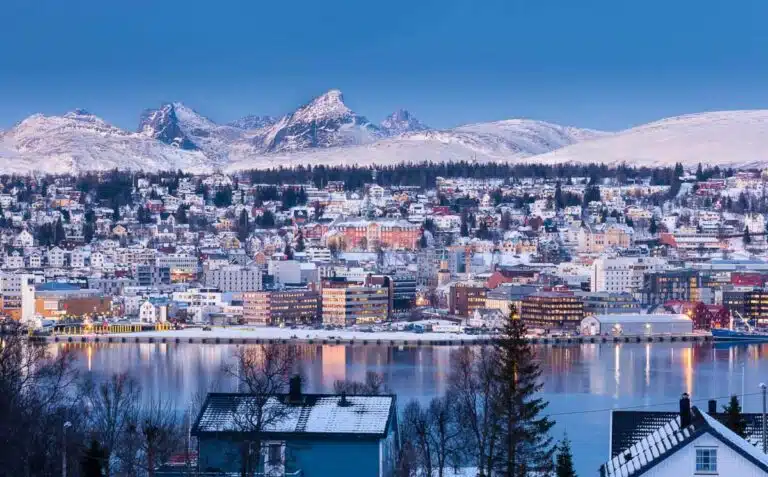
15 Incredible Things to Do in Tromso, Norway in Winter
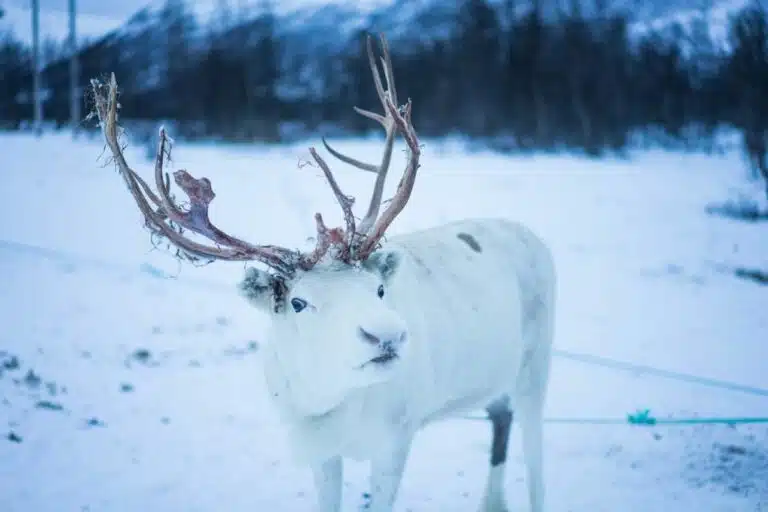
Leave a Reply Cancel reply
Your email address will not be published. Required fields are marked *

Follow me on Instagram for travel inspiration, tips, and guides.
Welcome to Norway
Harald Hognerud - DeHistoriske
Visit the amazing Norway Fjords
Fjord Norway - Robin Strand
Bryggen Wharf is one of Norway`s most historical sights
Øyvind Heen - Visitnorway.com
In Norway you will find architectural masterpieces
Christopher Hagelund - Visitnorway.com
Discover Norway by activities
EspenMortensen-esmofoto.no_www.nordnorge.com

Visit Norway with the enchanting and famous Norwegian fjords and discover Norway's culture, cities, nature and much more...
Norway is world-famous for its beautiful nature, especially the Norwegian fjords . Also, the many national parks are impressive with mountains, ice-blue glaciers, deep green forests, lakes, and beautiful green valleys and pastures. Norway is one of the three Scandinavian countries; with Denmark and Sweden, Norway is ranked as one of the best countries to live in and has one of the lowest crime rates in the world.
The Norwegian coastline is 25,148 km, but including the long fjords, mainland, and numerous small islands, the length is more than 100,000 km.
Every year in Oslo, the Nobel Peace Prize ceremony takes place by the Norwegian committee.
The northern lights and midnight sun
In the north of Norway , the sun never sets during the summer, so that you can see the sun 24/7. This fantastic view is called the midnight sun .
The sun never rises above the horizon in the winter, making northern Norway the perfect spot to watch the Northern Lights, and the season is from September to April.
In northern Norway, you can discover the Northern Lights from September to April, and the sun never rises above the horizon.
See more: Northern Lights and midnight sun in Tromsø
Norway´s major cities
Norway has borders with Finland, Sweden and Russia and the coastline face the North Atlantic Ocean. The Gulf stream runs along the Norwegian coast, and the climate here is mild and relatively wet, and to the north and east, the winters are longer and colder.
Oslo is the capital with about 635,000 inhabitants. Other major cities are Bergen, Trondheim , Tromsø and Stavanger . Europe´s northernmost point is North Cape .
See more: What to see and do in Oslo
The Norwegian fjords are world renown
Norway has the highest concentration of fjords in the world. The Geiranger Fjord and the Nærøy fjord is on the Unesco World Heritage List.
Norwegian nature can be just as wild as it is beautiful. The weather may change quickly in the mountains – from bright sunshine to rain, dense fog and strong winds.
See more: Experience the Norwegian Fjords
Norway is the home of skiing
A Norwegian proverb claims Norwegians are born with skis on their feet, and Norway is undoubtedly a winter sports nation, with skiing and cross-country in particular as the two most beloved sports.
Norway is undoubtedly a winter sports nation, with skiing and cross-country as the two most beloved sports. The Norwegians appreciate their family, friends and leisure activities, and on weekends they love hiking in nature, skiing, biking or other outdoor activities.
The best-known skiing areas are Lillehammer, Beitostolen, Dovrefjell, Rondane, Hallingdal and Valdres.
Many ski centres offer Alpine skiing and snowboarding, including Hafjell, Trysil, Kvitfjell and Hemsedal. The ski season lasts from November to Easter.
Extreme sports like freeskiing, kiteboarding, downhill and mountain bike racing, rock climbing, rafting, parachuting, and BASE jumping are becoming increasingly popular.
In 1957 The Outdoors Recreation Act (Allemannsretten) allowed everyone to access the open country, even private property. In Norway, there is a network of well-maintained trails and cabins.
Norway facts
King Harald V. has been the head of state since 1991. The king has no political power but performs ceremonial duties. Norway has a parliamentary democracy and is one of the most democratic countries in the world. The parliament is called Stortinget.
Essential values in Norway are economic, social and gender equality and openness and equal rights in general – such as financial, social and gender equality.
In Norway are living 5.300 million people live, and Norway is the third happiest in the world, according to the 2022 World Happiness Report. Other top countries are their Nordic neighbours, Finland (no.1) and Denmark (no.2).
Norway is the world’s largest exporter of salmon.
> See why visit the Nordic countries
Famous people from Norway
Edvard Munch and Henrik Ibsen are widely regarded as influential figures in the history of art and literature.
Today noway is the world’s biggest exporter of black metal music. The so-called Nordic noir literary genre has been prevalent in recent years. Here we will mention authors like Jo Nesbø and Karin Fossum.
Major industries in Norway
The country has a very high standard of living and a sound health system like the other Nordic countries . The major industries in Norway are chemicals, food processing, metals, gas and oil, shipping, pulp, and paper products.
What to See and Do in Norway
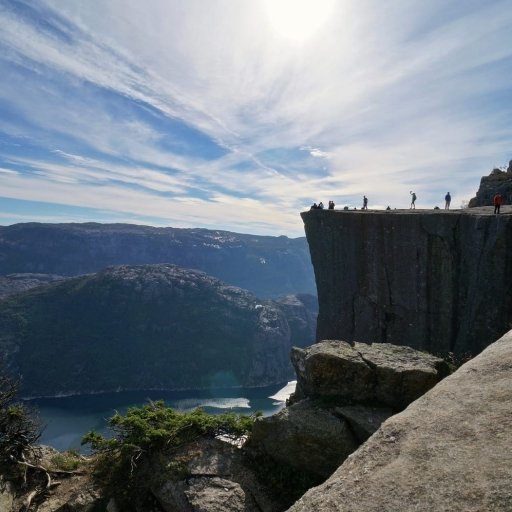
Norway Fjords
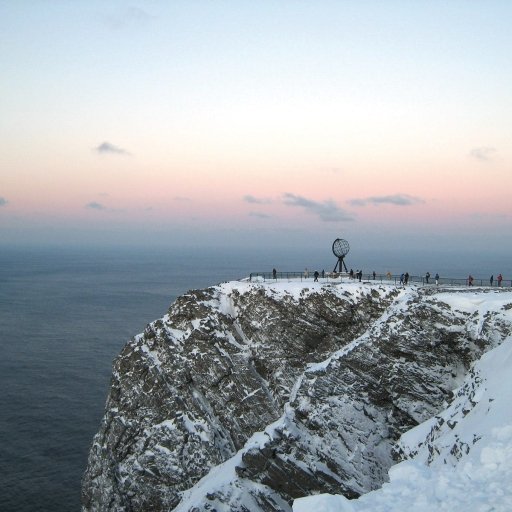
Most Popular Attractions
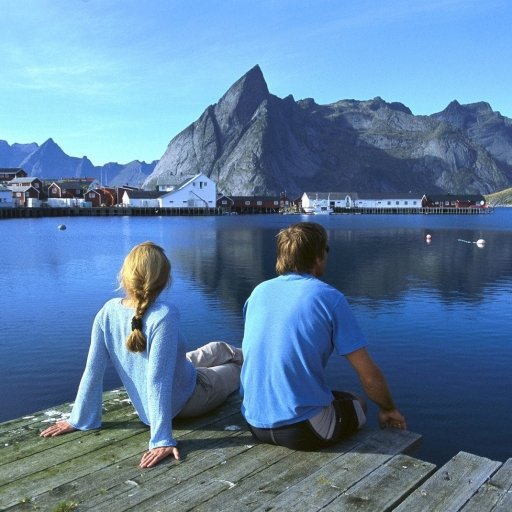
Nature & Wildlife
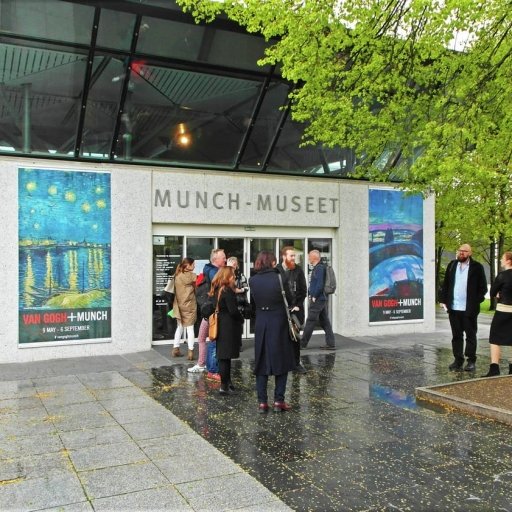
Top 9 Museums
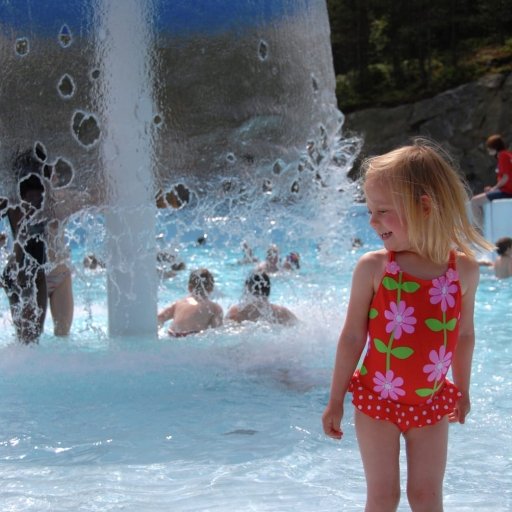
Top 9 Family Attractions
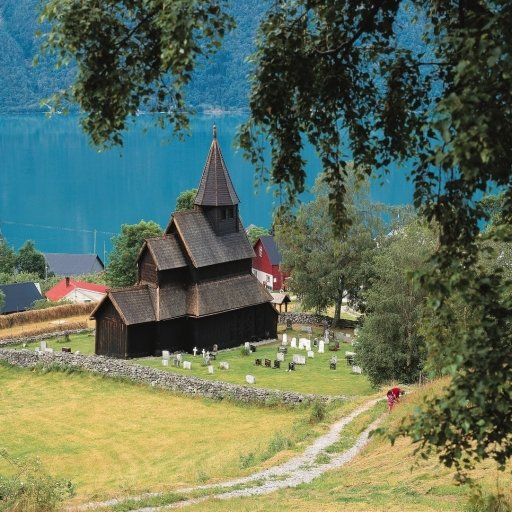
Heritage Norway
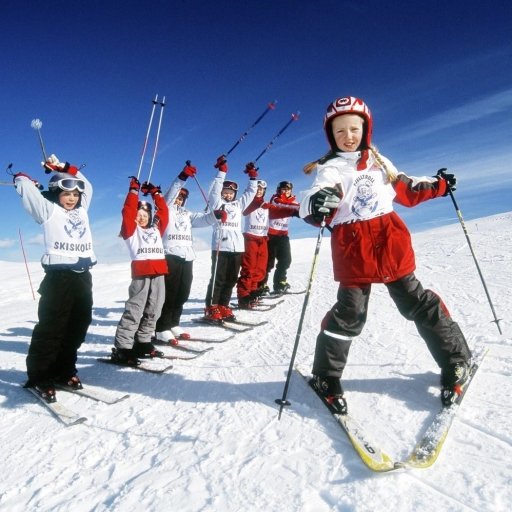
Popular Outdoor Activities
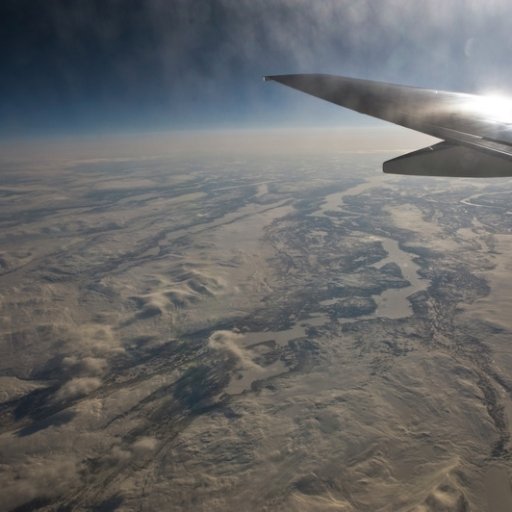
Getting to Norway
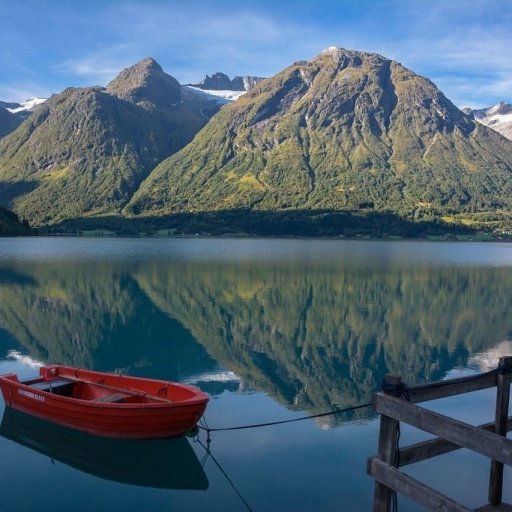
Best season
Popular cities in norway.
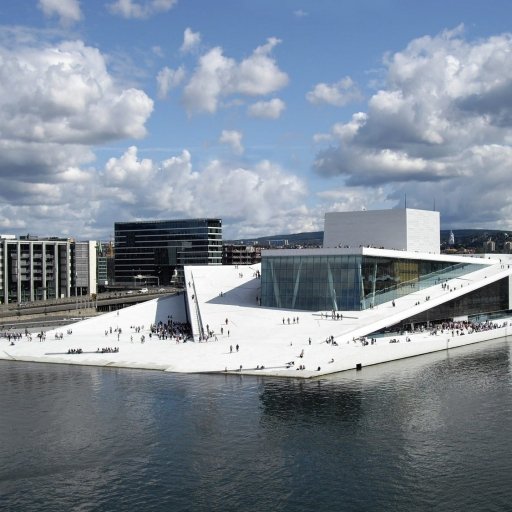
Narvik is the gateway to the Arctic
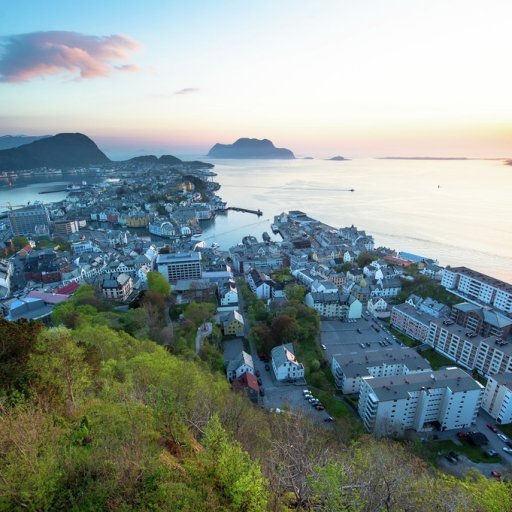
Popular Regions in Norway
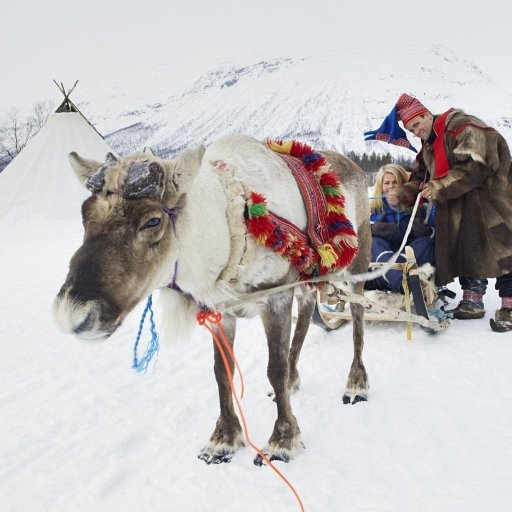
Northern Norway

Southern Norway
Discover the northern lights.
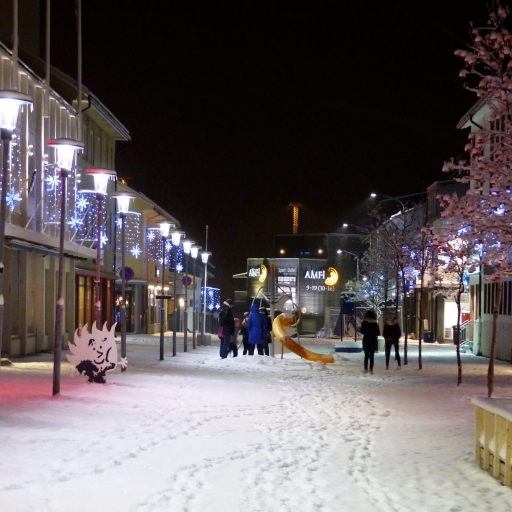
Welcome to Alta
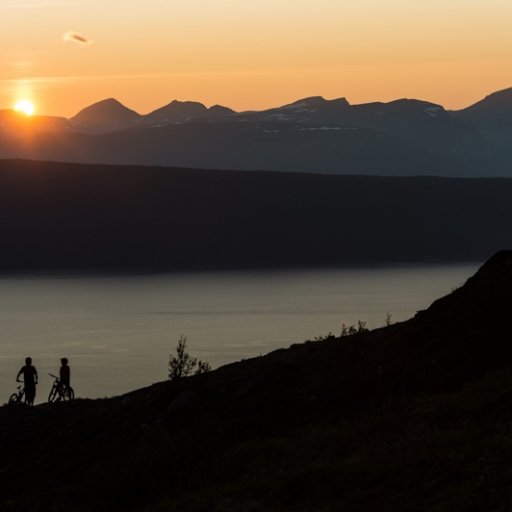
Lyngenfjord
Top attractions in norway.

The Pulpit Rock
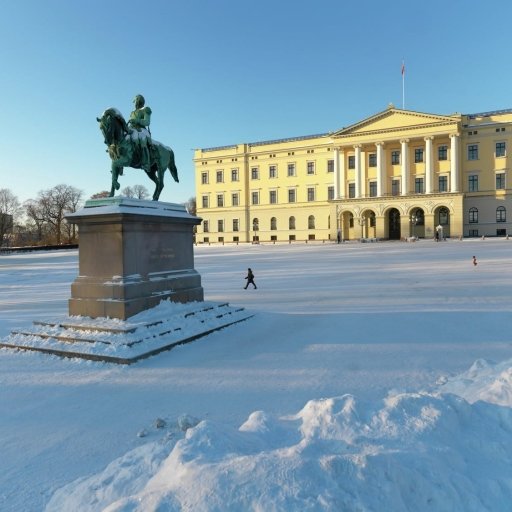
The Royal Palace
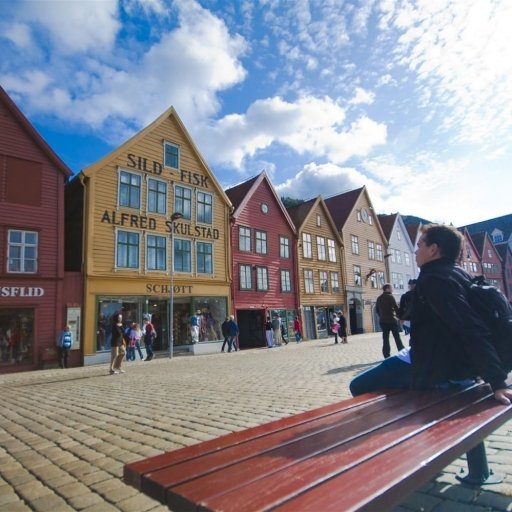
Bryggen Wharf Bergen
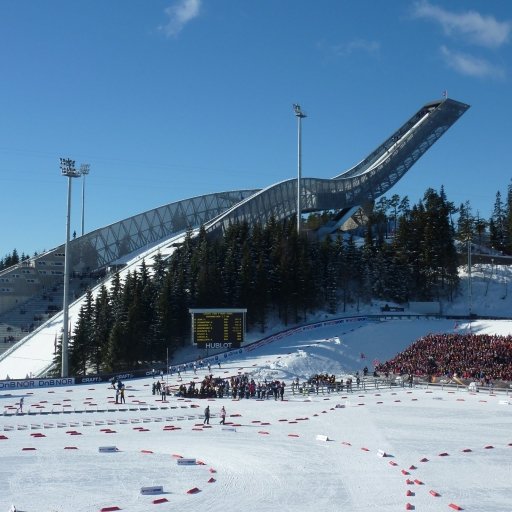
Holmenkollen & Ski Museum
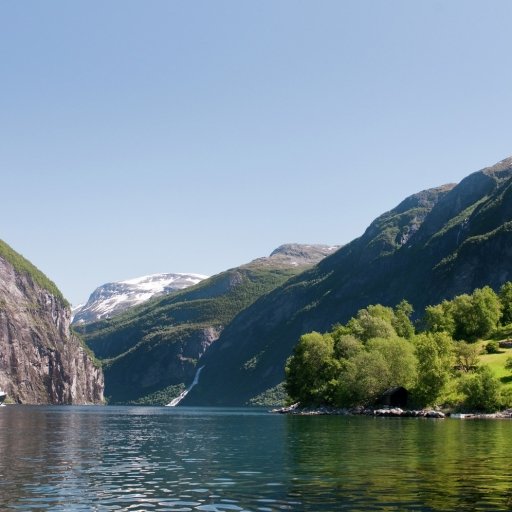
The Geirangerfjord
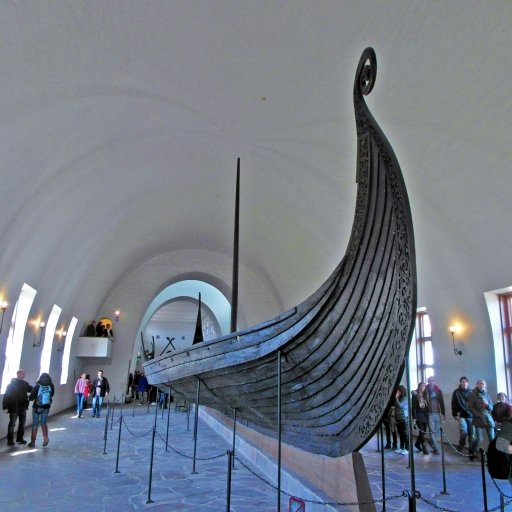
Oslo Viking Ship Museum
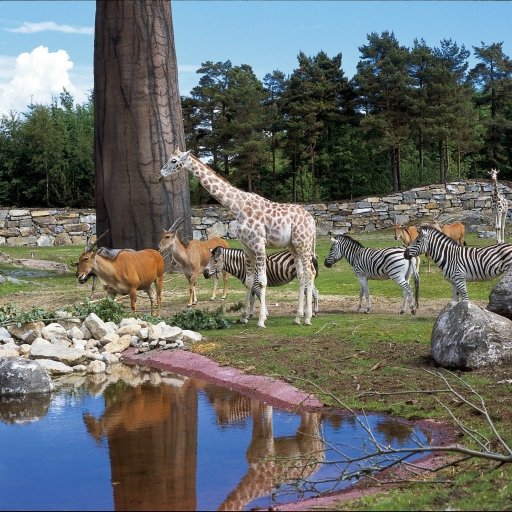
Kristiansand Zoo and Amusement Park

The Nærøyfjord
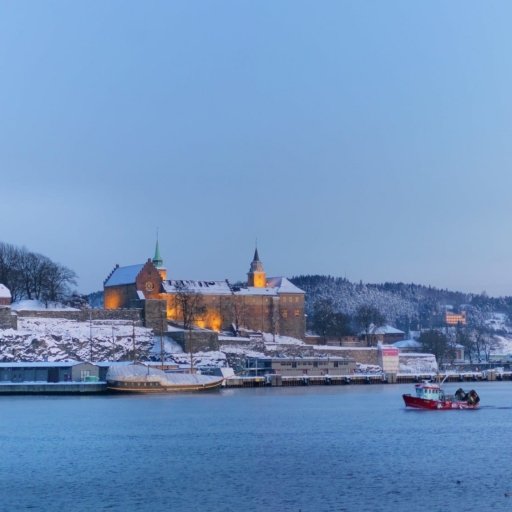
Akershus Castle & Fortress
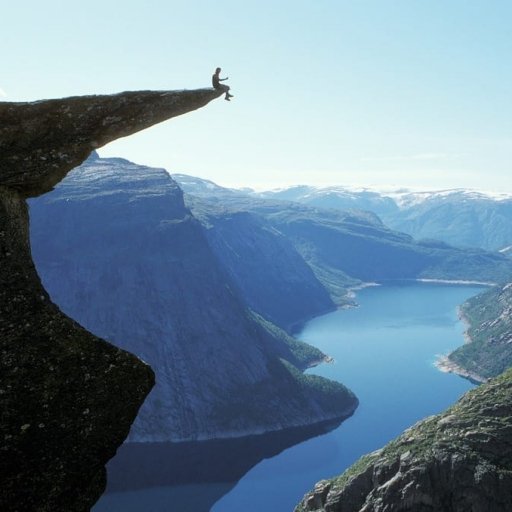
Vøringsfossen
Amazing viewpoints in norway.
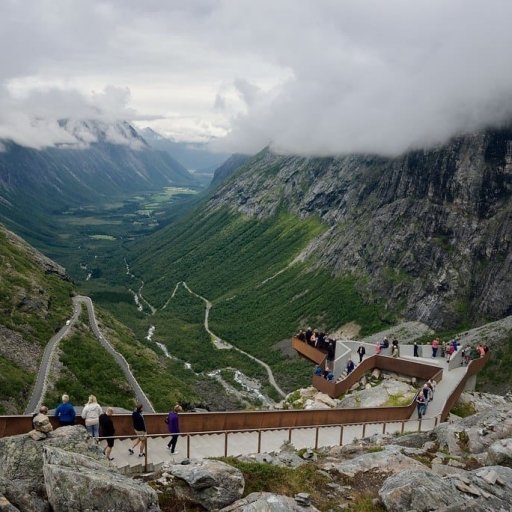
Geiranger-Trollstigen
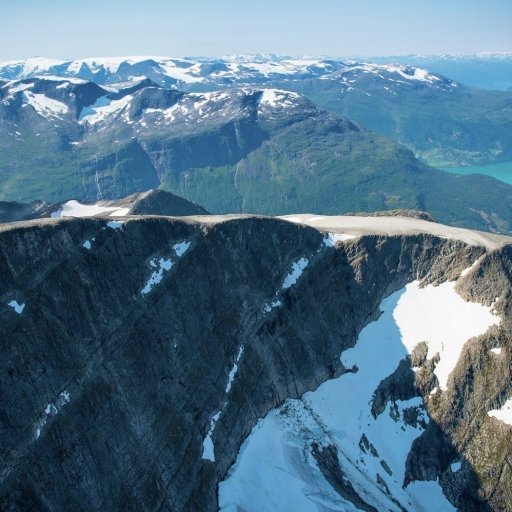
Jostedalsbreen National Park
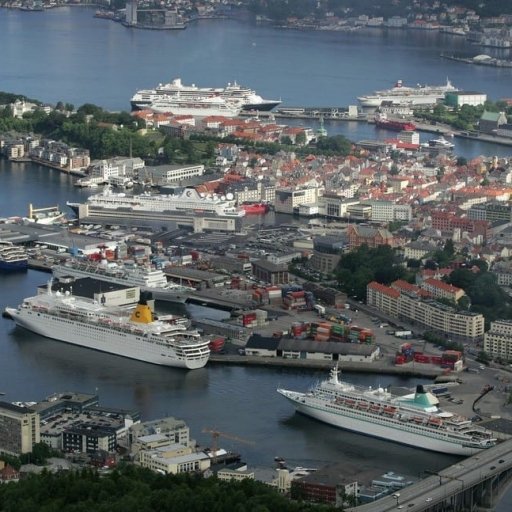
Mount Fløyen in Bergen
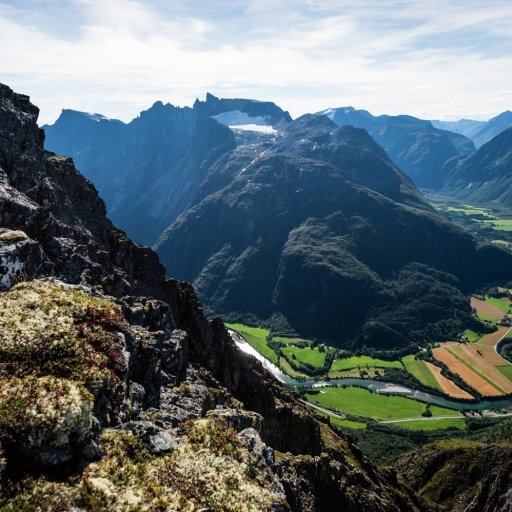
Romsdalseggen
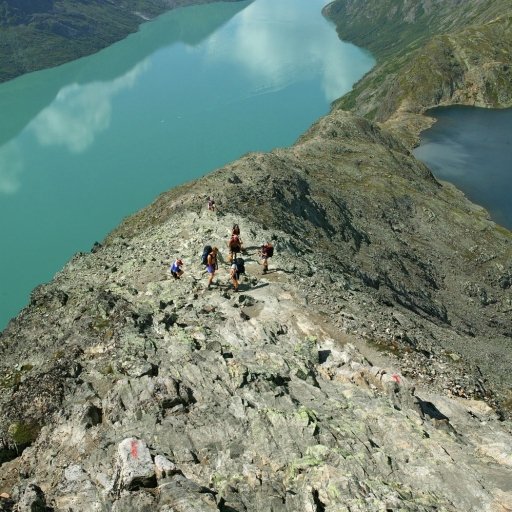
Besseggen Ridge Hiking Trail

Galdhøpiggen Hiking
Visit the arctic.

Svalbard in Norway
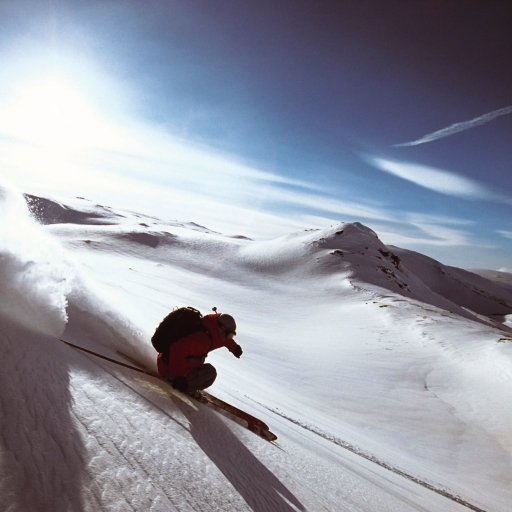
Kiruna in Lapland
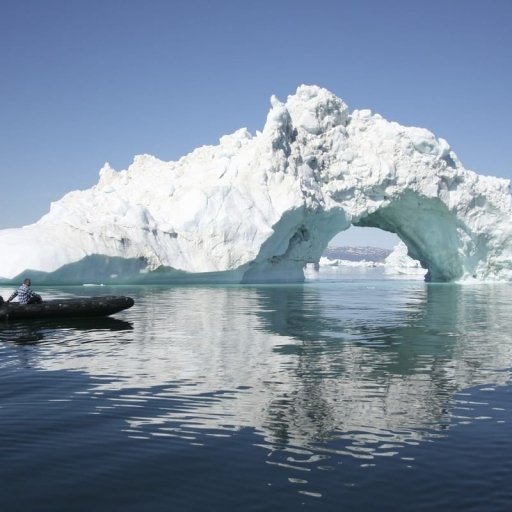
Lofoten Islands
Highlights in fjord norway.
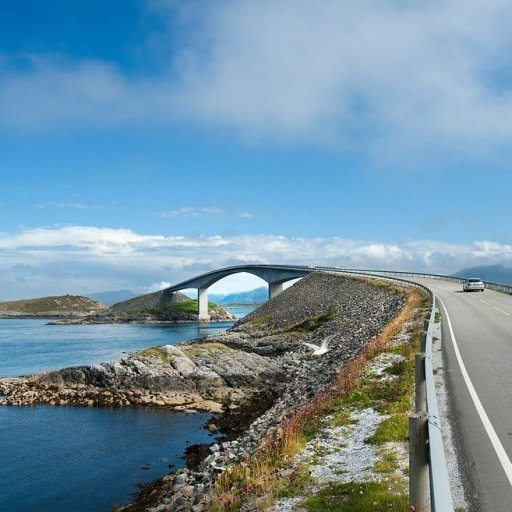
The Atlantic Road
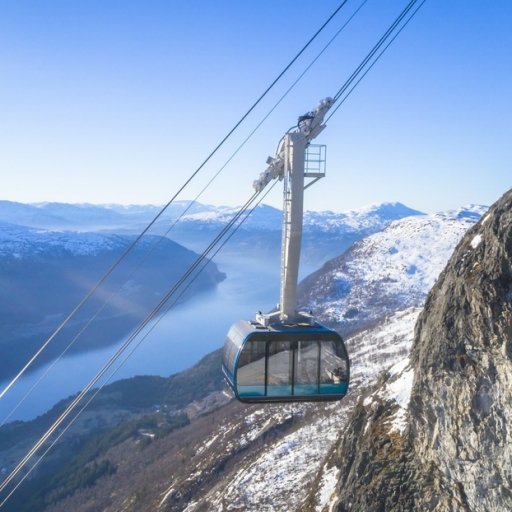
Loen Skylift
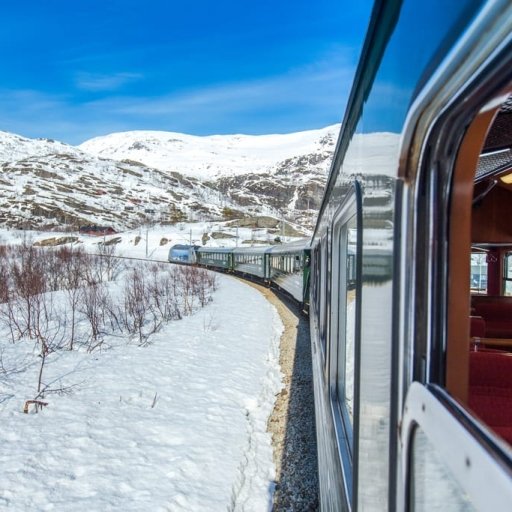
Flåm Railway
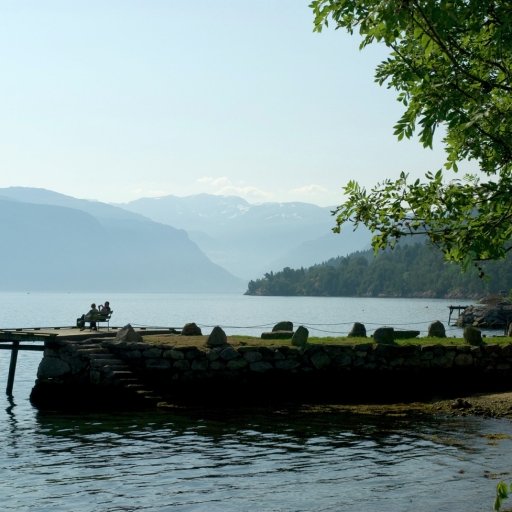
Practical Tips
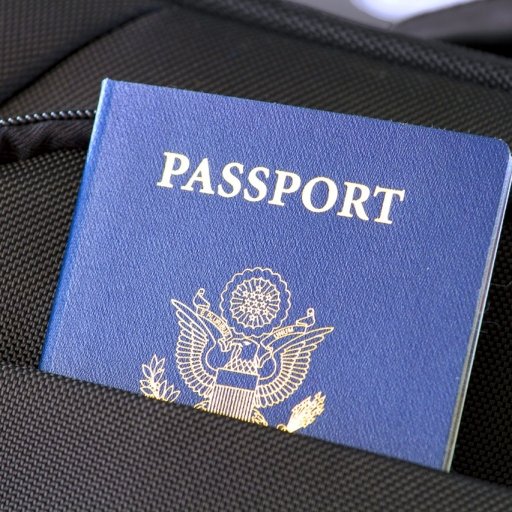
Visa to Norway

Opening hours in Norway

Weather in Norway
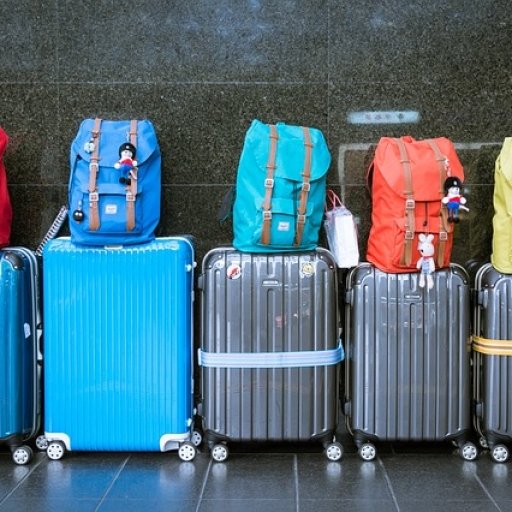
What to pack for Norway

Currency and Tip in Norway

Public Transport

Driving in Norway
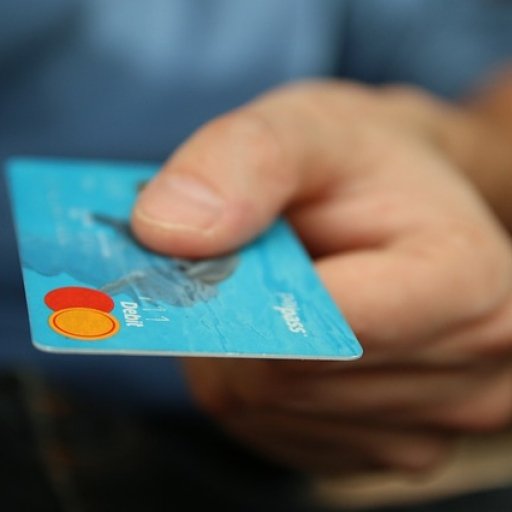
Credit Cards in Norway

Internet & Wifi & Phones
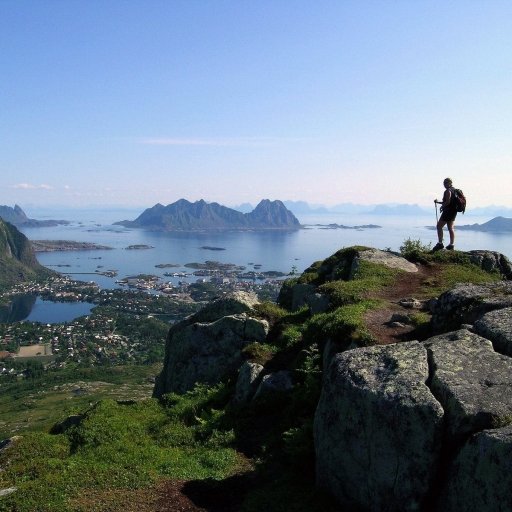
Safety in Norway

Emergency in Norway
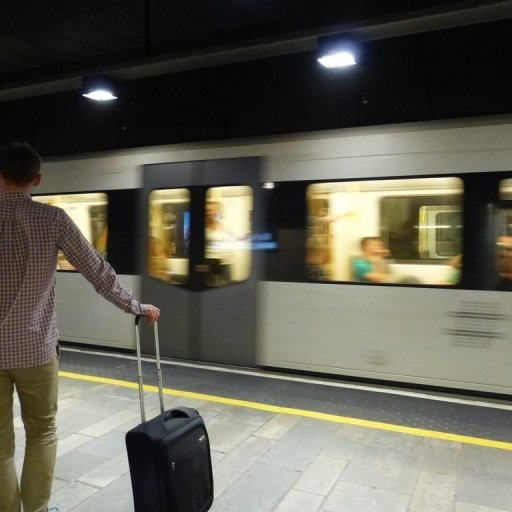
Transport to and from Oslo Int. Airport

Tourist Offices

Tax free Shopping in Norway

Electricity
Beautiful west norway.

Facts - Norway
Explore more.
- Weather forecast in Norway
- Norwegian Customs
- Outdoor recreation in Norway
- SAS Airlines
- Norwegian Airlines
- Widerøe Airlines
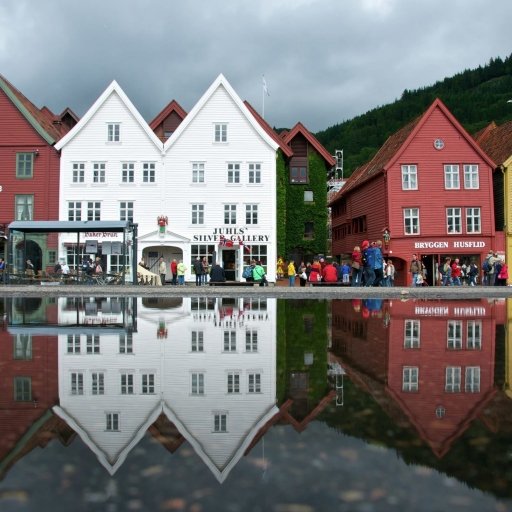
Reasons to Visit Norway

Norway in Two Weeks
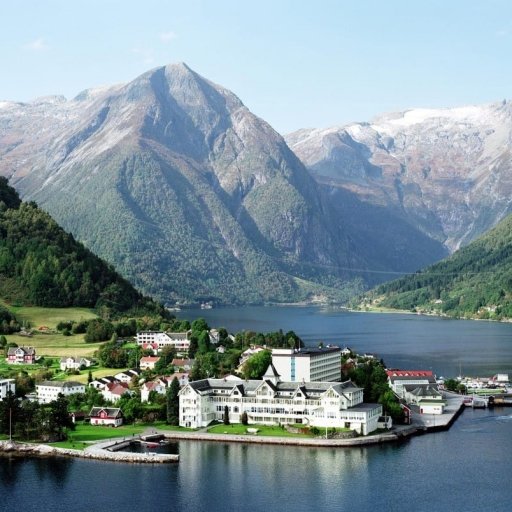
Historic Hotels in Norway
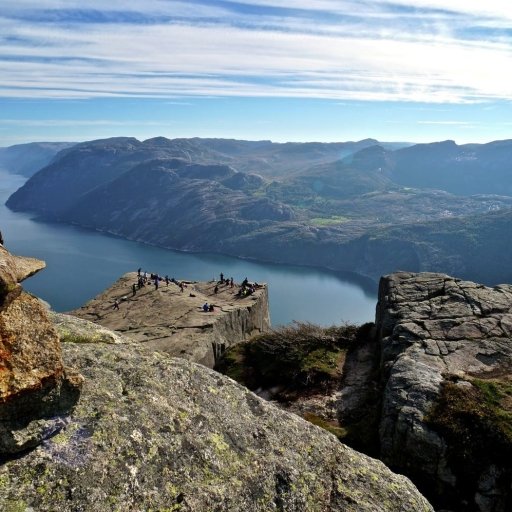
Spectacular Viewpoints
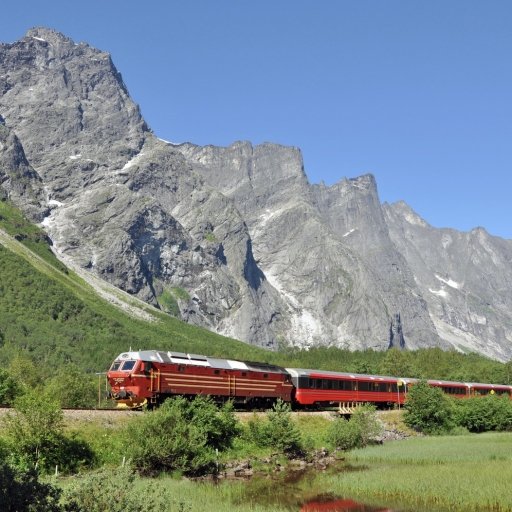
Bergen Railway Tour

Shopping in Norway
- Nordic Countries
- Inspiration
- Heritage & Culture
- Nature & Activities
- Design & Shopping
- Nordic Vikings
- Seasons & Weather
- Visitnordic
- Privacy Policy
- Terms of Use
- Become a Partner

The best places to visit in Norway in 2024

Mar 14, 2024 • 7 min read

Stunning culture-filled cities are tucked away in Norway's incredible landscapes © BlueOrange Studio / Shutterstock
Simply put, Norway is spectacular. Along the west coast, shimmering blue fjords carve deep into the interior, with picture-perfect villages hugging the shores and gravity-defying farms clinging to the steep slopes above. Elsewhere, the coastline is less dramatic but still stunning with white-painted towns and countless islands, while interior Norway has some of Europe’s wildest, most beautiful mountains, interspersed with green agricultural valleys and stretches of deep forest.
Almost anywhere you go in Norway you’ll find scenery to take your breath away and abundant activities to inspire you. Here are the best places to visit in 2024.

Best for museums and architecture
Norway’s energetic, innovative capital boasts top-notch historical and cultural museums, a creative food scene, and cutting-edge architecture such as the striking new Munch Museum and the iconic opera house, designed to resemble a glacier. A stroll along the new waterfront promenade is a great way to get a close-up look at Oslo’s evolving cityscape. And after a year-long renovation the Nobel Peace Center reopened in November 2023 .
Planning tip : One of Oslo’s top attractions, the Viking Ship Museum , is closed until 2026, but the Fram Museum is another great ship-centered attraction that tells the fascinating story of Norwegian polar exploration.
2. Lofoten Islands
Best for astonishing Arctic beauty
The Lofoten archipelago is vivid, dramatic, and irresistibly photogenic, with jagged mountains rising from the sea and colorful villages hugging rocky shores that are moss-green in summer and blanketed in pristine snow in winter. Come for the hiking, the kayaking, the arts scene, the history, the wildlife, the seafood, or just to admire the incredible views on this outer edge of northern Norway. In summer, there’s almost endless daylight, while in winter, the aurora borealis often shimmer overhead in undulating waves of green, yellow, red, and purple.

3. Jotunheimen
Best for hiking and trekking
Home to Norway’s 29 highest summits, plus hundreds of other peaks over 2,000 meters, Jotunheimen – whose name means “home of the giants” – is rugged, wild, and an irresistible lure for hikers and climbers. Base yourself in a mountain lodge or cabin and go for day hikes, or embark on a multi-day wilderness trek through incomparable scenery. Much of the region is protected within Jotunheimen National Park , which is within easy reach of the fjord region and several cities.
Planning tip : Join the Norwegian Trekking Association (DNT) for discounts and special access to a large network of staffed lodges and unstaffed cabins throughout Norway, including many in and around Jotunheimen.
4. Sognefjord
Best for stave churches and pretty fjordside villages
The longest and deepest fjord, the Sognefjord carves into the interior from the west coast to the edge of Jotunheimen. Its many scenic arms include the stunning UNESCO–listed Aurlandsfjord and Nærøyfjord. Several of Norway’s 28 surviving medieval stave churches are located around Sognefjord, including two of the most impressive, Urnes and Borgund. Also around the fjord are picturesque villages such as Fjærland, the book town; idyllic Solvorn; Undredal, known for its goat cheese; and Flåm, the lower terminus of the scenic Flåm Railway.
Planning tip : Sightseeing cruises on the UNESCO fjords operate between Flåm and Gudvangen, connecting to a bus to complete the round trip. If you’re driving another option is to take the car ferry between Kaupanger and Gudvangen.
5. Hardangerfjord
Best for waterfalls and cider
Norway’s second-longest fjord, the Hardangerfjord is known for its fruit orchards and many spectacular waterfalls. There are endless things to do here, from kayaking peaceful inlets to cycling the fjordside roads, hiking up to isolated Kjesåsen Farm, or trekking onto the glaciers of Folgefonna National Park. The Hardangerfjord is gorgeous at any time of year, but mid-May to mid-June brings an additional layer of beauty with the blossoming of the region’s many apple and cherry trees. Be sure to sample some of the locally produced cider and juice while you’re here.
Planning tip : Norled’s fast passenger ferry runs from April through October, making it possible to travel between destinations around the Hardangerfjord without a car. There are also a few car ferries that you can walk aboard for free.

Best mix of urban attractions and outdoor recreation
Norway’s second-largest city is a charmer, starting with its UNESCO-listed waterfront district, Bryggen, a delightful warren of colorful wooden buildings and narrow alleyways where merchants from the powerful medieval Hanseatic League once held sway. Though framed by mountains – there’s wonderful hiking within easy reach – Bergen is very much a maritime city, as reflected in its vibrant restaurant scene highlighting fresh fish and seafood.
Planning tip : The Bergen Card offers free or discounted admission to many of Bergen’s excellent museums and other attractions, as well as tours and transportation.

7. Geiranger
Best for panoramic fjord views
The UNESCO-listed Geirangerfjord is another of Norway’s most beautiful fjords, with sheer walls, impressive waterfalls, and abandoned farms clinging to high cliffs. The ferry journey between Geiranger and the quieter village of Hellesylt is stunning, as is the land approach to Geiranger from the north on Route 63, Ørnevegen (the Eagle Road), which makes 11 hairpin turns as it winds down the mountainside. Stop at Ørnesvingen, the highest switchback, for panoramic views.
Planning tip : East of Geiranger, Route 63 continues along the north side of the glacial massif. Take the side road from Djupevatn (toll) to the Dalsnibba lookout for a stunning look back towards Geiranger.
Best for early 20th-century architecture and design
Regularly voted one of Norway’s most beautiful cities, Ålesund owes its special character to a devastating fire in 1904 that razed the town, leaving 10,000 people homeless. When the city rose from the ashes, it was with an entirely new cityscape in the Jugendstil (Art Nouveau) style, making it unique in Norway. For an incomparable panorama of Ålesund and its magnificent natural surroundings, climb the 418 steps to the Aksla viewpoint, overlooking the city center.

9. Trondheim
Best blend of history and innovation
Norway’s historic Viking capital, Trondheim is a lively university town, a medieval pilgrimage destination, a science and technology hub, a culinary hotspot (it was the European Capital of Gastronomy last year), and so much more. The Nidelva River flows through the city center, lined with colorful warehouses. Rent a kayak or take a sightseeing tour by boat for the best views. Trondheim’s star attraction is Nidaros Cathedral, a medieval masterpiece built over the grave of Norway’s patron saint, King Olav II Haraldsson, while across the river, the 17th-century Kristiansten Fortress played a major defensive role during the Scandinavian wars before being occupied by the Nazis during World War II.
10. Nordland Coast
Best for wild coastal road trips
In a country where gorgeous views are everywhere, Kystriksveien , the coastal road from Steinkjær to Bodø (the European Capital of Culture for 2024 ), stands out with its seemingly infinite views of mountains rising from the sea, sandy coves, pretty fishing villages, and countless islands including the birdwatching hotspots Vega and Lovund. The whole route stretches 400 miles (650 km) and takes a minimum of four or five days to drive, with several ferry crossings and numerous worthwhile detours along the way. Kystriksveien is also a wonderful cycling destination; guided tours and luggage transport are available.
Planning tip : Ferries along the route use the Autopass system for tolling. If you don’t have a transponder, register an account in the FerryPay system to avoid a surcharge for mailed invoices. Visit www.autopassferje.no for details.

Best city for year-round outdoor activities
Located 217 miles (315 kilometers) north of the Arctic Circle, Tromsø is northern Norway’s largest city and unofficial capital. In summer, you can hike, kayak, sauna-hop and savor the city’s urban delights under the midnight sun, while in winter, there are excellent chances of seeing the aurora borealis casting a magical glow overhead as you ski, snowshoe, dogsled and reindeer sled across pristine wintry landscapes. Winter is also the best time for whale watching, whereas summer is the prime season to take a birdwatching cruise in search of puffins and other seabirds.
Local tip: Since 2001 Tromsø has been twinned with Gaza City, a topic which is now being keenly discussed by locals.
12. Svalbard
Best for remoteness and Arctic wildlife
Tromsø not far enough north for you? Then head to Svalbard , an Arctic archipelago located roughly halfway between mainland Norway and the North Pole, and one where Norwegian, Russian and other citizens all inhabit in a visa-free zone. During the polar summer the islands come alive with migratory species such as whales and seabirds. Polar bears and reindeer wander across the landscape year round, while seals and walrus can often be seen hauled out on ice floes or island shores. In winter, the long polar night descends over the archipelago as the only natural light comes from the moon, stars, and the brilliant auroras that frequently dance across the heavens.
Planning tip : Despite its small size, Svalbard’s administrative center, Longyearbyen, has a surprising range of restaurants, making it a good place to sample the flavors of the Arctic.
This article was first published Jul 22, 2012 and updated Mar 14, 2024.
Explore related stories

Tips & Advice
Sep 17, 2024 • 12 min read
Visitors to Europe are bowled over by its natural beauty, epic history, rich culture and dazzling diversity. Here are the best places to visit.

Aug 6, 2024 • 7 min read

Jun 12, 2024 • 10 min read

Mar 30, 2024 • 4 min read

Mar 20, 2024 • 8 min read

Mar 18, 2024 • 5 min read

Mar 18, 2024 • 6 min read

Jan 19, 2024 • 11 min read

Jan 17, 2024 • 8 min read

Dec 27, 2023 • 8 min read
- Skip to primary navigation
- Skip to content
- Skip to primary sidebar
- Skip to footer
Heart My Backpack uses affiliate links, which means that if you make a purchase through my links, I may earn an affiliate commission.
How To Spend One Week In Norway: My 3 Top Norway Itineraries
August 7, 2022 by Silvia 67 Comments
These itineraries are all for one week in southern Norway, but you can find a comprehensive list of all 23 of my Norway itineraries for both the south and north here .
It seems like just about every day I get the same email from visitors to Norway, telling me that they only have one week in Norway and asking what the perfect Norway itinerary for that amount of time would be.
Usually, I say something annoyingly vague about how it really depends on how they want to spend their time, as the country is enormous and there are so many different things you could see in Norway in a week. And it’s true! I can think of so many different ways to spend a week in Norway that would make for the best vacation ever.
But I also get that all the options can be sort of overwhelming, and sometimes you just want someone in the know to tell you what to do. So that’s what I’m going to do.
I’ve been living in Norway for over six years, plus I’m a Norwegian citizen and spent every summer and Christmas in Norway while I was growing up. Why am I telling you this? Because I’ve seen so many Norway guides written by people who only ever visited for a week. And while that’s really great, this a an enormous country with loads of hidden gems that only locals know about.
And lucky for you I’m spilling my Norway secrets!
So I’ve come up with three different Norway itineraries for seeing as much as possible in one week. All of them can be adjusted, so you could probably make a five-day itinerary or 10-day itinerary from these as well – or you could combine them for a two-week itinerary. Lots of options here!
And if you need even more inspiration for your Norway trip, I’ve also compiled a huge list of over fifty things to do in Norway here (which I continue to add to with local recommendations).
I also have a two guidebooks covering everything you need to know to plan an epic Norway trip, which you can purchase here .
And if you’re coming to Norway for the northern lights, I’ve written an in depth ebook covering all aspects of planning your northern lights trip, including the best places in Norway (and the Nordics) to see the northern lights, the best time to see the northern lights, my top northern lights accommodation choices, tour options, how to chase the northern lights (including which apps I use), how to photograph and film the northern lights, what to pack for your trip, and other exciting Arctic activities to try on your trip up North. You you can purchase the ebook here .
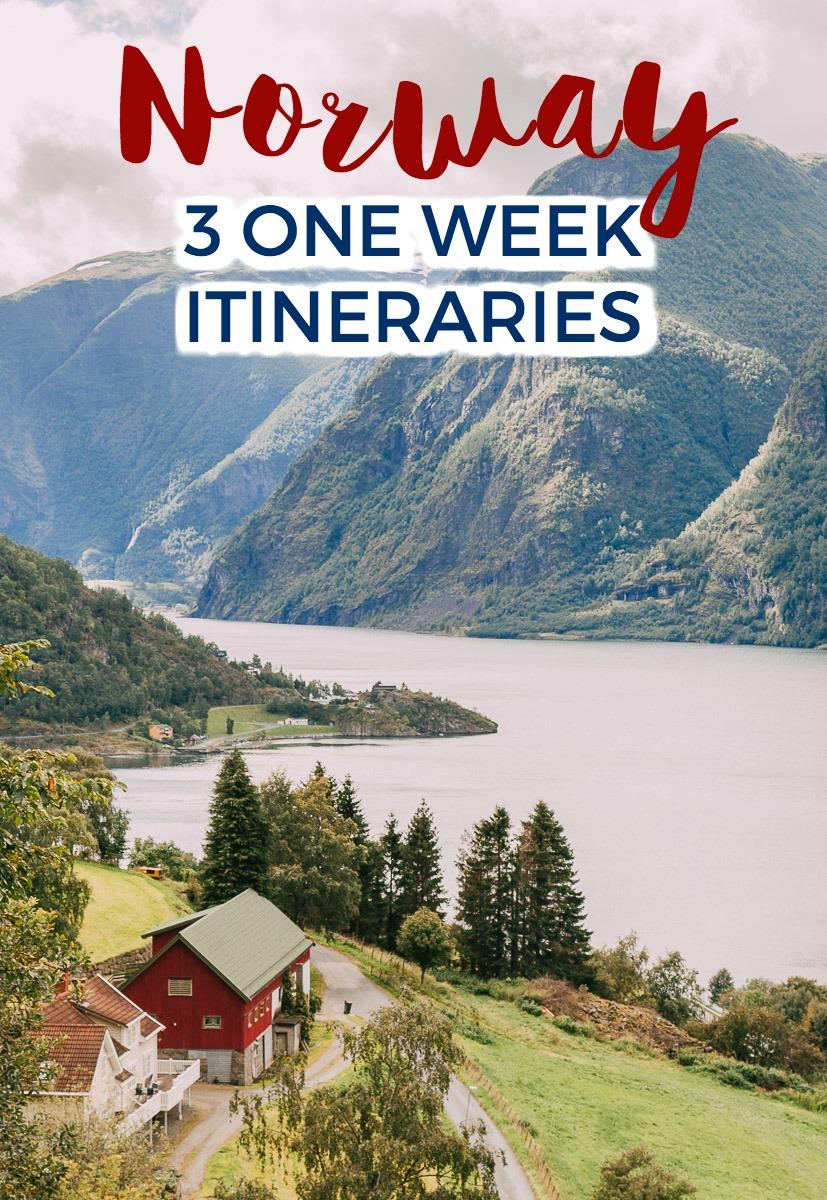
The first itinerary really does require a car, the second is best as a road trip but can also (sort of) be done by public transport with some modifications, and the third solely uses public transport (though you could totally do it by car as well and see a lot more). When it comes to renting a car in Norway, I always recommend using Sixt .
Now, these itineraries are packed and include a lot of driving – they’re designed for people who want to see as much as they possibly can in their short time in Norway. So depending on how much time you want on the road you might need to cut out a day or two and do less each day instead. But I will say that driving in Norway is an experience in itself – you won’t be on any boring highways here, and I’ve made sure to take you along the most scenic routes.
Also, I’ve included the most scenic routes here, which often are mountain roads that unfortunately can be closed in the winter. If Google Maps doesn’t want to route you through one of these roads it usually means that the road is closed (but if you’re planning your trip in the winter and want to see the road, just change your departure time to a summer date and it should pop up).
Table of Contents
Norway itinerary #1: Cultural Heritage
I’m calling this one the cultural heritage itinerary because it takes you through several UNESCO World Heritage Sites, historic cities, and there’s even a stop at an old stave church! I feel like this would also be the best itinerary if you’re traveling with a family, as all the places and activities are super family friendly.
Day 1: Oslo – Notodden – Rjukan
The drive from Oslo to Notodden takes about an hour and 45 minutes, and ideally, you’ll want to leave in the morning so you can fit in more time in Rjukan later in the day.
Notodden is an Industrial Heritage Site, where you can see some of the industrial buildings from the early 20th century, including where the workers used to live. Notodden is also home to the Notodden Blues Festival , the largest blues festival in Scandinavia – hence the enormous microphone statue in the center of the city.
Though to be honest, there’s not a whole lot to see in Notodden. Like, it’s really interesting to see the town, but you don’t need to spend much time here – once you’ve seen it, you’ve seen it.
The main reason you’re here is to see the Heddal Stave Church right outside of town. Built at the start of the 13th century, the Heddal Stave Church is Norway’s largest stave church, and it’s definitely worth a stop for some photos.
And then you’re going to turn off onto Fv651 for one of my favorite drives in all of Norway. If the road is closed take Fv361 to Fv37 instead – also a beautiful route!
Gaustatoppen is probably my favorite mountain in Norway, and if it’s not too foggy you should be in for some gorgeous views. The drive up here does include some sharp hairpins, but I promise it’s not scary. And it’s one of my favorite drives in all of Norway – the views are so gorgeous.
And Rjukan is also an Industrial Heritage Site, as well as simply a really interesting town in a very dramatic landscape.
Rjukan has an important WWII history, and while the town is in such a deep valley that it doesn’t get direct sunlight for six months of the year, recently they set up mirrors to reflect sunlight down into the town square – you should definitely check it out!
There are also lots of fun activities and sites to visit in Rjukan. I’ve written a complete guide to things to do in Rjukan here .
ACCOMMODATION
If it fits in your budget, I would definitely recommend staying at Gaustablikk Høyfjellshotell. You can read more about it in my post about Rjukan, but basically it’s beautifully decorated, has amazing views of Gaustatoppen, and is very Norwegian. Wins all around. Check current rates and availability here
Mid-range/budget
Kvitåvatn Fjellstue also has great views over Gaustatoppen and it’s much easier on your budget! Check current rates and availability here
Apartments/cabins
There are also quite a few holiday home options in Rjukan , such as this idyllic cabin , this charming apartment , and this beautiful chalet .
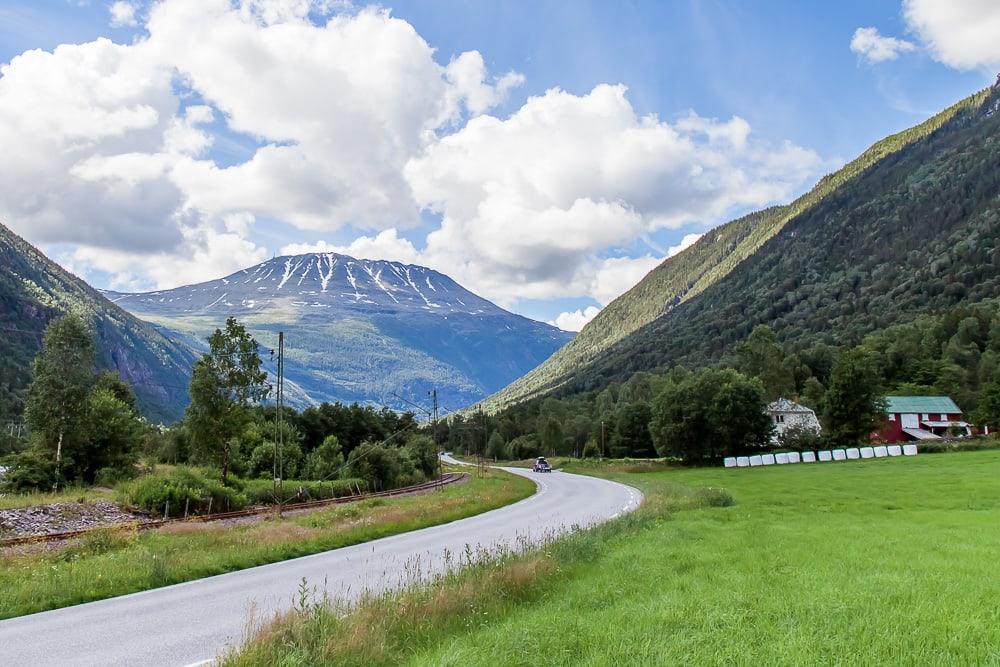
Day 2: Rjukan – Haukeli – Odda
The drive today is SO beautiful – like, I’m feeling a little jealous just writing about it because I want to do this drive again and again.
Driving from Rjukan to Odda takes just a little over three hours, so if you didn’t have time yesterday you could take a couple of hours in the morning to explore Rjukan a bit more.
Then you’re going to start the hair pinned climb up towards Rauland, passing the Vemork Heavy Water Museum on your left as you’re driving out of town.
You’ll then drive through Rauland (where I lived for three years!), and over Haukeli pass before descending towards Odda. Haukeli pass is stunning – if you’re new to Norway you’re really going to be blown away as this sort of landscape is so unique to Norway. You can read more about this drive in this post about driving from Rauland to Hardangerfjord .

When you get to Odda I’d recommend driving farther down Hardangerfjord, as it really is so beautiful.
ACCOMMODATION NEAR ODDA
To be honest, Odda doesn’t have great accommodation options (plus hotels in town book up really quickly because Trolltunga is such a popular hike), so I’d recommend staying somewhere along Hardangerfjord instead. Hardangerfjord looks like something straight out of a fairytale – in fact you could happily spend a week just on Hardangerfjord if you wanted to extend your stay here and have a more relaxing vacation.
Utne Hotel dates back to 1722 and is perfect for anyone who enjoys unique, historical accommodation. Check current rates and availability here
Ullensvang is my favorite spot along Hardangerfjord, and Ullensvang Gjesteheim is a lovely little farm offering simple, budget-friendly accommodation. Check current rates and availability here
Hardanger Rom & Harmonium is in a lovely quiet town and run by the nicest owners. It’s not super budget, but it is an incredible value for how nice it is. Check current rates and availability here
If you’re on a tighter budget, Odda Camping is your best bet, with basic rooms and little cabins. Check current rates and availability here

Day 3: Odda – Bergen
The drive to Bergen is long but beautiful. You will have to take a ferry but don’t worry, they run often and you can pay for your ticket as you drive onto the boat – super easy (and yes, they accept card). I’ve done this journey a lot by bus, and it’s always so exciting when you start getting closer to Bergen!
ACCOMMODATION IN BERGEN
You can find a list of the best accommodation in Bergen for different budgets here , and the best hostels in Bergen here .
Day 4: Bergen
No driving today! Instead, take the day to explore Bergen. And you are going to love Bergen. It’s easily Norway’s most beautiful city and it’s so loved for a reason.
I’ve visited many times in the past few years, and my family loved making trips here when I was growing up as well. I have so many amazing memories from my trips to Bergen and I’m sure you’ll make some too. I’ve written a complete guide to things to do in Bergen here .
If you’d like, you can also do some tours around Bergen, like this 2-hour Segway tour , this 3-hour self-guided tour , or this private tour with a local . Or if you want a truly unique experience, check these adventure activity options (like zip-lining and helicopter tours!).

Day 5: Bergen – Flåm – Gaupne – Lom
Okay, this drive is crazy long and you don’t have to do it all in one day as Day 6 is a much shorter day. However, I’d recommend trying to get as far as possible today because then you’ll have more time to explore the fjords tomorrow. Plus, this will be one of the most spectacular drives of the trip, I promise.
In fact, you’ll be driving along two of Norway’s National Tourist Routes, first over Aurlandsfjellet and then over Sognefjellet from Gaupne to Lom. You can read about this drive here: The Prettiest Road Trip from Bergen .
You could also break up this day by overnighting somewhere along Sognefjord. See accommodation options near Sognefjord here.
ACCOMMODATION NEAR LOM
Fossheim Hotel is a historic hotel from 1897 in Lom, with a restaurant featuring gourmet dishes with local produce. Check availability and current rates here
The Elveseter Hotel is a family-run mountain lodge in Boverdalen full of traditional Norwegian art, wood carvings, and cozy fireplaces in the lobby area. Check here for availability and prices
Døsen Gård is an excellent option if you can’t make it all the way to Lom by the end of the day – plus you’ll get views of the fjord! Check availability and current rates here
And if you’re up for driving farther, Sjåk Turistheim is the perfect option just past Lom. You can either book a room here or if you’re traveling with several people the cabins are excellent value. Check availability and current rates here
If you drive just past Lom you’ll find Furuly Camping, where you can get a cozy little cabin for surprisingly cheap – it’s an especially great deal if there are several of you traveling together! The cabins are basic and you do have to pay to use the shower, but your wallet will thank you. Check availability and current rates here

Day 6: Lom – Geirangerfjord (optional: Trollstigen)
Today you have a much shorter drive to Geirangerfjord, and then you can choose yourself where you want to explore.
But on your way, there be sure to take a small detour down Gamle Strynefjellsvegen, another National Tourist Route. I haven’t been able to mark it on the map because the road is still closed for the winter, but you just need to take a left onto route 258 for Strynefjellet. You can read why this road is so amazing here: The One Norwegian Road Trip You HAVE To Take .
Then you might want to head to Trollstigen, which is famous for its many hairpin turns and incredible views (you can read about the drive to Trollstigen here ), or you can head straight to your accommodation for the night to relax on the fjord.
You can take a look through this list of Geirangerfjord accommodation and find something that suits your interest and budget.


Optional extra detour: Ålesund & The Atlantic Road
At this point you’ll need to head back to Oslo if you only have time for a seven-day road trip, but if you have extra time you could go on to Ålesund, and then even up to Norway’s famous Atlantic Road (the one where the road goes over the water in beautiful bends). Read my guide to the Atlantic Ocean Road here
Ålesund is stunning and many Norwegians consider it the most beautiful city in Norway. It’s definitely worth a visit – in fact often when people ask me where to go in Norway if they can only visit one place, I tell them to visit Ålesund. You can read about things to do in Ålesund and the surrounding area here.

Day 7: Hjelle – Oslo
This is a long last drive and the end bit is quite boring, but it would be a lot more expensive to drop off your rental car in a different location than you got it, so if you don’t want to pay the extra fee you’ll need to get back to Oslo! Otherwise, you can try to drop off your car in Ålesund and fly back to Oslo.
If you’re driving in the summer try to take the route through Beitostølen, as it’s the most scenic. Beitostølen is a famous ski destination and while the town itself is just a ski town, the surround nature and drive are stunning. It’s not showing up on the map now because the road is still closed for the winter, but it’s 431 kilometers and takes about 6 hours and 40 minutes.
ACCOMMODATION IN OSLO
You can see more of my recommendations for the best hotels and hostels in Oslo here .
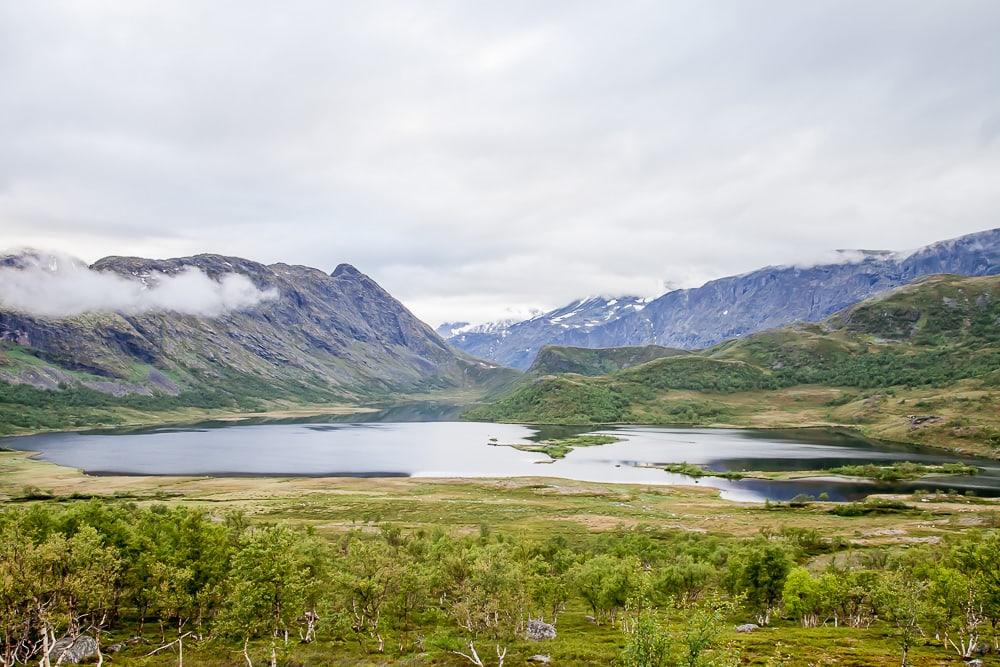
Norway Itinerary #2: Southwestern Coast
While incredibly popular amongst Norwegians, foreign tourists often aren’t too interested in Norway’s southern coast. In fact, I remember being so excited to take my English boyfriend and his friend to Grimstad and Arendal, but they were totally unimpressed.
I think the reason is that the south has really nice weather to Norwegians, but for most foreigners, it’s still fairly cold and they’d much rather see Norway’s famous mountains and fjords than cottages and sailing boats.
But there was one area of southern Norway that impressed my English friends – in fact, I’d say it’s one of the nicest parts of all of Norway. And that’s where you’ll be heading this week! If you’re into hiking and amazing landscapes, this itinerary is for you.
Day 1: Kristiansand – Mandal – Flekkefjord – Brufjell
Mandal is one of my favorite towns in Norway – again, especially in the summer. It’s just so picturesque! Here you’ll find a town center with cobblestone streets, cafés where you can eat outdoors, and colorful wooden houses perched at the edge of the water. It’s so lovely.
And then the driving from Flekkefjord to Brufjell in Åna-Sira is amazing . You can read more about Åna-Sira and climbing Brufjell here .
ACCOMMODATION NEAR BRUFJELL
If you want to be in Åna-Sira, stay at Logbua. Check current rates and availability here
If you want to be in a cute, quiet town, stay at the lovely Sogndalstrand Kulturhotell. Check current rates and availability here
If you’d rather be in a bigger town, stay at the very elegant Grand Hotel Flekkefjord. Check current rates and availability here
The Maritime Fjordhotel is right by the Grand Hotel and a bit cheaper (but still very nice!). Check current rates and availability here
Egenes Camping is right on the beach and especially good value if you’re traveling with several people. Check current rates and availability
You could also stay at this holiday cottage with four beds and a half bath. Check current rates and availability

Day 2: Brufjell – Stavanger
The start of this drive has possibly the most epic scenery I’ve seen in all of Norway. Seriously, the mountains here are so unique and simply incredible.
Then the road from Ogna to Bore is a National Tourist Road , and it’s worth stopping at the Kvassheim lighthouse and the beautiful Orrestranda beach.
I find the last bit into Stavanger sort of depressing as it’s basically the oil suburbs, but then Stavanger itself is a really lovely city worth wandering around – especially in the old town.
You could even spend an extra day exploring the old town in Stavanger, and even go sea kayaking around the archipelago .
ACCOMMODATION IN STAVANGER
If you like modern design hotels, you’ll love the newly renovated Radisson Blu Atlantic Hotel, right by the central station. Check current rates and availability here
Thon Hotel Stavanger is another beautiful modern choice, again right by the central station. Check current rates and availability here
Myhregaarden Hotel is on the higher end of mid-range, but I think this lovely boutique hotel is worth a bit of a splurge. Check current rates and availability here
Hotel Centrum Box offers basic rooms for amazing value considering how close it is to the city center. Check current rates and availability here
Stavanger St Svithun Vandrerhjem is a bit outside of the city center and not quite as good value as Hotel Centrum Box, but here you can have a private bathroom. It’s in a hospital, which makes for an interesting experience as well. Check current rates and availability here
There are also quite a few Vrbo options in Stavanger , like this dreamy seaside apartment , this modern studio downtown , and this beautifully renovated home .
Day 3: Stavanger – Ryfylke – Odda
This is one of the most famous drives in all of Norway, and for good reason. You’ll be passing by two of Norway’s most popular hikes, Pulpit Rock (Preikestolen) and Kjeragbolten, and then ending up near Norway’s third most famous hike, Trolltunga, which happens to be near one of Norway’s most beautiful fjords, Hardangerfjord.
See below if you want to add an extra day to hike Preikestolen or Kjeragbolten.
Odda doesn’t have great accommodation options (plus hotels in town book up really quickly because Trolltunga is such a popular hike), so I’d recommend staying somewhere along Hardangerfjord instead.
Hardanger Rom & Harmonium is in a lovely quiet town and run by the nicest owners. It’s not super budget, but it is incredible value for how nice it is. Check current rates and availability here
There are a few Vrbo options around Odda , like this ground floor apartment with stunning views , this apartment near Trolltunga , or this apartment near Trolltunga

Optional extra day: hiking Preikestolen, Kjeragbolten, etc.
Instead of heading straight to Odda on Day 3, you could instead stay somewhere along the Ryfylke route and do some hiking.
The two most famous hikes in the area (and in all of Norway) are Preikestolen , or Pulpit Rock, and Kjeragbolten – the giant boulder wedged between two mountains. Check here for all hiking options to Preikestolen (you can even go on a guided snowshoe hike in the winter!) and check here for all hiking options to Kjeragbolten .
ACCOMMODATION NEAR LYSEFJORD
If you want to stay near the hikes, I’d choose Wathne Camping for budget accommodation, Verkshotellet Jørpeland for mid-range accommodation, or Preikestolen fjellstue , right by Pulpit Rock, for luxury accommodation.
Day 4: Odda – Bergen
Day 5: bergen.
Leave the car in the car park and take the day to explore Bergen! You can find some things to do in Bergen in here .
And there are so many tours and activities offered in Bergen – in fact when you see how much you can do here you might just decide to add an extra day to your Norway trip. Check here for tours and activities in Bergen, and check here for adventure activity options (like zip-lining and helicopter tours!).
Day 6: Bergen – Hardangervidda – Rjukan
Okay, so the fastest way back to Kristiansand would be to get the highway back down the coast, overnighting in Haugesund or Stavanger. But if you really want to cram as much as you possibly can into your week in Norway, consider taking this longer, but oh so stunning route back to Kristiansand.
Today you’ll drive from Bergen over Hardangervidda, the largest plateau of its kind in Europe, which also happens to be home to one of the largest wild reindeer herds in the world. Part of this route is also a National Tourist Route in Norway. If you want to split this day into two, you could camp up on Hardangervidda.
And then you’ll finish the day in Rjukan, one of my favorite towns in Norway. You can read about Rjukan here .

Day 7: Rjukan – Kristiansand
This is another beautiful drive.
You’re going to start the hair pinned climb up towards Rauland, passing the Vemork Heavy Water Museum on your left as you’re driving out of town. And then you’ll then drive through Rauland (where I live!) and up the dramatic valley of Dalen down towards Kristiansand.
Norway Itinerary #3: Public Transport Route
And with this itinerary, you can explore Norway solely by public transport! Of course, if you want more flexibility you could do this route by car instead, with some modifications.
The most popular public transport itinerary for people spending a week in Norway is by far getting the train from Oslo to Bergen, then doing Norway in a Nutshell , and returning to Oslo again by train. Norway in a Nutshell is a fine route, but personally I don’t think it shows off Norway’s best sights, but instead just its most convenient ones.
This route covers more ground, and personally, I think it would give you a much better introduction to Norway.
Day 1: Oslo – Røros
Today you’ll get the train from Oslo to Røros.
Founded in 1644, Røros is one of the oldest towns of wooden buildings in Europe and is a UNESCO World Heritage Site. This old mining town is definitely on the tourist path, but it’s far enough inland that it still doesn’t get as many visitors as the stops along the fjord cruise route.
Røros also happens to be my mother’s favorite place in Norway! If you’re into history and cute towns, you’ll love it. I’ve written more about things to do in Røros here .

In Røros I’d recommend staying at Ålbyggården , which is housed in a beautifully renovated old barn and is conveniently just a 5-minute walk from the train station. This is actually one of my favorite places I’ve stayed in Norway, and is the perfect miss of culture and luxury. Check current rates and availability here

If you want a cheaper option, Solheim Pensjonat is also right downtown, looks really lovely inside, and has excellent reviews. Check current rates and availability here
Day 2: Røros – Trondheim
Get the train in the morning so you can have pretty much a full day to explore Trondheim – the first place I lived in Norway! To get started, try booking a customized tour with a local guide. You can check prices and availability here .
For more, you can check out my favorite things to do in Trondheim here .
I’ve written a list of the best hotels and hostels in Trondheim here .
Day 3: Trondheim – Kristiansund
Today you’ll either get the coastal express ferry from Trondheim to Kristiansund, which takes about 3.5 hours, or the Hurtigruten, which takes 6.5 hours. Coastal express tickets cost 680 NOK for adults and the Hurtigruten costs 700. And you don’t need to book the tickets in advance – you can just buy them on board with either cash or card.
Personally, I’d prefer to save time and take the express ferry, especially as while the Hurtigruten will be full of tourists, the coastal express is primarily used as a commuter service, so you’re unlikely to see any other tourists on board. But the schedule is a bit strange depending on what day you’re leaving, so you might have to get the Hurtigruten instead. You can find the coastal express schedule here and the Hurtigruten here (you’ll need to translate it with Google).
Then take the afternoon/evening to explore Kristiansund! I’ve written more about things to do in Kristiansund here .
My personal favorite stay in Kristiansund is the Thon Hotel Kristiansund . I stayed in their standard double room and it was right on the water with views of the ocean out all of the windows. It felt like being in a boat! And the breakfast was superb (even post corona).
Day 4: Kristiansund – Ålesund
Today you’ll get Bus 100 from Kristiansund to Ålesund ( Kristiansund trafikkterminal platform 2 to Rådhuset i Ålesund ). The journey takes just under four hours and goes through some beautiful landscapes.
ACCOMMODATION IN ÅLESUND
Luxury
Hotel Brosundet is in a beautifully restored Art Nouveau warehouse, with views out over the water. This would be my #1 recommendation for a luxury hotel in Ålesund! Check here for current room rates and more details
Scandic Ålesund is also directly on the waterfront and has huge, spacious, modern rooms, many with sea views. Check here for more details and current rates
Heart of Ålesund is a 3-bedroom luxury apartment right in – you guessed it – the heart of Ålesund. I personally love staying at apartments and pretending to be a local, but this place also offers all the luxury aspects of a hotel. It even has a jacuzzi! Check here for more details and current rates
First Hotel Atlantica is a four-star hotel in right on the canal in downtown Ålesund, but it offers surprisingly affordable mid-range hotel rates. Check current rates here
Scandic Scandinavie is located in an old Art Nouveau building from 1905, but its rooms are spacious and modern. Check current rates here
Budget
Ålesund Hostel offers dorm accommodation downtown. Click here to see current rates and availability
Day 5: Ålesund (Geirangerfjord)
Take the day to explore Ålesund and the surrounding area. You can find a guide to things to do in Ålesund here .
You could also take a fjord cruise/bus into Geirangerfjord, one of Norway’s most beautiful fjords, or even go kayaking through the fjord !
Day 6: Ålesund – Åndalsnes
Today you’ll take bus 681 to Åndalsnes – you can simply buy tickets on board the bus.
And then from Åndalsnes you can get the bus to Trollstigen or, if possible, I would actually recommend renting a car for the day to drive to Trollstigen and the surrounding area, as there are some great places to explore here. You could also book a tour, check rates and availability here .

The Grand Hotel Bellevue is right in the town center with beautiful mountain views. Check current rates and availability here
Åndalsnes Hostel is about a 30 minute walk from the station (where the bus drops you off) but it’s the closest budget friendly accommodation. Check current rates and availability here
Day 7: Åndalsnes – Oslo
Today you can just relax on the train back to Oslo. Be sure to book your train tickets as far in advance as possible (up to 3 months), as the tickets will be much cheaper, starting at just 249 kroner.
You can see my recommendations for the best hotels and hostels in Oslo here .
Getting to Norway
Lots of airlines fly into Oslo, so you shouldn’t have a problem finding good flights.
And if you’re on a budget you’re in luck – Norwegian is a budget airline with some of the cheapest connections between the US and Europe. I fly them all the time, just remember that it is a budget airline so you’ll have to pay extra for checked luggage, meals on board, and even water during your flight. I always bring several sandwiches and lots of snacks and a big water bottle that I refill at the airport (after security of course!) to tide me over.
Just be sure not to exceed the carry on luggage limit if you don’t pay for checked luggage with Norwegian, because they are super strict. My friend recently flew Norwegian to visit me in Norway and she had to pay $200 to check her bag at the airport. Not so budget!
I do love Norwegian, but sometimes you can find even better deals with other airlines, and if you do it’s definitely nicer to fly a non-budget airline. Luggage fees add up and it’s so much nicer to fly an airline with meals and drinks included.
My go-to for finding flights are Skyscanner and Kiwi.com. Kiwi.com especially is a sneaky travel hack tool that can find great connections that other search engines don’t include – I’ve written more about Kiwi.com and how to use it here .
You’ll probably be flying into and out of Oslo Gardermoen Airport which seriously is one of the nicest airports in the world. And guys, I travel for a living so I spend a lot of time in airports.
Pro tip #1: if you want to look like a local, head straight to the Tax Free shop once you land. It’s always funny getting off flights in Oslo because every Norwegian will go straight to Tax Free to buy alcohol, and it’s only the tourists that skip it, haha. But seriously, if you do want to drink in Norway and are on a budget, you’ll save a lot of money by picking up something here.
Pro tip #2: Don’t get the Flytoget, or Airport Express Train, into Oslo from the Airport. It’s only three minutes faster than the regional train and costs twice as much! Again, it’s only ever tourists who get the express (“express”) train while all Norwegians get the Vy (formerly NSB) train. You’ll see the Vy ticket machines on your right once you exit customs and you can buy your tickets there. You can also check the train schedule at vy.no .
What to Pack for Norway
The most important thing about packing for Norway is to bring lots of layers. The weather here is really unpredictable so it’s important to be ready for lots of different temperatures throughout the day.
I’ve written a complete guide for what to pack for winter in Norway here, and a guide to what to pack for summer in Norway here.
Want to see more of my travel photos? Follow me on Instagram here ♥
Want to see more of my travel videos? Subscribe on YouTube here ♥
Related Posts
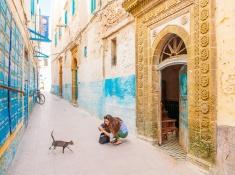
Reader Interactions
Get updates.
Subscribe to my newsletter for exclusive updates and stories from my world travels and life in Norway!
Jemy Massie says
May 19, 2018 at 6:23 am
Thank you, Silvia! This is the most helpful itinerary I’ve read so far.
Silvia says
May 19, 2018 at 1:31 pm
Happy you found it helpful!
Zoie @ Whisked Away By Words says
May 20, 2018 at 8:48 pm
I’ve discovered your blog about a week ago, when I was looking up tidbits about the Norwegian culture (since I’ve just started learning Norwegian 😊)… and I am absolute IN LOVE with your blog. It’s amazing that you’ve been to over 80 countries, but even more amazing that you’ve documented so many of your travels around the world. I lost myself in your posts about backpacking in Asia and Central Asia, which is what I want to do in my future — perhaps during my gap year after high school?
Anyways, it’s so inspiring to read about your travels and experiences wandering through this globe! I love the mix of storytelling and practical advice you have on this blog, and I can’t wait to read more about your adventures!
May 21, 2018 at 4:46 pm
Ah that makes me so happy! And a gap year in Asia sounds like an amazing idea – I’m actually always saying that I wish I had taken a little time off between high school and university.
The Stylish Traveler says
May 21, 2018 at 4:30 pm
Norway looks like such an incredible place to travel! Thanks so much for sharing your routes! I feel so inspired to plan a trip!
May 21, 2018 at 4:44 pm
It really is a dream – I hope you enjoy it as much as I do!
May 22, 2018 at 12:17 pm
Love your blog! Thanks! We are doing the exact same route by rented car of Itenary 1, day 3 early Sept, but in the opposite direction: Bergen to Odda. Google maps is giving me 135km and 2hr47min for that stretch on the exact route ( Bergen, Asane, Trengereid, Norbygda, Tysse, Eikedalen, Northeimsund, Torvikbygd, Jondal, gjetingsdalen, eitrheim, Odda). This is freaking me out now, as according to your google map it is 269km and takes 5hr39mins. I still need to travel up to Voss on the same day for our booked hotel accommodation. Can you please shed some light on what could be the difference in time and distance😱. I’m travelling with a two year old so I really need to plan well. Appreciate any help!
May 22, 2018 at 12:25 pm
That’s SO weird – I’ve reloaded the map and now it’s displaying correctly – 135 km is correct, and it shouldn’t take longer than 3 hours tops. Have fun!
May 23, 2018 at 1:24 pm
Fantastic!😅Soooo looking forward to our Norway trip early Sept travelling all the way from very sunny South Africa! I am basically following all your advice on the most scenic routes to take! Congrats with such an amazing blog! And thank you!
May 23, 2018 at 11:16 pm
Oh wow that is exciting! And I’m so happy you’ve been enjoying the blog, it’s always great to hear.
Deepak says
May 28, 2018 at 7:41 pm
Your blog is awesome … It’s so much of information and no one can miss anything .. thanks for the details intenerary .
I am planning to visit Norway in September last week . But I have 5 days . Can you please suggest me the best I can cover in 5 days if I start and end my trip in Oslo?
Previously I had plans to go via tourist operator for Norway in nutshell.. now after reading your blog I have made up my mind that I will be renting a car and driving on my own.
I will expect a reply from you or details in my mail so that I can plan accordingly .
Thanks in advance.
Regards, Deepak
May 30, 2018 at 5:53 pm
I would do the first itinerary and either return to Oslo on Day 5, or skip Day 4 in Bergen and return to Oslo on Day 6.
Patti D. says
May 31, 2018 at 3:56 pm
Does the buses and trains allow luggage? I am wanting to book my own Norway in a Nutshell and stay over in bergen, but wasn’t sure what if we can bring suitcases.
June 5, 2018 at 11:09 pm
Yes! I’m not sure if the public bus has a separate luggage compartment, but at least the trains have loads of room for luggage. A lot of people do the route with their suitcases, so you should be fine.
June 10, 2018 at 5:27 pm
hello there! thank you for all your insights! i’m planning to follow the first itinerary and wonders if there are any downsides to do this in the reverse direction? reason being ill depart from Oslo airport straight away and passing through Oslo on the first day doesn’t seem necessary. and do you think camping along this route is possible? could you write about camping in norway please? thank you again!
June 11, 2018 at 9:42 pm
I don’t see why you couldn’t do this in reverse. Camping along the route should be possible – you’ll just need to stay a bit outside of towns, or pay to stay at campsites. I’ve written a bit about camping here: https://www.heartmybackpack.com/norway/plan-road-trip-norway/ and here: https://www.heartmybackpack.com/blog/cheap-accommodation-norway-budget/
June 30, 2018 at 6:11 am
Hi Silvia.. Will be planning my trip next year to see Aurora borealis.. Any idea the best Month and location that can see this beautiful things. And road trip is more affordable than public transportation?? Is the food really so expensive?? Can Share more insight on yr trip and cost??
July 2, 2018 at 1:14 pm
You can find more information about seeing the aurora here: https://www.heartmybackpack.com/norway/tips-northern-lights-norway/ and here: https://www.heartmybackpack.com/blog/best-northern-lights-europe-abisko/ and information about transport here: https://www.heartmybackpack.com/norway/budget-travel-transportation/ and food here: https://www.heartmybackpack.com/norway/budget-eating-food/
July 4, 2018 at 3:53 am
Hi Silvia, Thanks for putting together amazing itineraries . I really like the itinerary #3. Can this be done completely by car and if so what modifications do you recommend?
July 4, 2018 at 10:59 am
Definitely! Then you can drive from Trondheim to Kristiansund instead of taking the ferry.
Andrew says
August 1, 2018 at 6:44 pm
Hi Silvia, first of all thanks for such a great blog. So much helpful information, especially on this page 🙂 we’re coming to Norway during the last week of August and basically will be roughly following your itinerary 1. However we have some doubts on day 5 & 6…as it seems that from Bergen you go to Lom, followed by Lom to Hjelle the next day. Is it possible to go from Bergen straight to Hjelle (via another route?) and then from Hjelle to Lom? We have to go back to Oslo on day 7 in any case, so it seems like this could save us some driving time. Any thoughts? Thanks again!
August 8, 2018 at 6:14 pm
This is just amazing Silvia , Great blog ! I really hope I have enough time to book and plan the trip accordoing To your itinerary at least for public transport route. Currently I have already booked the usual tour and visiting the tourist crowded hike and towns in this August . Hopefully I could revisit The beautiful Norway another time !
Jennifer Krier says
October 4, 2018 at 8:16 pm
We are a family of five (two parents and three young adult “kids”) and interested in visiting Norway, especially since my paternal grandfather, Richard Grimsrud, was Norwegian. Here’s the thing; we really prefer to stay in one place if possible, and to minimize our car time. We prefer to stay in a very small town or village where we can walk and swim (assuming it gets warm enough to swim in Norway!) and shop and eat at cute cafes and restaurants and get places mostly on foot. Is there any picturesque place that comes to mind that might be good for us? We hope to come from Boston in the summer. We also are really interested in culture and history. So appreciate hearing your thoughts!
October 6, 2018 at 12:30 pm
Check out this post: https://www.heartmybackpack.com/norway/where-to-go-in-norway/
October 13, 2018 at 2:20 am
Thank you for the really good tips and details. We are planning to visit Oslo in 2nd week of November for 3 nights.Initially we wanted to plan the train trip to Bergen and go for cruise explore nature but given its going to be winters maybe its better to decide once there. Can you suggest if its okay at least for the city break in November if not nature trip? And do you have any suggestions to make the best out of our visit in such weather? Appreciate all your help on this.
Elaine Mayer says
December 26, 2018 at 3:51 am
This is very helpful. We plan to take summer trip next year and believe we use one of the route. Thank you so much for put together these useful information.
January 31, 2019 at 8:40 am
Thanks for the great post. My family of four will have a one week stopover this June in Norway en route from Doha to Seattle. My ancestors come from around Bergen and it’s always been a dream to visit the Stolen family. My kids will be 3 and 5 at the time. They do not do too great on long road trips, but we definitely want to see the country and get to Bergen. We love the outdoors and are an adventurous family (traveled Albania, 30 days on camino del norte, Nepal, Sri Lanka, Turkey…). What would you recommend for a 6 day journey, getting to Bergen and getting outdoors? Are there perhaps two good spots where we can spend 3 nights in each? Thanks! Joe
February 2, 2019 at 3:20 pm
I don’t really know anything about traveling with kids, but maybe you can fly straight into Bergen and then rent a car and spend a few days somewhere along the fjord, like one of these places: https://www.heartmybackpack.com/norway/best-sognefjord-accommodation/
March 20, 2019 at 12:46 am
My family and I have about a week to travel from Oslo to Bergen. This will be in mid April. Our goal is to take our time and stay in a couple small towns and see natural beauty (and Norwegian culture!).
My research (and your blog) indicates that this whole area is great and it’s hard to go wrong. What would be your suggestion on the best route this time of year? Thanks so much!
March 27, 2019 at 12:15 am
I really want to take you up on your suggestions and skip most the cities. Most your itineraries include Oslo. Any recommendations on a 7 day trip flying into Bergen or Aselund. My wife and I, always happy skipping some of the more crowded hikes and dense tourist areas. We could only do a late May trip. You wrote a great post on Hardangerfjord, but it made us worried we should postpone Norway until a September trip was better for us.
Thank you! Rick
Hannah Thompson says
April 10, 2019 at 6:42 pm
Great page! We have a really short trip flying into Oslo on the 15th of May and flying back out from Oslo on the 20th. We have rented a car and want to get to Bergen and then back to Oslo on the evening of the 19th. Read many different suggestions but want to cram in as much as possible in only a 4 day car trip there and back. What do you suggest on the trip from Oslo to Bergen and then the route back from Bergen to Oslo? Want to see the nature, waterfalls, small towns, fjords, borgund church and then have enough time to explore Bergen. Thanks so much
Shyla Myrick says
May 10, 2019 at 7:30 pm
My husband and I are flying into Bergen in June and have about 5-7 days before heading to Stockholm. We like to have a home base and day trip out. We do like to avoid crowds when possible. From other travel sites I was considering Balestrand, but wanted to see if you had any other thoughts or better suggestions.
Thanks for your time!
May 17, 2019 at 8:27 am
Thanks for your amazing blogs. Just a quick question on travelling by public transport in Norway. Is it necessary to pre book train/cruises/ buses in the fjords or could it be done on the day of travel at the ticket counters?
May 17, 2019 at 6:41 pm
Yes, you should prebook everything (except some buses).
Padmapriya Sridharan says
June 21, 2019 at 1:32 pm
Hi Silvia, I’m traveling from India and I have a young 2 year old child. Is there a longer itinerary that I can perhaps refer to which can be done using public transport alone?
July 9, 2019 at 11:08 pm
Curious, do you have recommendations for what to do in Flam, and have you been to Hammerfest? Or Kristiansund? Those three are on my itinerary so welcome any feedback/ideas for things to check out!
August 25, 2019 at 9:36 pm
Thank you for all the info! I’m looking at itinerary #1 on here and was just trying to look up rental cars – how are the roads in Norway? Can I get a smaller, cheaper car or do you think I’ll need a 4×4? Thanks!
September 2, 2019 at 4:10 pm
A smaller, cheaper car will be fine.
Leelee says
September 23, 2019 at 3:41 am
Hi Silvia! Would you recommend adding Lofoten Islands to your 1st itinerary if we had 10 days? Instead of driving back towards Oslo, fly from Alesund into Harstad-Narvik airport (if that’s even a possibility)? We want to try and get as much in but I’m thinking we may not have enough time on this trip (1st part of September). Thanks for the advice!
September 23, 2019 at 11:43 am
You will have to pay a high fee for a one-way car rental, but if you don’t mind the added cost then I think you could manage to fit Lofoten in!
November 18, 2019 at 1:39 pm
Hi Silvia, thank you for the detailed article, it is very useful. Which option do you recommend doing in December (around Christmas time), we are thinking of renting a car.
December 9, 2019 at 10:47 pm
Hi Silvia, I have been looking up Norway itineraries for a while now and yours just seem perfect… And there is 3 to choose from now so thank you so much for writing about these. Just a quick question – Would we be about to do most of itinerary #1 in the first week of April? Or will roads be closed?
December 10, 2019 at 3:14 pm
They should all be open by April, unless there’s a crazy storm or something.
December 12, 2019 at 11:31 pm
Thanks so much Silvia.
February 6, 2020 at 9:38 pm
I’m planning a surprise trip with my fiance and trying to figure out the best and reasonably priced way to see Norway in 6 nights. It looks like a rental car would be crazy expensive. Based on your posts, it looks like Bergen, Geiranger, and Alesund would be stops we could probably make. Is it possible to have a good trip with this plan? Would I be able to take the rail system from Bergen to Geiranger, Geiranger to Alesund? I’m thinking we’d fly from Alesund back to Bergen. I’m trying to make the most of the 6 nights on this trip so if you have any suggestions or edits, that would be great and appreciated! I’m also open to traveling from Oslo as opposed to Bergen, but let me know what would be easier.
Thanks! Jerry
February 9, 2020 at 1:13 pm
Were you looking to pick up and drop off the car in different places? It’s much cheaper if you pick up and drop off in the same place. The train line doesn’t go between Bergen and Geiranger (you can check the train map here: https://www.vy.no/globalassets/vy.no/filer-no/linjekart/nye-linjekart/linjekart-vy-norge.pdf ) so you would need to take a bus instead. I don’t like the village of Geiranger that much, but the area around that fjord is beautiful. I have some recommended places to stay here: https://www.heartmybackpack.com/norway/best-geirangerfjord-hotels/ Have a great trip!
Suzy Zid says
February 11, 2020 at 2:24 am
Loving this post and your blog generally! I am planning to do a week of road trip in Southwestern Norway this September.
I would like to ask regarding the 1st itinerary for the route back from Hjelle to Oslo, you said to take route through Beitostølen. I tried doing that on Google Map, setting to depart in September so the road should be open. Apparently, the road is one-way, that is, from Beitostølen to Hindsæter only and not possible for the other way around. Could you please advise on this or any other scenic route for from Hjelle to Oslo? Thank you so much!
Sarute L. says
February 17, 2020 at 7:14 am
Thank you for taking the time to put all these tips down in writing.
A quick question on cruises through Geirangerfjord (or any other fjords, if you have been on them). 1. Are they worth taking, or are views throughout the drive equally as spectacular? 2. Do you recommend taking the cruise through Geirangerfjord from Alesund or Geiranger? (I know you’re not a big fan of the Geiranger town).
Much appreciated once again.
February 17, 2020 at 10:59 am
Personally I prefer the views from the road, but I also get seasick very easily, haha. I would do whichever works better in your schedule as you’ll get similar experiences, but if I had to choose I would take the cruise from Alesund.
Santosh says
June 21, 2020 at 4:01 pm
First of all, great piece of information. Already feels like I know so much about the place. What places would you suggest if one has 10 days to explore Norway, flying in & out of Oslo, will be using public transport & have to have Lofoten in itinerary.
Also, do you have any ideas about renting motorcycles in/around Lofoten islands.
Bigg thanks for the advice in advance.
June 23, 2020 at 5:05 pm
If you only have 10 days I would head from Oslo up to Lofoten – you can get the train to Bodø and rent a vehicle there and get the ferry across to Lofoten. On the train up you could stop in Røros and Trondheim and maybe Mosjøen – I have guides to all of them on my blog, so check them out and see what looks interesting!
Chelsea Kalyn says
September 28, 2021 at 3:56 am
WOW I have spent at least 3 hours clicking through a TON of these Norway posts. Any recommendation for a 2 week itinerary. Ideally start and end in Oslo. I’m thinking renting a car will be the best bet. I for sure want to hit all of the “typical” tourist sports such as trolltunga hike but want off the beaten path places to visit as well (a good mix of both). I won’t have camping equipment so will need cities to stay in overnight.
Any must see hikes in your opinion?
I’m thinking June for a time frame would there be a good place to spend midsummer’s festival and when is it in Norway?
Laetitia says
April 26, 2022 at 5:52 pm
Thanks for this excellent blog.Huge information very interesting.
We plan our Norway road trip for 20 days (19 nights) in July. Below our program. My question is about time to drive to all these destinations and if we should skip some of them to stay more time in the main “must-see sites”.
Any thoughts?
Really appreciate all your help on this and thanks for your time
1 Hirtshals Larvik (Ferry) – Oslo 2 oslo oslo 3 oslo Lillehammer – otta 4 otta Trondheim 5 Trondheim kristiansund 6 kristiansund Alesund 7 Alesund Geiranger 8 Geiranger Geiranger 9 Geiranger hellesylt – loen 10 loen sogndal 11 sogndal flam 12 flam bergen 13 bergen bergen 14 bergen odda 15 odda odda (Trolltunga hike) 16 odda stavanger 17 stavanger stavanger 18 ??? ??? (to program, no decided yet) 19 stavanger Kristiansand 20 Kristiansand Hirtshals (Ferry)
June 21, 2022 at 9:25 am
Just got back from a week in Norway and followed your itinerary from Oslo to Bergen and back. Great recommendations with some hidden gems that we wouldn’t have seen otherwise. The highlight was our stay in Aurland/Flam and the fjord cruise. Thanks for the info and inspiring a memorable family vacation.
July 27, 2022 at 6:21 am
Hi! I found you from tiktok and thought this blog was very helpful! Is there a route you’d recommend for our trip? We are flying into Oslo and flying out of Bergen for a 7 day trip next month. We are a young active couple looking forward to hiking 🙂
July 28, 2022 at 9:09 am
I would do the first itinerary!
August 9, 2022 at 1:55 pm
I’m planning a roadtrip in Norway based on your itinerarys #1 and #2, but I don’t have more than 4-5 days. Living in Stockholm I’m thinking I could fly to Bergen, rent a car, follow your day 1 for itinerary #1 to Sogndal, but instead of continuing to Lom go straight north to Loen (or thereabouts). After that Geirangerfjord (via Gamle Strynefjellsvegen) – Åndalsnes (Trollstigen) – Ålesund. Return the car in Ålesund (if possible) and fly home to Stockholm. Does it sound like a feasible/sensible (first time) trip to Norway in max 5 days?
August 9, 2022 at 2:33 pm
Yeah that sounds like a great plan, however returning the car in Ålesund is going to be really expensive. If you need to cut it shorter, I would skip Ålesund and just do Sognefjord and Geirangerfjord from Bergen and then return to Bergen.
August 9, 2022 at 4:04 pm
Thanks for the reply! I checked Sixt and you’re right, it’s seems to be really expensive. I guess I’ll have to rethink and decide whether I want to use Bergen or Ålesund as my starting point.
Bekah Knudson says
September 13, 2022 at 11:36 pm
My husband and I (from Texas) just returned from Norway and I pretty much used your blog as my Bible while planning. We used your recommended itinerary (the first one) and we had AN AMAZING TIME. I wanted to come on here and thank you, because I think the only reason we were able to get so much from our trip was by following your suggestions.
We flew in to Oslo and ended in Ålesund. We are obsessed with how beautiful Norway is, and how each day had something totally different to offer. We were super prepared for rain, but we lucked out and it was sunny skies the whole time we were there and beautiful temperature. The only time we strayed from your itinerary was in Lom. We took route 55 and it was closed due to an avalanche! So we ended up staying in Bøverdalen since there’s not an easy way around that. We just got to enjoy the mountains an extra way as we drove back down and around.
We met so many wonderful people. The culture in Norway is so different from America – very kind, friendly and selfless. My husband’s great grandparents were Norwegian and immigrated to North Dakota from Stavanger (which we didn’t make it to) but it was fun getting to see his heritage and a lot of people noticed our last name was Norwegian. That was probably the first time since I’ve been married that I’ve heard anyone pronounce it correctly! 🙂
All of the hotels we stayed in were INCREDIBLE. We mostly booked your suggestions, unless they didn’t have availability. The whole time we were there I was constantly saying “Ohhh, I remember Silvia saying this or that..” haha
So, THANK YOU SO MUCH for helping us have the experience of a lifetime. It was my first time leaving the USA, so your blog helped everything go incredibly smooth and helped us prepare greatly.
September 14, 2022 at 12:01 pm
Oh wow, I’m so happy that you had such an incredible trip! And that you found my suggestions useful. Thanks so much for telling me!
Laura S. - Western MA says
January 17, 2023 at 6:36 pm
Hi Silvia, These itineraries are terrific, thank you for sharing. We’re interested in spending 3-4 days taking day hikes from a home base small city or small town. So we can hike during the day and come back to someplace for meals, with maybe coffee shops, bakery, etc. Do you have a suggestion for a great home base?
January 17, 2023 at 8:47 pm
Ålesund/Sæbø or Sakrisøy in Lofoten! https://www.heartmybackpack.com/norway/alesund-travel-guide/ https://www.heartmybackpack.com/norway/hjorundfjord-norway-beautiful-fjord/ https://www.heartmybackpack.com/norway/lofoten-road-trip/
Alisha says
April 9, 2024 at 11:19 am
Do you think instead of doing Bergen – Flåm – Gaupne – Lom I can do Bergen – Flåm – Hjelledalen? I am short on time!
April 9, 2024 at 11:24 am
Sue Hendrix says
August 19, 2024 at 6:53 pm
HI Silvia, I just discovered your blog and it is SO helpful! My husband and I will be in Norway May of 2025 and would like do to your Cultural Heritage route including Alesund. My question is, would it be possible to do this itinerary renting an electric vehicle? Are there charging stations in some of the smaller towns? Or would we be better off to rent a hybrid or gas vehicle. Thanks so much!
August 20, 2024 at 9:19 am
There are charging stations all over, so you should be fine! You can see a map of the charging stations here: https://elbil.no/lade/ladestasjoner/#h-ladekartet
Leave a Reply Cancel reply
Your email address will not be published. Required fields are marked *
Once a full-time nomad, I'm now trying to find a balance between continuing to explore off the beaten path places around the world while also building a home in Norway. Want to know more? Head to my About page !
COME AND GET IT!
Subscribe to my newsletter for exclusive updates and stories from my world travels and life in Norway:

Norway Travel Guide
Last Updated: September 17, 2024
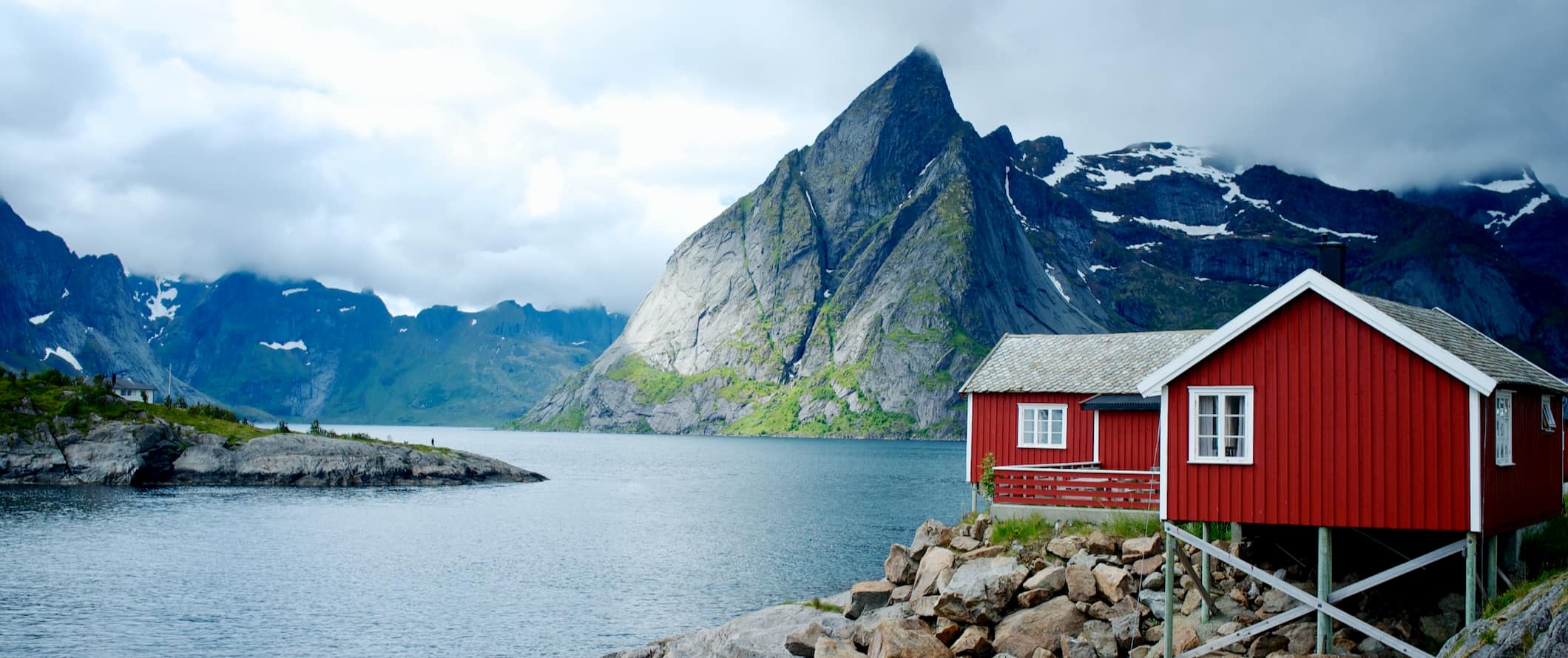
When traveling Europe , a lot of people skip visiting Norway because of how expensive it is. While it’s true that Norway is not a budget-friendly destination, it is one of the most beautiful countries in the world, rivaling iconic destinations like New Zealand and Iceland when it comes to natural beauty.
To top it all off, Norwegians are wonderful people, almost everyone speaks fluent English so it’s easy to navigate, and the scenic fjords are never far from sight.
And, since Norwegians love nature, there are a lot of free outdoor activities that can fill your days without emptying your wallet. Wild camping is also free here as well, making it the perfect destination for outdoorsy travelers.
I’ve loved all my visits to Norway. I am always blown away by the landscape, architecture, and friendly people. It’s definitely not a country to be missed, even if you are on a budget.
Use this travel guide to Norway to plan your trip, save money, and make the most of your visit to this beautiful nation!
Table of Contents
- Things to See and Do
- How to Stay Safe
- Where to Stay
- Typical Costs
- Suggested Budget
- Money-Saving Tips
- How to Get Around
- Best Places to Book Your Trip
- Related Blogs on Norway
Click Here for City Guides
Top 5 things to see and do in norway.
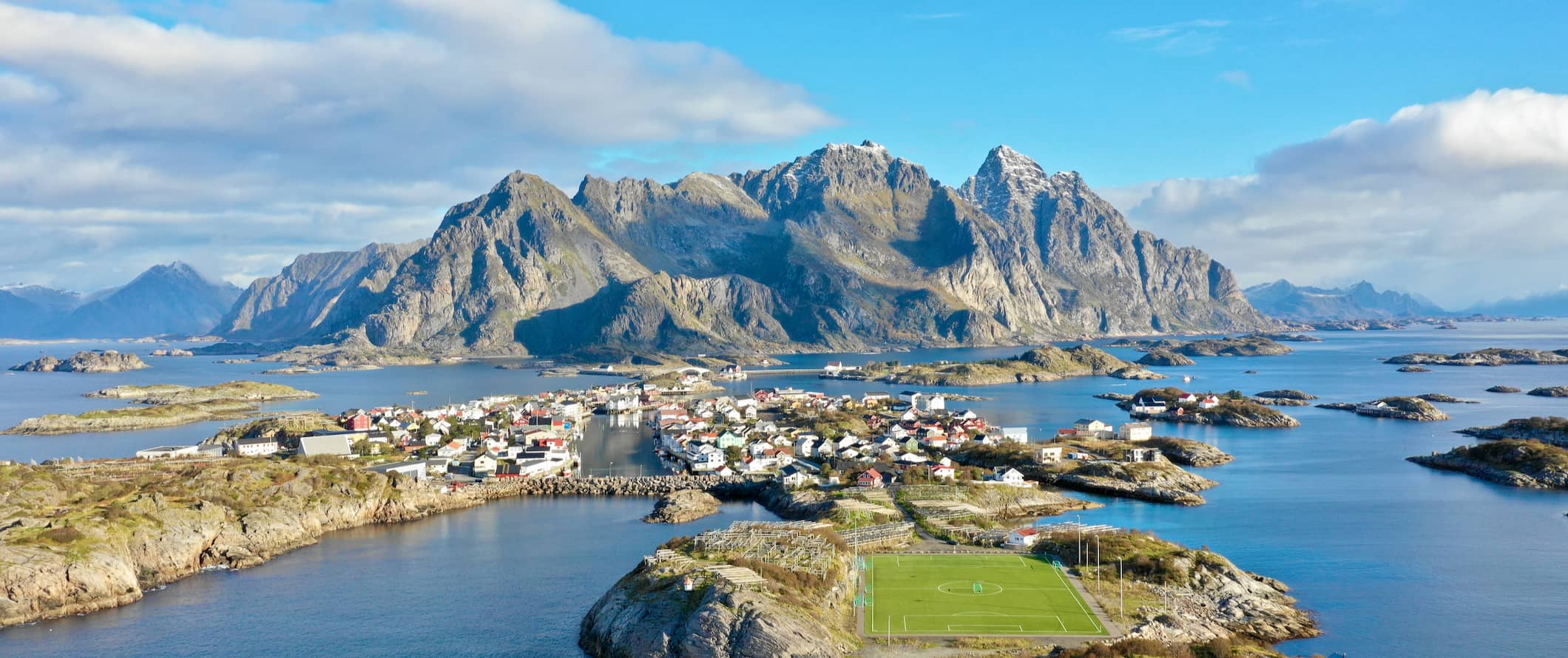
1. Check out the fjords
Surrounded by high cliffs, the fjords of Norway are world renowned and breathtakingly beautiful. Geirangerfjord and Nærøyfjord near Bergen are two of the most popular. Other fjords worth seeing include Aurlandsfjord (near Flåm), Lysefjord (near Stavanger), and Trollfjord (near Tromsø). There are tons of ways to experience Norway’s natural beauty whatever your style is, from doing a fjord cruise , a kayaking tour, or going on a scenic hike to fully take in the unique landscapes.
2. Explore Oslo
Oslo is a beautiful small city of just under 700,000 people. Here you can browse the National Gallery, explore the Akerhus fortress, check out the Viking Ship Museum, see the Royal Palace, spend an afternoon strolling the Aker Brygge wharf, or sail around the city on a boat tour . Don’t miss Vigeland Sculpture Park either, with its 200 unique statues. The city is also surrounded by wilderness, offering plenty of places to hike, bike, swim, and camp (and, of course, cross-country ski in the winter).
3. Visit Bergen
Bergen is home to tons of hiking trails as well as some of the most scenic fjords in the country. Check out the fish market, stroll through the historic Gamle Bergen, climb the medieval Rosenkrantz Tower, or hike up Mount Fløyen to get a picturesque view of the city below. Just two hours outside Bergen, you can enjoy the guided walks (suitable for all levels) on the Folgefonna Glaciers and marvel at the colors of the spectacular “blue-ice” hike. Folgefonna National Park, home to the massive golden eagle, is accessible by public transportation too.
4. See Lofoten
Lofoten is a picturesque scenic area in the far north well worth the effort (and cost) to get to. There are beautiful fjords to cruise , mountains, wildlife, and a slower pace of life that makes this place seem magical. Plus, there’s no shortage of activities to take advantage of, from excellent fishing and plenty of opportunities for kayaking, photo tours, sailing trips, horseback riding, and more. This is also one of several spots to see the Northern Lights mirrored in the water of this unique archipelago. It’s one of the most sought-after photography destinations in the world.
5. Tour Trondheim
Known for its bright and colorful buildings, Trondheim is a laid-back city filled with students. Located in the middle of the country, it’s a fun destination to party and enjoy late nights out. Be sure to take a stroll through the Bakklandet neighborhood, see the Old Town Bridge, and visit the spectacular medieval Nidaros cathedral that has attracted pilgrims from Oslo for the last 400 years. The Rockheim culture center is a tribute to the history of Nordic rock music from 1950 to the present with interesting interactive exhibits and displays. If you visit in winter, don’t miss the Ice Domes (an ice hotel that you can visit on a tour or stay at overnight — for a hefty price!).
Other Things to See and Do in Norway
1. take a free walking tour.
One of the best things you can do when you arrive in a new city is to take a walking tour. It’s a great way to get the lay of the land and learn about the culture, people, and history of the destination. You can find free walking tours in Oslo and Bergen — tours that give you much more insight than any guidebook. Just be sure to tip your guides at the end!
2. Hike to the Preacher’s Pulpit
Preikestolen (Preacher’s Pulpit or Preacher’s Chair) is one of the most famous landmarks in Norway (you’ve probably seen it on Instagram). An unusually flat and wide surface located atop a cliff, the iconic Preikestolen is only reachable by hiking a 4-kilometer (2.5-mile) trail. With around 200,000 visitors per year, you’ll want to make sure you arrive early in order to take some photos without all the crowds. The hike is free and relatively easy though you’ll need to pay 250 NOK to park your car. June-September is the best time to go. Guided hikes of Preacher’s Pulpit (with transportation) start at 990 NOK.
3. See the stunning national parks
Norway is host to some of the most spectacular natural beauty in the world. With 47 national parks (and over 3,000 protected areas), Norway offers everything from waterfalls and glaciers to reindeer, lynx, and wolves — and much more! You can also enjoy all sorts of outdoor activities, from caving and canyoning to rafting and ziplining. Consider a visit to Jostedalsbreen National Park, home to the largest glacier in continental Europe; Blåfjella-Skjækerfjella National Park, which has tons of hiking and also lots of wild reindeer; or Jotunheimen National Park, which is home to over 200 mountains you can hike and climb. The national parks are all free to enter (though there are fees for parking).
4. Journey to the North Cape
The northernmost tip of Europe, Norway’s North Cape is great for hiking, trekking, road trips, and more. Located almost 2,000 kilometers (1,242 miles) from Oslo, here you can explore the jagged coastline of Finnmark county, which includes six national parks. In the summer, the midnight sun shines for 2-3 months straight (May-July), while in the winter there are 2-3 months of complete darkness (November-January). You don’t get more remote than this!
5. Explore Tromsø
Perfect for a 24-hour party, Tromsø in the summer is a city that doesn’t sleep because the sun is up 24/7! Located in the Arctic Circle over 1,700 kilometers (1,056 miles) north of Olso, tourists come here to experience unbroken sunlight amidst the city’s many pubs. Or, if you happen to visit in the dark and cold of winter, you can catch the vibrant northern lights . It’s also a world-famous fishing destination and home to incredible, postcard-perfect fjords. Like Lofoten, this is one of the best destinations in the country for photography.
6. Enjoy some winter sports
Norway is one of the top ski destinations in the world. Rauland, Geilo, Skeikampen, and Hemsedal are all great options for snowboarding, telemark skiing (which mixes Alpine skiing and Nordic skiing), and 2,600 kilometers (1,615 miles) of cross-country skiing paths — and they’re all just a few hours from Oslo. Lift tickets range from 300-450 NOK per adult. Expect to pay more on the weekends (the slopes are busier on the weekends too).
7. Eat at the Bergen Fish Market
Open daily, this market offers more than just fish. Come here for a glimpse into the local culture and history of the city (this market dates all the way back to 1200 CE). Explore the many stalls, snap some pictures, and check out the waterfront. It’s just a short walking distance from many museums and galleries too (the Art Museum, the Hanseatic Museum, and the Leprosy Museum are all nearby). If you have access to a kitchen, grab some fish to take back for dinner. It’s one of the more affordable places to buy fresh fish in the city.
8. See the Vigeland Sculptures
If you are in Oslo, don’t miss these sculptures. Located in Frogner Park, this unique collection is the world’s largest display of sculptures created by a single artist. Gustav Vigeland created all 212 statues in this 80-acre open-air “gallery.” It’s one of the most popular places in the summer to have a picnic, relax, people-watch, and enjoy the fleeting summer sun. It’s free too.
9. Stroll around Gamle Stavanger
One of the oldest parts of Stavanger, this area is composed of narrow cobblestone streets lined with old wooden homes built during the 18th century. Taking a walk down here is like stepping back in time. After World War II, all of the city’s wooden buildings were replaced with concrete and stone buildings — except for this section. Be sure to check out the various paintings, pottery, and other artisanal works by local artists in the area.
10. Check out the Royal Palace
Built during the first half of the 19th century, the Royal Palace in Oslo was the creation of King Charles III who ruled both Norway and Sweden at that time. Today, it’s the official residence of the monarch (Norway is one of a dozen countries in Europe that still has a monarch). Be sure to see the changing of the guards at 1:30pm each day (it lasts around 40 minutes) and spend some time relaxing in the 54-acre park that surrounds the palace. The palace is open during the summer for guided tours (self-guided tours are not permitted) which cost 175 NOK. (Currently closed for guided tours until June 2023).
11. Wander the Ringve Music Museum & Botanical Garden
Located in Trondheim, this unassuming museum has an awesome collection of unique musical instruments from all around the world (there are over 2,000 in the collection). The museum is in the botanical gardens so there are 32 acres of plants and trees to see as you stroll around. The museum also has rotating exhibits from time to time so check the website to see if anything is on during your visit. Admission is 140 NOK and children under 15 enter free. Closed Mondays.
12. Visit the Norwegian Folk Museum
There are many museums throughout Oslo showcasing Norwegian history and Viking tales, but this is the most interesting. Home to over 150 buildings, this open-air museum lets you immerse yourself in the history of the country. The biggest attraction is the Gol Stave Church, which dates to 1200 CE. Other incredible sights to see are the 14th-century farmhouses and the 18th-century tenement buildings. This is a fun activity that blends entertainment and education, so it’s a great choice for anyone traveling with children. Admission is 180 NOK in summer and 140 NOK in winter.
13. Attend Stavanger’s jazz festival
Held every May, MaiJazz is a weekend-long festival featuring some of the most well-known jazz artists in the world. The city gets bustling and crowded so be sure to book your accommodation well in advance. The weather might be balmy as well so make sure you bring a coat too. Ticket prices vary for each performance (you pay per performance, not for a festival ticket). Most are between 450-750 NOK.
14. Hike Trolltunga
Located 4 hours from Bergen, this is one of Norway’s most famous hikes. Trolltunga (which means “troll’s tongue” in Norwegian) is a 12-hour hike that takes you to a long outcropping of narrow stone that towers over the landscape (the rock looks like an outstretched tongue, hence the name). The journey is challenging but the reward is one of the most scenic views in the entire country. You can only access the hike from June-September without a guide (you need a guide for the other times of the year). Parking is 600 NOK per vehicle but be aware there are also toll roads en route.
For more information on specific cities in Norway, check out these guides:
- Bergen Travel Guide
- Oslo Travel Guide
How to Stay Safe in Norway
Norway is one of the safest countries in the world. In fact, it ranks 17th on the ranking of the world’s safest countries! However, in cities like Oslo, it’s still good to keep an eye out for pickpockets, especially around the train station and on public transportation. Incidents are very rare, but it never hurts to be aware of your surroundings.
Solo female travelers should generally feel safe here. However, the standard precautions apply (never leave your drink unattended at the bar, never walk home alone intoxicated, etc.) but it’s unlikely anything will occur. Check out one of the solo female travel blogs on the web for more specific information on safety.
If you go hiking, always bring water and sunscreen. Be sure to check the weather before you go as well.
If you rent a car, don’t leave any valuables in it overnight. While break-ins are rare, it’s better to be safe than sorry.
Scams here are rare here but you can read about common travel scams to avoid here .
If you experience an emergency, dial 112 for police, 110 for fire, and 113 for ambulance services.
At the end of the day, always trust your gut instinct.Make copies of your personal documents, including your passport and ID as well. It never hurts to be prepared!
The most important piece of advice I can offer is to purchase good travel insurance. Travel insurance will protect you against illness, injury, theft, and cancellations. It’s comprehensive protection in case anything goes wrong. I never go on a trip without it as I’ve had to use it many times in the past. You can use the widget below to find the policy right for you:
Where to Stay in Norway
Hostels are not all that plentiful across Norway (they’re usually just in the larger cities) so be sure to plan accordingly. Here are my suggested places to stay while you’re in Norway:
- Tromsø Activities Hostel (Tromsø)
- Anker Hostel (Oslo)
- Cochs Pensjonat (Oslo)
- HI Bergen Hostel Montana (Bergen)
- Lillehammer Hostell (Lillehammer)
Norway Travel Costs
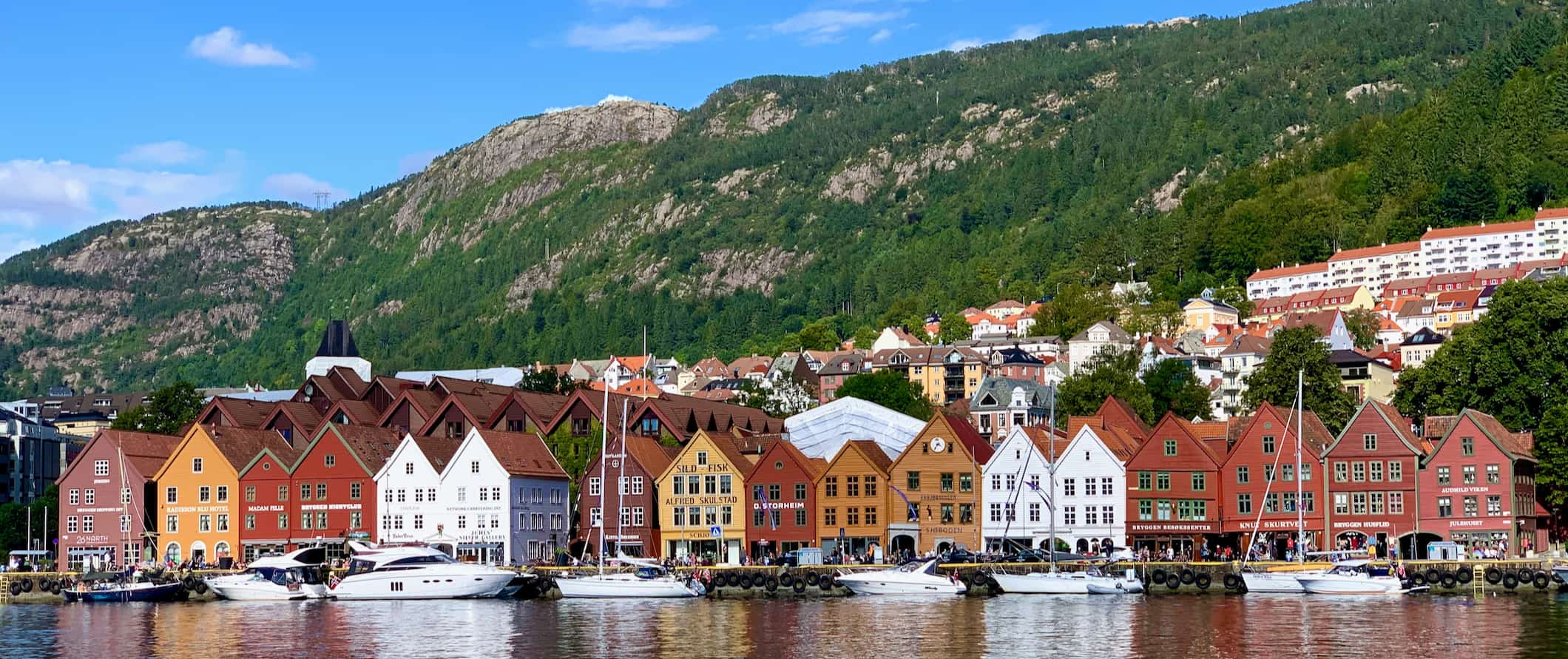
Accommodation
- Hostel dorms – 300 NOK per night
- Hostel private rooms – 700 NOK
- Budget hotels – 700-1,200 NOK
- Airbnb private rooms – 500 NOK per night
- Airbnb apartments – 750 NOK per night
- Campsite – 150-350 NOK per night (wild camping is legal)
- Street food – 45 NOK
- Sit-down restaurants – 200-400 NOK
- Casual take-out places – 110-150 NOK
- Fast food (think McDonald’s) – 120 NOK
- Beer – 95 NOK
- Cappuccino/latte – 45 NOK
- Bottled water -30 NOK
- Groceries for a week – 725 NOK
Norway Suggested Budgets
Backpacker – 600 nok per day.
On a backpacking budget, you can stay in a hostel dorm, cook all your meals, take public transportation to get around, limit your drinking, and do free activities like swimming and hiking. If you plan on drinking, add 50-150 NOK per day to your budget.
Midrange – 1,500 NOK Per Day
On a midrange budget, you can stay in a private hostel room or Airbnb. You’ll be able to eat out for some meals, take the occasional taxi to get around, enjoy a couple of drinks, and do paid activities like museum visits or opera performances.
Upscale – 2,600 NOK Per Day
On a “luxury” budget, you can stay in a hotel, eat out for all your meals, drink more, rent a car to get around, and do more paid activities and guided tours. This is just the ground floor for luxury though. The sky is the limit!
Norway Travel Guide: Money-Saving Tips
Norway is expensive. There’s no two ways about it. It’s one of the most expensive countries in the world and you will be hard pressed to save money if you aren’t cooking all your meals or camping. Ultra-budget is not impossible, just difficult. Here are some tips to help you save money in Norway:
Bring a reusable water bottle – The tap water in Norway is super clean, so bring a reusable water bottle to save money and lower your plastic usage. LifeStraw makes a bottle with a built-in filter so you can always ensure your water is clean and safe.
Cook your own food – Food is very expensive in Norway so the best thing you can do is cook your own meals. Go grocery shopping and stick to cheap local staples. Avoid eating out!
Eat cheap – If you do decide to eat out, your cheapest options are shawarma and pizza. They can be found all around the country.
Couchsurf – Use Couchsurfing to connect with locals and get free accommodation. It’s the best way to save money and make new friends who can share their insider tips and advice.
Camp – Free public camping laws allow you to wild camp in the parks and public lands for free. You can generally stay 1-2 nights in an area as long as you are quiet and respectful. Make sure to leave the area as you found it!
Get a tourism card – The best way to afford all the attractions in a city is to get a city tourism card. Oslo and Bergen both have tourism cards that can save you money if you plan on seeing a lot (they include free public transportation too).
Book in advance – If you can plan your transportation in advance, you can save up to 50% off the cost of your train or bus tickets. Buying last-minute tickets means it’s going to be more than any budget traveler can afford, especially if you want to visit a number of destinations in Norway. Book in advance and save money!
Stay sober – At 100 NOK per drink (or more!), going out for drinks destroys your budget. While Norwegians love to go out and have a good time, if you are on a tight budget, skip the booze!
Buy your drinks at the store – If you do plan on drinking, buy your drinks at the Vinmonopolet (the state-run chain of stores that sell alcohol). You’ll save 50% or more doing this!
Travel with friends – If you rent a car (which is the best way to get around) try to find people to join you to share costs. You can use the Couchsurfing platform or just ask around in hostels to find people. This will help you save money on gas and rental prices — which can eat into your budget quickly!
Take advantage of free activities – While Norway is expensive, there are plenty of free activities to be enjoyed. Check out the festivals and free concerts held in Bergen’s church areas that attract many international musicians. Take advantage of free admission to the national parks and spend your days hiking outdoors in the fresh Nordic. Oslo might be an expensive capital but you can still wander around Ekebergparken park, the Intercultural museum, or visit some art galleries and ruins without breaking the bank.
How to Get Around in Norway
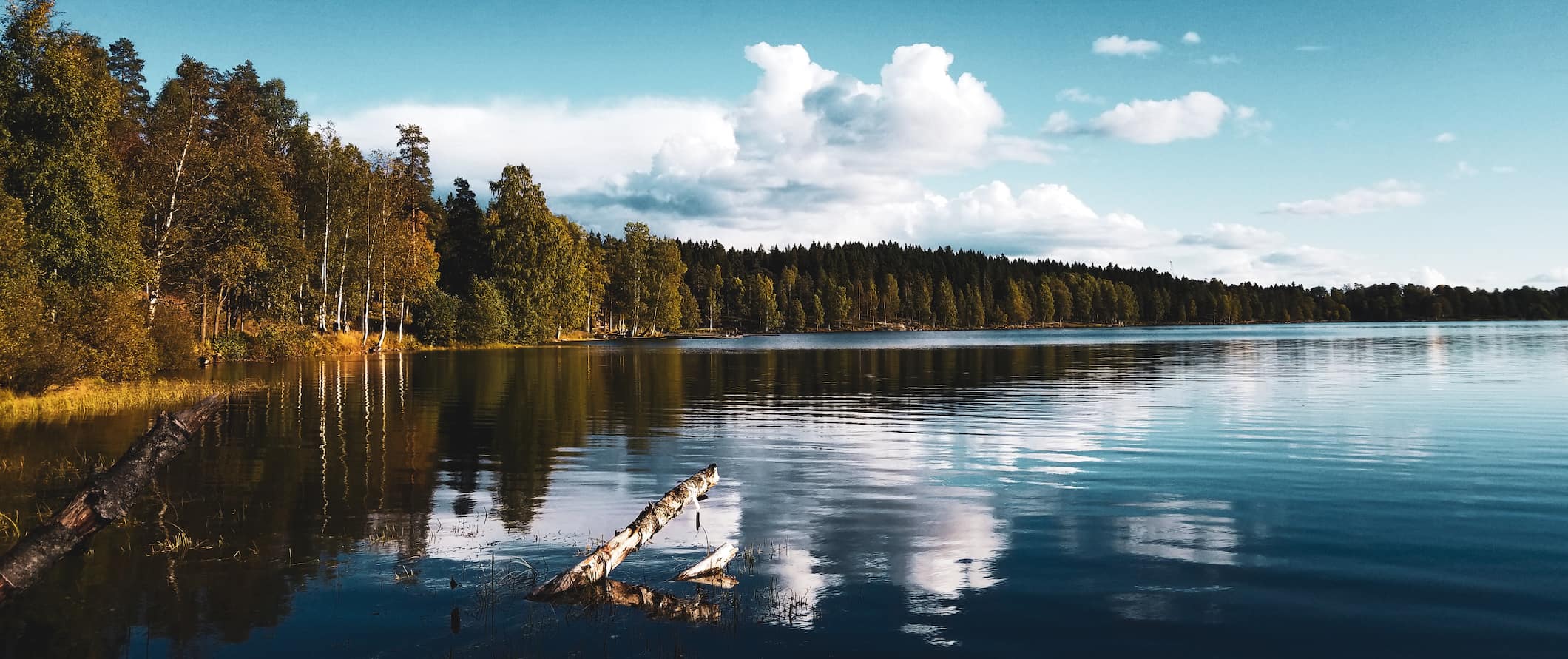
Public transportation – Public transportation in Norway is modern, clean, and reliable. Buses and trams are common in each city; only Oslo has a metro system. Single tickets cost around 39 NOK and are usually valid for one hour. You can get a 24-hour pass in Oslo for 117 NOK and a 7-day pass for 323 NOK.
You are able to get on most buses and trams without showing a ticket, however, patrols are common and the fines are heavy if you get caught without a ticket. Don’t risk it — always buy a ticket!
Bus – Buses are a cheap way to get around the country, though they are slow and rather limited since the distances between cities can be large. For example, the 8-hour journey from Oslo to Stavanger costs around 115-450 NOK each way while the bus from Oslo to Trondheim takes around 9 hours and costs around 780 NOK. Prices can double when not booked in advance.
Vy Buss is the most common bus company, though you can also find deals with Nor-Way Bussekspress and Flixbus .
Train – Trains are the best way to get around Norway (unless you’re on a road trip). They are often faster than buses without costing much more — and they are much more comfortable. The 7-hour trip from Oslo to Trondheim costs as little as 360 NOK while the 6.5-hour trip to Bergen from Oslo can cost as little as 290 NOK. The trip from Oslo to Gothenburg, Sweden takes under 4 hours and can be done for less than 250 NOK.
Reservations should be made in advance as you can often find great deals that way. Last-minute tickets can be double what I quoted above!
Flying – Flying around Norway isn’t super cheap, but it’s also not that expensive. From Oslo, you can reach most destinations in the country (as well as destinations in Sweden) for as little as 500 NOK (one way) if you book early and are flexible. Norwegian Air is the main domestic carrier, though SAS also flies several major routes.
Car Rental – Renting a car is the best way to explore the country, however, it’s not cheap if you’re a solo traveler. Expect to pay 470-900 NOK per day for a vehicle if you rent for at least a week. Most rental vehicles are manuals as well, so keep that in mind when renting (you usually have to pay more for an automatic). If you don’t have someone to travel with to keep costs low, check at the local hostels or on Couchsurfing to find people to travel with so you can split costs.
For the best car rental prices, use Discover Cars .
Hitchhiking – Hitchhiking here is possible in Norway though it’s not very common. Make sure you’re near a main road and be prepared for the weather to change rapidly. Also, try to look presentable and have a sign. Wait times can be long so make sure you have flexible plans. HitchWiki is the best website for additional hitchhiking info.
When to Go to Norway
The ideal time to visit Norway is from June to August when the weather is warm and the days are long. The country is at its liveliest during this time and locals take advantage of the good weather at every opportunity. The parks are always full, and there are usually fun events happening on the weekends. Temperatures are often in the 20s°C (60s and 70s°F) during the summer. Not too hot, but warm enough to swim, hike, and lounge about.
The downside to visiting then is that, since Norway has a very short summer, the cities can get busy so be sure to book your accommodation in advance. That being said, “busy” in Norway is a far cry from “busy” in cities like Paris or London.
The shoulder season (May-June and August-September) makes for a good time to visit as well, with temperatures ranging from 4-10°C (40-50°F). May typically has decent weather with occasional rain, while September gives you cooler temperatures and changing leaves. You’ll beat the crowds and still be able to explore on foot without the weather getting in your way (too much).
Attractions begin to close around September/October (including some hiking trails). The days get dark early in October and temperatures start dropping around this time too. However, prices also decrease and you’re likely to find cheaper airfares and accommodations during this time. Be sure to pack layers (and rain gear) if you plan on visiting during this time of year as it can be quite cool — even during the day.
The winter is very cold and sees a lot of snow and darkness. Temperatures plummet below freezing. The plus side of traveling during the winter is that accommodation is cheaper and fees for certain attractions are lower. This is also the prime time to see the northern lights or go skiing, so there is still plenty to do if you plan on visiting during the winter.
Norway Travel Guide: The Best Booking Resources
These are my favorite companies to use when I travel. They consistently have the best deals, offer world-class customer service and great value, and overall, are better than their competitors. They are the companies I use the most and are always the starting point in my search for travel deals.
- Skyscanner – Skyscanner is my favorite flight search engine. They search small websites and budget airlines that larger search sites tend to miss. They are hands down the number one place to start.
- Hostelworld – This is the best hostel accommodation site out there with the largest inventory, best search interface, and widest availability.
- Booking.com – The best all around booking site that constantly provides the cheapest and lowest rates. They have the widest selection of budget accommodation. In all my tests, they’ve always had the cheapest rates out of all the booking websites.
- HostelPass – This new card gives you up to 20% off hostels throughout Europe. It’s a great way to save money. They’re constantly adding new hostels too. I’ve always wanted something like this and glad it finallt exists.
- Get Your Guide – Get Your Guide is a huge online marketplace for tours and excursions. They have tons of tour options available in cities all around the world, including everything from cooking classes, walking tours, street art lessons, and more!
- The Man in Seat 61 – This website is the ultimate guide to train travel anywhere in the world. They have the most comprehensive information on routes, times, prices, and train conditions. If you are planning a long train journey or some epic train trip, consult this site.
- Rome2Rio – This website allows you to see how to get from point A to point B the best and cheapest way possible. It will give you all the bus, train, plane, or boat routes that can get you there as well as how much they cost.
- FlixBus – Flixbus has routes between 20 European countries with prices starting as low 5 EUR! Their buses include WiFi, electrical outlets, a free checked bag.
- SafetyWing – Safety Wing offers convenient and affordable plans tailored to digital nomads and long-term travelers. They have cheap monthly plans, great customer service, and an easy-to-use claims process that makes it perfect for those on the road.
- LifeStraw – My go-to company for reusable water bottles with built-in filters so you can ensure your drinking water is always clean and safe.
- Unbound Merino – They make lightweight, durable, easy-to-clean travel clothing.
- Top Travel Credit Cards – Points are the best way to cut down travel expenses. Here’s my favorite point earning credit cards so you can get free travel!
GO DEEPER: Nomadic Matt’s In-Depth Budget Guide to Europe!

There’s a lot of free information online but do you want to spend days searching for information? Prob not! That’s why guidebooks exist.
While I have a lot of free tips on Europe, I also wrote an entire book that goes into great detail on everything you need to plan a trip here on a budget! You’ll get suggested itineraries, budgets, even more ways to save money, my favorite restaurants, prices, practical information (i.e. phone numbers, websites, prices, safety advice, etc etc), and cultural tips.
I’ll give the insider view of Europe that I got from years of traveling and living here! The downloadable guide can be used on your Kindle, iPad, phone, or computer so you can have it with you when you go. Click here to learn more about my book on Europe!
Norway Travel Guide: Related Articles
Want more tips for your trip? Check out all the articles I’ve written on Norway travel and continue planning your trip:
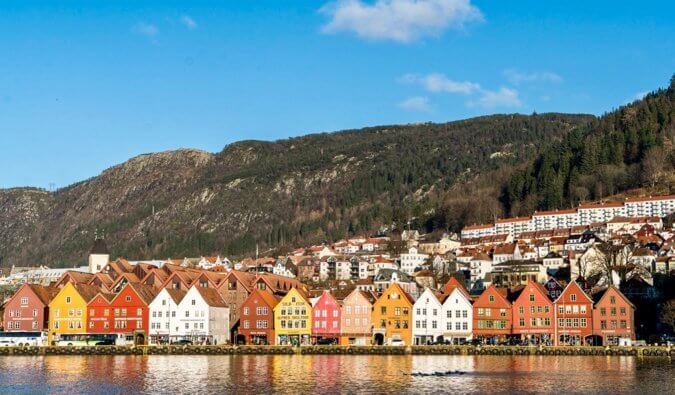
The 14 Best Things to Do in Bergen, Norway
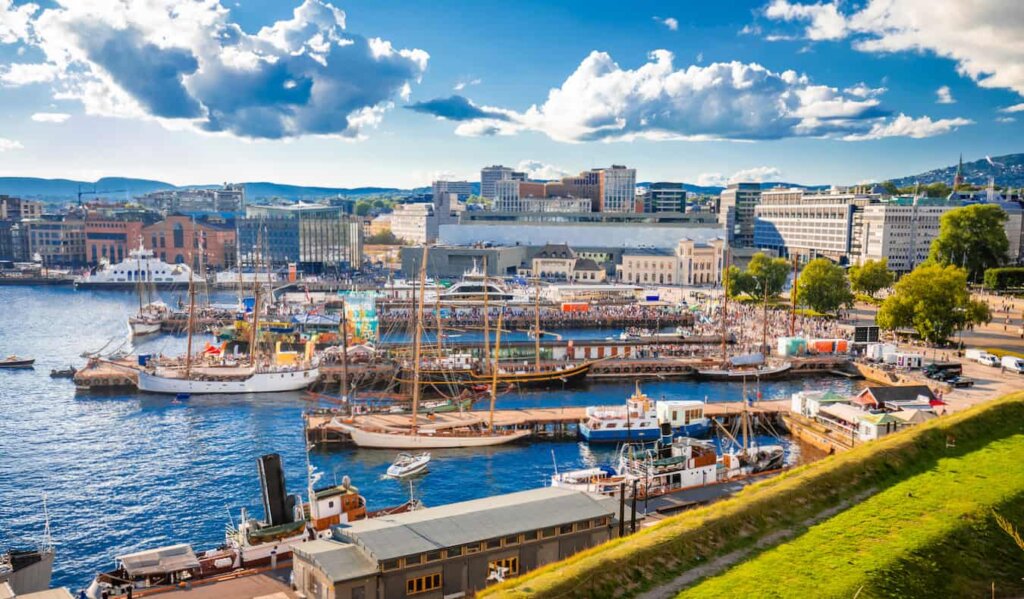
How to Spend 48 Hours in Oslo
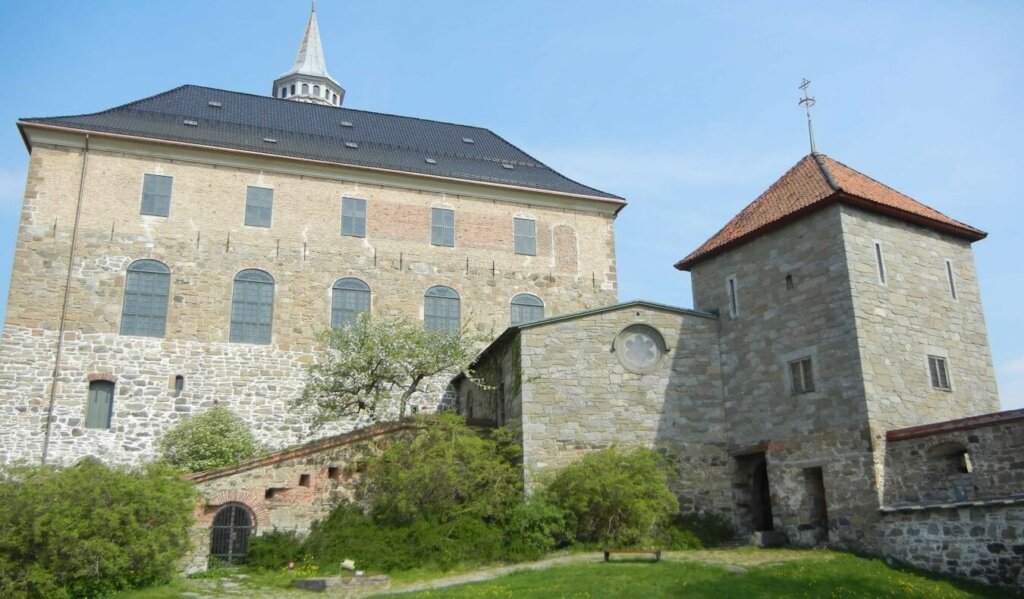
The 22 Best Things to Do in Oslo
Get your free travel starter kit.
Enter your email and get planning cheatsheets including a step by step checklist, packing list, tips cheat sheet, and more so you can plan like a pro!

- Where To Stay
- Transportation
- Booking Resources
- Related Blogs

17 Things You Need to Know Before Visiting Norway

- 1. Norway is a Scandinavian Country
2. Polar Bears do not Walk in the Streets
3. the norwegian currency is nok (norwegian krone), 4. most norwegians speak english, 5. norway is a safe country to visit, 6. winter, spring, summer, fall, 7. always bring an extra layer of clothes, 8. wild camping is allowed in mostly all of norway, 9. national parks and most outdoor locations are free to use, 10. norway has the best salmon, 11. traveling in norway can be expensive if you only eat out.
- 12. Northern lights aren't visible everywhere
- 13. Norway is a Long Country
- 14. There aren't Many Dangers in the Wild
15. Norwegians eat a lot of Taco
16. the difference between southern norway and northern norway is huge.
- 17. The Midnight Sun Isn't a Different Sun
Are you dreaming of visiting Norway one day? Perhaps you've already booked a flight and have begun planning the trip. Regardless of where you are in the process, here are 17 things you should know before visiting Norway:
1. Norway is a Scandinavian Country
We Norwegians tend to believe that Norway is the center of the earth and everyone knows who we are. The truth is that Norway isn't as large as we want to believe and everyone doesn't even know that Norway even is a country.
Norway is a Scandinavian country with approximately 5.2 million people and has numerous times been named one of the best places to live and/or visit.
(For those who don't know: Scandinavia consists of Norway, Sweden and Denmark; 3 nordic countries located in Europe)
A common misconception is that Polar Bears walk the streets in Norway. This is, fortunately, not the case. In fact, there are no wild Polar Bears on mainland Norway.

Norway is actually a really civilized country and you would be surprised to see how modern it is. We even have cars driving in the streets...!
Svalbard, however, is a Norwegian archipelago between mainland Norway and the North Pole where there are more Polar Bears than people. Still, it's rare that there are any incidents between the inhabitants and Polar Bears.
The currency we use in Norway is the Norwegian Krone. So, if you're traveling with only Euro you won't come far. The Norwegian Krone was recently weakened which means that if you're traveling to Norway in the near future it will be cheaper than what it was only one year ago.
It should be mentioned that Norway is using less and less cash. You can mostly anything with a credit card, even taxis and hot dogs! That means that it's not a crisis if you forgot to bring cash.

Don't know Norwegian? No problem! The majority of Norwegians speaks English. Even though some are a bit shy to have a full conversation, they are able to understand most and to help you with any questions you might have.
So, don't be afraid of saying hi to a stranger!
Norway is known to be one of the safest countries in the world. Crime rates are extremely low even in major cities such as Oslo , Bergen , Trondheim , and Stavanger .
As with any other urban areas, you should take certain precautions but there's not much to be afraid of. Even walking alone during the night is relatively safe and the chances are small that you'll become the victim of a crime.
Most crimes in Norway are related to home and office burglaries. There are some groups of pickpocketers traveling around the most touristic areas during summer so keep an extra eye on your wallet when you're in a crowd (still, the possibilities of anything happening is low).
There are 4 seasons in Norway: winter, spring, summer, and fall. Be sure to take this into consideration when you're planning to visit Norway . Some attractions are only open during a specific season and certain hikes are unreachable during winter. If your main purpose is to visit one specific location figure out what season is optimal for that.

Another thing to keep in mind is that the weather changes a lot between seasons. Make sure that you always bring enough clothes when traveling to Norway as it does get cold! Keeping an eye on the weather forecast is always a good idea.
The weather, as mentioned above, changes a lot between seasons in Norway so you always want to bring enough clothes. Most importantly, if you're planning to go on some hikes during your visit, you need to bring an extra layer of clothes. Even during summer, it's wise to bring a rain jacket and a fleece in your backpack in case the weather changes or the temperatures drop when you reach a higher altitude.
Due to " Allemannsretten " (every man or woman's right of public access), you can pitch a tent wherever you want in Norway (unless anything else is stated at a specific area). The outdoors is very important for us Norwegians and we do our best to maintain the right of using the outdoors freely. So, make sure that you leave no traces behind and don't do any damage to nature.

There are also several campsites all over Norway that are cheap to stay at. At these sites, you often have the possibility to take a warm shower, clean your clothes and charge any batteries.
Also, due to "Allemannsretten", all public lands are free to access. This means that you don't have to pay an entrance fee for a national park and you're free to go mostly wherever you want. All we ask is that you treat nature with respect and do your best not to leave any traces behind.
It's true, Norway has the best salmon. In fact, it was Norwegians who introduced the Japanese to Salmon Sushi in the 1980's. That's how good our salmon is.
While salmon isn't cheap, make sure that you have at least one proper salmon meal in Norway even if you're traveling on a budget.

It's no secret that Norway is an expensive country to visit. Even though it's less expensive now that the Norwegian Krone is weak, it's not cheap. One way to avoid spending too much money during your travels in Norway is to eat less at restaurants. Purchasing your own food at a supermarket is much cheaper than going out every day. Unlike many other countries, Norway doesn't have a culture of going out to eat.
If you are traveling on a budget make sure that you read through our Norway on a Budget Guide .
12. Northern lights aren't visible everywhere
Are you dreaming of seeing the northern lights? Well, Norway is the right place to do it!
There's something magical about watching the sky turn into a green and purple formation dancing all over. I still remember the first time I saw it for myself, it was a moment that changed my life...
Many tourists come to Norway with the intent to see the northern lights . However, the northern lights (or Aurora Borealis) isn't visible all over Norway.

Since Norway is a long country you're normally only able to see the lady in green in the northern parts of Norway. The further south you go, the fewer lights you will see. Places such as Lofoten, Bodø and Tromsø are popular areas to watch the northern lights .
You should also remember that the northern lights won't be visible during the summer as it is too bright during that season. Typically, you've got the best chance of seeing some activity between October and April.
13. Norway is a Long Country
Another large misconception about Norway is that it's a small country which is easy to travel around. This isn't the case. Even though only 5 million people live here, it’s a large country by area (148 718 square miles) that stretches from 57° to 81° North. This means that you're not able to spend a couple of days in Norway and see both the west coast, capital and northern parts. In fact, driving from Kristiansand in southern Norway to Nordkapp in Northern Norway takes about 38 hours non-stop.
Therefore, you should plan your trip carefully and look at the distances between the places you want to go. If you want to see places in all regions I strongly suggest you spend some days extra or plan more than one trip.
- Press here for self-drive itineraries in Norway
- Press here for self-drive tours in Norway
14. There aren't Many Dangers in the Wild
Besides the Polar Bears on Svalbard, there are no dangerous animals waiting to attack you in the Norwegian wild. Either you're in the woods, on a mountain or on a glacier, you have nothing to fear.

There are animals that you want to avoid but they will typically run away before you even see them. You can read more about wildlife and animals in Norway here .
If you visit a Norwegian family on a Friday evening the possibility is high that they are having Tacos for dinner. As a joke, it's said that Tex-Mex is Norway's national food. Yes, it really is that popular - even my grandma makes Tacos on Fridays!
(Ok, you might not have needed to know this but it's a fun fact that might work as an awkward icebreaker!)
Since Norway is such a long country it goes without saying that the differences are quite significant. In the southern Norway, you have beautiful coasts and warm (not tropical!) weather, the East has large areas of woods and the capital, the West has the fjords and mountains while the north has the arctic landscapes.
You might also notice that the dialects spoken throughout Norway are quite different and if you're just learning to speak some Norwegian it might be a bit confusing.
17. The Midnight Sun Isn't a Different Sun
During winter, northern Norway has polar nights; a period where the sun never rises above the horizon and you have 24 hours of dark. During summer, however, it's the exact opposite; the sun never sets.
You might have heard of the Midnight Sun before. Unlike what a few tend to believe, the midnight sun is actually not a different sun...it's just the same sun as during the rest of the year but it doesn't go down; meaning 24 hours of daylight.
- Press here for things to do in Oslo
- Press here for things to do in Lofoten
- Press here for things to do in Tromsø
Popular articles

7 Amazing Hikes in Norway

Top 10 Waterfalls in Norway

Top 10 Things To Do In Norway

The Ultimate Countdown of Norway's Fjords

8 Things You Didn't Know About Norway

A Grand Tour of Norway

Wildlife & Animals in Norway

7 Things To Do & See in Oslo, The Capital City of Norway

Hiking to Trolltunga

How to See the Northern Lights in Norway
Other interesting articles.

5 Norwegian Inventions You Should Know About

The Most Amazing Thing About Oslo (hint: It's not the Opera House)

Top things to do in Norway
Book your complete trip with the best companies only

Adventure Tours

Fjord Tours

Vacation Packages

Biking Tours

Sightseeing Tours

Lofoten Tours

Where to Travel in Norway: Top Destinations, Hidden Gems, and Travel Tips
Explore Norway’s top destinations: 1. Oslo – vibrant culture and nightlife, 2. Tromsø – witness the northern lights and enjoy winter sports, 3. Lofoten Islands – stunning natural landscapes, 4. Bergen – gateway to breathtaking fjords. Experience rich Viking history, local cuisine, and sustainable outdoor activities across Norway.
However, Norway also has hidden gems. Ålesund enchants visitors with its Art Nouveau architecture and stunning vistas. Lyngen Alps, located in Northern Norway, promise adventure with hiking and skiing opportunities. The Lofoten Islands impress with dramatic landscapes, traditional fishing villages, and diverse wildlife.
Before embarking on your journey, consider essential travel tips. Norway’s public transportation is efficient and connects major destinations. Plan your trip during summer for long daylight hours or winter for unique winter activities. Local cuisine, rich in seafood, is worth trying, especially fresh salmon and traditional reindeer dishes.
In the next section, we will explore specific itineraries and incredible experiences that await you in each of these spectacular locations.
Table of Contents
What Are the Top Destinations to Visit in Norway?
The top destinations to visit in Norway include stunning natural landscapes, vibrant cities, and rich cultural experiences.
- Fjords (e.g., Geirangerfjord, Nærøyfjord)
- Oslo (capital city)
- Bergen (historic city)
- Tromsø (Northern Lights viewing)
- Lofoten Islands (scenic beauty)
- Stavanger (cultural heritage)
- Ålesund (Art Nouveau architecture)
- Svalbard (wildlife and Arctic experiences)
Exploring the diverse variety of destinations reveals Norway’s unique offerings, from breathtaking nature to urban sophistication.
Fjords : Fjords in Norway represent some of the nation’s most iconic landscapes. These deep, narrow inlets carved by glaciers boast steep cliffs and stunning waters. The Geirangerfjord, a UNESCO World Heritage site, attracts visitors with its spectacular waterfalls and panoramic views. The Nærøyfjord, known for its dramatic scenery, is recognized as one of the most beautiful fjords globally. Studies show that fjord tourism contributes significantly to Norway’s economy, with millions visiting yearly to experience their splendor.
Oslo : Oslo serves as Norway’s vibrant capital. This city blends modern architecture with rich history. Key attractions include the Viking Ship Museum, which houses well-preserved Viking ships, and the Oslo Opera House, noted for its contemporary design. According to statistics from Visit Oslo, tourism in the city has increased by over 20% annually in recent years, showcasing its growing appeal.
Bergen : Bergen is often called the “Gateway to the Fjords.” This historic city features colorful wooden houses and is surrounded by mountains and ocean. The UNESCO-listed Bryggen Wharf and the Fløyen mountain are must-visit sites. Bergen hosts various festivals, including the Bergen International Festival, attracting artists from around the world. The city’s cultural vibrancy enhances its allure as a top travel destination.
Tromsø : Tromsø is known as the “Gateway to the Arctic.” It is an ideal location for witnessing the Northern Lights. Tourists can participate in dog sledding, reindeer sledding, and Sami culture experiences. Tromsø hosts the annual Tromsø International Film Festival, drawing cinephiles to its stunning Arctic backdrop. Studies indicate that the visibility of the Northern Lights significantly boosts tourism during winter months.
Lofoten Islands : The Lofoten Islands offer breathtaking landscapes, characterized by dramatic peaks and charming fishing villages. Known for its azure waters and midnight sun, this archipelago attracts outdoor enthusiasts. Hiking, kayaking, and fishing are popular activities here. The islands also provide a glimpse into traditional Norwegian culture and livelihoods, particularly through the Lofotr Viking Museum.
Stavanger : Stavanger is celebrated for its cultural richness and historical architecture. The city is home to the famous Preikestolen (Pulpit Rock), which offers stunning views of the Lysefjord. Stavanger’s Old Town features preserved wooden houses dating back to the 18th century. The city’s annual Stavanger International Jazz Festival showcases its vibrant arts scene, attracting musicians and visitors alike.
Ålesund : Ålesund is renowned for its Art Nouveau architecture, resulting from a rebuilding effort after a fire in 1904. The town offers stunning views of the surrounding islands, with notable attractions like the Jugendstilsenteret (Art Nouveau Centre). Ålesund has emerged as a hub for coastal tourism, with visitors attracted to both its architectural beauty and maritime activities.
Svalbard : Svalbard offers unique Arctic experiences, including wildlife viewing and glacier hiking. The archipelago is home to polar bears, reindeer, and various marine life. Research indicates that Svalbard’s remote location attracts adventurous travelers seeking authentic Arctic exploration. Activities include snowmobiling, dog sledding, and visiting the Svalbard Global Seed Vault, which preserves plant biodiversity.
Which Major Cities Should You Explore in Norway?
The major cities you should explore in Norway include Oslo, Bergen, Tromsø, and Stavanger.
Exploring the major cities in Norway provides insight into the country’s diverse culture and stunning landscapes. Each city offers unique experiences and attractions that appeal to different interests.
1. Oslo: Oslo is Norway’s capital. It features a mix of modern architecture and historic sites. The city is home to the Nobel Peace Center, the Viking Ship Museum, and beautiful parks like Frogner Park. According to Statistics Norway, Oslo has a diverse population, which contributes to its vibrant cultural scene.
2. Bergen: Bergen is known as the “Gateway to the Fjords.” This city is famous for its picturesque harbor and colorful wooden houses in Bryggen, a UNESCO World Heritage Site. The Fløyen mountain offers hiking opportunities with breathtaking views. The Bergen International Festival occurs annually and showcases music, theater, and dance, attracting visitors from various countries.
3. Tromsø: Tromsø is often called the “Gateway to the Arctic.” It is known for its stunning natural beauty and as a prime location for viewing the Northern Lights. The Polar Museum highlights the city’s Arctic history. Furthermore, Tromsø’s vibrant festival scene, including the Tromsø International Film Festival, can appeal to film enthusiasts and cultural travelers alike.
4. Stavanger: Stavanger is famous for the stunning Preikestolen, also known as Pulpit Rock. It offers scenic views of the Lysefjord. The city is also recognized for its well-preserved wooden houses and the Norwegian Petroleum Museum. According to Visit Norway, Stavanger’s culinary scene showcases local seafood and traditional dishes, reflecting the coastal culture.
These cities represent the rich diversity of Norway, offering unique experiences that cater to various interests, from urban excitement to outdoor adventures.
What Natural Wonders Can’t Be Missed in Norway?
Numerous breathtaking natural wonders in Norway are must-see attractions. They captivate visitors with stunning landscapes, unique geological features, and vibrant ecosystems.
- Geirangerfjord
- Lofoten Islands
- Northern Lights (Aurora Borealis)
- Preikestolen (Pulpit Rock)
- Trolltunga (Troll’s Tongue)
- Vøringsfossen Waterfall
- Svalbard Archipelago
These magnificent locations offer remarkable views and experiences, each with its distinct allure. Exploring them can provide varied perspectives, from peaceful solitude in nature to thrilling outdoor adventures, appealing to different traveler preferences.
Now, let’s delve deeper into each natural wonder to understand their significance and unique characteristics.
Geirangerfjord: Geirangerfjord displays extraordinary natural beauty through its deep blue waters and steep green cliffs. This UNESCO World Heritage site is renowned for its dramatic scenery. Surrounded by snow-capped peaks, waterfalls cascade down the cliffs, creating picturesque views. A study by the Norwegian Institute for Nature Research highlights its biodiversity. Visitors can enjoy boat tours and panoramic viewpoints like Dalsnibba, enhancing their experience of the sights.
Lofoten Islands: The Lofoten Islands exemplify captivating landscapes featuring jagged mountains and sandy beaches. This archipelago is known for its vibrant fishing villages and striking views of the midnight sun in summer. Its rugged terrain provides ample opportunities for hiking, kayaking, and climbing. Research by the Norwegian Tourism Association indicates that Lofoten’s unique geography fosters significant biodiversity, attracting many nature enthusiasts each year.
Northern Lights (Aurora Borealis): The Northern Lights are a natural light display, most commonly seen in northern Norway. These colorful lights are caused by solar particles interacting with the Earth’s atmosphere. The phenomenon generally occurs between late autumn and early spring. According to the University of Tromsø, the northernmost city in Norway, the region offers optimal conditions for viewing the lights, drawing tourists from around the world to experience this mesmerizing spectacle firsthand.
Preikestolen (Pulpit Rock): Preikestolen is a cliff 604 meters above the Lysefjorden fjord. Its flat top provides breathtaking views of the surrounding landscape. Thousands of hikers visit annually to reach its summit. The hike, approximately 8 kilometers round trip, offers both challenge and reward. The Norwegian Tourist Board notes that it attracts adventure seekers and nature lovers, providing various perspectives of Norway’s dramatic topography.
Trolltunga (Troll’s Tongue): Trolltunga is a rock formation that juts horizontally out of a mountain above Lake Ringedalsvatnet. The name means “Troll’s Tongue” in Norwegian. It attracts climbers and photographers, eager to capture its unique shape against stunning backdrops. According to a 2021 study, the hike to Trolltunga is one of the longest in Norway, taking about 10 to 12 hours. This strenuous trek rewards adventurers with breathtaking views of the fjords and valleys below.
Vøringsfossen Waterfall: Vøringsfossen is one of Norway’s most famous waterfalls, plunging 182 meters into the Måbødalen valley. It attracts visitors with its dramatic beauty and accessibility. The surrounding area offers several trails and viewing platforms. Tourist statistics show that it is a popular stop for people traveling along the scenic Hardangervidda. Studies by local environmental bodies emphasize the importance of preserving the waterfall’s natural ecosystem.
Svalbard Archipelago: The Svalbard Archipelago features rugged landscapes, glaciers, and a unique polar climate. It is home to diverse wildlife, including polar bears and reindeer. Svalbard is known for its untouched nature and opportunities for expeditions to view glaciers and icebergs. Research conducted by the Norwegian Polar Institute highlights the region’s ecological significance and vulnerability to climate change. The remote location attracts adventure travelers interested in unique creatures and pristine environments.
What Hidden Gems Are Waiting to Be Discovered in Norway?
Norway is rich in hidden gems, offering stunning natural beauty and unique cultural experiences that are often overlooked by travelers.
- Kjeragbolten
These locations reflect diverse perspectives and opinions, with some travelers favoring tranquility and natural landscapes, while others prefer vibrant cultural experiences. Additionally, conflicting views may arise regarding accessibility to these hidden gems, as some are remote versus those that are easier to reach.
Exploring the hidden gems of Norway provides various experiences.
Lofoten Islands : The Lofoten Islands are renowned for their dramatic mountains and fjords. Visitors can engage in activities such as hiking, fishing, and kayaking. The islands feature traditional fishing villages, adding a rich cultural texture to the stunning scenery. According to the Visit Norway website, Lofoten receives approximately 700,000 visitors annually, showcasing its popularity.
Ålesund : Ålesund is celebrated for its Art Nouveau architecture. This coastal town was rebuilt in style after a fire in 1904. Tourists can explore the Aksla viewpoint for panoramic views of the surrounding water and mountains. A study by the Norwegian Institute of Tourism (2021) highlighted Ålesund as one of the best-preserved towns in Norway.
Geirangerfjord : Geirangerfjord is a UNESCO World Heritage site known for its steep cliffs and spectacular waterfalls. Visitors can embark on boat tours to experience the fjord’s beauty close up. The National Geographic describes Geirangerfjord as one of the most beautiful places on Earth, attracting adventurous spirits.
Røros : Røros is a historic mining town recognized for its wooden buildings and charming streets. This UNESCO World Heritage site provides insights into Norway’s mining heritage and culture. Røros hosts an annual winter market, drawing tourists interested in local crafts and traditions.
Senja : Senja is often referred to as Norway’s answer to the Lofoten Islands. This island features stunning landscapes, hiking trails, and secluded beaches. An article published by CNN Travel (2022) states that Senja is emerging as an attractive destination for those seeking nature and serenity.
Stryn : Stryn is known for its breathtaking scenery and outdoor activities, including skiing, hiking, and biking. The Stryn Summer Ski Center allows skiing even in the summer months. The Norwegian Road Administration records thousands of visitors enjoying outdoor activities in Stryn annually.
Alta : Alta offers rich cultural history, particularly related to its ancient rock carvings. The Northern Lights can often be viewed in this region, making it an ideal location for aurora hunters. A 2020 study by the University of Tromsø found that Alta is one of the best places to experience the Northern Lights.
Trolltunga : Trolltunga, or “Troll’s Tongue,” is a stunning rock formation jutting out over a fjord. The hike to reach Trolltunga is challenging but rewards adventurers with breathtaking views. A report by Outdoor Norway claims that this site is one of the most photographed locations in Norway.
Kjeragbolten : Kjeragbolten is a boulder wedged between two cliffs, offering a thrilling photo opportunity. Hikers can enjoy scenic trails surrounding the area. According to the Norwegian Hiking Association, Kjerag attracts thousands of daring hikers each year.
Veiholmen : Veiholmen is a small fishing village that offers traditional Norwegian architecture and serene coastal beauty. This lesser-known gem provides visitors an opportunity to enjoy quiet landscapes and local seafood cuisine. The local tourism board reported that Veiholmen remains underexplored, appealing to those seeking solitude.
These hidden gems in Norway present a diverse range of experiences and attractions, catering to adventurers, culture enthusiasts, and nature lovers alike.
Which Lesser-Known Towns Offer Unique Travel Experiences?
Unique travel experiences can often be found in lesser-known towns that offer distinct cultural, historical, or natural attractions. Exploring these towns allows travelers to engage with local communities and uncover hidden gems off the beaten path.
- Svaneti, Georgia
- Matera, Italy
- Gjirokastër, Albania
- Eze, France
- Kotor, Montenegro
- Shimla, India
- Gamla Stan, Sweden
- Wadi Rum, Jordan
Travelers seeking unique experiences might find charm in the unexpected. The following sections will give detailed insight into these lesser-known towns.
Svaneti, Georgia : Svaneti is a remote region in the Caucasus Mountains. It is known for its medieval villages, stunning mountain scenery, and unique Svan towers. The area boasts rich traditions, including ancient songs and dances. Travelers may experience the local cuisine, known for dishes like khachapuri (cheese bread) and khinkali (dumplings). The region is also a UNESCO World Heritage site.
Matera, Italy : Matera is famous for its ancient cave dwellings, called “Sassi.” These caves are carved into limestone and date back to prehistoric times. The town offers a fascinating glimpse into human settlement over millennia. Visitors can explore the winding streets, sample regional food, and learn about the town’s history at the MUSMA (Museum of Contemporary Sculpture).
Gjirokastër, Albania : Gjirokastër is characterized by its Ottoman-era architecture and cobblestone streets. This UNESCO World Heritage site features a well-preserved castle and offers views of the Drina River valley. Travelers can enjoy traditional Albanian cuisine, such as byrek (savory pastry), while learning about the town’s role in Albania’s history.
Eze, France : Eze is a picturesque village perched on a hill overlooking the French Riviera. It is known for its stunning views and the exotic garden at the top. Visitors can stroll through narrow streets lined with artisan shops. Eze is also home to the famous Fragonard perfume factory, where travelers can learn about perfume-making.
Kotor, Montenegro : Kotor features a well-preserved medieval old town, a UNESCO World Heritage site. The town lies on the Bay of Kotor, surrounded by dramatic mountains. Travelers can hike up to Kotor Fortress for panoramic views. The local cuisine is a highlight, with seafood and regional wines.
Shimla, India : Shimla is a hill station once favored by British colonists. It is known for its colonial architecture and scenic views of the Himalayan mountains. Visitors can enjoy outdoor activities such as trekking and skiing in nearby areas. The town also offers unique experiences, such as visiting the Christ Church and the bustling Mall Road.
Gamla Stan, Sweden : Gamla Stan is Stockholm’s old town, filled with narrow streets, colorful houses, and historical sites. Travelers can visit the Royal Palace and Stortorget, the main square. The area is known for its vibrant atmosphere and local shops selling handmade goods.
Wadi Rum, Jordan : Wadi Rum is a desert region famous for its stunning landscapes and rock formations. It offers opportunities for adventure, including rock climbing and camel trekking. Visitors can immerse themselves in Bedouin culture and sleep under the stars in a traditional tent, experiencing a unique blend of nature and tradition.
What Off-the-Beaten-Path Locations Are Worth a Visit in Norway?
Norway is home to several off-the-beaten-path locations worth visiting, offering stunning natural beauty and unique cultural experiences. Here are some notable places to consider:
- Senja Island
- Jotunheimen National Park
These locations each present distinct characteristics that appeal to different travelers. While they offer breathtaking landscapes, rich history, and outdoor activities, opinions may vary regarding their accessibility and tourist influx.
Now, let’s explore these destinations in detail.
Lofoten Islands : Lofoten Islands are known for their dramatic peaks and sheltered bays. This archipelago is a haven for outdoor activities such as hiking, fishing, and kayaking. According to Visit Norway, the Lofoten Islands also boast picturesque villages and opportunities for photography during the midnight sun in summer or the Northern Lights in winter.
Ålesund : Ålesund is famed for its Art Nouveau architecture and stunning coastal views. This town features a vibrant harbor and access to nearby islands. A 2018 study by Statsbygg revealed Ålesund’s popularity among tourists increased significantly due to its picturesque backdrop and hiking trails, such as the hike to Mount Aksla.
Røros : Røros is a UNESCO World Heritage site known for its well-preserved wooden buildings and mining history. The town offers visitors insight into traditional Norwegian culture. The Norwegian Museum of Mineralogy highlights Røros’ historical significance in the copper mining industry, making it a fascinating stop for history enthusiasts.
Geirangerfjord : Geirangerfjord is famous for its deep blue waters and stunning waterfalls. This area is recognized as a UNESCO World Heritage Site. According to Geirangerfjord.com, boat tours provide visitors with unrivaled views of the fjord’s natural beauty, including the iconic Seven Sisters waterfall.
North Cape : North Cape is considered the northernmost point of Europe, offering breathtaking views of the Barents Sea. It attracts travelers seeking unique locations. The North Cape Visitor Center features exhibitions that showcase the area’s history and culture, as noted by the Official North Cape website.
Senja Island : Senja Island is known for its rugged coastline and diverse wildlife. It offers fewer tourists than more popular locations. According to Visit Senja, the island is a great spot for hiking, whale watching, and experiencing local culture, making it an appealing destination for nature lovers.
Jotunheimen National Park : Jotunheimen is a paradise for hikers and outdoor enthusiasts. Known for its high mountains and glaciers, it offers marked hiking trails for varying skill levels. The Norwegian Trekking Association emphasizes Jotunheimen’s role in outdoor activities, citing its popularity among adventure seekers.
Trondheim : Trondheim is a historical city known for its medieval architecture and vibrant student population. It features landmarks like the Nidaros Cathedral. According to Visit Trondheim, this city combines history with modern culture, making it a lively destination that attracts visitors interested in both aspects.
Each of these locations contributes uniquely to Norway’s diverse travel landscape. They reflect rich cultural backgrounds, stunning natural settings, and opportunities for various activities, appealing to different types of travelers.
What Essential Travel Tips Do You Need Before Visiting Norway?
Essential travel tips before visiting Norway include practical advice for an enjoyable trip.
- Understand the Climate
- Plan Transportation
- Budget Wisely
- Explore Outdoor Activities
- Learn Basic Norwegian Phrases
- Respect Local Customs
- Prepare for Limited Daylight in Winter
- Use Public Transport Efficiently
To delve deeper into these essential travel tips, we will explore each aspect in detail.
Understanding the Climate : Understanding the climate in Norway is crucial for planning your trip. Norway has a varied climate, with coastal areas experiencing milder winters than the inland regions. The summer months are typically warm, while winter can be cold, especially in the north. According to meteorological data, average temperatures can range from -3°C in winter to 20°C in summer in Oslo, but they may vary significantly in other regions like Tromsø, where winters can see temperatures as low as -15°C.
Planning Transportation : Planning transportation effectively enhances your travel experience in Norway. Norway’s public transport system includes trains, buses, and ferries. The NSB (Norwegian State Railways) provides an efficient train network connecting major cities. Furthermore, purchasing a Bergen Card or Oslo Pass can provide unlimited travel within the city for a set period. According to Visit Norway, utilizing public transport can save time and money.
Budgeting Wisely : Budgeting wisely is vital when traveling to Norway. Norway is known for its high cost of living. Travelers should expect to spend approximately 100-200 NOK (around 10-20 USD) for a meal in an average restaurant. Additionally, accommodation can range from affordable hostels to upscale hotels. Therefore, planning your budget ahead of your trip is essential to avoid overspending.
Exploring Outdoor Activities : Exploring outdoor activities is part of Norway’s allure. Norway offers stunning landscapes suitable for hiking, skiing, and biking. The iconic fjords are ideal for kayaking and boat trips. According to a report by Statistics Norway, over 20 million visits to national parks occur annually, showcasing the importance of outdoor recreation in Norway.
Learning Basic Norwegian Phrases : Learning basic Norwegian phrases can enhance communication with locals. Common phrases like “Takk” (thank you) and “Vær så snill” (please) can facilitate interactions. Fluent speakers consider it a sign of respect and appreciation when travelers attempt to use the local language.
Respecting Local Customs : Respecting local customs is vital for cultural sensitivity. Norway values equality and privacy. Personal space is essential, and being punctual is appreciated in social and business settings. Additionally, removing your shoes when entering someone’s home is customary.
Preparing for Limited Daylight in Winter : Preparing for limited daylight in winter is important for safety and planning activities. In northern Norway, the sun does not rise for several weeks during winter months. Using tools like the ‘Dawn Simulator’ app can help you adjust your body clock. This situation is known as polar night and can be challenging but also offers unique experiences such as viewing the Northern Lights.
Using Public Transport Efficiently : Using public transport efficiently can enhance your travel experience in Norway’s cities. Familiarizing yourself with local transit apps and schedules will ease movement. Visit Norway suggests downloading the Ruter app in Oslo for real-time public transportation information, which can significantly simplify your travel planning.
These essential travel tips provide a comprehensive framework for planning a successful visit to Norway.
How Can You Effectively Navigate Norway’s Transportation System?
To effectively navigate Norway’s transportation system, utilize a combination of public transport options, plan routes in advance, and familiarize yourself with local travel apps and ticketing systems.
Norway boasts an extensive and well-coordinated transportation network. This network includes trains, buses, ferries, and domestic flights. Understanding how to use these options will enhance your experience. Key points include:
Public Transport Options : Norway has an efficient public transport system. Trains connect major cities such as Oslo, Bergen, and Trondheim. Buses reach more remote areas, while ferries serve coastal destinations and islands. According to a study by the Norwegian Railway Directorate, over 25 million passengers used the train system in 2020.
Planning Routes in Advance : It is essential to plan your travel routes ahead of time. Use online resources and maps to determine the best connections. Websites like Entur offer detailed schedules for various transport modes. This helps avoid missed connections and long waits.
Travel Apps and Ticketing Systems : Familiarize yourself with travel apps. Apps like Ruter and Vy provide real-time information on schedules and ticket purchasing. Norway employs a unified ticketing system in many regions. This means that a single ticket can often be used across different transport modes.
Understanding Ticketing Rules : Learn about ticket pricing and validation standards. Many transport services require you to purchase tickets before boarding. Some municipalities, such as Oslo, use a zone-based system. Prices vary based on the distance traveled.
Flexibility and Timeliness : Be aware that Norway’s transport can be punctual but may be affected by weather conditions, especially in winter. Always check for updates before departure.
By utilizing these strategies, you can effectively navigate Norway’s diverse transportation options, enhancing your travel experience throughout the country.
What Is the Best Time of Year for Tourism in Norway?
The best time of year for tourism in Norway is commonly recognized as the summer months, particularly from June to August. During this season, the weather is generally mild, and the days are long, offering optimal conditions for outdoor activities and scenic exploration.
The Norwegian Tourist Board supports this definition, noting that summer attracts the most visitors due to pleasant temperatures and extended daylight hours that encourage sightseeing and activities.
Tourism peaks in summer due to factors such as university breaks, outdoor festival events, and the famous midnight sun phenomenon, which promotes a vibrant atmosphere in many regions during these months.
Moreover, Visit Norway indicates that winter also attracts tourists, particularly for winter sports and Northern Lights viewing, thus showcasing a dual peak season for tourism activities.
Several causes contribute to this fluctuating tourism pattern. Seasonal weather changes, natural attractions like fjords, and cultural festivals draw visitors at different times of the year, creating distinct tourism opportunities.
Statistics from Statistics Norway show that tourist visits increase from around 2 million in the winter months to more than 5 million during the summer season, highlighting the disparity in seasonal tourism.
The impacts of seasonal tourism include economic growth, increased employment opportunities, and cultural exchange, further enhancing Norway’s appeal to international travelers.
Health, environmental, societal, and economic dimensions are influenced by tourism. While the economy benefits from increased spending, crowded destinations can strain local resources and infrastructure.
For example, popular tourist sites like the Geirangerfjord can experience overcrowding during peak summer months, stressing the importance of managing tourist flow and preserving natural beauty.
To address these challenges, the Norwegian government emphasizes sustainable tourism practices. Recommendations include promoting off-season travel and developing alternative destinations to reduce pressure on over-visited areas.
Strategies could involve utilizing technology for better visitor management, implementing regulatory measures for tourist access, and fostering awareness of sustainable practices among travelers.
How Can You Make the Most of Your Trip to Norway?
To make the most of your trip to Norway, prioritize planning your itinerary, embracing local culture, exploring natural wonders, and considering seasonal experiences.
Planning your itinerary: Researching and organizing your destinations can enhance your experience. Norway offers diverse attractions, from cities to fjords. Key cities include Oslo, known for its museums, and Bergen, famous for its colorful wooden houses. Make a list of must-visit locations.
Embracing local culture: Engaging with the local community enriches your trip. Learn about Norwegian traditions such as the “friluftsliv” concept, which celebrates outdoor living. Joining local events, such as festivals or food markets, will provide insight into Norwegian life.
Exploring natural wonders: Norway is renowned for its breathtaking landscapes. Visit the Fjords, which are deep, narrow inlets surrounded by steep cliffs. Stunning sites include Geirangerfjord and Nærøyfjord, both UNESCO World Heritage sites. Additionally, hiking trails like those in Jotunheimen National Park offer spectacular views of mountains and glaciers.
Considering seasonal experiences: Timing your visit can greatly influence your experience. If you travel in summer, enjoy activities like hiking, fishing, and midnight sun. Conversely, winter offers skiing, dog sledding, and the chance to see the Northern Lights. According to the Norwegian Institute for Nature Research, about 200,000 tourists visit each winter to experience this phenomenon.
By incorporating these elements into your trip to Norway, you can create a memorable and fulfilling travel experience.
Which Local Foods Should You Try While Traveling in Norway?
Norway offers a rich variety of local foods that travelers should try, including seafood, reindeer, and traditional baked goods.
- Fresh Seafood
- Reindeer Meat
- Brown Cheese (Brunost)
- Raspeballer (Potato Dumplings)
To further appreciate the diversity of Norwegian cuisine, it is essential to explore each local food’s unique characteristics and cultural significance.
Fresh Seafood: Fresh seafood in Norway includes a variety of fish like cod, salmon, and mackerel. Norway’s extensive coastline provides access to some of the world’s freshest seafood. According to the Norwegian Seafood Council, in 2020, Norway exported over 2.7 million tons of seafood. Dishes may include grilled fish and fish soups, often accompanied by potatoes and vegetables.
Reindeer Meat: Reindeer meat is a traditional food in Norway, especially among the Sámi people. The meat is lean and rich in flavor, making it a healthy option. It can be served as steaks, in stews, or as a smoked product. According to a study by the Norwegian Institute of Bioeconomy Research, reindeer herding is an essential cultural practice and means of sustenance for the Sámi community.
Brown Cheese (Brunost): Brown cheese, known as brunost, is a sweet cheese made from goat’s milk or cow’s milk. It has a caramel-like flavor and is often enjoyed on bread, waffles, or pancakes. The cheese is unique to Norway, and consumers enjoy its distinct taste. As reported by the Norwegian Dairy Association, approximately 33 million kg of brown cheese were produced in Norway in 2021, reflecting its popularity.
Lutefisk: Lutefisk is a traditional dish made from dried fish, usually cod or ling, that has been soaked in lye. The preparation process is unique and results in a gelatinous texture. It is typically served during festive seasons, especially Christmas. Some locals appreciate its historic significance, while others may find its texture off-putting.
Raspeballer (Potato Dumplings): Raspeballer are potato dumplings often filled with meat. They are a hearty dish, typically served with gravy and vegetables. This dish represents traditional Norwegian home cooking, with variations present across the country. Many Norwegians have fond childhood memories associated with enjoying raspeballer during family gatherings.
How Can You Experience the Northern Lights During Your Visit?
To experience the Northern Lights during your visit, plan your trip to optimal locations, choose the right season, and use appropriate gear for comfort.
Optimal locations include areas with minimal light pollution. Northern Norway, Iceland, and Canada are popular spots known for their excellent visibility. For example, Tromsø in Norway is located in the auroral zone, which enhances the likelihood of witnessing lights. Studies indicate that clear, dark skies dramatically increase viewing success rates (Simpson, 2019).
Choosing the right season is crucial. The best months are generally from late September to early April. During this time, longer nights and clearer skies create ideal viewing conditions. A report from the Geophysical Research Letters suggests auroral activity peaks during solar maximum phases, which occur approximately every 11 years, thereby influencing the frequency of sightings (Smith et al., 2021).
Using appropriate gear enhances the experience. Wear warm clothing to protect against cold temperatures. Layers are essential, as they allow for warmth yet flexibility. Additionally, bring a camera with a tripod for photography. Proper equipment can capture the stunning visuals effectively.
Lastly, consider guided tours. Tour operators offer expertise in timing and location selection. They often know the best spots and can provide insights into the science behind the phenomenon. This adds an educational aspect to the experience.
By planning your journey with these key points in mind, you increase your chances of enjoying the Northern Lights.
- Where to travel labor day weekend
- Where to travel in your 20s
- Where to travel in tuscany
- Where to travel in the us
- Where to travel in the fall
Norway Tours & Vacations

Nature isn’t just a backdrop here, it’s the star of the show. From towering granite peaks to achingly beautiful fjords, Norway doesn’t hold back when it comes to unforgettable moments and landscapes.
Hike the rugged coastline under the otherworldly glow of the midnight sun or explore the Svalbard archipelago on an expedition voyage. Chase Tromso’s Northern Lights, explore the Lofoten Islands’ colorful fishing villages or take the Bergen Railway past alpine lakes and ancient glaciers. Discover a land of friluftsliv (open-air living), of koselig (feeling cozy and content), and find out for yourself why Norwegians rate themselves as some of the happiest people on this beautiful planet.
Our Norway trips
Let's create an exclusive trip for your group.
Norway tour reviews
Filter by rating
Premium Sweden and Norway
Scandinavia Explorer
Northern Norway Explorer
Norway at a glance
Capital city.
Oslo (population approximately 670,000)
Approximately 5.3 million
Norwegian Krone (NOK)
Norwegian, Sami
(GMT+01:00) Brussels, Copenhagen, Madrid, Paris
CALLING CODE
Electricity.
Type C (European 2-pin) Type F (German 2-pin, side clip earth)
Learn more about Norway
Culture and customs.
A love of nature permeates every level of Norwegian society, from the freedom to camp on public land (known as the right to roam) to the old Norwegian joke about being born with skis on their feet. A history of farming and an enduring Viking culture that valued strength and hardiness has produced a society unified around values like independence, an active life and simple pleasures.
Speaking of simple pleasures, if you’re in Norway you’ll come across a phrase that has no direct translation in English: ‘koselig’ (pronounced coosh-ly). While ‘koselig’ means something different to each person, it’s best understood as the mental feeling of coziness and contentment that accompanies wholesome activities, like if a happy sigh was a feeling. You may also come across the term ‘friluftsliv’, which refers to the pure delight of splendid natural scenery, fresh air and an active lifestyle. This is perhaps why the country continuously tops the ‘world’s happiest’ lists.
Travelers may find that the locals seem a little shy or reserved at first. Generally speaking, small talk isn’t as big a part of social interaction as it is in places like the USA, Australia and Canada. Don’t take it personally – once you get to know a local, you’ll likely find them as helpful and kind as people anywhere.
History and government
The first people moved here some 10,000 years ago after rising temperatures created the perfect conditions for fishing communities to hunt the coastline’s blubber-rich marine life.
While the Viking Age is the most famous part of Norway’s history, it was actually a fairly short period. Scandinavian warriors traveled around the world to plunder, colonize and build alliances from around AD800 to AD1060. As a result of these invasions into Scotland , England and Normandy, Saint Olaf unified the country for the first time under Christianity.
In the 14th century Norway was joined with Denmark through a royal marriage. Danish became the official language although Norway retained a strong sense of national identity. It was then given to Sweden in the early 19th century before finally achieving independence in 1905.
Twentieth century
Norway declared itself neutral during WWII but that didn’t stop the Nazis invading and occupying the country as a strategic military stronghold. Norway quickly recovered once the war ended in terms of infrastructure and economy, though the head of the government-in-exile did not. Vidkun Quisling, who encouraged Norwegians to submit to Nazi rule, was executed for treason in 1945. Fun fact: the word ‘quisling’ is still a colloquial term for ‘traitor’ in Norway.
Perhaps the most significant event in Norway during the 20th century was the discovery of a wealth of natural resources in the late 1960s. The extraction and export of oil and gas quickly became Norway’s dominant industry and continues to provide most of the country’s considerable wealth.
Norway today enjoys a high standard of living with political power generally held by either center-left or center-right parties. The country is renowned worldwide for its free and independent press and strong democracy.
Eating and drinking
Traditional Norwegian cuisine is simple, hearty and designed to keep you warm during those freezing winters. While the classic meat and potato offerings may not be the most exciting, they are plenty satisfying, and you’ll find diverse cuisine options from around the world in Norway’s larger cities. Many travelers to Norway are concerned about how much money they will have to budget for meals during their trip, and while it’s true that eating and drinking in Norway can be expensive compared to other parts of Europe, there are a few things you can do to make your meals more affordable.
Budget-friendly tips for eating and drinking in Norway
Picnic like a local
Eating outside in parks and squares is incredibly popular during the summer in Norway. You’ll even see locals with single-use barbecues grilling meat in the open during the warmer months, which is totally legal. These disposable grills are cheap, but they aren’t great for the environment, so we recommend stocking up on fruit, vegetables, lunch meats and bread for an eco-friendly picnic.
Drink the tap water
With some of the best-tasting tap water in the world, there’s no need to splurge on bottled stuff. Bring a reusable bottle and fill it up each day. It’s better for your wallet and the environment.
Steer clear of sweets
A huge sugar tax means buying chocolate or candy is expensive everywhere in Norway. Junk heads may want to shore up some luggage space for treats, or simply prepare mentally.
Must-try food and drink in Norway
- Kjottkaker Basically a fried meatball, but flatter and with no breadcrumbs. Kjottkaker are ubiquitous in Norway so you won’t have to look to hard to find them. They’re delicious, filling and widely available – what more could you want?
- Farikal Norway’s national dish is a perfect warmer for freezing winters (or even chilly spring or autumn nights). Simmered with cabbage and mild spices, pieces of lamb or mutton become fall-off-the-bone soft in this tasty and rustic meal.
- Linie Aquavit This Norwegian brand of aquavit – a botanical vodka – is aged in oak casks during a cruise. Here’s the reasoning given on their website: ‘It all started back in 1805, when the Norwegian trade family, Lysholm, shipped potato aquavit to the East Indies. Here people were totally uninterested in buying it, so the aquavit was sailed back to Norway. On its arrival in 1807, it was discovered that the sea voyage had vastly improved the taste.’
- Brown cheese Made by simmering a by-product of the cheese-making process (whey), then sliced and served on bread or crackers, sweet and salty brown cheese is an iconic lunch or breakfast accompaniment.
Plant-based options
Vegetarians and vegans will have nothing to be concerned about in cities like Oslo and Bergen, but we recommend stocking up on food in a supermarket if you’re traveling outside of the major cities, just in case you have trouble finding options on restaurant menus. Traveling with a local who speaks the language makes this all a lot easier. If you travel with Intrepid, you’ll have a local leader who can help you decipher menus and recommend plant-based choices.
Geography and environment
Sharing borders with Sweden , Russia and Finland , Norway occupies the northern corner of the Scandinavian Peninsula, with the North Sea, Norwegian Sea and Barents Sea hugging the rugged northern, southern and western sides of the country.
Swaths of Norway sit within the Arctic Circle, including the popular mainland city of Tromso and the Svalbard archipelago. Due to its proximity to the Arctic , large parts of Norway experience a subarctic marine climate, with cold winters and cool summers, as well as midnight sun and the Northern Lights.
Norway possesses more than 50,000 islands. These protect the rest of the country from North Atlantic storms, which is useful given the country’s proximity to the Arctic . With a total of less than 10 percent of the land suitable for growing crops, things are already tough enough.
The country's western fjord system is perhaps its most well-known landmark – or series of more than 1000 landmarks, to be accurate. Formed by retreating or melting glaciers, these deep ravines are now a symbol of Norway’s beauty and the country’s leading tourist attraction.
In a country where the great outdoors is a way of life, you’ll find less opportunities to buy trinkets and mementos in Norway than in other places. That being said, there are a couple of keepsakes and gifts to look out for while you’re there, namely items that represent the weird and wonderful folklore and traditions of this Scandinavian nation.
Solje jewelry
This silver jewelry is meant to keep the wearer safe from evil and monsters. Traditional solje jewelry comes in the form of brooches and necklaces that can be attached to bunad (folk) costumes. Does it work? Well, do you see any trolls around? Exactly.
Items adorned with rosemaling – delicate, floral folk art – make perfect gifts or decorative souvenirs. Practiced since the mid-18th century, rosemaling emerged when poor, traveling artists and muralists from Norway encountered the elaborate styles popular in Italy and France at the time.
It’s hard to overstate the importance of trolls in Norwegian (and wider Scandinavian) culture and folklore. These humanoid, mountain or forest-dwelling monsters are sometimes huge and sometimes tiny, but almost always up to some kind of mischief and trickery. Troll dolls, troll mugs, troll tea towels, troll underwear (why not?) and more are for sale throughout the country. It may seem a little touristy, but even locals keep figurines of these hideous creatures around the house for luck.
Festivals and events
Did you really think that the descendants of Vikings wouldn't know how to hold a celebration? Thankfully, modern Norwegians are more inclined to celebrate things like music and art, rather than seafaring raids, and these are some of the best:
Oya Festival
A summer festival that usually takes places in Oslo, Oya features artists – both local and international – from a number of genres performing in the great outdoors. This is a classic European music festival with a sustainable twist – you can dance to music powered by renewable energy while munching street food served on edible, biodegradable plates.
Northern Lights Festival
Listen to compositional music performed in Tromso’s historic and modern architectural wonders. Timed to coincide with the Northern Lights (hence the name), this mid- to late-winter festival is a stalwart of Tromso’s impressive cultural calendar.
Bergenfest
Bergenfest is a five-day open-air music festival located in the stone walls of Bergenhaus Fortress in the UNESCO World-Heritage listed city of Bergen. It's one of Norway’s oldest, biggest and boldest music festivals featuring an eclectic lineup of electronic, pop, country, experimental, jazz, blues, rock and more.
Further reading
For inspiring stories to prepare you for your Norway adventure, check out these books:
- The Almost Nearly Perfect People: The Truth About the Nordic Miracle – Michael Booth
- Heimskringla – Snorri Sturluson
- Growth of Soil – Knut Hamsun
- The Ice Palace – Tarjei Vesaas
- The Half Brother – Lars Saabye Christensen
- Munch – Steffen Kverneland
- The Snowman – Jo Nesbo
- Into the Ice: The History of Norway and the Polar Regions – Einar-Arne Drivenes and Harald Day Jolle
Norway travel FAQs
When is the best time to visit norway.
When deciding the best time for you to visit Norway, the main factors to consider are your tolerance for the cold and what you want to see most.
While the joys of the high summer are self-evident – long days! Mild weather! – both international and local tourists flock to Norway’s fjords and hiking trails during June and July. If you want to hike all day, stay up all night (because the sun pretty much doesn’t set) and don’t mind rubbing shoulders with other travelers, this could be the ideal time for you.
Winter in Norway is cold. November, December and January see average daylight temperatures between 30°F and 39°F (-1°C and 4°C) with the sun setting in the afternoon. That said, this is the only time of the year that you can glimpse the stunning Northern Lights. Even if you don’t see Aurora Borealis (you’ll have more luck the further north you go), the festivity of Christmas and the snow-covered mountains make winter a magical season to visit.
Spring and autumn are both crisp in terms of temperature. Think about 50°F (10°C) in May and September. These shoulder seasons may offer a good way to split the difference between winter and summer if you can handle a little bit of cold and a little bit of a crowd, but not too much of either. Just be aware that spring is the rainy season and pack accordingly.
Do I need a visa to travel to Norway?
Visas for Denmark , Norway, Sweden and Finland are not required for passport holders of the European Union, Australia , New Zealand , the USA and Canada who plan to visit for 90 days or less. Please note that random passport checks occasionally happen at European borders and you will need at least six months validity on your passport to enter the country overland.
All other nationalities should check with the Norwegian embassy or consulate closest to them for information.
Is tipping customary in Norway?
Part of what contributes to Norway’s reputation as an expensive nation for visitors (but not locals) is that most workers, including waitstaff, are paid union-approved liveable wages.
Because of this, tipping in Norway is not commonplace and is generally left up to the discretion of the customer. If the service in a mid- to high-end restaurant is particularly good, feel free to round up the bill.
What is the internet access like in Norway?
Internet access in Norway is fantastic, with almost 100 percent of the country having access to a connection. In Norway's major cities and towns, travelers will be able to access the internet on their phones with global roaming switched on (be careful of charges) and at cafes and free wi-fi hot spots. Even more remote and rural areas will have internet availability, though in towns like Tromso and Trondheim it may be a slow connection.
Can I use my cell phone while in Norway?
Cell phone coverage is generally very good in Norway. If you want to use your cell phone, ensure global roaming is activated before you arrive (but be aware of the fees this may incur).
What are the toilets like in Norway?
Flushable, Western-style toilets are the standard in Norway.
Can I drink the water in Norway?
Yes, you can drink the tap water in Norway. In fact, it’s some of the best-tasting tap water in the world so pack a reusable bottle and take advantage. It’s always considered safe to drink unless otherwise marked.
Are credit cards widely accepted in Norway?
Major credit cards are accepted by most large shops and hotels. Smaller vendors may not accept credit cards, so carry enough cash to cover small purchases.
What is ATM access like in Norway?
ATMs are commonly found in Norway's cities and urban areas. Remote regions will have less ATM availability, so prepare accordingly before traveling away from cities.
What is the weather like in Norway?
The climate in Norway is noticeably warmer than what would otherwise be expected at such a high latitude because of the Gulf Stream. Summer temperatures can reach up to 86°F, even in northern areas, but only for limited periods. The length of the winter and amount of snow varies around the country. There is more snow in the north and the winters are dark; on the southern and western coasts, winters are moderate and rainy, while further inland the temperature can get below -13°F. March, April, October and November tend to be the rainiest months. Snow usually starts to fall in October or November in the northern areas (and in higher altitudes) and generally melts by the end of April. The Northern Lights are visible from parts of Norway, with September to April usually presenting the optimal conditions for viewing.
Is Norway a safe destination for LGBTQIA+ travelers?
Same-sex marriage has been legal since 2009 and citizens have had the legal right to self determine their gender since 2016. Norway has strong anti-discrimination laws regarding LGBTQIA+ individuals and public opinion on LGBTQIA+ people is overwhelmingly positive.
You can find visible queer scenes in all the midsize to large cities. Oslo’s is the biggest and the official Oslo tourism website even has a section dedicated to queer spaces and events in the city. In other large cities, like Bergen, you’ll find no shortage of LGBTQIA+ friendly spaces, though fewer that cater to specific sexualities and genders.
If you are traveling solo on an Intrepid group tour, you will share accommodation with a passenger of the same gender as per your passport information. If you don’t identify with the gender assigned on your passport, please let us know at time of booking and we’ll arrange the rooming configuration accordingly. A single supplement is available on some tours for travelers who do not wish to share a room.
Is Norway accessible for travelers with disabilities?
Intrepid is committed to making travel widely accessible, regardless of ability or disability. That’s why we do our best to help as many people see the world as possible, regardless of any physical or mental limitations they might have. We’re always happy to talk to travelers with disabilities and see if we can help guide them towards the most suitable itinerary for their needs and, where possible, make reasonable adjustments to our itineraries.
Norway is a fairly accessible destination for people with restricted mobility and other disabilities and is actively working to be more accessible every day. In general, travelers with mobility or other restrictions should be aware that the weather can adversely affect accessible travel in Norway. During December, January and February, snow and ice can make even the most well-maintained sidewalk difficult to navigate.
New buildings are required to be accessible to wheelchair users, however many older buildings may not be accessible. Public buildings like museums that are not totally accessible will often have assistance buttons at their entrances that direct a member of staff to help you enter the building. Public transport is a mixed bag. While new trams, trains and stations are accessible to wheelchair users, some are not. If you’re traveling on a regional train, Tourism Norway recommends calling the train carrier at least 24 hours before your journey to ensure you will be accommodated. The boats that we use for cruising fjords in Norway are accessible to wheelchair users.
Metro trains, trams and buses in Norway are outfitted with PA systems that can be of assistance to travelers with restricted vision. Many trains, buses and trams in major cities will also have screens helpful to travelers with restricted hearing. Travelers who use battery-operated hearing aids should consider bringing a stash of extra batteries or familiarizing themselves with the Norwegian equivalent of the batteries their devices need.
If you have a disability and are planning to travel with Intrepid, we recommend speaking with your booking agent about specific concerns that pertain to accessibility.
Is it expensive to travel in Norway?
The perception of Norway as a prohibitively expensive country stops a lot of folks from booking a journey, despite how badly they want to see the country’s incredible landscapes.
For locals, the cost of most goods and services aren’t that expensive relative to wages. However, there is no denying that Norway is more expensive for travelers than many destinations in Europe and will require more thoughtful budgeting than a trip to, say, Romania.
Prices of basic items like metro tickets, beer and takeaway meals will likely be higher than you would normally pay at home. There are, however, ways of making a trip to Norway a little easier on your bank account. Shopping at supermarkets for lunch instead of dining out, traveling with a reusable water bottle and limiting your alcohol consumption are just a few.
Our trips in Norway tend to be light on included meals so that you can decide whether you’d prefer to grab a supermarket sandwich for lunch or sit down to eat somewhere. You’ll also have the benefit of a local leader to help you find deals and a well thought out itinerary, which means less chance for expensive impulse buys.
Embracing friluftsliv, a Norwegian word that loosely translates as a way of life that prioritizes time spent in nature, is the best way to reduce the cost of your trip. Basically, if you’re after an adventure where you can eat world-class cuisine all day and party all night, Norway might not be the right destination for you right now. But if you’re interested in unforgettable views, catching sight of the Northern Lights or hiking under the midnight sun, Norway may just be the best travel experience you’ve ever had.
Do I need to purchase travel insurance before traveling?
Absolutely. All passengers traveling with Intrepid are required to purchase travel insurance before the start of their trip. Your travel insurance details will be recorded by your leader on the first day of the trip. Due to the varying nature, availability and cost of health care around the world, travel insurance is very much an essential and necessary part of every journey.
For more information on insurance, please go to: Travel Insurance
How do I stay safe and healthy while traveling?
From Australia?
Go to: Smart Traveller
From Canada?
Go to: Canada Travel Information
From the UK?
Go to: UK Foreign Travel Advice
From New Zealand?
Go to: Safe Travel
From the US?
Go to: US Department of State
The World Health Organisation also provides useful health information.
Does my trip support The Intrepid Foundation?
Yes, all Intrepid trips support the Intrepid Foundation. Trips to this country directly support our global Intrepid Foundation partners, Eden Reforestation Projects and World Bicycle Relief. Intrepid will double the impact by dollar-matching all post-trip donations made to The Intrepid Foundation.
Eden Reforestation Projects
Eden Reforestation Projects are helping to mitigate climate change by restoring forests worldwide; they also hire locally and create job opportunities within vulnerable communities. Donations from our trips support restoration across planting sites in 10 countries around the globe. Find out more or make a donation World Bicycle Relief
World Bicycle Relief provides people in low-income communities with bicycles to mobilize school kids, health workers, and farmers in far-out areas – giving them access to vital education, healthcare, and income. Donations help provide Buffalo Bicycles – specifically designed to withstand the rugged terrain and harsh environment of rural regions – to those who need them most. Find out more or make a donation
Does my Intrepid trip include airfare?
While our Intrepid trips include many modes of transport, from tuk-tuks to overland vehicles, bullet trains and feluccas, airfare to and from your home country is not included in your tour package.
- Work with Me
- Start a Blog
- Yearly Roundups
- 101 in 1001 Goals
- how to start a travel blog
- tips for new bloggers
- write me a guest post!
- Work With Me
A Passion and A Passport
Proving Travel is Possible with a Full-Time 9-5
10 days in Norway: A Complete Norway Road Trip Itinerary
last Updated: April 16, 2024 alesund bergen flam geiranger Norway oslo road trip scandinavia stavanger
FYI: Affiliate links may be sprinkled throughout the awesome, free content you see below. I’ll receive a small commission when you purchase from my links (at no extra cost to you), which I’ll totally blow on adult things like boba tea and avocado toast. As always, thanks for the support.
Planning a Norway road trip and looking for the best possible way to spend 10 days in Norway?! You’re in the right place! I’ve got loads of information for you in this personally handcrafted Norway itinerary – which I just experienced for myself a few months ago!
Norway is absolutely spectacular. With it’s turquoise fjords, misty mountains, midnight sun, and stunning Scandinavian architecture, Norway is arguably one of the most beautiful countries on earth! And I’ve definitely seen my fair share – at ~45 countries to date !
I’ve detailed our exact Norway itinerary below (which took tons of planning), but no matter where you end up going in the country, you’ll have the best time if you love nature and cool, chic cities! It definitely didn’t hurt that we were blessed with almost perfect weather on our Norway road trip, as the country is known to be super finicky when it comes to precipitation year round (more on that below).
Our 10 days in Norway and the fjords in general have got to be the most difficult trip I’ve planned to date. And I’m no stranger to complex itineraries (I’m looking at you Japan and Thailand ). When you’ve only got so much time (only 10 days or so to see alllll the beauty in Norway), you’ve got to make each and every day count. Hence, the difficulty of planning.

A few questions that crossed my mind 1000x each during the initial planning stages:
- Should we fly/train/bus/drive from place to place?
- Do a complex variation of the aforementioned transportation options?
- Should we take an organized multi-day fjord tour and which one do we pick?
- How do the ferries work in Norway?
- Isn’t everything crazzzy expensive?
- Is 10 days in Norway actually ENOUGH for all we want to do?!
Yea, planning this Norway itinerary was quite the doozy. Sure, there are some decent Norwegian fjord itineraries out there, but after researching quite a bit, none had all the major stops I wanted to make (and I wanted to see what I wanted to see, damn it!).
We ultimately decided to craft our own itinerary (ok, let’s face it, I did 98% of the planning), renting a car for most of the way, and getting in all my highlights.
Enjoy this Norway road trip itinerary, and let me know if you’re planning your own trip to the Norwegian fjords any time soon! It really is such a spectacular place and the country now holds a firm spot in my top 10 (alongside Japan , Iceland , Canada (yup!), Colombia , Italy , Croatia , and Thailand ). 🙂
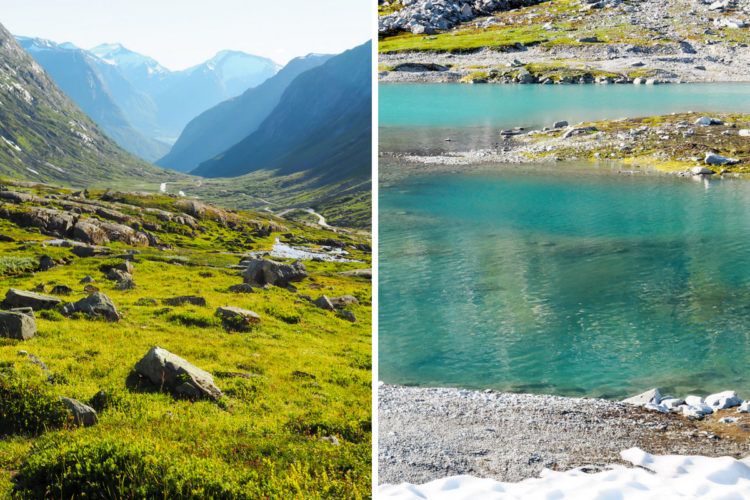
Norway Road Trip Itinerary Overview + Map
- Day 0: Arrive into Oslo!
- Day 1: Oslo
- Day 2 : Oslo
- Day 3: Fly to Stavanger, Explore
- Day 4: Pulpit Rock Hike
- Day 5: Drive to Bergen
- Day 6: Bergen
- Day 7: Flam
- Day 8: Drive to Hjelle
- Day 9: Geiranger and Trollstigen
Day 10: Alesund
* Note that you can opt to conquer Oslo at the beginning or tail end of your trip. We like to get the busy stuff and big cities outta the way because we tend to lose momentum as the trip goes on, but it’s totally up to you!

Lots more info below, but first, a pre-travel guide to Norway to learn a bit about the country and what to expect when you’re there.
Pre-Travel Guide to Norway
Getting around norway.
This was one of the most difficult parts when planning our Norway itinerary, as there are an abundance of public transportation options located all around the country, including trains, buses, flights, ferries, and more.
We opted to fly to Stavanger from Oslo, rent a car in Stavanger and drive it all the way to Ålesund, then fly back to Oslo from Alesund.
There are tons of other ways of getting around, but I found this to be the most time-efficient while letting us do our own thing at the same time. Note that if you’re following this Norway road trip, you can take a train/bus to Bergen if you’d rather have one less day of driving (but I reallllly loved those stops and wouldn’t recommend cutting that driving day out of your itinerary). 🙂
IN A NUTSHELL: fly to Oslo → fly to Stavanger → drive around country, end in Alesund → fly to Oslo
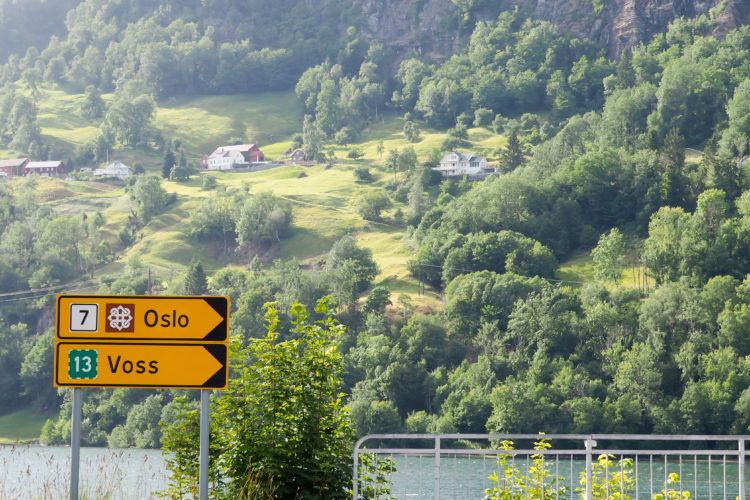
Renting a Car
As noted previously, we rented our car (a compact VW Polo) from the Stavanger Airport and drove it all the way to Ålesund over the course of this Norway road trip.
Many cars in Norway are manual transmission, so if you’re not comfortable driving stick shift, you’ll need to make sure to reserve an automatic car (a few extra dollars a day, but worth it for your safety).
Psst: I commonly use this booking site when searching for low-cost car rental options, and like Skyscanner (which I use to find low-cost flights), I frequently find great deals on there!
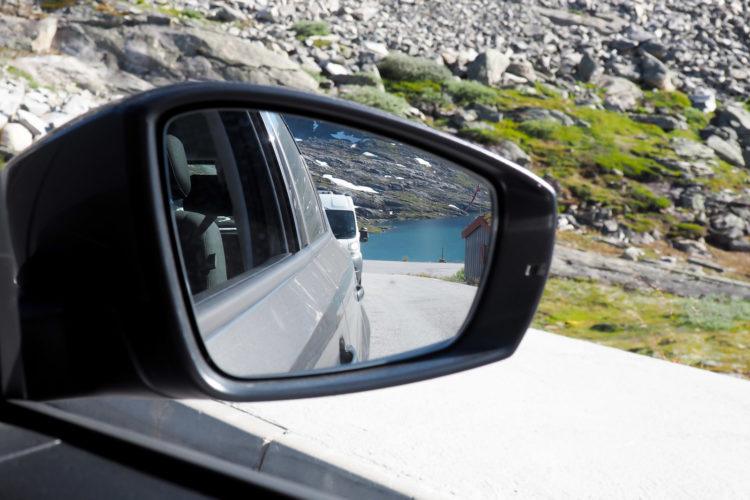
As with other most places in the world, you’ll need to pay a one-way car rental fee if you in fact choose to copy this Norway road trip itinerary from start to finish. We booked a few months in advance and paid $813 for 8 days, excluding the optional GPS we decided to get. Pricey, but well-worth it!
One way fees are inevitable unless you want to drive all the way back to Stavanger or Oslo (not recommend if you only have 10 days in Norway like we did).
I like to search via this site in order to compare rental companies to see who has the best price.
Get ready because you’ll be using the ferries quite often on this Norway itinerary! I was kinda nervous because I couldn’t find much information about them beforehand, but thankfully it all worked out!
Since there are tons (and tons) of bodies of water in the country, ferries are absolutely essential for getting around in Norway, and thankfully, the Norwegians have built a highly efficient ferry system. The ferries are super easy to use as well – you can get right on most ferries (walk or drive if you have a car) and buy your ticket directly before or once on board.
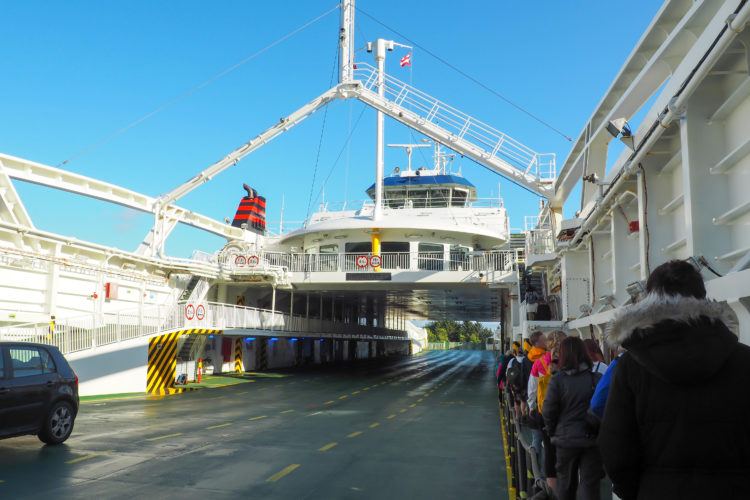
A reservation/buying a ticket in advance is not necessary for most ferry journeys, and if you follow this exact Norway itinerary, you won’t need to reserve any beforehand.
However, if you’re switching things around a bit and planning to do the Hellesylt – Geiranger tourist ferry (which we did not), plan to purchase a ticket beforehand. This specific ferry gets quite crowded and you don’t want to have to wait until space is available, which could potentially be hours in tourist season (therefore wasting your precious Norway time).
Ferries are comfortable with cafes, bathrooms, and cushioned seats. Be sure to get out of your car and head to the top deck as many have spectacular views!
There are numerous companies that operate the ferries so if you’d like to take a look at the schedules, just type in the starting and ending spots in Google and you’ll find it no problem!
*Note that not all ferries accommodate cars, so if you’re doing your own thing and veering off from the course of this pre-planned trip I organized, you’ll want to make sure the ferries you need will actually take your car as well.
Driving tips in Norway:
- First things first, you’ll be driving on the right hand side of the road in Norway (like in the USA, other parts of Europe, etc). It’s always a good idea to know this beforehand in case you’re coming from a left-handed driving part of the world!
- Traffic is safe, speed is modest (relatively slow compared to what I’m used to on California highways) and most roads have little traffic. Always allow yourself plenty of time for driving, since you’ll want to make sightseeing stops quite frequently (it’s all soooo gorgeous)!
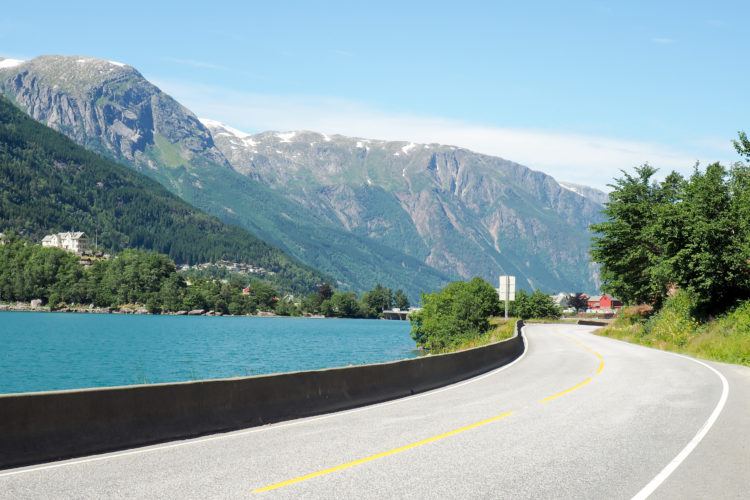
- Gas is expensive. There’s really no way around it. Fun and semi-depressing fact – Norway has the highest gas prices in the world (yuuup). If I remember correctly, we found stations from 14.50- 16.50 NOK/liter (roughly equivalent to $6.60USD per gallon), with roughly 500 NOK (~60) filling up our tank. For this Norway road trip we filled up around 2.5 times, for an equivalent of ~1300 NOK (~$160). All in all, I expected the cost of gas to be higher and was pleasantly surprised to keep our gas costs under $200 (unless I somehow did the math wrong…).
- We opted to rent a GPS in order to get around easily as we weren’t sure how well our phone carrier with international coverage (T-Mobile) would pick up service in the more remote spots on our road trip. Cost was NOK 125 per day (~$15USD). We were very happy we chose to invest in the GPS as it worked almost perfectly and got us from place to place with ease even when our phones couldn’t find a signal.
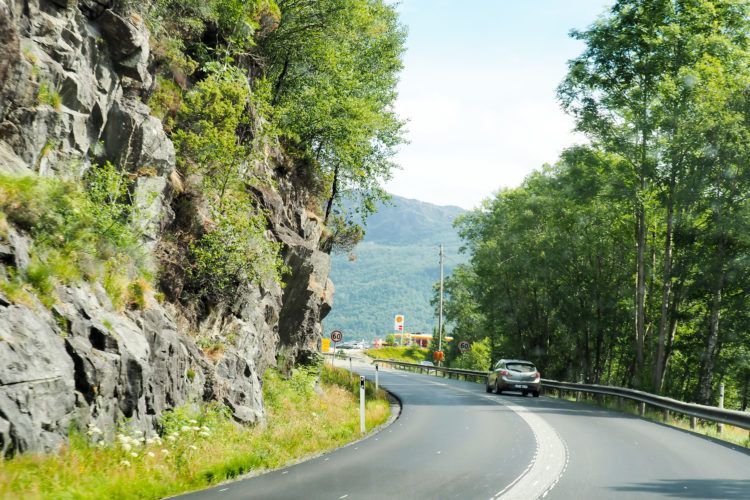
- You’ll encounter a bunch of toll roads throughout your Norway road trip. If you rented a car, the car will be equipped with an AutoPass Device which will automatically track all the tolls you rack up while driving (a green plus sign will show on the road to indicate usage of device). You’ll then pay the total when you finally return the car (or be billed in a few weeks – sometimes it takes a bit to register them all). We spent about 500NOK during our 10 days in Norway, which really wasn’t as terrible as I expected. Note that a few tolls will be credit card only, including Dalsnibba and Sognefjellet, and you won’t be able to use the included AutoPass device for these.
- Sheep seem to roam freely around the streets of Norway, so always be extra alert and extra extra cautious for them (and other cars) while going around bends and curves. Plus, they’re just so cute!
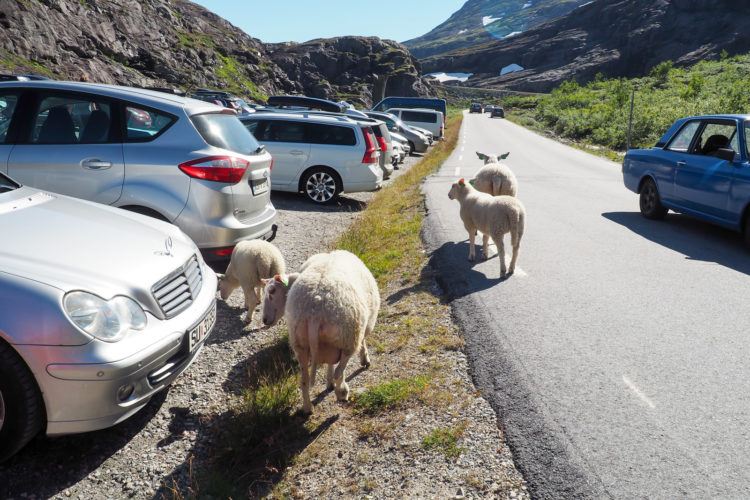
Other random tips for your Norway Road Trip:
- We came across lots of free public bathrooms on our drive, so don’t worry about having to hold it in for too long! Drink all the fresh Norwegian water you want!
- Hotel and restaurant staff were very friendly and eager to help out; other workers (at tolls, airport, etc) were a bit direct and emotionless, but did their job well. Just something to take note of so you don’t take their candidness to heart.
- The days are long and the nights are short . If you’re planning your 10 days in Norway during June, July, or August, expect the sun to set around 10pm or later, and rise shortly after 4am. The last daylight will be around midnight and the first will be around 2am, meaning there’s only complete darkness for around 2 hours! This is fantastic for getting in lots of activities/driving in one day! It’s wise to bring among an eye mask on your trip should your hotel not have blackout shades (all of ours did thankfully).
- We took a bit of food (when we could) from hotel breakfasts to eat later in the day. Dinners cost us roughly $50-$60 for 2 entrees (no drinks, no appetizers, no salads, no anything extra).
- Tipping is not customary so whatever price is on the bill will be what you pay, which definitely helps by not adding an extra percentage!
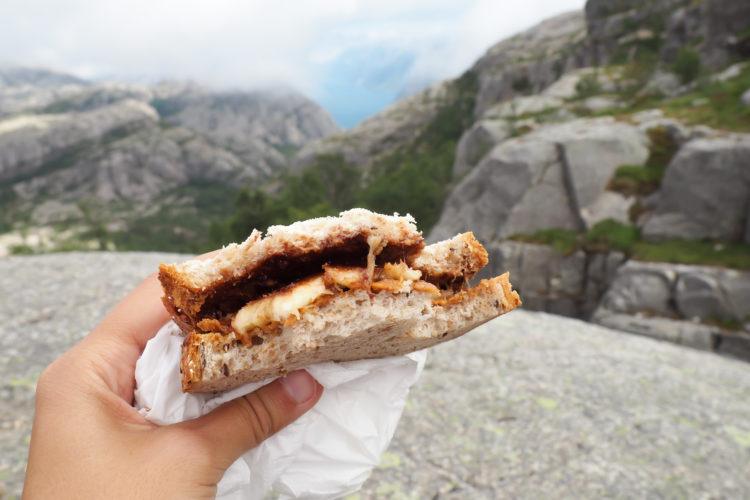
- The water is delicious and super safe to drink in Norway, so bring along a reusable water bottle to fill up during the day!
- There are 18 Scenic Routes in Norway (previously called National Tourist Routes), which are known to be the countries most astonishing drives. You won’t be able to cover all 1,336 miles of them during these 10 days in Norway, but you’ll definitely be driving a whole bunch! Whatever you do, don’t miss Gamle Strynefjellsvegen towards the end of day 8; it was the most spectacular scenery I’ve ever seen IN MY LIFE (yup, more impressive than Iceland ).

So where exactly is Norway you ask? The country is located in North Western Europe, in the region deemed Scandinavia (along with Denmark and Sweden), or more broadly, the Nordic countries (which also include Finland and Iceland). Norway shares a long eastern border with Sweden, and has over 25,000 km of coastline.
What to bring:
You’ll want to bring all the essentials for your trip, but a few specific things to take along include:
- Snacks for road trip
- Rain jacket
- Water bottle
- Sweater/cardigan and scarf
- Car charger
- Waterproof shoes / rain boots
- Hiking boots (depending on hikes and time of year)
Money and Exchange Rates
Norway uses the Norwegian Krone (NOK), typically called the Kroner (not the Euro like elsewhere in Europe). At the time of this writing (2024), 1 Norwegian Krone (NOK) = ~ $.09USD or 1 USD = ~10.99NOK. I found it easier to think in hundreds and kept these numbers in my head when figuring out the bill/shopping: 100NOK = ~$10USD. It’s not 100% precise, but a pretty good estimation.
Basically every place we went to took credit card (make sure to have Visa/MasterCard as not all accept American Express), but it’s wise to take along a bit of cash on your Norway road trip as well. We had to use cold hard cash when getting gas since the station was having a difficult time reading our credit card.
I always suggest you take out cash at ATMS and never ever through an exchange desk. ATMs provide the best exchange rate.
When to Visit Norway
Norway experiences seriously different weather year round, and deciding which season to travel to Norway will greatly affect your experience there. Many say there’s no bad time to visit the country, but if you’re a big baby like me and get all pouty and upset when it’s raining and/or cold, visit during the summer. 🙂
My top pick: If you’re looking for the greatest chance of sunshine and decent weather, head over to the country in June, July, or August.
The temperatures will be between 20°C – 26°C+ (68°F – 80°F), and the midnight sun will be out and about (giving you extra long days for driving around and exploring all the chic seaside cities). Note that these warmer temps make this the most attractive time to visit Norway, so expect the most crowds during this time of year (it’s sooo worth the few extra people, I promise).
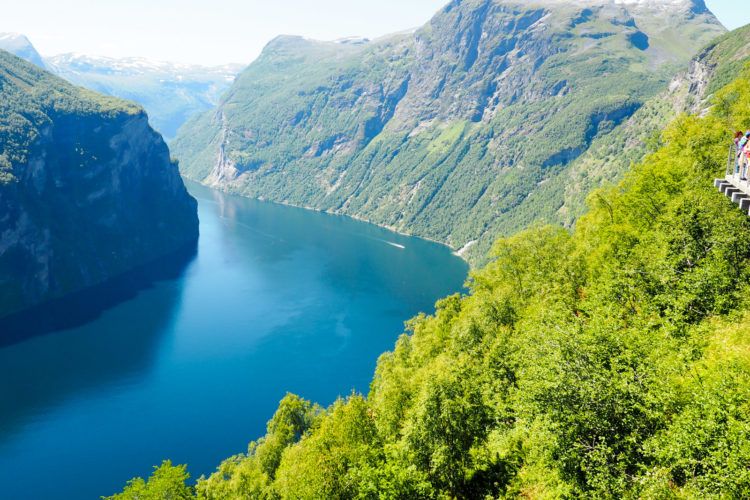
Looking to avoid the high tourist season? Opt to visit in shoulder season, May or September. Temperatures will be mild and hotel rates will be a bit less. And less crowds.
Visiting during the colder months: Norway can get coooold y’all, so if you’re not looking to whip out your cold-weather gear (think boots, scarves, wool hats, down jackets, etc), don’t book your Norway road trip before May or after September. Besides viewing the northern lights, activities will be greatly limited, and unless you’re a snow bird and enjoy freezing cold temps, you may not find much to do.
However, if you’re looking for the cheapest possible time to visit Norway, these are the months to do it, as flight prices and hotel rates will be significantly less (because not many want to visit then). It’s also important to note that you won’t find many daylight hours if you visit in December-February.
Health and Safety
Norway is known to be one of the safest countries in the world, with extremely minimal petty crime. As always, it’s best to be aware of your surroundings, but know that you’re in a super-safe area. The country is so safe that police don’t even carry guns! Robberies are extremely rare, but note that pickpockets in crowded places (like public transport in major cities) can and do occur at times. Just use common sense, stay alert, and you’ll be fine.
The water in Norway is top-notch, so drinking the tap is perfectly safe and encouraged! No need to buy bottled water over here! Food and water standards are similar to those in the USA, so you don’t need to worry about contamination nor food sickness. Note that only routine vaccinations are required to visit the country, and you probably had those all when you were younger (check with your doctor).
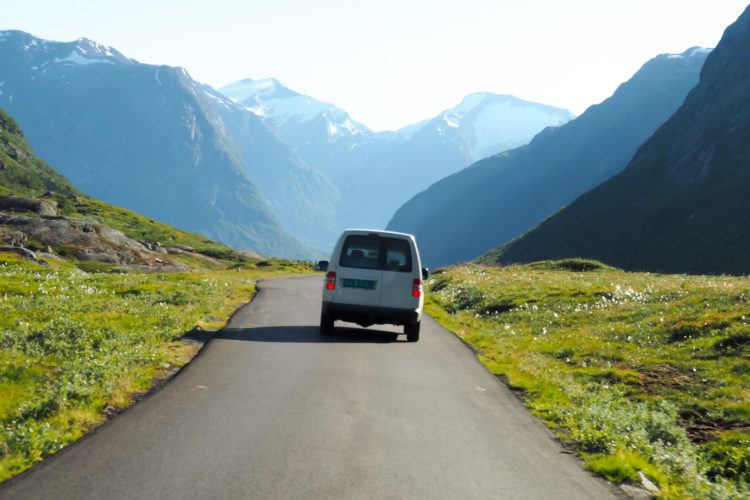
Visas and Passports
No visa is required for U.S. citizens traveling to Norway as long as a valid tourist passport is in possession (and valid for at least six months beyond the period of stay). Since Norway is part of the Schengen Agreement, U.S. citizens may visit for up to 90 days for either tourist or business purposes.
How to Get to Norway
Most international flights arrive in Oslo, which is precisely why this Norway itinerary starts in the capital! I like using Skyscanner and Google Flights to check for prices, and almost alllways find the cheapest flights on one of those sites.
We chose to fly economy and paid around $750 per person round trip to/from Oslo from the West Coast USA during one of Norway’s busiest times of year- mid-summer (July).
If you have extra time and are able to check airfare into nearby cities (Copenhagen, for example), you may be able to find even cheaper flights on low-cost airlines. For reference, my friend flew to Copenhagen around the same time we flew to Oslo for only $500 round trip!

Where to Stay in Norway
more info on each one throughout Norway itinerary below
- Oslo (2 nights): Saga Poshtel Oslo Central // Comfort Hotel Runway (airport hotel)
- Stavanger (2 nights): Clarion Hotel Stavanger
- Bergen (2 nights): Bergen Harbor Hotel
- Flam (1 night): Fretheim Hotel / Flåmsbrygga Hotel
- Hjelle/Geiranger (1 night): Hjelle Hotel or Hotel Utsikten
- Alesund (2 nights): Thon Hotel Ålesund
And now what you’ve been waiting for:
The Ultimate 10 Day Norway Road Trip Itinerary
This Norway itinerary will have you chasing trolls in Stavanger, trying reindeer meat in Bergen, hiking to glamorous fjord views, taking the most scenic train ride in the world, driving some spectacular Norwegian tourist routes, staring up at glacier, and oh so much more! Get ready for the ride, because this Norway road trip will have you begging to come back asap!

This itinerary starts in Oslo (which is where most international travelers arrive in the country), heads west to Stavanger, then makes its way up north to Alesund via Bergen, Flam, and Geiranger.
As noted earlier, we chose to fly from Oslo to Stavanger to save some driving time, drove all the way to Alesund, then flew back to Oslo. Since the country is quite large, you need to understand you won’t be able to see eeeeverything, but if you follow this Norway road trip itinerary I can promise you that you’ll see a good chunk of all things spectacular.
Day 0: Fly into Oslo!
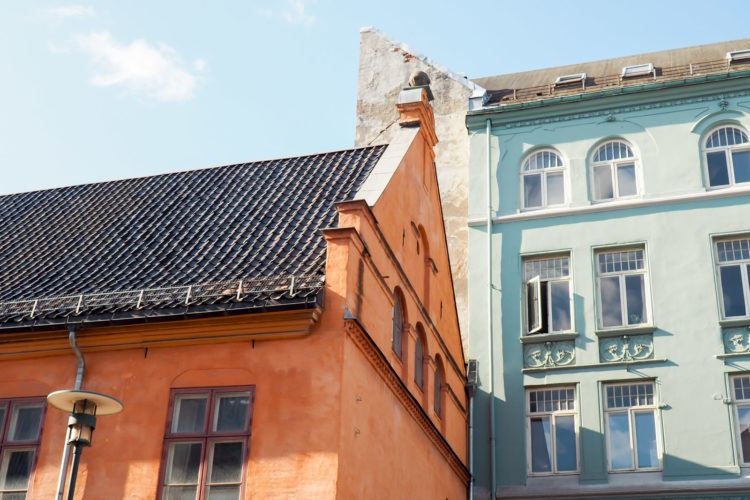
You’ll find most international flights to Norway will fly to Oslo, which is perfect as it’s the first stop on our 10 day Norway itinerary! The flight can be relatively long depending on where you’re coming from (~12 hours from West Coast USA, 7 hours from New York), but once you get there, I promise you that a trip to Norway is welllll worth it!
It’ll cost about 101NOK in order to get into the city center (~12USD) on the local trains (NSB). Note that there is an airport express shuttle which takes slightly shorter but is almost double the price.
Where to Stay: Comfort Hotel Runway or Saga Poshtel Oslo Central
If you’re just coming off a super long flight (say from the states), it’s totally acceptable to stay in an airport hotel really close to the Oslo airport your first night. Make sure to make your way into central Oslo early the next morning to get your exploring on!
Days 1-2: Explore Oslo
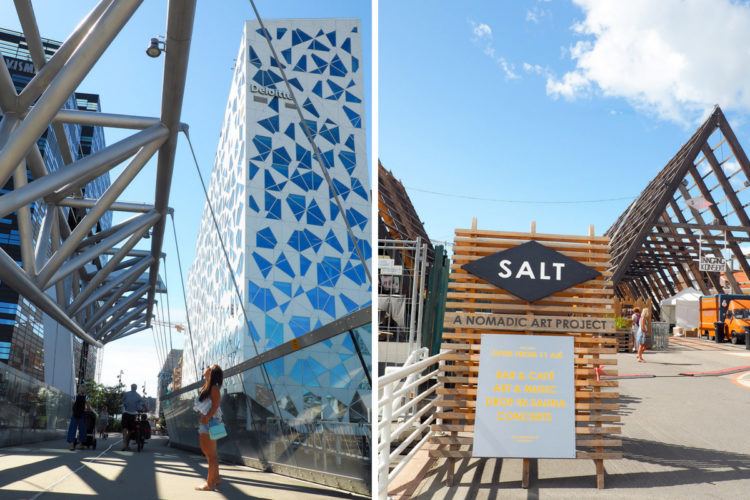
Welcome to Norway, home of the stunning turquoise fjords, towering mountains, and $8 hot dogs. Yes, it’s pricey and your wallet may never adjust, but trust me, the expense is worth it. Norway is one of the most remarkable countries I’ve been to.
Oslo is absolutely gorgeous – and you’ll find old colorful houses lining to streets with new, innovative buildings sprinkled throughout. And those fjord water views make any sunny day just that much better.

The city is rather large, but thankfully, getting around is super easy, as there are a myriad of buses and trams all throughout. Two days in Oslo is probably not enough, but you’ll be able to get in these city highlights with only 48 hours or so:
- Karl Johans Gate : Did someone say shopping? This main shopping street in Oslo is where you’ll find all the action happening. From hip cafes and chic hotels to funky discos and nightclubs, you’ll find it all on Karl Johans Gate. It’s usually pretty crowded, so go for a stroll early in the morning or later in the evening. You’ll probably be back a few times though.
- Norwegian Museum of Cultural History (with an impressive stave church)
- Fram Museum (so interesting to learn about the polar expeditions!)
- Kon-Tiki Museet (with loads of info about the voyage to Easter Island)
- Norwegian Folk Museum (one of the largest open-air museums in Europe),
- Viking Ship Museum (those boats are huuuuge)
- Norwegian Maritime Museum (learn more about the massive ship building industry)
- Astrup Fearnley Museet
- Munch Museum
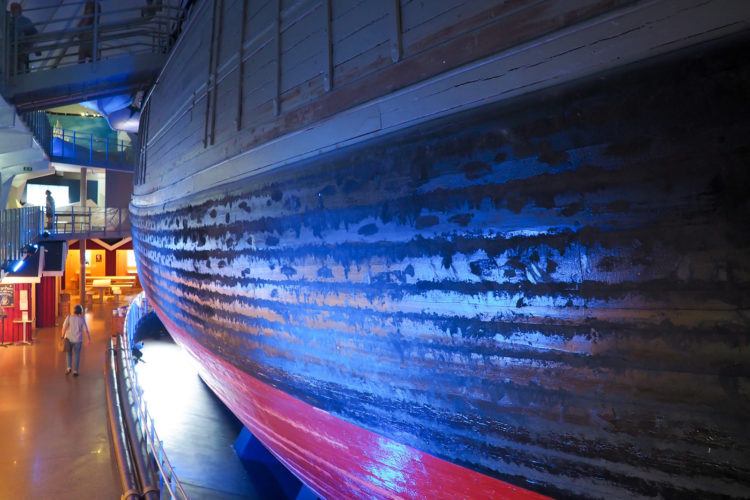
- Opera House: By far the most impressive building in Oslo, modeled after flat iceberg shapes with inclines. I suggest you pass by during the day, but spend the majority of your time checking out the Opera House around dusk. It’s absolutely beautiful once the city gets a tad darker, and everyone hangs out on the roof (which you can walk up to). I spent both my nights sitting up here listening to music and meeting cool people!
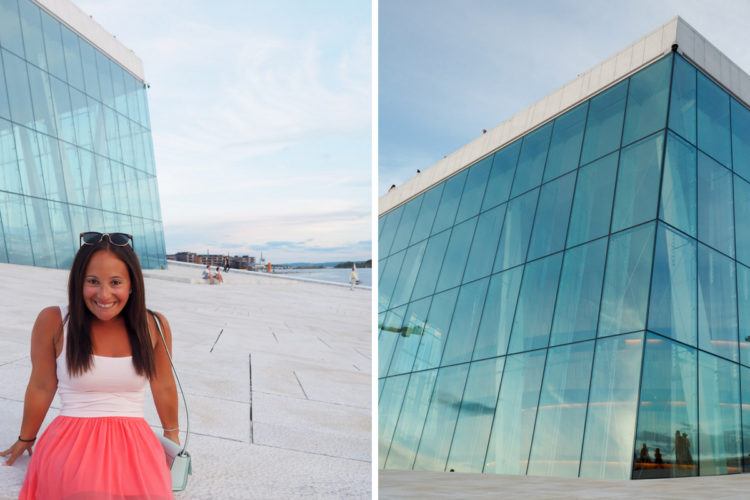
- SALT : Located a few minutes from the Opera House, this cool harbor front spot boasts a nomadic art lounge with bars and coffee shops.
- Oslo Fjord Sightseeing Cruise by Sailing Ship : Get out onto the water! There’s unique islands and colorful houses right on the Oslo Fjord, and of course stunning views. Definitely a highlight of Oslo, especially at sunset!
- Sorenga outdoor beach deck (Sørenga Sjøbad): Found yourself a sunny day in Oslo? Head over to Sørenga Sjøbad and just chill out and relax in the warmth for a bit! Take along your bathing suit if you want to jump in for a swim!
- Frogner Park : Super interesting park, with a collection of over 200 bizarre sculptures by Gustav Vigeland. Definitely a unique attraction in Oslo!
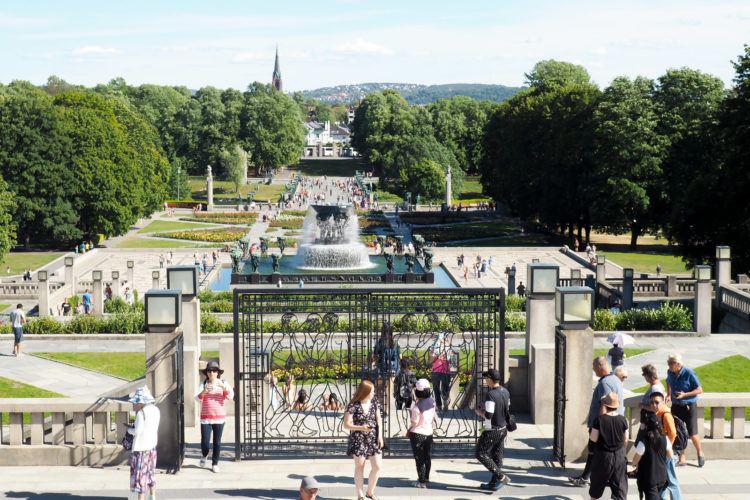
- Aker Brygge : Upscale harbor front of Oslo with gorgeous views of Oslofjord. A great place to get your first famous Norwegian Pølse (hot dog)!
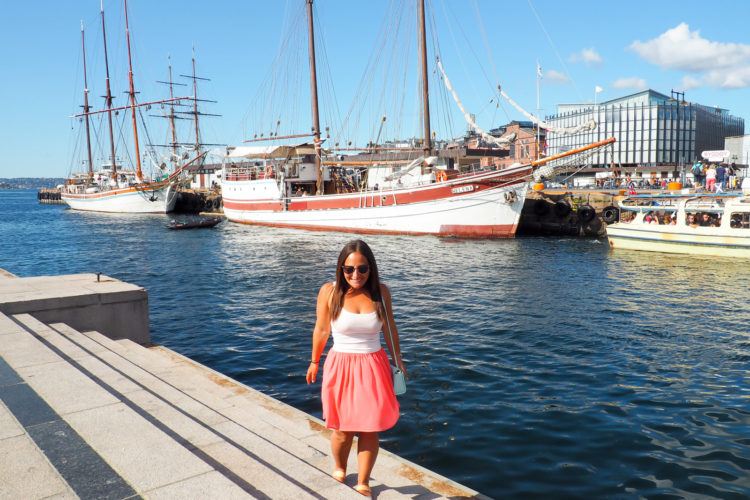
- Akershus Fortress : Head up here for fantastic views of Oslo and watch massive cruise liners dock at the harbor front. A bit of a trek uphill, but worth it for the views and impressive old-school buildings
- Oslo Radhus : Oslo’s city counsel building, with super impressive murals on the walls. Note that you’ll need to join a free tour in order to view the inside of the building.

- The Thief Rooftop : Super swanky rooftop lounge and a great place to catch a cocktail in one of the most prestigious hotels of Norway
Where to Stay in Oslo : Saga Poshtel Central Oslo
Day 3: Fly to Stavanger and Explore
Stavanger is the 4th largest city of Norway, although you probably wouldn’t have guessed that after arriving to this coastal town! It’s small town charm and beautiful harbor will have you absolutely swooning from the very beginning of your visit. It’s a fascinating mix of old and new, with some of the best-preserved (and beautiful) wooden buildings anywhere in Norway, dating back to the Middle Ages.
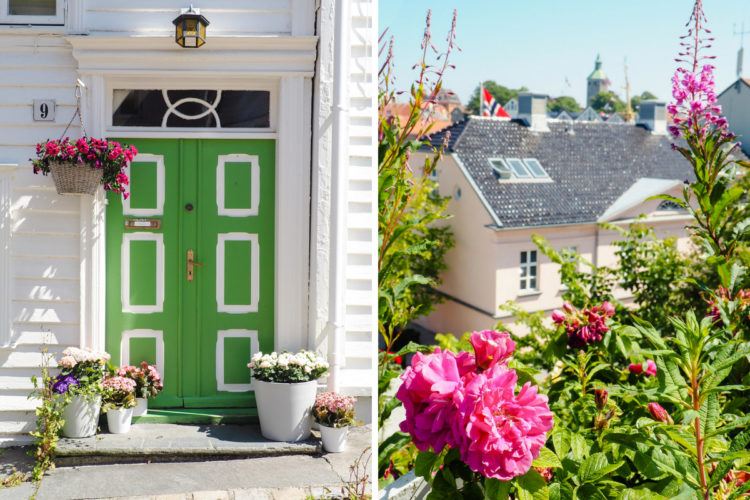
If you book an early morning flight to Stavanger (9 or 10am), you’ll arrive with enough time to explore this charming little city. Stavanger is quite compact and can be explored via foot, so there’s no need to pick up a rental car just yet (don’t – parking is annoying and costly, and there’s honestly no reason for your own wheels until a bit later in the trip).
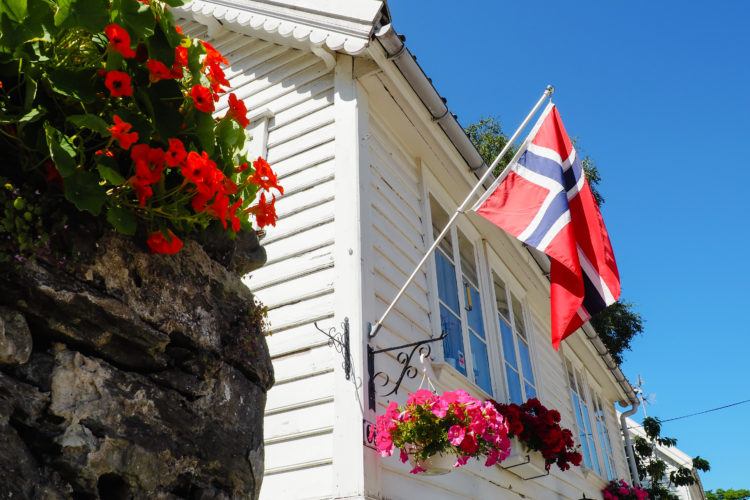
Once you arrive in Stavanger, take the bus to the city center and check into your hotel. Book in advance with Flybussen ( website ) in order to save a few pennies, but you can pay on the bus if need be.
Note that one person will need to head back to the airport to pick up the car rental, so it’s wise for one person to book a round trip ticket (it’s significantly cheaper than two one way tickets). Only one person needs to go back technically to pick up the car, so keep this in mind when buying tickets.
NOTE: If you’re taking my hotel suggestion and staying at Clarion Hotel Stavanger , you’ll need to book the shuttle to the Radisson Blu (a 2 minute walk away from the Clarion).
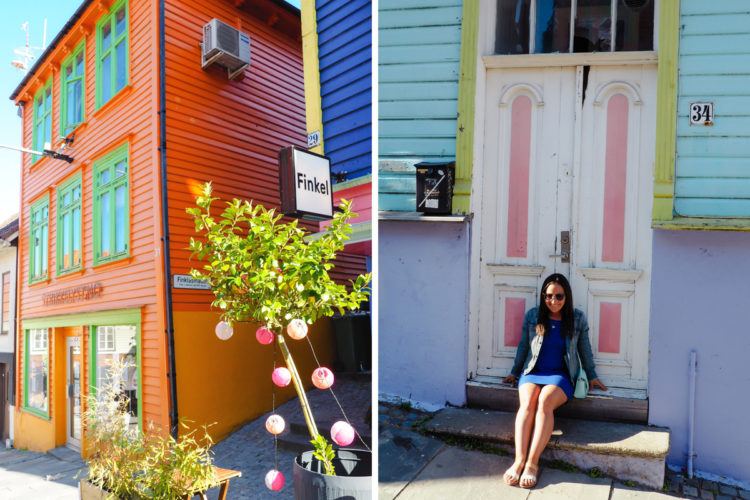
Don’t miss these top things to do in Stavanger:
- Gamle Stavanger , also known as Old Stavanger: This area is so super cute, with it’s historic beautiful wooden white houses with beautiful planters and bright colored doors. The cobblestone streets just added to the quaintness, and I couldn’t stop taking photos of the manicured grounds! It won’t talk long to walk through the narrow streets and admire the architecture, so be sure to take a walk around here!

- Ovre Holmegate : My absolute favorite street in all of Stavanger, mostly due to it’s vivid colors and wild street art. Here you’ll find lively cafes and bars, a bunch of popular pubs, and is definitely one of Stavangers more visited and photographed spots!
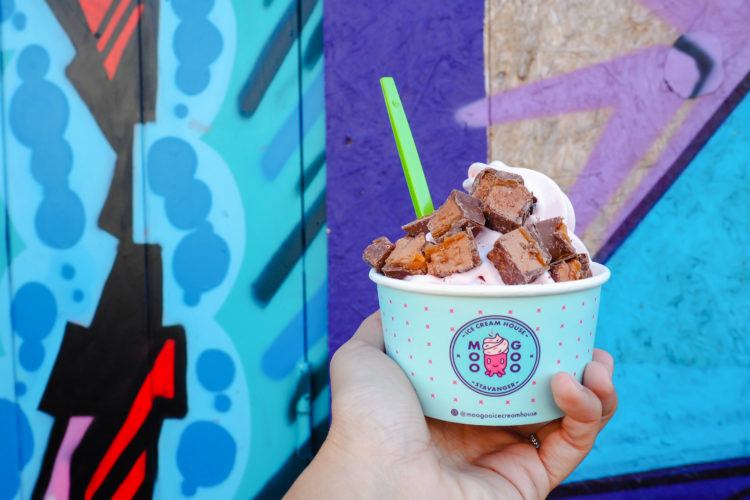
- Stavanger Cathedral : Also known as Domkirken, it’s the oldest Cathedral in Norway and not to be missed!
- Norwegian Petroleum Museum (Norsk Oljemuseum): Interesting in learning how oil and gas is created, discovered and produced in the North Sea? Head on over to the Petroleum Museum! I admit that we decided to skip touring the inside, but saw the building from the outside and the architecture was pretty cool !
- Take pictures with trolls and the street art around town!
- Have lunch at the harbor front and admire the sea : There are numerous restaurants all along this stretch, and you’ll easily find something to snack and sip on! The harbor really comes alive in the summertime, especially after working hours, as locals frequent this area to catch up with friends and grab a drink. A wonderful place to watch the sunset as well (if you’re still awake at 11pm!)
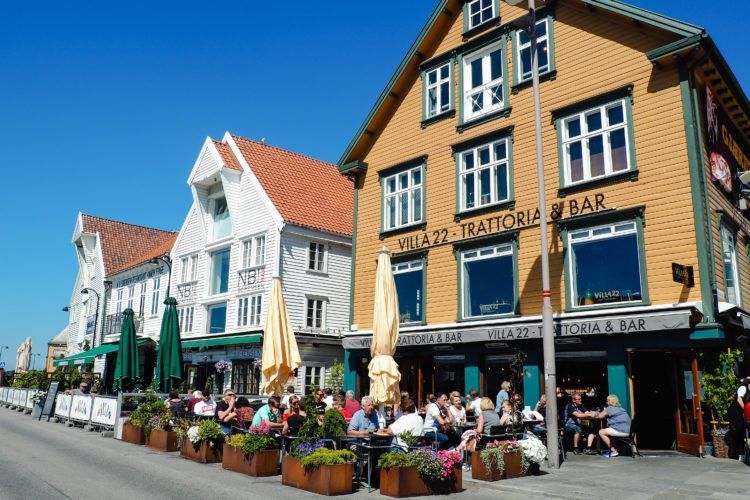
- Marvel at the street art : If you’re visiting in August/September, you’re in for a real treat. The city holds a 2-week festival with an international team of street artists working on new art all around the city. Be sure to sign up for the tour!

Where to Stay in Stavanger : Clarion Hotel Stavanger
We absolutely loved this hotel, with it’s spacious rooms, large breakfast spread with basically everything imaginable (including my favorites strawberry smoothies, Nutella and raspberry pancakes, brie and crackers, prosciutto and melon), super convenient location, and friendly and helpful staff! Highly recommended!
Day 4: Pulpit Rock/Preikestolen Hike (from Stavanger)
Ready for a full day of awesome, sweaty hiking? Yes, I promise the views are worth it and then some! I mean, Tom Cruise actually visited Preikestolen while filming his new movie, “Mission Impossible” in October 2017. And besides the lovely Tom, the hike draws over 300,000 visitors each year – and for good reason! Just look at those views!
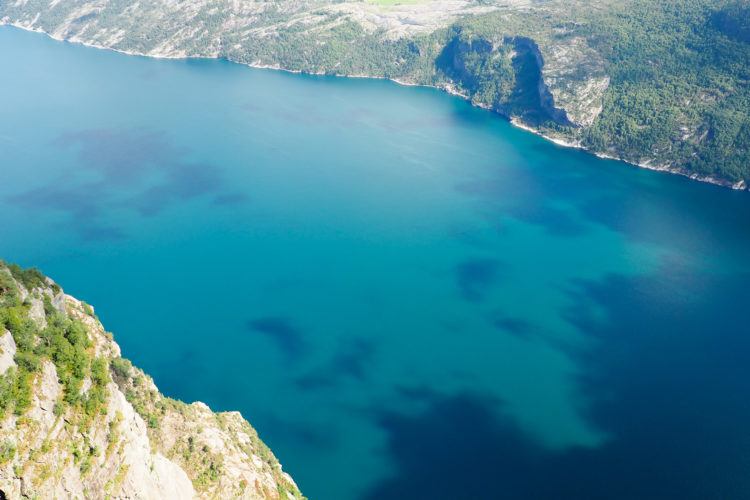
Pulpit Rock takes about 4-5 hours to hike round trip, so start your journey early. If I remember correctly, it took us about 2 hours to get to the starting point, and then another 5 hours of hiking (plus time spent getting back to Stavanger once we were all finished). Two and a half hours up, an hour+ or so at the top, and roughly an hour and a half down.
Although the hike is only about 8k long, there are numerous difficult patches of terrain, many with impressively tough elevations, so mentally prepare yourself beforehand!
We had originally planned to squeeze in a fjord cruise on the Lysefjord , but are so glad we didn’t because of the amount of time the hike took us. We also decided to spend a bit of time at the top admiring the views since we had no views on our way up because of the lousy early-morning weather. If you’re a faster hiker than us (we’re not experienced hikers by any means), you can easily fit in the cruise.
Psst – If you prefer an action-packed trip through the fjords, book yourself on a RIB tour instead (way more adrenaline-inducing, haha).

Read More: Conquering Norway’s Pulpit Rock Hike: Everything You Need to Know
Be prepared for any and all types of weather during your hike. At the beginning of our hike we encountered lots of mist and light rain, which turned to heavy fog, which finally (and thankfully) burned off a bit after we reached the top.
You never know what you’ll get weather-wise in Norway, so it’s best to dress in layers and bring a backpack full of water, snacks, lunch, a rain jacket, and an extra sweater. Crossing my fingers that the weather gods are on your side for your hike – if not, all you might see are clouds and fog (which wouldn’t make the hike worth it in my opinion).

How to get to Pulpit Rock/Preikestolen from Stavanger:
- Take the ferry from Stavanger to Tau (60 NOK / ~6 EUR per adult one way, buy it directly on the ferry)
- Bus from Tau ferry station to Preikestolen Fjellstue (230 NOK / ~30 round trip per adult, buy it on the bus)
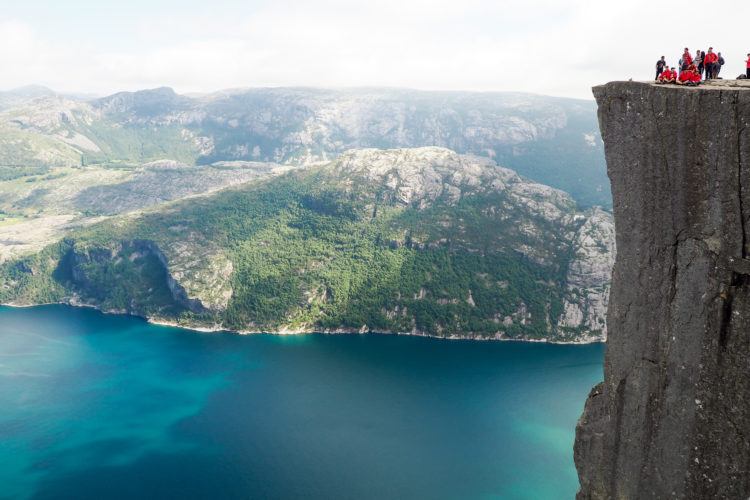
It’s all very easy to figure out and an incredibly smooth journey. It can sound a bit complicated, but I promise you getting to the start of the hike is rather quite simple and reliable. You can also rent a car and drive to the trailhead, which is roughly a 90 minute drive from Stavanger, but I don’t recommend this per say. The public transportation is all very reliable and there’ll be a bus waiting for you after the ferry arrives in Tau. More information on getting to Pulpit Rock here.
A few companies are now offering guided hikes up to Preikestolen , which are perfect if you’re not comfortable hiking without a guide or don’t wanna worry about transportation to/from Stavanger. Since we’re not big hikers, I think we would’ve felt more comfortable going with someone who knows the area.
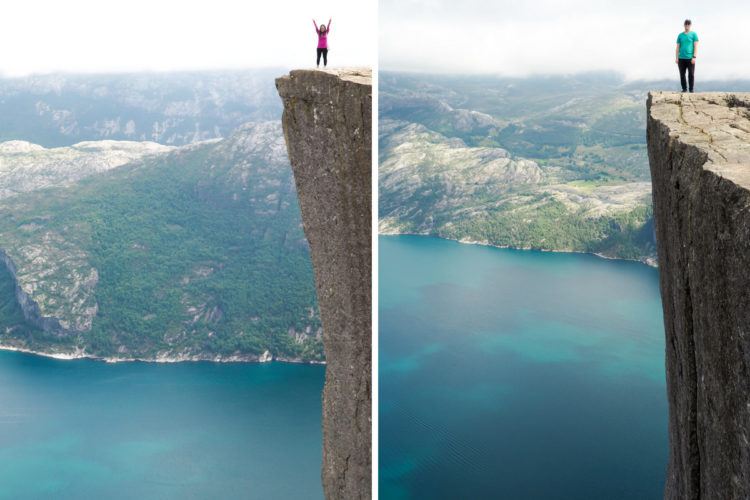
Be careful when taking pictures on the edge, as the platform rises about 2,000 feet (600 meters) above the fjord, with no guards or rails protecting you or your loved ones. At first I was extremely skeptical and needed my husbands hand when getting even the slightest bit towards the edge, but I quickly warmed up and was confident in my footing and abilities after a few minutes.
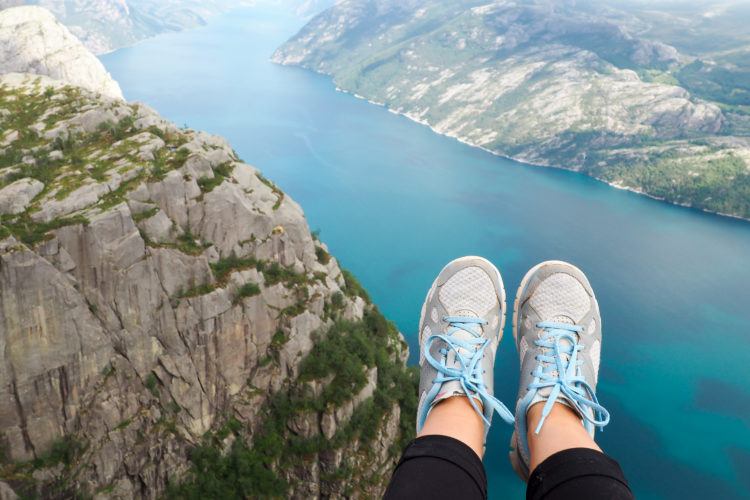
Note that there are no facilities (read: bathrooms) on the duration of the hike, so although you should keep yourself hydrated, limit your water levels if you don’t want to head off into the wilderness to pee. 🙂

Where to Stay: Clarion Hotel Stavanger (No need to switch rooms, as it’s highly recommended to hike Pulpit Rock as a day trip from Stavanger!)
Day 5: Road Trip Time + LOTS of Waterfalls!
Driving Hours: 8
Let’s get this Norway road trip under way! It’s finally time to pick up your rental car at Stavanger Airport (do this ASAP- we picked it up around 9am in order to start the long drive relatively early), and drive to Bergen!
Note that this will be a long day of driving (7+ hours), but I managed to find plenty of beautiful spots along the way to cure any boredom that was bound to arise!
If you’re tight on time you can also drive directly to Bergen in about 4 hours, but what’s the fun in that?! The Norwegian countryside is too beautiful to bypass. You’ll want to pull over every few minutes – you’ll see. A few of these stops were pre-planned for, while others we found while on the road!

You’ll be passing through the beautiful Norwegian countryside, over lots of bridges and through more tunnels you ever imagined. This is all part of the fun! Note that you’ll also be making your way onto two car ferries today – just follow your GPS and the road will basically turn into the car ferry. 🙂 Easy peasy. Those Norwegians know what they’re doing.
*NOTE: If you have your heart set on hiking Trolltunga/Trolls Tongue (that epic photo you’ve seen plastered all over instagram and pinterest), you’ll want to end your day near Odda (close to Folgefanna National Park). Get up nice and early the next morning to start the 22 km hike. Pulpit Rock was enough for us so we didn’t stop in Odda to attempt Trolltunga.
In addition, if you have an extra day and a super strenuous 22 km / 10-12 hour hike isn’t your idea of fun on vacation, consider going on a glacier walk. We didn’t have enough time to do so, but it looks insanely fun!
Recommended route and stops along the way:
1. Take the Mortavika-Arsvågen/E39 car ferry: You just drive right on and pay (240NOK for 2 adults and car). The ferry took approximately 25 minutes or so, and shaved off some driving time obviously!
2. Langfossen: A pleasant surprise as we had not originally planned to stop here. Epically beautiful, and right on the side of the road so difficult to miss. 😉 The water falls down a towering mountain, before pouring out into the Åkrafjorden (another fjord!) There’s a small coffee shop in the parking lot if you need your caffeine fix!
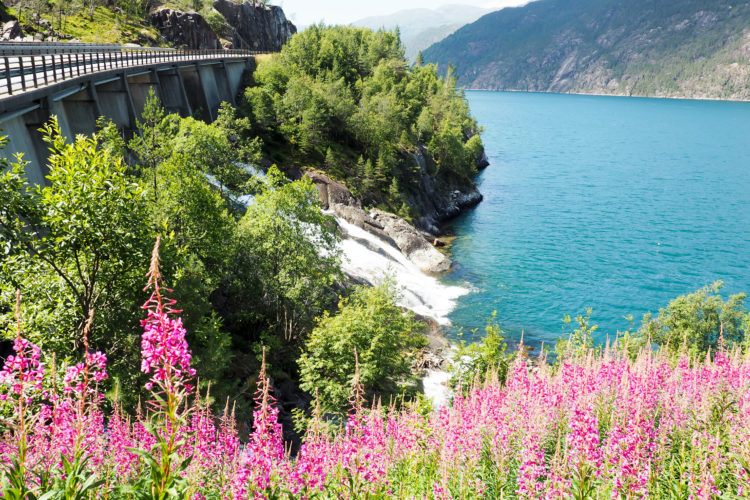
3. Fjaera: Super quick photo stop, only a few minutes from Langfossen.
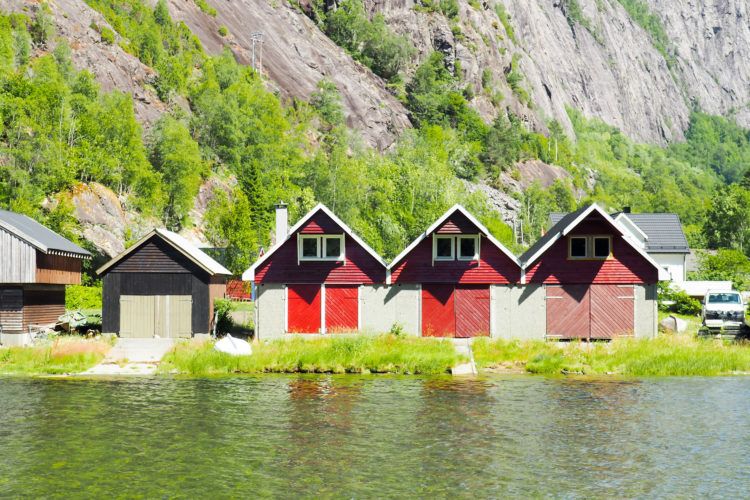
4. Glacier viewing on the side of the road: Be careful when pulling over and heading to the other side of the road for photos. Since we didn’t have time to actually see any glaciers up close, this was the best we were gonna get so wanted to take full advantage! I’m honestly not sure exaaaactly what glacier this was, but enjoy!

5. Latefossen waterfall: Be sure not to miss this twin waterfall, as it’s an internationally famous attraction (but really all the waterfalls in Norway are kinda spectacular). We chose to eat our homemade sandwiches here.

6. Folgefonna Bondhusvatnet: Time to stretch your legs on a short hike to an absolutely stunning lake located within Folgefonna National Park! The hike took us about ½ hour each way (gravel trail with very slight elevation gain), and was filled with beautiful scenery, tons and tons of wildflowers, and so many sheep with cow (sheep?) bells!
We spent 20-30 minutes at the lake exploring and taking photos of the ridiculously clear water and just taking a few moments to revel in Norway’s beauty..
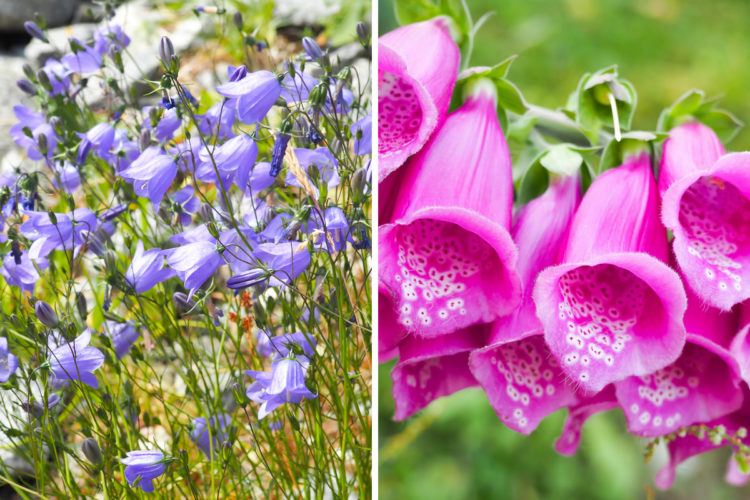
Note that there’s a parking lot at the beginning of the trailhead, and no fee to enter to park (from this entrance at least). If you’re feeling a bit thirsty, you can fill up your water bottle with glacial water at the beginning or end of the walk from the nearby streams – do it, the water is delicious!
***If you have ample extra time (completing the drive on your second day after doing Trolltunga perhaps), you can keep going on the trail after the lake in order to see the glacier. We didn’t have enough time for this, so walked to the lake and back.
7. Second Car ferry of the day: Jondal to torvikbygd (120 NOK for car/driver and an additional person). You know the drill – get in line, wait your turn, pay, and get on!
8. Steinsdalsfossen: Last waterfall stop of the day! Even if you’re semi-waterfall-ed out by now, do me a favor and don’t miss this one! You can actually walk behind it!
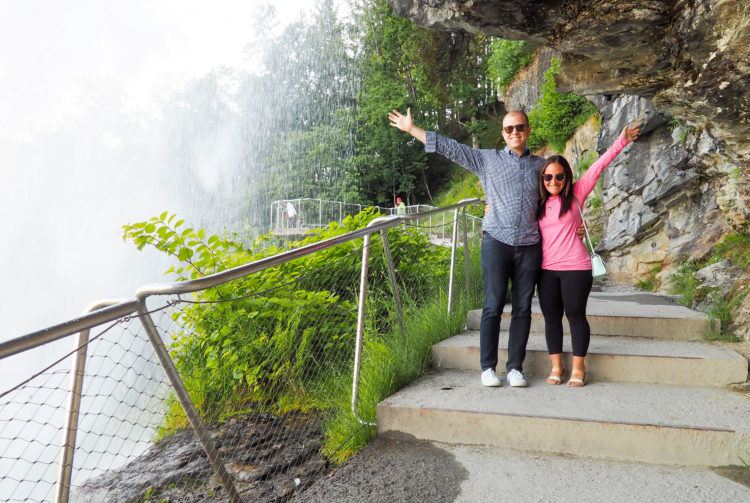
Finish the drive to Bergen, which will take about an hour and a half.
Where to Stay: Bergen Harbor Hotel
Although the rooms were somewhat tiny (common in Bergen), the bed was super comfy, location was extremely convenient, small balcony (depending on room type I’m presuming), and the hot breakfast with some typical Norwegian specialties among your typical breakfast options more than made up for the tightness.
Despite the inconvenient parking situation (which was easily figured out after doing some research – more on that below), we thoroughly enjoyed our time at this hotel and recommend it.
Where to Park : We originally had a difficult time figuring out where to park our rental car, and after talking to a few hotel receptionists (at our hotel and others), we ultimately decided that the ByGaragen (the biggest indoor garage in Bergen) was the best choice.
The price varies from 12 NOK per hour on Sundays to 24 NOK per hour daytime during weekdays, with a maximum price of 150NOK for 24 hours. Including these costs so you can add them to your budget. 🙂 If I remember correctly, I think we paid roughly $30USD for parking in Bergen.
Day 6: Bergen!
Driving Hours: 0
No driving today, yes! Since Bergen is such a walkable city, you can leave your rental car in the garage and set out on foot! The city is absolutely beautiful, and the fact that it’s surrounded by mountains and fjords makes it even more appealing to visitors!
Although Bergen is Norway’s second largest city (yes, really!), one day is enough to see all it’s colorful highlights. It actually looks like a small coastal town, you’ll see! And PS – Bergen is said to be one of the rainiest cities in all of Norway, so bring along your umbrella and/or rain jacket if the skies look a bit dark. 😉

Be sure to not miss:
Bryggen and the Wharf : You know those colorful wooden houses I’m sure you’ve seen all over? They’re over here at Bryggen! A little interesting fact: since these houses are constructed entirely from wood, this means two things – 1) It’s quick and easy to build, but 2) it’s also quick and easy to burn down!
Bryggen has been burning down for centuries upon centuries (with a history of fires since the 14th century when it came into being), with its most recent fire in 1955. Make sure to wander the streets behind Bryggen as well (through the small alleyways between the buildings on the harbor) to see what the area would have been like during the Middle Ages.
This medieval wharf part of Bergen is actually a UNESCO Heritage Site! You can also check out the The Hanseatic Museum if you’re interested in doing so.

The Fish Market: Not in the mood for fish? Don’t fret – there’s way more than fish at the fish market! Whale sausage, anyone?! Those Norwegians sure do love their sausages! What about some seafood paella?! It actually looked really good! You’ll be able to sample lots of Norwegian delicacies before buying, don’t you worry! Psst – the whale and reindeer sausages were really good!
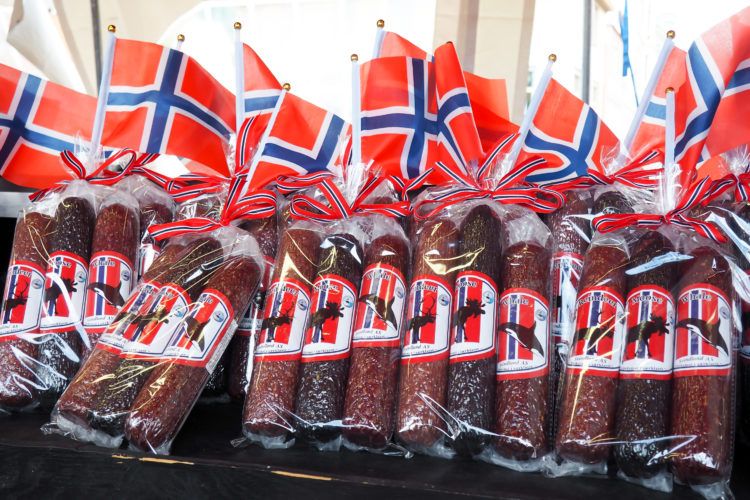
Funicular (or hike!) to Mt. Floyen: Nature fiend like I am? You’ll absolutely love taking the Fløibanen Funicular up Fløyen Mountain for panoramic views of the whole town and the old harbor. If you’re feeling a bit extra and want to work off that bacon-wrapped hot dog, you can hike up the mountain (but note that some parts are quite steep).
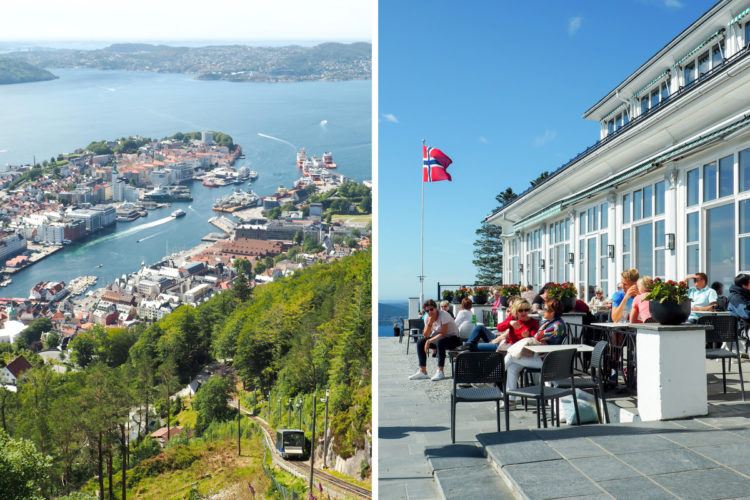
Try some reindeer meat: You can’t visit Bergen and not indulge in (or at least try!) some reindeer meat – it’s a specialty here (that and whale meat)! Go for lunch or an early dinner at Pingvinen, a cozy gastro bar cafe right near the center of Bergen with authentic Norwegian cuisine. Be sure to order a Norwegian beer as well!
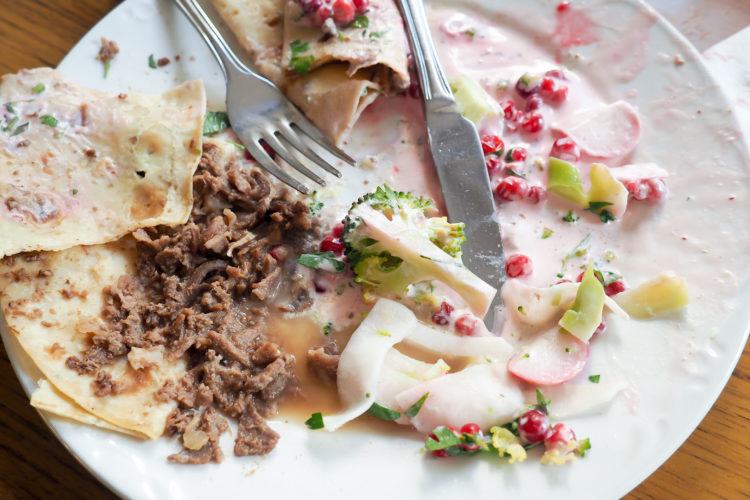
Hot Dogs and Reindeer Dogs at Trekroneren: Another top spot for the foodies, as dogs at Trekroneren just can’t be missed over here. And plus, hot dogs are the best cheap Norwegian food (at about ~$8), which we greatly appreciated after getting tired of paying $30 a meal per person.
While the options at Trekroneren are endless, we both opted for the reindeer dog with lingonberry sauce, crispy fried onions (sprøstekt løk), and mustard, and both agreed the odd flavor combinations were absolutely sensational. Note that there’s no seating, so head here when you want a quick bite during your wanders! Also, the stand is open quite late so if you find yourself especially hungry late at night, you know where to go.
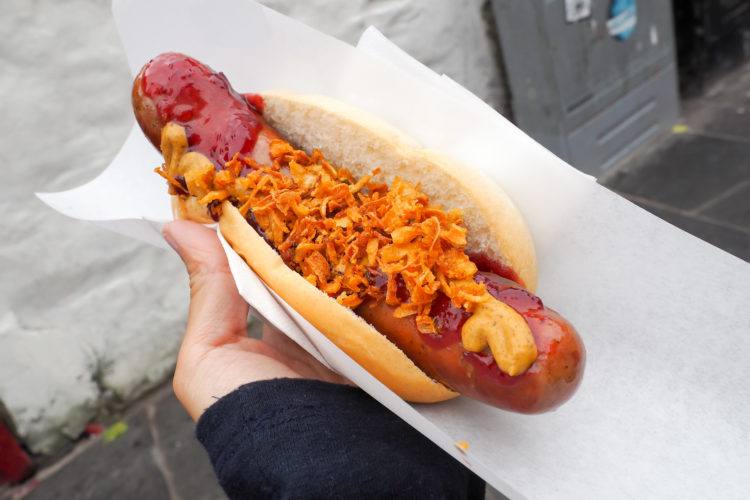
To be honest, it was kinda nice that there wasn’t a whooole whole lot to do here in Bergen. There were enough activities to fill a leisurely day with extra random wanderings and relaxing at a cafe. We even headed back to the hotel for a midday snooze (which we never do!).
It doesn’t hurt that the sun sets super late here in the summer (11pm-ish), so we didn’t feel like we had to cram everything in ! Greatest feeling ever, especially for an overachiever like myself (I have FOMOOOO at its worst)!
Day 7: Nærøyfjord Fjord Cruise and Flam Railway
Most definitely the most touristy day of the trip, but the views were pretty spectacular, so oh well! Wake up early from Bergen, and make the 2 hour drive to Gudvangen. Note that you can start the Nærøyfjord Fjord Cruise in either Gudvangen or Flam, it just depends on the availability when you book.
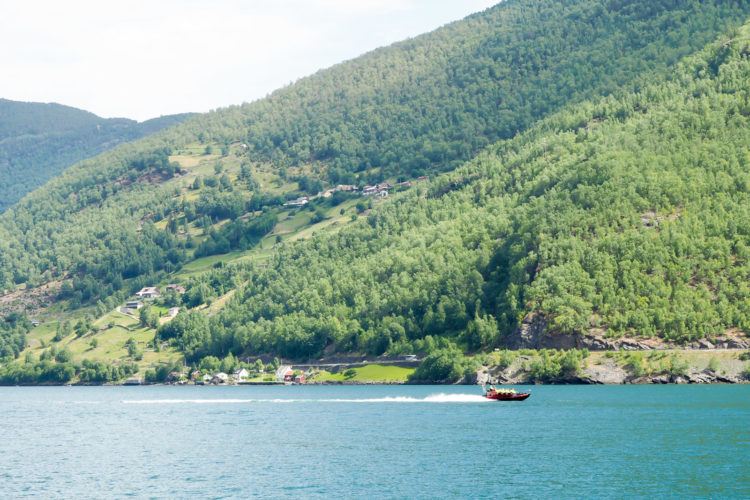
On the way to Gudvangen/Flam, be on the lookout for Tvindefossen, another waterfall located right on the side of highway. We saw sooooo many waterfalls already we didn’t feel the need to stop, but still worth looking out for on your drive to the Flåm area.
The next two stops/activities are probably the most touristy on this entire 10 day Norway itinerary (as noted above), but I wanted to see what all the fuss was about.

Note that this day on the Norway itinerary is basically a DIY Norway in a Nutshell (and if you’ve been researching things to do in Norway you’ve definitely come across this). You can either book the following as part of a tour package , or book the tickets yourself (which is what we did).
You save a decent amount of money booking everything yourself, and you get the same exact experience as those on the “tour”. FYI, the “tour” isn’t really a “tour” at all- all the Norway in a Nutshell company does is book your tickets, which is all public transportation anyways. Do yourself a favor, book everything yourself and save a few NOK (try some local beer or a reindeer burger instead).
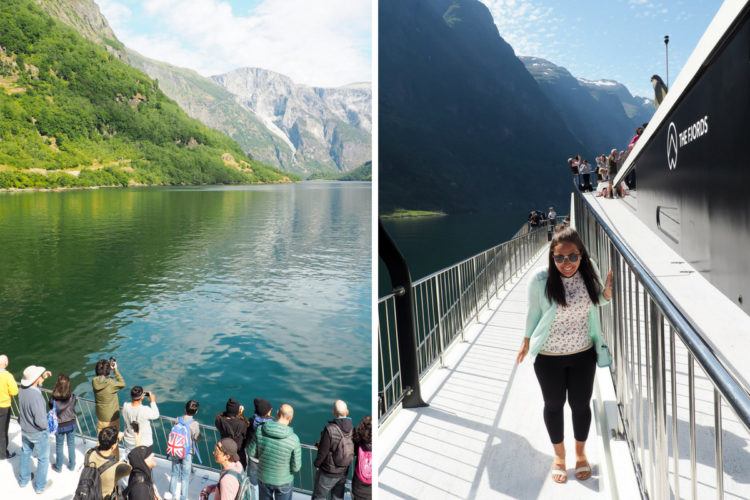
Book the Nærøyfjord Fjord Cruise here.
Book the Flam Railway here (called the Flamsbana)
You’re welcome. 😀
I suggest booking way in advance (a few months), especially if you’re visiting during Norway’s summer, June-August. We waited a bit and had limited availability, but thankfully I was able to figure it all out with tour timings and such.
Still don’t feel like figuring out all the logistics yourself? I totally get it – it was honestly kinda a pain to put together myself, especially since I waited a bit too long to book everything and times got filled up.
Thankfully there’s now companies offering complete self-guided packages , like this one which includes all the tickets you need for the day (albeit more expensive since they’re doing all the work for you). But worth it if you don’t wanna miss anything (it can get pretty tricky with all the different bookings).
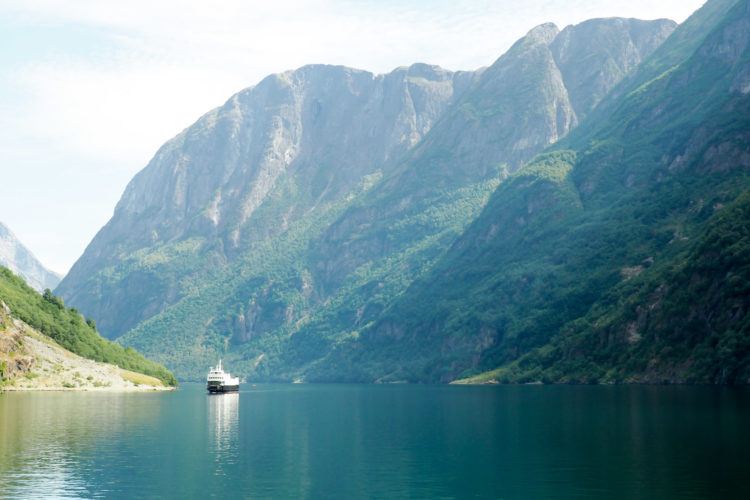
Here was our itinerary for the day, and I suggest you book similar times for the fjord cruise and train ride (feel free to do the train ride first if that’s all that’s available). Just remember that you’ll need to drive approximately 2-2 ½ hours from Bergen to the area, so don’t book anything too early unless you want to wake up at the crack of dawn. 😉
Fjord Cruise: 10am-12pm
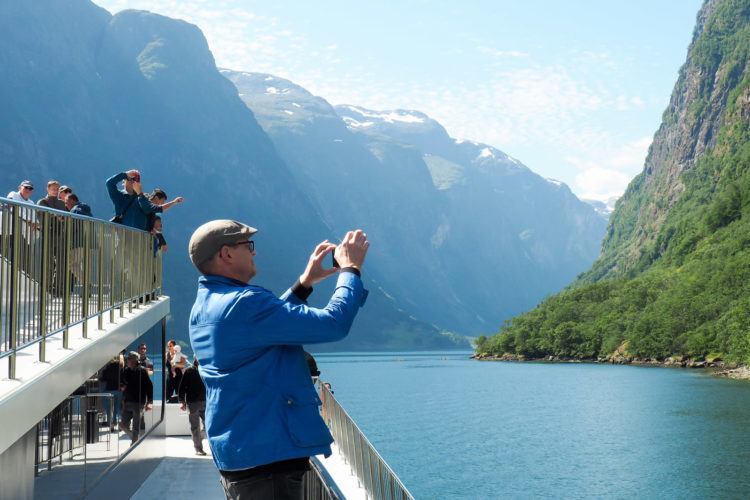
The fjord cruise was super windy at times, so be sure to take a jacket! Thankfully, there’s inside seating if you wish to warm up for a bit (which we did throughout the ride).
Shuttle from Gudvangen to Flam one way (or reverse): Since you’ll be parking your car in Gudvangen (or Flam, depending on availability), you’ll need to take the shuttle back to Gudvangen (Flam to Gudvangen) to pick up the car. Note that the drive back to Flam is about 20 minutes.
Tickets for roundtrip (fjord cruise + shuttle) are available, but we booked too late and had to buy seperate tickets (which was completely fine, just was a tad more confusing to us at first when figuring out the website).
Flam Railway: 1:30pm-3:30pm roundtrip
Next up, the Flam Railway, which has been named one of the most beautiful train journeys in the world! Because of this, it’s rightfully so one of the leading tourist attractions in Norway, hence it can get crowded (aka get there a bit early!)
You’ll want to sit on the right side of the car departing from Flam for better views. Feeling a bit extra? The windows open at the first and last seat of every car – which makes it much better for photos. Sit here! 🙂

From the train, you’ll see tons of waterfalls and mountain views all the way to Myrdal Station (the ending and where you’ll get back on to return to Flam). I enjoyed it, but didn’t think the scenery was any better than our own views we got while driving throughout other parts of the country. Just my honest opinion.
I’m glad we did it, but the round trip wasn’t necessary (we both fell asleep on the way back to Flåm). PS- you actually DO need a round trip ticket in order to get back to Flåm to pick up your car, just saying seeing the same monotonous scenery twice wasn’t necessary. 🙂

The train ride felt a tad overrated considering all the breathtaking scenery we had seen thus far on our Norway road trip, but I admit it was nice to just sit back, relax, and take in the views (and I’m sure the husband appreciated someone else doing the driving). The train cost $140 for both of us roundtrip, Flam → Myrdal → Flam, and took ~2 hours roundtrip.
Stalheimskleiva
Something else to squeeze in during the day – Stalheimskleiva, one of Northern Europe’s steepest roads (which of course offers beautiful views). It’s only a few minutes drive from either Flam or Gudvangen, and we chose to do this between the fjord cruise and train ride. Our time was a bit rushed so I’d say it’s possibly better to do this before the cruise (depending on the time of your ticket) or after both activities.

Stop at Stalheim Hotel viewing platform in order to see the spectacular views. Note that you don’t need to stay here to admire the scenery below; just walk right through the lobby to the back viewing platform.
However, be careful when using a GPS to get here – the twisty road is one way (driving down only), and our GPS didn’t pick this up! To say we got a nasty glare from a bus driver on his way down is an understatement. Our bad! You’ll see why it’s one way as you’re driving down the 13 sharp hairpin bends – be careful!
Where to Stay: Since we booked last minute, we opted to rent an AirBnB for the night. And to say our accommodation was a surprise was an understatement. Although the house was located in a beautiful spot overlooking Aurlandsfjord, we had to make our own beds and sleep in separate twin beds (not huge deals but not what we were expecting).
I’d say look for something a bit less “unique”, like Fretheim Hotel or Flåmsbrygga Hotel if you want to cuddle up. I recommend finding accommodation in Flam or one of the surrounding small villages (Aurland, Undredal, or Dyrdal).
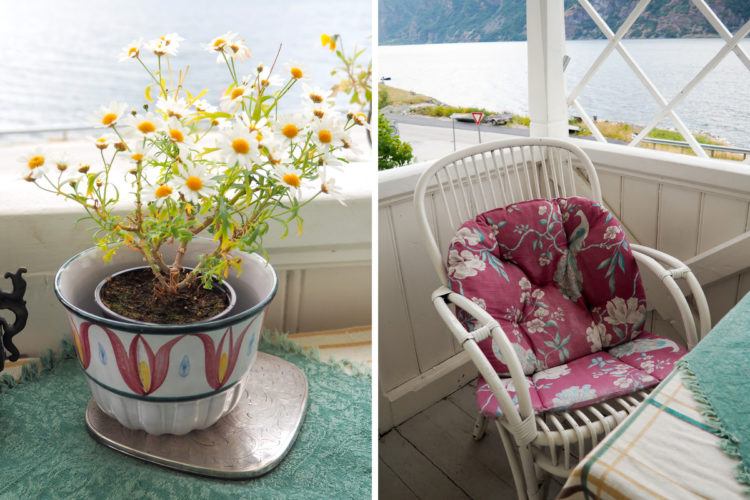
Day 8: Drive the National Tourist Routes
Hours of Driving: 9
A verrrrry long driving day today, but well worth it! You’ll be rewarded with more spectacular mountainous scenery than you ever thought possible, with a whole slew of glacial lakes towards the end (OMFG I can’t contain my excitement).
Everyday on this Norway itinerary is undoubtedly scenic, with the views just getting better and better as the days go on. Today’s long drive encompasses 3 National Tourist Routes: Aurlandsfjellet, Sognefjellet, and Gamle Strynefjellsvegen (my absolute favorite). Here’s the itinerary we followed for the day:
1) Stegastein Lookout
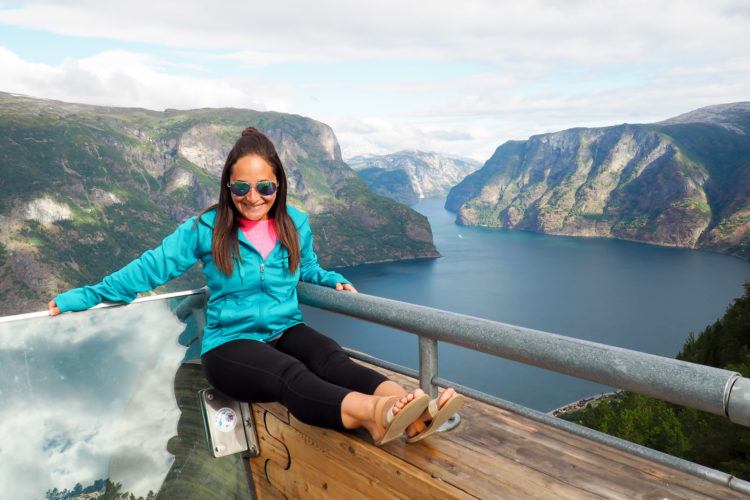
Start the day off at Stegastein Lookout, only 15-20 minutes drive from the Aurland area (where our wacky AirBnB was located). Stegastein is a popular sightseeing spot from Flam, being 650 metres above Aurlandsfjord and all! I’d recommend going early in the morning as the road and viewpoint can get especially crowded. We ate breakfast at the viewpoint and only saw one other couple during our time there.
Time to get away from the fjords for the day (we’ll be back, don’tchu worry!) and head into the mountains!
2) Aurlandsfjellet National Tourist Route (Road 243)
Up next, Aurlandsfjellet National Tourist Route, which runs from Aurlandsvangen (near Stegastein) to Lærdalsøyri, covering a distance of 47km and taking roughly an hour and a half to drive without stops.
Be sure to NOT drive through the Lærdal Tunnel, the world’s longest road tunnel with a length of 24.5 km, as you won’t see any of the stops along the way on the actual scenic route itself. The tunnel can be used to bypass the National Tourist Route or if you’ll be traveling roundtrip, which we won’t be. Promise me you’ll take scenic road 243 instead of the tunnel!
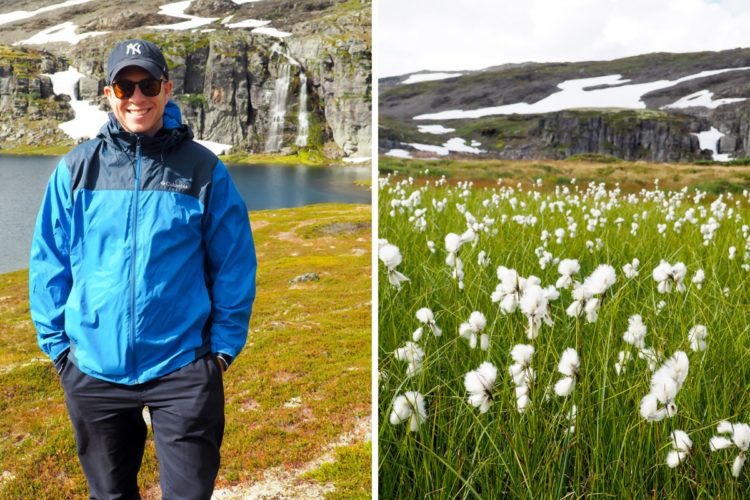
- Stop at Flotane (viewing spot and bathrooms)
- Stop at Vedahaugane (infinity bench with great views)
- Pit stop to see Borgund Stave Church (25 minutes from Laerdalsoyri) – really cool and you must see at least one Stave Church on your Norway road trip!!
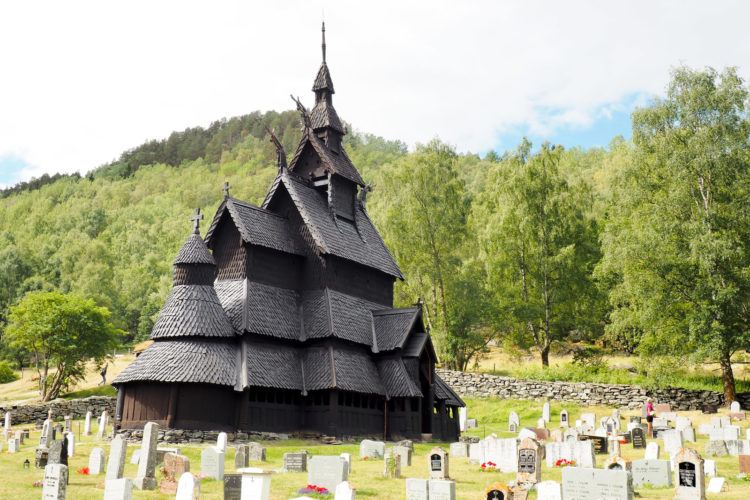
3) Take the Mannheller-Fodnes/Rv5 ferry (28 minutes)
4) Sognefjellet National Tourist Route (Road 55)
Sognefjellet Scenic Road runs from Gaupne to Lom, covering a total distance of 108 km. It will take you about 30 minutes to get to the start of the route, and then another 2 hours+ to drive the entire thing.
Sognefjellet is the highest and most impressive mountain pass in Northern Europe, so it’s easy to see why this road made it as one of Norway’s 18 National Tourist Routes (scenic roads).

- Feigefossen waterfall: look for it across the water from 55 (close to Guapne)
- Turtagrø hotel: red-painted modernistic building, quick photo stop
- Nedre Oscarshaug: provides one of the best vantage points along the road across the Sognefjellet mountains. A glass telescope with the names of the peaks gives an overview of the surrounding Hurrungane massif.
- Mefjellet (rest area with cool stone structure/platform)
- Sognefjellshytta (attractive training centre for national ski teams from all over the world) – cool wooden architecture
- Vegaskjelet (viewing platform)
- Lom Stave Church

To be completely honest, after about ½ – ¾ of the drive through Sognefjellet we had had enough of the mountains. Sure, they were beautiful and all that, but it seemed like many of the stops had views of the same thing. I think next time we’d only stop at 2-3 and get on with the show.
Plus, it was cold and windy that day so that’s proooobably why this drive seemed a bit monotonous and somewhat sad – we didn’t have the energy to hang out in the cold for too cold!
5) Gamle Strynefjellsvegen National Tourist Route (Road 258)
You’re allllllmost to your final destination of the day (Hjelle), I promise! But whatever you do, DO NOT SKIP THIS NEXT ROAD. Be sure to take Road 258 instead of 15. The drive is short, being only 27km, but it’s an absolute stunner.
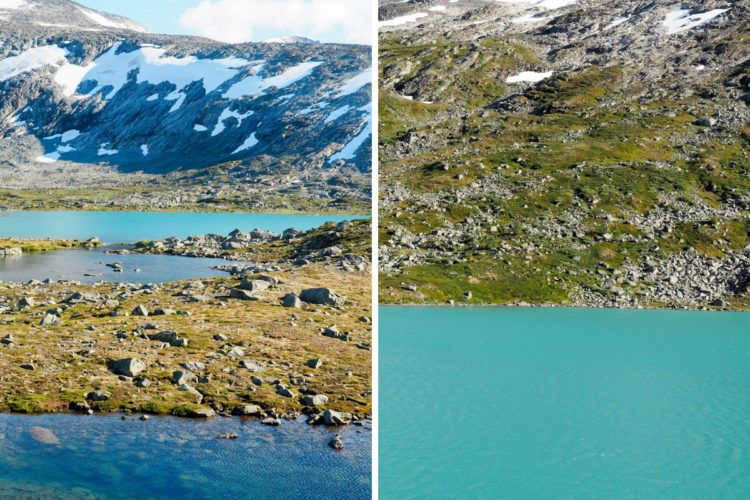
Boy oh boy, this short stretch was one of my absolute favorite hours or so of our entire trip, for the views alone. It’s hard to put into words what seeing glistening glacial lakes, towering mountains, and remnants of snow from colder months will do to you. I’m not sure anything will beat those views I saw that day.
Where to Stay : Hjelle Hotel
Hjelle Hotel was a perfect place to rest our heads after the long day of driving – and I’d highly recommend it! Our “romantic room” was simple yet charming, with a clean, and spacious feeling with a four-poster king bed and chandelier.
Make sure to order the dinner (fixed-price 3 course) – it was absolutely delicious (and have the creme brûlée if you’re lucky enough to see it on the menu which changes nightly).
Hjelle Hotel is situated right on another beauty of a lake (Oppstrynsvatnet) with great views of the mountains, which we loved for a nightly walk after dinner! In addition, the hotel staff was extra accommodating and the breakfast spread was more than decent! Stay here, they’re doing something right having been run by the same family since 1896!
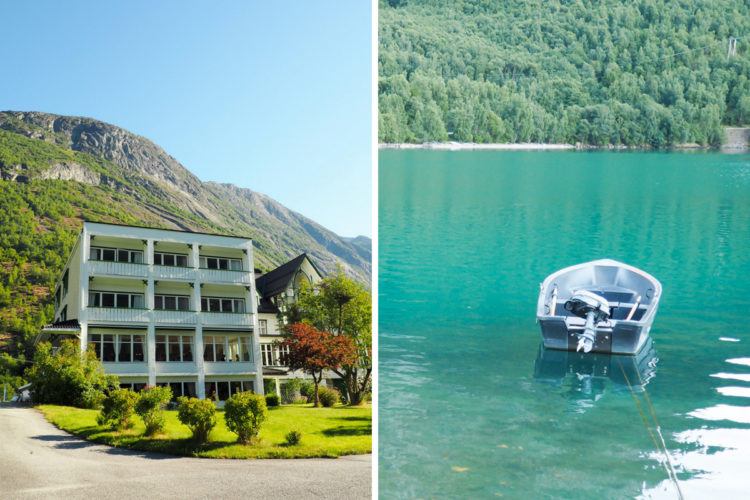
IMPORTANT NOTE: This wouldn’t be a very thorough Norway travel blog if I didn’t mention Hotel Utsikten .
Why? For one, it’s one of the most popular hotels in the Geiranger area, and for good reason. The hotel sits right on the base of Geirangerfjord – meaning, if you ask for a room that faces the road, you’ll have a panoramic view of the fjord right from your view!
Secondly, if you want to stay here (instead of Hjelle Hotel ), book Hotel Utsikten as soon as you know your dates. It was unfortunately completely booked once I finally got around to making hotel reservations, so we opted for Hotel Hjelle (which ended up being a pleasant, positive surprise).
Note that if you decide to stay at Hotel Utsikten you’ll need to back track about a half hour or so for Dalsnibba (more below) if you couldn’t squeeze it in the previous day.
Day 9: Geirangerfjord and Trollstigen
Get ready for your last day of driving in Norway! You’ll be going from Geirangerfjord → Trollstigen → Andalsnes → Alesund, which will prove to be yet another stunningly spectacular day full of epic scenery, fjords galore, and and curvy, bendy roads. Today’s a tiring day but one for the books, and you’ll be driving on another National Tourist Route!
If you’d rather someone else do the driving (or you’re basing yourself out of Geiranger and not actually doing a road trip in Norway), this tour to Dalsnibba and its surroundings hits almost the same spots! You’ll just need to make the drive to Alesund afterwards, which is actually less than 2 1/2 hours direct (including a car ferry).
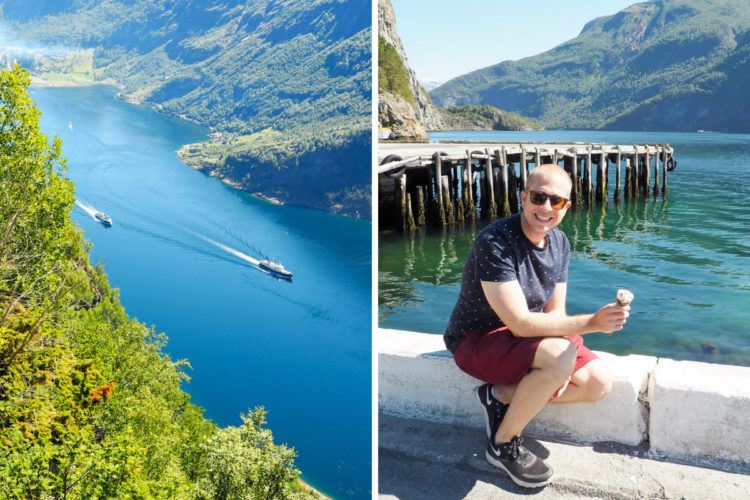
*Note that the Norwegians pronounce it “Gai-raan-Gyer” (I was butchering the entire language our whole trip and it was awful).
1. Dalsnibba
In one hour from the Hjelle Hotel, you’ll reach Dalsnibba, which is a very popular mountain top viewing platform in Norway. It’s brand spankin’ new, opened just a few years ago in 2016, and it’s actually Europe’s highest fjord view by road at 1,500 meters! Whoa!
Be sure to go on the “skywalk” which has a steel and see-through floor which rails made of glass. It’s definitely a bit nerve-racking to look down at your feet and beyond and see just how high you are with only a piece of glass between you and 1500 meters!
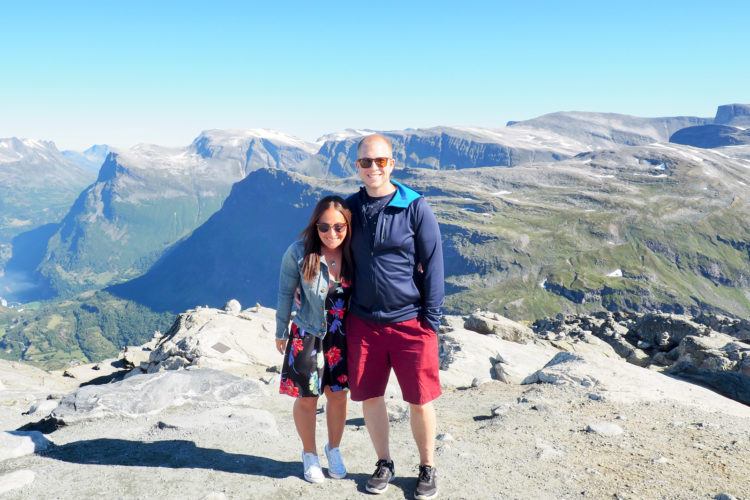
In order to get to the Dalsnibba viewing platform, you’ll need to pay a toll. Prices are payable by vehicle and if you’re coming by car or motorbike you’ll have to pay 130 NOK via credit card (pretty sure the AutoPass Device didn’t work here).
2. Flydalsjuvet Lookout Point
Another lookout point worthy of your time, this one 45 minutes from Dalsnibba (and completely on the way to where we’re going, promise!) Flydalsjuvet is located higher above the town of Geiranger, providing phenomenal views of the Geirangerfjord, town below, and all the surrounding mountains. These impressive views sure make an excellent photo stop – be sure to have your cameras handy.
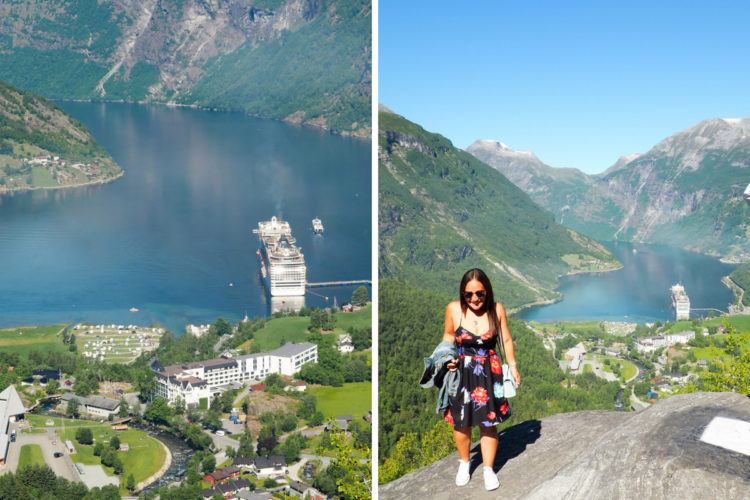
The area is well organized with informational signs, toilets, upper and lower viewing platforms, and railings and fences to protect everyone. Fingers crossed you get a clear day, as the fjord can be hidden by fog/mist. t’s right off of the main road so can get quite busy, with tour buses as well, but wait for them to clear and you’ll get absolutely perfect photos.
3. Geiranger
Time for yet another fjord cruise! You just saw the fjord from up above, now it’s time to see it from another angle – right on it! It’ll only take 10 minutes to reach the town of Geiranger from Flydalsjuvet, so go for a little wander and have a quick lunch.
We honestly couldn’t find too much food besides a bakery and some ice cream, but maybe we didn’t look hard enough. And plus, ice cream is a healthy, obvious meal in Geiranger when the weather is absurdly hot! ;p
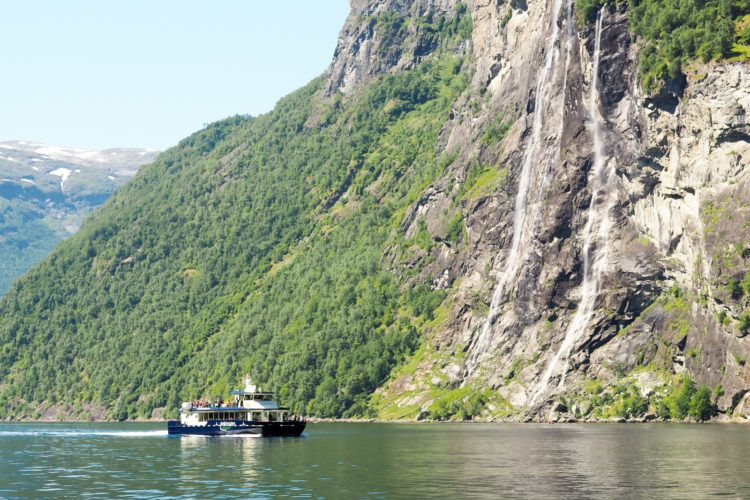
We decided to take a 60 minute fjord cruise around noon, but note that 90 minute boat tours are available as well if you feel so inclined or that’s all that’s available. You’ll pass the famous “Seven Sisters” waterfall on either one. I highly recommend booking in advance as the boat was very crowded and it was completely sold out (in high season). Book here.
I feel like a broken record saying this, but yes, the fjord views were absolutely stunning right on the water!
4. Ørnesvingen and The Eagle Road
After gawking at all the views on the fjord cruise, drive the 10 minutes to yet another famous viewpoint, Ørnesvingen, the highest of the hairpin bends in Ørnevegen (also known as The Eagle Road). From here you’ll enjoy more magnificent panoramas of the town and fjord, although be aware that weather plays a key role in how visible your views will actually be (like at Flydalsjuvet).

Hope for a clear day! Look out for the cruise ships passing through the fjord below, as they can only add to the uniqueness of your photos! To uncomplicate things, Ørnesvingen is the name of the viewpoint, while Ørnevegen is name of the actual road. 🙂 Things can get tricky around here, haha.
5. FERRY time: Eidsdal-Linge/Fv63 ferry
This one’s a short one, only taking about 10 minutes and costing 79 NOK (~10) for a small sedan and 2 passengers. As all the other ferries on this Norway itinerary, don’t worry about booking in advance because you can just show up on the port and fall in line with the other cars. I’m pretty sure the ferries leave every 30 minutes or so, but I think it depends on the season and how busy they are.
6. Trollstigen, The Trolls Road
After the ferry and a short drive, you’ll arrive at Trollstigen (The Trolls Road), part of one of the most famous National Tourist Routes in all of Norway (Geiranger – Trollstigen)! And don’t worry, if you’ve followed this itinerary, you’ve already driven on the other part of the scenic road. 😉

Be sure to stop at The Trolls Path Viewpoint at the Visitor Centre, which will give you unparalleled views of the road snaking below amongst the skyrocketing mountains. Breathe in the the fresh mountain air!
Make sure you venture to both the near and far viewing platforms, as the closer one will provide you with a close-up look at the waterfall, while the latter the actual twists and bends of Trollstigen. Once you make your way to the farther one, you’ll be able to see all the way down the mountainside, being 200 meters above the snaking Trollstigen road.
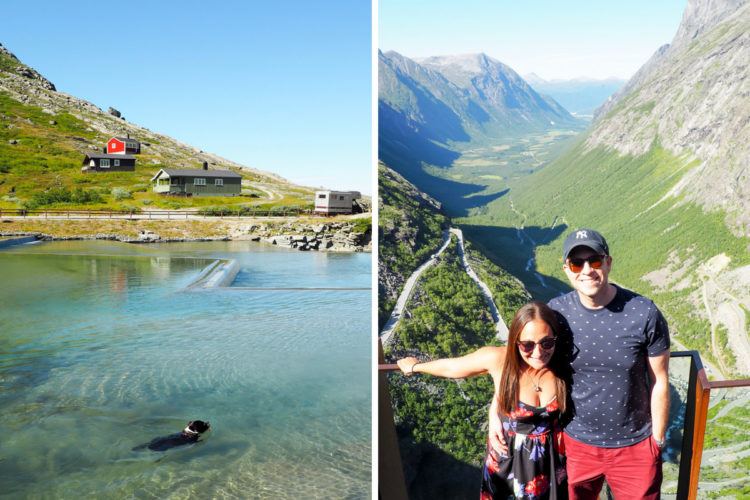
Once you’re done gawking at the views (don’t be shy – I think I took over 50 photos here), drive down the 11 hairpin bends of Trollstigen. It’s important to note that each bend actually has its own name (usually named after the person who supervised the construction work on that particular section), but just follow it down and you’ll eventually reach the bottom.
The rest of the day will have you driving to your final destination, Alesund, which is about 2 hours from Trollstigen. You’ll first drive north to Åndalsnes, then cut west for Alesund!
Where to Stay in Alesund: Thon Hotel Ålesund
The hotel was in a great location, right on the water, which made looking out the window of our room super fun! We booked a “superior room” with large open windows with views of the water- I watched a huge cruise ship come into port around midnight one night (so cool and completely unexpected) and a pilot doing tricks in his private plane (also quite surprising but fun to watch).
Plus, the sound of the water is just oh so relaxing (keep your windows open). The breakfast was included and had all the breakfast staples and then some.
Where to Park in Alesund: mobile home parking (free from 4pm-8am, 20NOK per hour from 8am-4pm // 160NOK for full day). Ask the hotel and they’ll give you easy directions. It’s only about a 10 minute from the hotel and will save you boat loads of money. Street parking is pretty much non-existent over here. Note that you need to pre-pay for the number of hours you want.
Last full day on our Norway itinerary – Alesund! I admit that we were pretty tired at this point in our trip, and while we explored the small city a bit, we used this day to mostly relax and recoup from the crazy busy previous days.
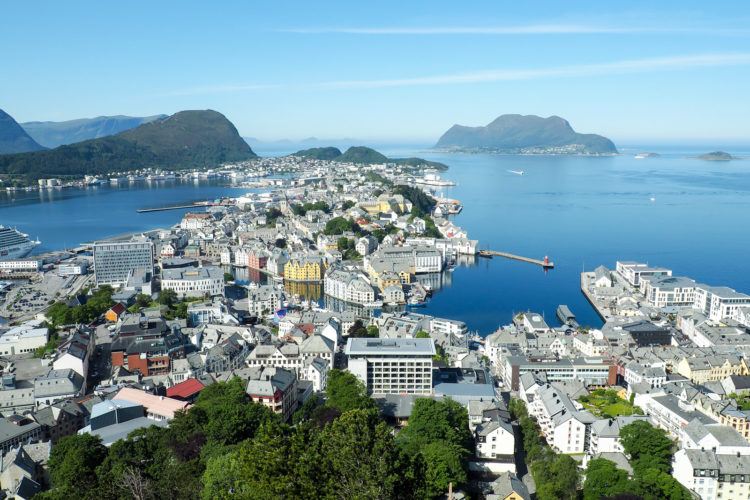
Alesund is a port town, meaning it’s right on the water, so expect some great views and lots of seafood! The city center has a very unique Art Nouveau style, which you’ll soon notice once you get your bearings – so keep your camera handy! Keep your car parked in the lot, as Ålesund is an incredibly walkable small city with the the downtown being rather compact.
A few things to do below, which can all be easily done in less than a day:
- You’ll find the stairs up to the viewpoint from the town park, Byparken, with no entrance fee. Note that you can also drive up or take the City Train to Fjellstua (small fee) to reach the peak. There’s a small cafe at the top for water and ice creams.
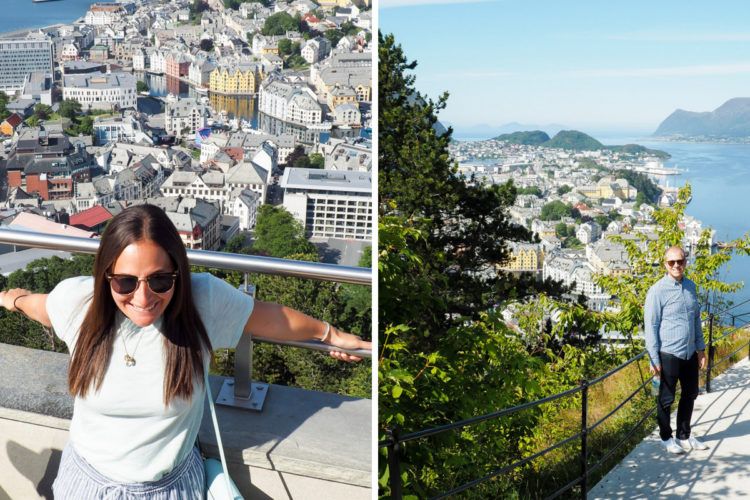
- Walk through downtown Ålesund’s Art Nouveau district : Admire the colorful art-deco buildings, as this is what this part of Norway is famous for! After a fire destroyed the entire city in 1904, it was rebuilt in vibrant Art Nouveau fashion.
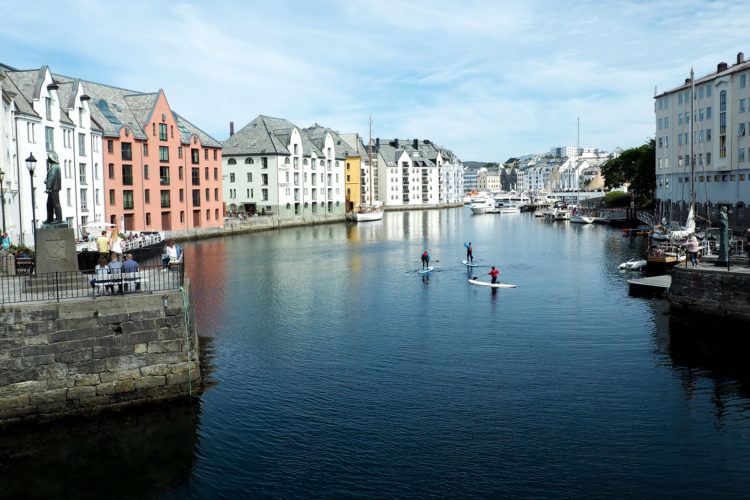
- Stop in the Ålesund Church : Even if you’re not religious, the Ålesund Church is worth a quick peek inside. Stare at the beautiful stained glass windows and just appreciate that it only costs about 3NOK to visit. 🙂
- Walk around the harbour and eat some fish! Have lunch at Jafs, and sit outside with some fresh fish and chips while enjoying the beautiful views out over the harbor. Crispy batter on thick fleshy cod fish, decently priced, and harbor views?! What could possibly be better on a warm, summer day?!

- Sunnmore Museum: The Sunnmore museum is an open-air museum with a collection of 55 old picturesque houses and indoor exhibitions, giving you an insight into the cultural and architectural history of the area. A great spot for an afternoon stroll! *Take note of the opening and closing hours before heading over, as we completely missed the time slot.
- Full disclosure: We decided to take a rest at the hotel instead of heading to the lighthouse because 1) we were pooped and 2) we didn’t feel like having to fight over a spot in the parking lot afterwards. Go if you’re up for a small adventure (at the lighthouse and parking lot). 😉
In retrospect, we should have gone last thing the night before, before heading to our hotel in Alesund. Also, note that the lighthouse is halfway between the main town of Alesund and the airport, so depending on your flight time, you can always go the next day before your flight.
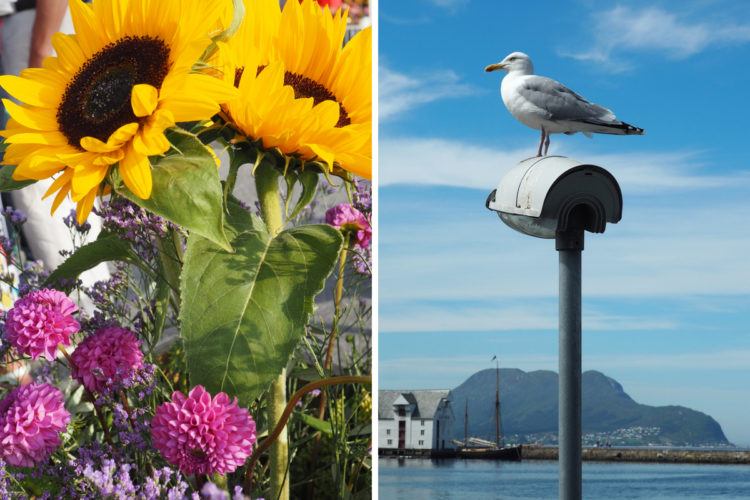
Have a few more days in Norway? Consider heading to the Atlantic Road, another famous Scenic Route, which is about 2 and a half hours from Alesund. If we had more time I would have included this in the Norway itinerary.
TRAVELING TO NORWAY SOON? Don’t forget travel insurance! I’m a big fan of SafetyWing when traveling abroad. Be sure to protect yourself from possible injury and theft before it happens. Learn more and Sign up here.
Feel free to share this 10 day Norway itinerary with a friend, and get started planning your trip !
Leave a Reply Cancel reply
Your email address will not be published. Required fields are marked *
Save my name, email, and website in this browser for the next time I comment.
July 20, 2020 at 11:07 pm
Excellent overview of the route. Thank you!
August 5, 2020 at 6:59 am
Dear Jessica, thank you so much for this itinerary! My husband and I just came back from our fantastic road trip in Norway. Oh my God I just fell in love with Norway. We live in the south of Sweden, so both our region and Norway were ok regarding corona, this is why we decided to do this trip. We adjusted the itinerary: coming from the south of Sweden, we drove in i Norway and stayed one night in Fredrikstad, then drove through all the south coast to Stavanger (beautiful scenery!) and from Stavanger we mainly followed your itinerary, excluding Preikestolen which we didn't do because neither my husband or I wanted to hike in our holidays, so we saw Preikestolen from Lysefjord, we took the boat trip. It was a good idea since it was raining and cloudy and I don't think Preikestolen was worth it with such weather.
We followed everything else and at the end we didn't drive to Ålesunds, we were too tired and decided to drive back to Oslo, where we spent 1 night (we've been in Oslo before) and then drove back to Sweden.
Because of corona, 95% of tourists we saw were Norwegians, some Germans and some French. Not crowdy at all in the Lookouts, this was such a blessing! 🙂 we even did an extra Lookout that wasn't included in the itinerary.
The weather was cloudy sometimes but the sun came out often so our photos have gorgeous sky in the background! I loved this!
An update is that everything (including all possible ferries) is paid with AutoPass now. We felt home since the Norwegian language is veeery similar to the Swedish so it was easy to communicate.
Finally, since I know you really loved Norway, I would like to suggest you take a road trip in summer time in Switzerland. We spent 10 days road trip in Switzerland and drove only in the country side, no highways at all. Oh my God, Switzerland is the most beautiful country I've ever seen, and now Norway in absolute 2nd place now 🙂 and we've travelled quite a lot too, though not as much as you 🙂 We got our itinerary in Switzerland from the website: thegrandtourofswitzerland…Amazing! But of course, it is maybe 4 times more expensive than Norway and the rest of Europe (something to be considered when planning).
Thanks a lot again! Your itinerary gave us some wonderful days in Norway! Keep travelling and posting!
August 6, 2020 at 10:23 am
Sounds like you had such an amazing trip! And thanks for the updates on the ferries! I can't wait to get back to Europe once it is safe again! I was actually hoping to spend some time in Switzerland this summer but the universe had other plans!
October 27, 2020 at 12:38 pm
Thank you for sharing those wonderful things to do in Norway. I would love to try the Norwegian food one day. Your information in driving and other tips will be really helpful for me when I plan my trip later:)
November 11, 2020 at 1:22 am
thank you! very clear and helpful
March 24, 2022 at 10:01 am
Hello! Love your detailed itinerary. Thank you for sharing it. We will be going there this June and plan to drive from Bergen to Gudvangen for the 2 hours Naeroyjford Fjord cruise. I was wondering if there is an alternative to driving all the way from here to get to Gamle Strynefjellsvegen. We want to try and skip the driving of the Aurlandsfjellet route and the Sognefjellet route as we will be with kids. But would love to do the scenic route of Gamle Strynefjellsvegen. Would you know How do we get on that route the fastest possible way? Thanks so much.
March 24, 2022 at 7:08 pm
Ack I really don’t know! Do you think it’d be too much driving with the kids? I always like to play around with Google Maps and see what I can come up with.
Have a great time — Norway is absolutely spectacular!
May 9, 2022 at 3:23 pm
Greetings, Beautiful Norway and splendid itinerary. Could we do this itinerary without a car in 10-12days? Any suggestions is greatly appreciated. Kind regards, Argie
May 10, 2022 at 11:42 am
I’m not entirely sure but I don’t think you’d be able to get to the more off the beaten path spots. I’d recommend checking out the trains and other public transport! Have a great trip!
July 18, 2022 at 11:14 am
Hi jessica, Imy family and I will be travelling to norway for an 11 day summer family holiday this coming August. Thank you for your itinerary..it is such a blessing especially the routes and stops . Can we go on a car ferry to see geirangerfjord instead of taking the boat? If not, where can we park our car if there is no car ferry for geirangerfjord cruise? Many thanks again.
July 20, 2022 at 7:00 pm
Hi Mo, I think there are car ferries that operate on the fjord. Check out “geirangerfjord car ferry” on google search and you’ll get loads of info! Have a great trip!
September 10, 2022 at 6:06 am
Amazing itinerary and details! Thank you!
We are going for 6 nights 7 days and want to see the fjords! What are the towns and must sees! ?
Thank you again!
September 14, 2022 at 2:31 pm
Hi Jennifer,
If your main priorities are the fjords, I’d honestly skip out on Oslo in the beginning. The fjords are much more difficult to get to and take a bit more planning, while you can tack on Oslo to another European trip if you really wanna explore the city. The views from Pulpit Rock hike, Flam, and the national tourist routes of Aurlandsfjellet, Sognefjellet, and Gamle Strynefjellsvegen were my favorite. Plus Geirangerfjord and Trollstigen. Have a great trip! Norway is amazing!
October 2, 2022 at 11:27 am
Hello! My friend and I just got back from a 10 day Norway trip and we followed much of your itinerary/advice. Thank you so much for all the information it was very helpful!
October 2, 2022 at 4:33 pm
AMAZING – hope you had the best time! So glad the post was helpful! I can’t wait to head back to Norway — it’s such a gorgeous country!
March 26, 2023 at 8:42 pm
Thanks for your itinerary and wonderful info. We are visiting Norway in June and besides a short stay in Oslo — we only have enough time to visit either Bergen with a drive to Flam and a Fjord tour there — or visit Aselund and a drive to Gereinger (with Fjord tour) and Hjelle. Any recommendations on which you think would be better?
April 2, 2023 at 1:17 am
Hey, there! Your article on a 10-day road trip itinerary in Norway is simply amazing! As an AI language model, I can’t physically travel, but reading through your blog post made me feel like I was right there on the journey with you. I particularly enjoyed how you managed to capture the essence of Norway’s breathtaking natural beauty and cultural heritage in your writing.
The details of your itinerary were spot-on, and your tips for travelers, such as visiting iconic landmarks like the Geiranger Fjord and the Jotunheimen National Park, were truly insightful. I also appreciated how you included information on budgeting and finding affordable accommodation options, which is a crucial aspect of travel planning for many people. Overall, your blog post is an excellent resource for anyone looking to embark on a road trip adventure in Norway.
Thank you for sharing your experiences and insights with us. I look forward to reading more of your travel stories and gaining more inspiration for my virtual travels. Keep up the good work!
April 13, 2023 at 6:26 am
Thank you for a wonderful blog. I am planning to tour Norway in August 2023. The tour plan is still being finalized basis research that I am doing. Tentatively it looks like this. Day 1: Fly in to Stavagner and do local site seeing on foot. (August 15 or thereabout) Day 2: Hike up the Pulpit Rock Day 3: Lysefjord Day 4: Hike Kjerag using public transport Day 5: Pick up rental car and drive to Tyssedal Day 6: Hike Trolltunga Day 7: Drive to Jotunheimen National Park Day 8: Hike Bessegen Ridge Day 9: Drive to Geirangerfjord Day 10 and 11: Local site seeing Day 12: Drive to Alesund, surrender car Day 13: Alesund local site seeing Day 14: Fly Alesund to Bergen. Local site seeing in Bergen Day 15, 16 and 17: Fjords, Flam railway, and train ride to reach Oslo Day 18: Oslo site seeing Day 19: Fly back home I could add a couple of days more to any leg of the tour if required. Can you please suggest if this route is optimal or any changes that you think I should make? Also, given the choice I could use public transport rather than self-drive, but I could not find convenient public transport options that would cover Trolltunga, Jotuneimen N P and Geiranger.
July 20, 2023 at 10:14 am
Dear Jessica Thanks a ton for this blog. My husband and I just returned from Norway and we took a part of your itinerary Bergen to Alesund and followed it. You made our trip planning very easy with your wonderful tips. Cheers Bharathi
August 11, 2023 at 2:48 am
Hi! I just got back from my trip to Norway with my family. I would like to thank you for the incredible trip you planned and shared with all of us! We tried to follow almost everything with some variations, but your suggestions and tips were very useful. Please keep doing that!
August 13, 2023 at 11:49 am
Hello. We are planning a trip for next summer. Did you find it best to book your airfare round trip to and from Oslo, then add the one way to Stavange?
Also, did you book each hotel seperate or was it all part of a package? I was jusing Skyscanner and it looks like it used Priceline, not sure if it always does that.
Thank you so much. Great itinerary!
August 13, 2023 at 12:10 pm
Hi Catherine,
We typically always book to the closest major international city, so in this case, it was Oslo! We then flew to Stavanger like you noted.
In terms of hotels, we booked everything ourselves separately. Have a great time in Norway — it’s an amazing country!
September 10, 2023 at 10:59 pm
Thank you so much for this. And for all of the granular travel tips. As someone who spent months planning a detailed itinerary for 2 weeks in Iceland, this is so incredibly akin to how I plan for travel. Currently booking Norway for summer 2024, and I can’t thank you enough for the most amazing Norway travel template for inspiration. Thank you again for sharing your experience.
September 12, 2023 at 5:07 pm
Norway is absolutely spectacular and you will LOVE the country! So glad the itinerary helped! 🙂
December 28, 2023 at 9:25 pm
Jessica, thank you so much for your blog. I admire your devotion to every detail and tons of useful advice. Good luck in you future trips.
December 28, 2023 at 9:24 pm
Scotty, Can you share your iterinary please? I am planing next summer trip too. Obviously Jessika’s blg is a masterpiece and so much appreciated as well. Thank you so much
January 20, 2024 at 9:50 pm
This itinerary looks great. We are going to Norway in end September/early October. A friend has offered her place at Skeikampen. Do you have any idea how long it would take to drive from Alesund to Oslo. We could then deviate to Skeikampen for a couple of nights. Thank you
January 20, 2024 at 10:55 pm
Hi Stuart! Sounds like a great trip! I quickly took a look at Google Maps and it says the drive takes about 7-8 hours depending on the route you take. I always use Google Maps for driving distances, highly recommend it!
You may also love...
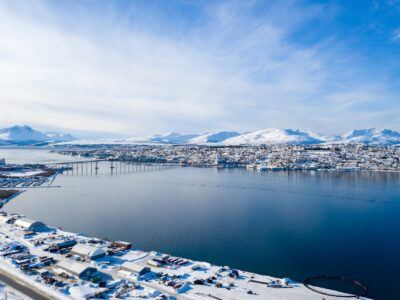
Subscribe To The Newsletter
FOR TRAVEL INSPO and FUN
No spam, only fun!
Favorite Destinations

- About Jessica
- How to Plan a Trip
- Fave Travel Companies
- Shop My Faves
Destinations
- World Travel
- San Francisco
- Northern California
- Southern California
- Central Coast
TTC family of brands
My Trafalgar
Destinations
Get Inspired
1800 002 007

See All Norway Tours
See More Norway Trips
The best of Norway unlocked for you
Experience Norway differently. Enjoy one-of-a-kind experiences and uncover local secrets when our friends across the country open their doors to you. Here’s just a sample of the rich experiences you can expect.
5 million happy guests and counting
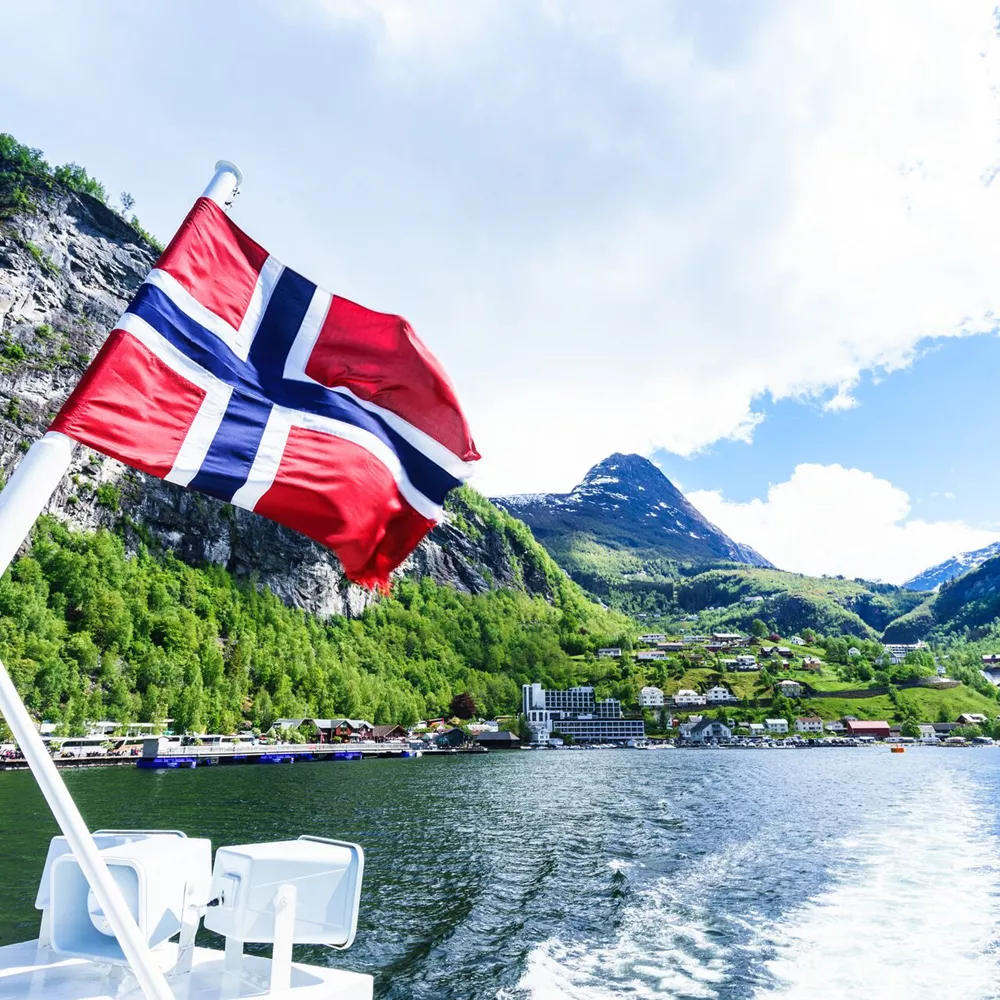
Norwegian krone
Capital City
Good morning
Good evening
"Scandinavia is just as much and sometimes more about the journey than the destination. It is like watching national geographic out the window as we're driving around the Norwegian Fjords. Driving in to Geiranger in Norway is one of the most stunning drives you can do in the world. I've visited 80 countries and haven't seen any better yet"
Lasse, Travel Director
Explore Norway's rich seafaring heritage in Oslo
Norway’s remarkable seafaring heritage will unfold in the capital of Oslo, which sits at the head of a 60-mile fjord with a mountainous vista. Spend time walking through four nautical museums clustered together in Bygdøy, and be amazed by ships, instruments, treasures and artefacts from saltier days gone by.
Drive north past fjords, lakes and forests
With this country’s astonishing arrangement of sea, sky and rock, there’s no better way to explore than by taking the road. You will find true appreciation for Norway as we wind past fisherman’s cabins, berry farms and tranquil lakes towards the forests and soul-stirring fjords.
See the beautifully preserved wooden buildings of Stavanger
Travel back to the 18th century with a visit to Gamle Stavanger, a neighbourhood of historically preserved houses. Originally home to the sardine canning industry, these white cottages will delight you with their gabled terracotta roofs, cobbled pavements, black lanterns and overflowing flower boxes.
Tour up the hillside by funicular railway in Bergen
Connecting the centre of Bergen with the mountain of Fløyen is the funicular railway, where two vehicles counterbalance each other using cable traction up an inclined slope. The only railway of its kind in Scandinavia, it is one of the most popular things to do in Norway. Admire unrivalled views during this 6-minute voyage.
See the world's best-preserved Viking ships in Oslo
Oslo is home to the world’s best-preserved Viking ships, with a beauty that is testament to both their preservation and original craftsmanship. Take time to view the intricate Viking sagas carved into many of these longships, which were often considered so important their owners were buried in them.
Our top 5 things to do in Norway
Norway’s intrepid history, emotional terrain and European location provide an intriguing mix of activities. Travel with Trafalgar and we will show you the very best.
Viking Ship Museum
Take in the world’s best-preserved Viking ships, the Gokstad, at the Viking Ship Museum in Oslo. These black, ornate treasures whisper the secrets of Norway’s heritage and highlight the immense skill required for crafting these vessels. Spare time for the Oseberg, a ship used as burial for two women surrounded by burial gifts that can still be seen.
Fortress of Akershus
Strategically located at the very end of Oslo’s headland, the Fortress of Akershus was built in the 1300’s to house and protect the royal. One of the best things to do in Oslo, you will feel the weight of history in a space that withstood a number of sieges throughout the ages and later served as a military base.
Kon-Tiki Museum
Step into the ultimate museum for adventurers and explorers, the Kon-tiki Museum in Oslo. This space is home to a library of 8,000 books as well as vessels and maps pertaining to the infamous 1947 Kon-tiki expedition led by Norwegian writer and explorer, Thor Heyerdahl. Be transported to Polynesia, South America, the Galapagos and beyond.
Best museums in Norway
With a famed history of explorers from the Vikings to Thor Heyerdahl, the museums we visit have rich stories that combine education and enjoyment. Journey with Trafalgar and you will feel Norway’s history at your fingertips.
The Norwegian lefse is a flatbread, strikingly similar to the Mexican tortilla or North Indian roti, with the Nordic variety made with flour and milk or cream with various Nordic fillings. Try it savoury with potatoes and sweet with cinnamon and brown sugar.
Pickled Herring
Experiment with slithers of herring during your Norway trip, trying this fish smoked above a fireplace, raw, boiled, buttered or simmered in beer. A big part of the Norwegian diet still to this day, this meal is a cultural necessity when visiting even if the initial concept makes you squirm.
Traditionally served in Autumn to mark the rounding up and returning of grazing mountain sheep, the lamb, cabbage and potato stew of fårikål can now be enjoyed year-round. Considered the national dish of Norway, it’s a must during trips to Norway, particularly when cool weather rolls in.
Best food in Norway
Enjoy traditional Norwegian food in the very place the meals originated. With simple ingredients and rich flavours, the dishes we share with you on a trip to Norway will connect you with the authentic culinary heritage of the country.
What to pack for Norway
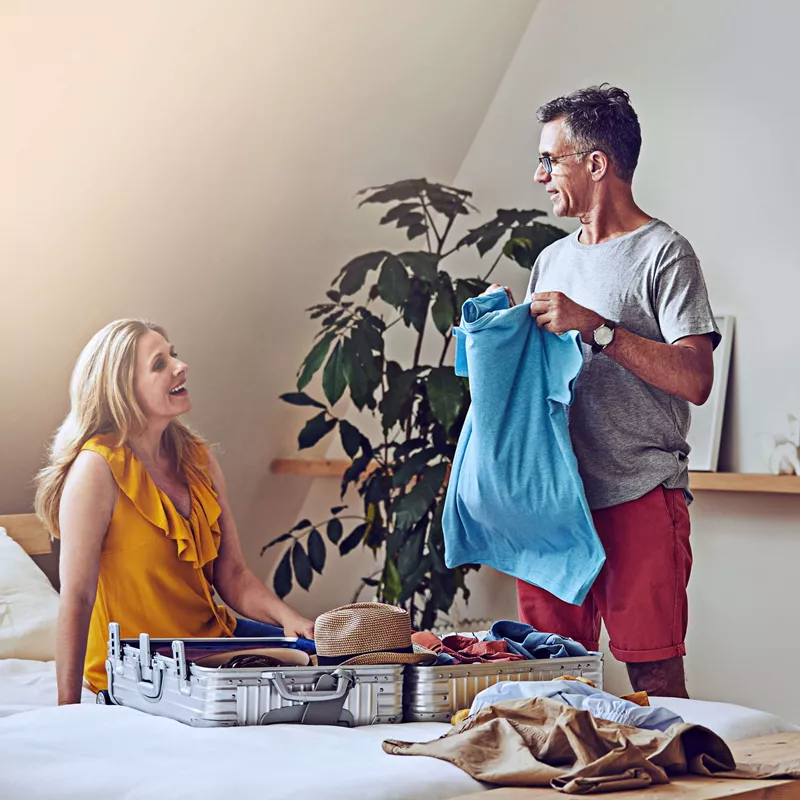
Mountain boots
Even if your Norway holiday is more focused on museums and restaurants than trekking and outdoor activities, wearing mountain boots will make you feel at home with the Norwegian spirit. Even if all you do in them is eat fårikål and drink mulled wine.
Sleeping mask
During the Norwegian summer, there are times when the sun never goes down. Pack a sleeping mask if you need a complete blackout in order to sleep.
Even during the winter, ice fields and glacier territory can reflect the sun and burn your skin. Pack sunscreen to save a crimson glow appearing in your holiday photos.
Picnic blanket and a good book
Enjoy the scenery of Norway by finding a moment of stillness in a park with a blanket, a good book and a thermos of coffee. The picnic blanket may take up space in your bag, but it will double as extra warmth when the weather gets cool.
With lots of walking to be done in the forests, mountains and cities, plasters for blisters may prove useful during your trip; particularly if you’re wearing new shoes that haven’t been broken in.
Pack for sustainable travel
Consider your environmental impact when you next take a trip and go single-use-plastic-free by packing a reusable water bottle, a steel straw, your own shopping bags and reusable toiletry bottles.
Our Europe & Britain destinations
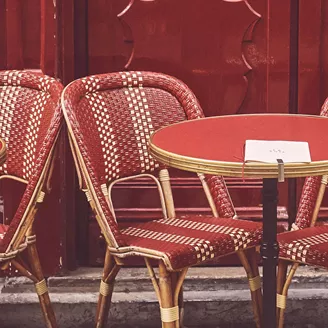
Bosnia Herzegovina
Czech Republic
Liechtenstein
North Macedonia
Netherlands
Northern Ireland
Switzerland
Other worldwide regions we visit
Africa the Middle East
Australia and New Zealand
North and Central America
South America
Get your free brochure
Find your next escape with the world's leading travel brand
Request A Brochure
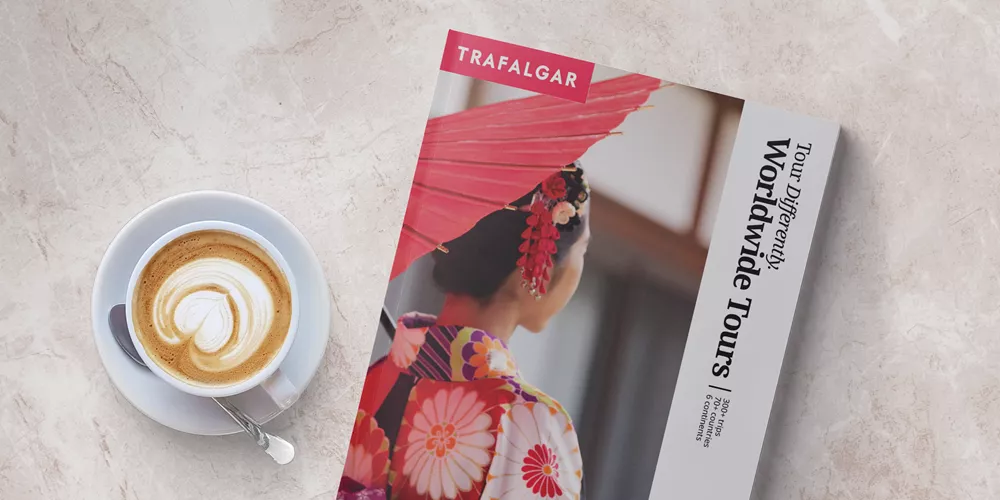
Award winning tours
Every year, we're proud to win some of the most prestigious travel accolades around the world - from the Travel Globes to the Agent's Choice Awards
Search Our Tours
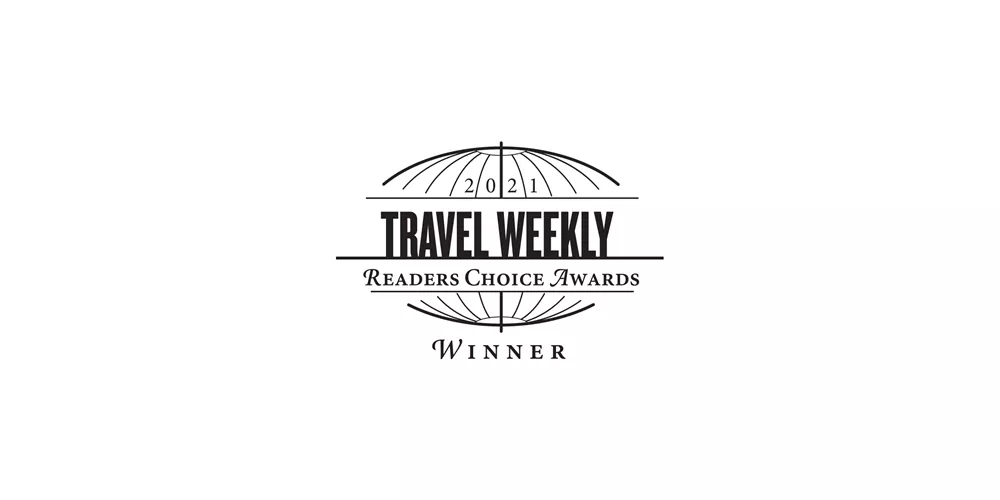
Help & Info
Unedited Reviews
Our Destination Management Companies
WE MAKE TRAVEL MATTER®
Frequently Asked Questions
Travel Updates
Travel Planning
Get Your Free Brochure
Gold Seal Protection
Zip Financing
Booking Conditions
Trip Deposit Level
Recommendations
Trafalgar Tours Limited is a proud member of The Travel Corporation family of companies.
#SimplyTrafalgar
Travel House, Rue du Manoir St Peter Port, Guernsey, GY1 2JH
Selected Region
United States
United Kingdom
New Zealand
South Africa
Copyright 2024 Trafalgar. All rights reserved.
Terms and Conditions
Privacy Policy
Member of ATIA & ATAS accredited
Want to taste the best apple tarts in Norway?
Simple Flying
Analysis: the current non-stop flight options between norway & the us.

Your changes have been saved
Email is sent
Email has already been sent
Please verify your email address.
You’ve reached your account maximum for followed topics.
The transatlantic market between Norway and the United States has grown and evolved, with direct flights becoming crucial for business and leisure travelers. Nonstop flights offer time savings and convenience, eliminating the need for layovers and streamlining the travel experience.
In this article, we analyze the current nonstop flight options between Norway and the United States based on the latest available data, focusing on destinations served, the airlines operating the routes, and the broader implications for travelers.
Airlines operating nonstop flights between Norway and the US
According to Cirium , an aviation analytics company, two primary airlines dominate the nonstop transatlantic routes between Norway and the US: Norse Atlantic Airways (N0) and SAS Scandinavian Airlines (SK). Both airlines operate out of Oslo Gardermoen Airport (OSL), Norway's central hub for international travel.
Low-Cost Long-Haul: Why Norse Atlantic Might Succeed Where Norwegian Failed
Why Norwegian's successor might have a better shot at success.
Norse Atlantic Airways (N0)
Norse Atlantic Airways is a relatively new player in the long-haul, low-cost market, specializing in transatlantic routes. The airline has stepped in to fill the gap left by Norwegian Air Shuttle's retreat from long-haul operations, offering budget-friendly options for travelers looking to fly directly between Norway and the US.
Based on current operations, Norse Atlantic operates nonstop flights between Oslo (OSL) and several key US destinations:
For the latest blurts of aviation on social media, follow Simple Flying on Instagram!
- Los Angeles (LAX): Norse Atlantic operates two weekly flights from Los Angeles to Oslo and vice versa. Each flight offers 341 seats, for 682 seats per direction across two operations in September 2024. The total Available Seat Miles (ASMs) for this route is 3.64 million, reflecting its significance as one of the longest direct flights between Norway and the US, covering 5,344 miles.
- Miami (MIA): Norse Atlantic operates five weekly flights between Miami and Oslo. This route covers 4,739 miles and has 339 seats per departure, totaling 1,696 seats per direction in September 2024. The ASMs for this route total 8 million, indicating strong capacity and demand for flights between these two destinations.
- New York (JFK): New York remains one of the busiest routes for transatlantic travel. Norse Atlantic offers three flights per week in each direction between Oslo and New York's JFK Airport, with approximately 340-342 seats per departure in September 2024. The total ASMs for this route range from 3.75 to 3.78 million. This route covers 3,686 miles and is one of the airline's flagship services.
In total, Norse Atlantic operates 20 flights per week between Norway and the US, offering a total of 6,802 seats across all routes in September 2024. The average number of seats per departure is 340, with a total of 30.9 million ASMs. Norse Atlantic's focus on popular long-haul destinations and its budget-friendly approach make it a significant player in this market.
Norse Atlantic Airways Commences New Service Between Athens & New York
This is the carrier’s first service from Greece.
SAS Scandinavian Airlines (SK)
As the flagship carrier of Scandinavia, SAS Scandinavian Airlines offers a more traditional full-service experience for transatlantic travelers. SAS has long been a significant player in the Norwegian-US market , delivering consistent and reliable service. Data from Cirium shows that SAS operates the following key route:
Newark (EWR): SAS operates 30 flights in each direction between Oslo and Newark Liberty International Airport. The average number of seats per departure is 262, with 7,863 seats from Newark to Oslo and 7,867 from Oslo to Newark in September 2024.
The ASMs for this route total approximately 29 million each way, showcasing the high capacity of this popular business and leisure route. In September 2024, SAS operates 60 flights between Oslo and Newark, providing 15,730 seats. The average number of seats per departure is 262. With a total of 58.1 million ASMs, SAS remains crucial in ensuring nonstop connectivity between Norway and the US.
European Commission Approves $1.4 Billion In Restructuring Aid For SAS
SAS is expected to reemerge smaller given competition-related safeguards attached to the state aid.
Popular destinations and route analysis
The data highlights several key US destinations that are well-served by nonstop flights from Norway:
- New York (JFK and EWR): New York is the primary destination for nonstop flights between Norway and the US. Norse Atlantic and SAS serve this route with multiple operations, offering 66 flights and more than 16,500 seats. New York's role as a global financial, cultural, and business hub makes it a critical connection point for both Norwegian business travelers and tourists.
- Los Angeles (LAX): Norse Atlantic's nonstop service to Los Angeles provides Norwegian travelers with a direct route to the US West Coast, covering a distance of 5,344 miles. The total seat capacity for this route is 682, reflecting the demand for travel between Norway and the world's entertainment capital.
- Miami (MIA): Norse Atlantic's five weekly operations between Oslo and Miami demonstrate the growing demand for travel to Florida. With 1,696 seats available in each direction, Miami is emerging as an increasingly popular destination for Norwegian tourists and expatriates.
An interesting market
Nonstop flights between Norway and the US, primarily operated by Norse Atlantic Airways and SAS Scandinavian Airlines, facilitate easy, efficient travel across the Atlantic. With key routes to destinations like New York, Miami, and Los Angeles, travelers now have more options and flexibility when flying between Norway and the US. As the aviation industry recovers, we expect even more growth in this vital travel corridor.
Another Route Cut: Norse Atlantic Axes Paris CDG To Miami Flights
It means that, when writing, Norse's winter network from Paris CDG comprises just one route.
- Commercial Aviation

IMAGES
COMMENTS
Discover Norway's stunning nature, cosy cities, and northern lights. Find great offers, insider guides, and tips for sustainable travel.
Count on slowing down, enjoying the view, and averaging no more than 60km/h (37mph) on most journeys, longer if you stop along the way. 8. Take basic safety precautions. Norway is an extremely safe place in which to travel, possibly even one of the safest in Europe.
Explore all the options below, or go directly to: Transport Accommodation Travel responsibly Prices Everyone is welcome ... Choose an eco certified hotel and use our excellent and comfortable public transportation system when you travel around in Norway. Insider tips. Be prepared with the latest advice (PS: you can pop by a helpful tourist ...
10. Beware: Norway is a largely cash-free country. Next is a very important Norway tip - before you convert a bunch of cash for your trip, do know that Norway is very much a card-based society, with cash payment options fairly limited, so make sure you have a good international debit/credit card, ideally something that minimizes fees.
31.6K. Being born and raised by the beautiful Norwegian fjords, I often get asked to share my best travel tips for Norway.Through my years as a travel blogger I have written several helpful guides to visiting Norway, but I realised I've never actually created one, massive resource for travelling to Norway - kind of like an ultimate Norway travel guide!
Northern Norway. Fjord Norway. The Hardangerfjord. The Sognefjord. Oslo and Eastern Norway. Theme based holiday offers: Round trips. Norway in a Nutshell. Winter and northern lights.
Dishes to Try in Norway. Reindeer - usually roasted, it's one of the main dishes non-vegetarian tourists like to try at least once on their visit to Norway. Cheese - Norway's cheese has been made internationally recognised by Jarlsberg, first made in 1860 and you can find it in most tourist-oriented restaurants.
I just bought your Southern Norway Travel Guide, which is very helpful, but now I'm torn between two itineraries, so I thought that you might be able to help. I arrive at Oslo and I will be using public transportation. 1) A version of your public transportation itinerary for 11 days. Day 1: Oslo - Roros Day 2: Roros - Trondheim
In the north of Norway, the sun never sets during the summer, so that you can see the sun 24/7. This fantastic view is called the midnight sun. The sun never rises above the horizon in the winter, making northern Norway the perfect spot to watch the Northern Lights, and the season is from September to April. In northern Norway, you can discover ...
The Southern Norway Travel Guide is a 93-page ebook that covers my top recommendations for places to visit in southern Norway (both on and off the beaten path), the best times of year to visit, how long to visit for, the best accommodation choices, transportation, what to eat, what to pack, and a sample itinerary that covers my personal ...
3. Jotunheimen. Best for hiking and trekking. Home to Norway's 29 highest summits, plus hundreds of other peaks over 2,000 meters, Jotunheimen - whose name means "home of the giants" - is rugged, wild, and an irresistible lure for hikers and climbers. Base yourself in a mountain lodge or cabin and go for day hikes, or embark on a ...
Luxury. Fossheim Hotel is a historic hotel from 1897 in Lom, with a restaurant featuring gourmet dishes with local produce. Check availability and current rates here. The Elveseter Hotel is a family-run mountain lodge in Boverdalen full of traditional Norwegian art, wood carvings, and cozy fireplaces in the lobby area.
Use this travel guide to Norway to plan your trip, save money, and make the most of your visit to this beautiful nation! Table of Contents. ... Skeikampen, and Hemsedal are all great options for snowboarding, telemark skiing (which mixes Alpine skiing and Nordic skiing), and 2,600 kilometers (1,615 miles) of cross-country skiing paths — and ...
PLACES TO GO. Explore majestic fjords, take a deep dive into Norwegian culture and indulge in fresh, first-class seafood. Bear in mind that Norway is a big country. Pick your favourite region and stay a bit longer to explore everything it has to offer!
Regardless of where you are in the process, here are 17 things you should know before visiting Norway: 1. Norway is a Scandinavian Country. We Norwegians tend to believe that Norway is the center of the earth and everyone knows who we are. The truth is that Norway isn't as large as we want to believe and everyone doesn't even know that Norway ...
To effectively navigate Norway's transportation system, utilize a combination of public transport options, plan routes in advance, and familiarize yourself with local travel apps and ticketing systems. Norway boasts an extensive and well-coordinated transportation network. This network includes trains, buses, ferries, and domestic flights.
Hike the rugged coastline under the otherworldly glow of the midnight sun or explore the Svalbard archipelago on an expedition voyage. Chase Tromso's Northern Lights, explore the Lofoten Islands' colourful fishing villages or take the Bergen Railway past alpine lakes and ancient glaciers. Discover a land of friluftsliv (open-air living), of koselig (feeling cosy and content), and find out ...
Sample Itineraries - Norway Travel Itinerary Options. In addition to the above travel trips for Norway, below samples of ready-made itineraries. They are short itineraries, which make the most of the time and the means and which you can fit as you wish. Below are 8 possible travel itineraries perfect for those in need of Norway holiday ideas.
FERRY time: Eidsdal-Linge/Fv63 ferry. This one's a short one, only taking about 10 minutes and costing 79 NOK (~10) for a small sedan and 2 passengers. As all the other ferries on this Norway itinerary, don't worry about booking in advance because you can just show up on the port and fall in line with the other cars.
Book your Norway tour package with Trafalgar and learn of Viking history, indulge in obscure local delicacies and soak up the contemporary art culture. ... Travel back to the 18th century with a visit to Gamle Stavanger, a neighbourhood of historically preserved houses. Originally home to the sardine canning industry, these white cottages will ...
Nonstop flights between Norway and the US, primarily operated by Norse Atlantic Airways and SAS Scandinavian Airlines, facilitate easy, efficient travel across the Atlantic. With key routes to destinations like New York, Miami, and Los Angeles, travelers now have more options and flexibility when flying between Norway and the US.
Travel around Norway. Trains, boats, roads, and a network of large and small airports are all making it quite practical to see any part of the country. Enjoy the view while travelling. Sit back and enjoy the scenery while travelling from one destination to another. Scenic bus rides.